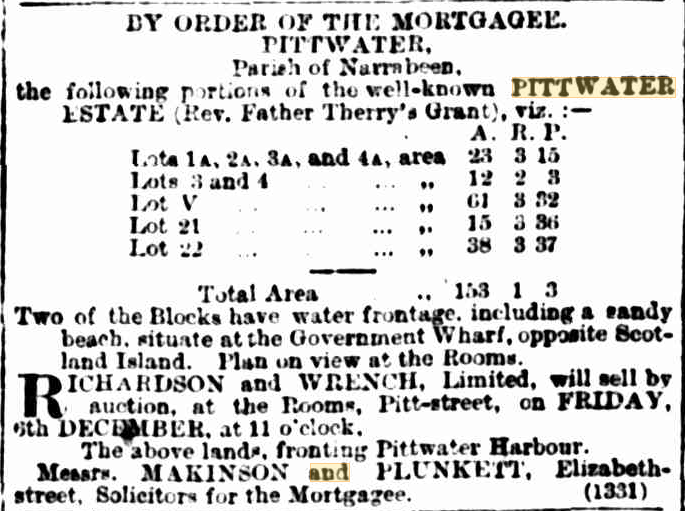August 25 - 31, 2019: Issue 418
Pittwater Roads II: Where The Streets Have Your Name - Bilgola

Above and Below - Early Bilgola Beach Panoramas courtesy Dorothy Oags
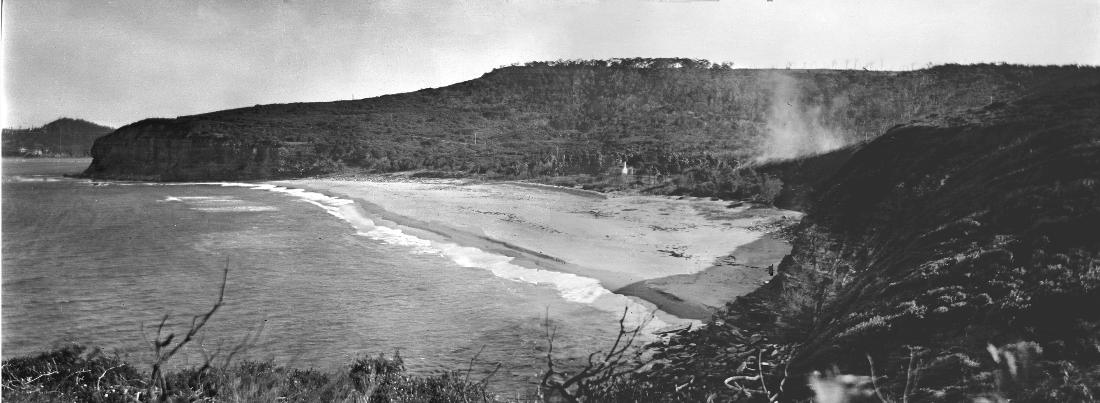
Bilgola Beach
Lots 16 to 25.— 10 Small FARMS in CABBAGE-TREE VALE, on BILGOLA BEACH. Areas from 5 ACRES 2 ROODS 36 PERCHES to 21 ACRES 1 ROOD. Advertising (1880, April 24). Freeman's Journal (Sydney, NSW : 1850 - 1932), p. 11. Retrieved from http://nla.gov.au/nla.news-article133487003
Around 18 acres of this land was purchased by W B Dalley from Michael Moran and Marion and John Stevenson by the Spring of 1886. Dalley acquired the title to lots 22 and 23 of the southern division of the Reverend John Joseph Therry’s Pittwater estate for a total of £585-5s-6d. The transfers of ownership officially took place in June and October 1886, although it is likely that the agreements had been reached earlier and that Mr. Dalley had use of the land well before the formal exchanges were made.
The track to this cottage is described by Robert Richardson (1850–1901) an Australian journalist, poet and writer for children (possibly the first Australian-born children's writer) in this 1898 recollection:
WILLIAM BEDE DALLEY
A MEMORY.
(BY ROBERT RICHARDSON.)
The first time I met William Bede Dalley was at a dinner party at the house of a relative. That was in the late sixties. The guests were nearly all Sydney notabilities of the day, men conspicuous in the political and public life of the colony. I was a boy, just entering the University. How it happened that I found myself in such august company matters not here. The party consisted of men only, a form of dinner party more usual at that time than now. Among the guests were Sir James (then Mr.) Martin, Mr. William Forster, Mr. Bowie Wilson, Mr. Augustus Morris, Mr. De Salts, Mr. W. J. Stephens, a judge of the Supreme Court, two squatter kings in the golden age of Australian sheep-farming, when squatters were little short of kings in their own country, and Mr. Dalley. I sat, I remember, to the right of Mr. Martin, and opposite me were Mr. Stephens and Mr. Dalley...
During my stay in Sydney in 1886 I renewed my acquaintance with Dalley, first begun nearly 20 years previously. At that time he was in his home in Manly, where I was also staying. I met him one afternoon on the way back from town. Of course, I recognised him. He sat amid the little steamboat crowd, carefully dressed as of old, kid-gloved, camellia-button-holed; the mellow aftermath of his opulent youth. I knew that he had not been in strong health for some time; but outwardly the envious years had dealt gently enough with him, and he did not show many signs of falling.
I re-introduced myself. It Is hardly probable that he recalled me by appearance, but for a moment he made me pleasantly aware that he had not forgotten my existence. We chatted about old days and people, and on parting he arranged for an early meeting.
After that I passed several very enjoyable days with Dalley at his house on the hill. Sometimes we walked up and down on the little battlemented terrace of his "castle," in the flooding spring sunshine, and talked — at least he talked; there was no particular reason why I should. I remember how the generous September sunshine beat down on that glittering white little esplanade, and how Dalley paced bare-headed in the dazzling light, while I, effeminated in this regard by long residence under lukewarm skies, was fain to put up an umbrella.
It was nearly always of the past he talked, and his talk was exceedingly animated and various. It touched seldom on his own career, but was full of anecdotes of his contemporaries, and of his colleagues in political life. Some of his stories were so good that I have sometimes wished I could reproduce them, but they connected themselves with people too recently dead, and were of rather too personal and characteristic a sort to bear the alto relievo of newspaper print. Doubtless many others before me had been made the repositories of the same reminiscences, and doubtless these have practised a like reticence.
Dalley was a dramatic talker in private. In describing a scene of character, or in telling an anecdote, his flexuous face, that suggested now a high comedian, and now Charles Kean as Cardinal Wolsey, lit up and kindled, and the tones of his voice had a rich and vibrating timbre that was at once musical and impressive. In many ways, It may be admitted, Dalley was something of an actor. He was so congenitally and by racial heredity. Few Englishmen are actors born, still fewer Scotsmen, but an Irishman is begotten an actor almost as easily as a Gaul or a Neapolitan. There was, to be sure, a noticeable degree of expressment in Dalley's manner. He had probably cultivated somewhat studiously intonation, accent, inflection, light and shade, cadence, and climax, with the result, that there was undoubtedly a distinction, one might say bel air, in both his public and private speech. ...
Dalley's health at this time was, as I have indicated, fickle and wavering. More than once he spoke to me of the sleeplessness that beset him. "I wake forty times a night," he once said.
Of all the bodily ills that beleaguer mankind, none are comparable with insomnia for hopelessness, and It needs a courageous and cheerful spirit indeed to long withstand its siege. But this and I several other symptoms of physical failure did not materially depress Dalley's spirit, nor in any I degree dull his intellect. Often, when lie was evidently far from well, his manner was as sunny and unrestrained, his humor as buoyant and bright, and his thoughtfulness for the comfort and pleasure of others as unremitting as though he were still in the heydey of his manhood and strength.
I never saw these qualities of Dalley — his naturally radiant and optimistic temper, and his quick and kindly interest in the affairs of his friends — more happily illustrated than on the last day I spent in his company. He had recently purchased a piece of land along the coast, between Manly and Rock Lily. Here he was building a small cottage, with the idea of using it as a change residence, and as a venue for fishing expeditious. He arranged to take me out to his little retreat on the Pacific Riviera, as he was fond of doing with his friends.
We were a small party, and started early on our excursion. It was a beautiful September morning, one of the perfect, idyllic days of which you can always count upon getting half-a-dozen at least in our one charming, but capricious, spring month. The drive along the Narrabeen-road was an unalloyed pleasure. At that time the flower raiders had only recently begun their organised descent on the flora of the neighborhood, and blossoming bushland hedged both sides of the road in the richest luxuriance, so that all the way we seemed passing along an unbroken avenue of glowing color and pageantry of bursting blossom. Ever and again we caught enchanting blue glimpses of the ocean, such as one gets along this picturesque road, and every time we did so came to our ears the clean, fragrant tang of the sea-wrack, the cool plunge and rhythmic retreat of the "league-long" Pacific rollers, and on our cheeks the softly-stinging kiss of the Pacific breeze. The air was blandly warm, and aromatic of resinous spices from wattle, clematia, and boronia, and earth, sky, and sea brimmed over with golden light, as a wine-cup over-runs its beaded lip.
Dalley was in happy spirits, and talked straight on almost without pause. Everybody along the road knew him. Cottages dotted the cleared spaces in the bush, showing clean and bright with newly-sawn-pine, and at their doors stood women and children to watch us pass. All greeted our host, who replied with a cheery word of recognition and inquiry.
A drive of some two hours brought us to our destination. The drivers turned suddenly aside from the high road, and entered the bush to the right, following a sandy carriage-track. In five minutes more the trees opened out in front of us, and we debouched upon a tiny bay— a quarter-circle of gleaming white beach, girdling a crescent of flashing blue. water. How the sea did flash, and sparkle, and dimple under the all-persuasive sunshine as we came suddenly upon it! What Tyrrhenian or Thessalian waters ever matched with that innumerable smile of our Pacific seaboard?
How that little angle of sapphire sea and white beach looks now I know not, nor what sort of transformation or "Improvement" it may have undergone, for I have never visited the spot since.
For myself, I could wish with Kendall that
"The searching feet of change
Have never found it out."
For to me that day it seemed a veritable translation from an Idyllic Arcady, some southern home of faery, an Austral retreat of faun and hamadryad. So aloof and sunny-still it was, so sheltered and umbrageous and fragrantly warm, a very island of Avilion,
Where falls nor hail, nor rain, nor any snow,
Nor ever wind blows loudly, but it lies
Deep "gullied," happy, fair with "wattle" lawns,
And bowery hollows crowned with summer.
Behind and above the beach was a slope of grassy ground, set somewhat thickly with trees, conspicuous among which were several clumps of beautiful tree-ferns, crowned and canopied with their fan-like fronds, and looking like living temples of the woodland deities. But over and always the eye returned to that wonderful sea, and the spell of its dazzling smile, the laughter of a white-bosomed sea-nymph in the abandon of careless glee. And mingled with the sooth siren-song of the making and ebbing wave, falling on the beach as lightly as the foot of sleep, was the murmur of the level-blowing breeze in the palms and gum woods, a whispering sweet-lipped susurrus, only less recurrent and rhythmic than the dithyrambic wave-chime.
Surely an Austral Tempe like this will some day breathe upon a second Theocritus, a "singer of persephone" in the South, who, with this over-wealth of suggestive imagery about him, virgin-fresh and first-hand, will not need to be asked — "Dost thou remember Sicily?"
Possibly a protracted exile beneath an under-roof of doleful grey had made me supersensitive to the spell of tills little Arcadian paradise, its jewelled sunshine, unspoiled freshness, and untellible wood magic.
Dalley was pardonably proud of his new demesne, his little forest sanctuary by the gates of tho sea, but he did not vaunt its claims in words. The spot needed no fugleman. Nothing could ever mar its natural graces, and it could never suffer, like poor, Dido, from any slight done to its misprized beauty.
After we had fed eye and imagination on our surroundings, we turned to the prosaic business of lunch. Feeding the imagination, as everybody knows, is a hungry process for the rest of the constitution, and we were all healthily ready for tiffin. It was spread on a level patch of grass in the shadow of a palm clump. Our host sat at the head of the cloth, bare-headed, with a handkerchief over his neck. We were a gay little party, and temperately merry, feasted heartily, and, as Mr. Victor Daly sings:
"Pledged our land in
Our land's own wine."
And, for the notice at any rate, care dropped lightly from the shoulders of one and all. Dalley never allowed the talk to lag tor a moment, and was full of good-humored badinage and inconsequent holiday merriment — now in a mock vein of burlesque humor, which was a form his Jesting frequently took; now in unfettered boyish fun. He drank nothing himself but tea, I remember, though he was zealous In pressing upon his guests a special vintage, a local quadrimum of some noted Australian vigneron. It could have only been bitter constraint and sad occasion, surely, that had compelled Dalley to forsake the philosophy of Epicurus and Omar, for the eult of the Stoic and the Rechabite.
We lingered through part of the afternoon, by the woods and the ocean, and then drove back to Manly through the mellow haze of the declining September day. Dalley's talk now took a graver mood, and touched presently — by what sequence of association I have forgotten — on Cardinal Newman, with whom he had had several interviews while in England. His impressions of Newman were exceedingly interesting, and he told me one trait of that remarkable and in so many respects fascinating personality which was new to me at the time. He said that with Newman the appreciation of humor was so acute as to almost amount to an additional sense— that it was so alert and responsive a faculty with the distinguished churchman and subtle theologian, that he gave the Impression of being almost afraid to give free rein to the humorous side of his intellectual temper, lest he might place a weapon in the hands of the stupid or the malicious.
Is not this a somewhat; signal instance of the "little Ironies" of life, ' that a cardinal— a high priest of the inner mysteries of the sanctuary— should be besieged with so active a sense of humor that he must exercise an unsleeping watch over it.
So ended a day that has always remained as a green little oasis in my recollection— a "possession for ever," a sunny memory that has often returned to brighten days of Cimmerian gloom and tempest-ridden nights of the northern winters.
I never saw Dalley again. "Of course you'll come back," he had said to me at parting. Uncertain as his health manifestly was, so buoyant and unbroken was his spirit that one was easily deceived Into hoping that it might be still some little time ere the blind fury with the accursed shears should slit the thin-spun web of that bright and kindly life. !
Reader, if this little sketch savors at all of egoism, you will condone it, in view of the circumstances. If it was to be written at all, it could hardly have been written otherwise than it has been; and I have written it throughout as I would wish you to write for my reading on a subject which interested you. Dalley has his distinct place in the story of our country. He had his faults and foibles, doubtless, but his fine qualities outshone them as sunshine pales starshine, as gold outshines dross. Any personal impression of noteworthy men is of interest to open-minded and catholic intelligence, and in this belief I have tried to set down this flat and shadowlike memory of William Bede Dalley. WILLIAM BEDE DALLEY. (1898, December 24). The Daily Telegraph (Sydney, NSW : 1883 - 1930), p. 14. Retrieved from http://nla.gov.au/nla.news-article239455620
William Bede Dalley, our first Privy Council, passed away on October 28th, 1888, so enjoyed only a few years in his country 'demesne'.
The property was placed on the market in January 1888, along with his Manly 'castle'. Mr Dalley became quite ill in 1887, worse then described by Mr. Richardson above, and may have sensed putting his affairs in order was sensible. In this advertisement the attraction of fishing is mentioned:
MARINELLA.
MANLY BEACH.
The Residence of the Right Honourable
W. B. DALLEY.
PRELIMINARY NOTICE.
MILLS and PILE have been instructed by the Proprietor to sell by auction at their Rooms, 130 Pitt-street, on Thursday, February
2, at half-past Eleven o'clock.
That Splendid Castellated Dwelling
At MANLY BEACH,
So well-known from its unrivalled position, commanding views over the harbour and surrounding country, and out to sea over a large
extent of coastline.
No Position even alongside the shores of the Mediterranean, can surpass this spot.
The House is in a great part built of CUT and CARVED STONE.
The area of Freehold Land is nearly an Acre, but is surrounded on three sides by a permanent reserve ; also the Cottage and Tower, formerly the camera tower, built on 10 perches of land.
The purchaser can take the furniture at a valuation.
Intending purchasers can inspect on arrangement with the Auctioneers and receiving cards to view. ' .
TITLE FREEHOLD. TERMS AT SALE.
PLANS and PARTICULARS at the Rooms.
PITTWATER— TALLAMALLA..
The Marine Villa owned by the Right Honourable W. B. DALLEY.
This Property has about 18 Acres Land, and is divided into two portions by the main Pitt Water road.
It is the pick of Spots along the northern coast, and has a large frontage to Bilgola Bay, with the best fishing grounds the most enthusiastic disciple of Izaac Walton could desire. There are two residences, one for the caretaker and the other for the owner's use.
The Palm Groves and Ferns on this property are a marvel of semi-tropical growth. The soil is equal to any of the richest Illawarra land.
MILLS and PILE have been instructed by the proprietor to sell by auction, at the Rooms,
130 Pitt-street, on Thursday, February 2, at half past eleven o'clock, Tallamalla, the most charming Marine Villa site in the Colony, '
Plans and Particulars at the Rooms.
TITLE, FREEHOLD. TERMS AT SALE. Advertising. (1888, January 18). The Sydney Morning Herald (NSW : 1842 - 1954), p. 14. Retrieved from http://nla.gov.au/nla.news-article13664294
when W B Dalley made his will on 18 November 1887 he stated that ‘my residence at Manly and my property at Pittwater known as Yellambi may be sold..’ There was no mention of any property called ‘Tallamalla’, the name under which the Bilgola property was subsequently offered for sale. The reason for the discrepancy is unknown.. - From MW&PHS, Bilgola. Peninsula Historian Newsletter. VOLUME 3 NO. 9, SEPTEMBER 2010. George Champion. Edited by Tony Dawson.
By January 1889 'C.B.' in writing of a trip to Newport, Pittwater, records:
There is much inquiry for land in Pittwater now, the prospect of the tramway thither doubt-less stimulating it. Scotland Island, in the middle of the harbour, area about 150 acres, has been sold to a Melbourne company for £2,500. There is some speculation as to what they are going to do with it. The impression prevails that it is to be utilized for a marine public resort. It was also said down there that a well-known gentleman on the North Shore intends building a large marine hotel on the eastern shore of the harbour, between Stokes's Point and the new wharf. It is a very eligible site if trade could be commanded; but that, no doubt, would come to a well-conducted house. A place there would be easy of access from the harbour, the new wharf affording facilities for landing found nowhere else in the Pittwater peninsula. The largest excursion steamers can come alongside it in all weathers, there being a depth of over 18 feet at low water.
The romantic marine retreat of the late lamented Mr. Dalley on Cabbagetree beach, underlying Bilgola head on the Pacific shore, has been purchased by Mr. Jackson. ...C. B. PITTWATER. (1889, January 12). Freeman's Journal (Sydney, NSW : 1850 - 1932), p. 17. Retrieved from http://nla.gov.au/nla.news-article115380870
Mr. 'Jackson' also put the property on the market:
THURSDAY, 24th OCTOBER.
TALLAMALLA— PITTWATER.
The MARINE VILLA, formerly owned by the late Right Honorable 'W. B. DALLEY.
This PROPERTY has about 18 Acres LAND, and is divided into two portions by the MAIN PITTWATER-ROAD.
It is the PICK of SPOTS along the Northern coast, and has a large frontage to Bilgola Bay, with the best fishing grounds the most enthusiastic disciple of Isaac Walton could desire. There are Two Residences, one for the caretaker and the other for the owner's use.
The PALM- GROVES and FERNS on this property are a marvel of semi-tropical growth. The SOIL is equal to any of the richest Illawarra land. MILLS, PILE, and WILSON have been instructed by the proprietor to sell by auction, at the Rooms, 130, Pitt-street, on THUBSDAY, October 24, at half-past 11 o'clock,
TALLAMALLA, the MOST CHARMING MARINE VILLA SITE IN THE COLONY.
Particulars at the Rooms.
Title Freehold. Terms at Sale. Advertising (1889, October 5). Evening News (Sydney, NSW : 1869 - 1931), p. 3. Retrieved from http://nla.gov.au/nla.news-article117024612
It was advertised again for sale again on October 31st, 1889 and in July and August 1890.
In BILGOLA - THE STORY OF A POLITICIAN, A PILOT AND AN EPICURE by Tony Dawson and Anne Spencer, Tony and Anne record that
Both properties were purchased by Melbourne merchants Malcolm Donald McEacham and John McIlwraith, and they were still in possession when, on 28 October 1888, William Bede Dalley died at his house on Darling Point.
After Dalley’s death, the new owners of ‘Tallamalla’ made little, if any, use of the house and within a year both it and ‘Marinella’ were again put up for auction. No buyer was found but in 1892, by an order of the bankruptcy court, ‘Tallamalla’ was sold.
December 2nd, 1895 Advertisement Lots 21 and 22.
The purchaser was William John McGaw, the owner of Kooba Station, a large grazing property in the Riverina. He and his wife, Sarah Maria, who were great benefactors to the Presbyterian Church, also purchased ‘Marinella’, which was renamed ‘The Towers’ and, later, ‘The Castle’. After her husband’s death in 1894, Mrs McGaw continued to live there until she, too, died in 1922.
Meanwhile, their application to bring the property at Bilgola under the provisions of the Real Property Act 1863 was approved, and on 15 December 1897 Mrs McGaw, by then widowed, was issued with the new Certificate of Title embracing the entire 18 acres.
Mrs McGaw held on to the land until May 1909 when she sold it to Henry Zeddon Jones of Manly. Three years later, on 3 May 1912, Jones sold the smaller portion, on which ‘Tallamalla’ stood, to Oswald Watt.
GREAT PUBLIC SCHOOLS' CAMP.
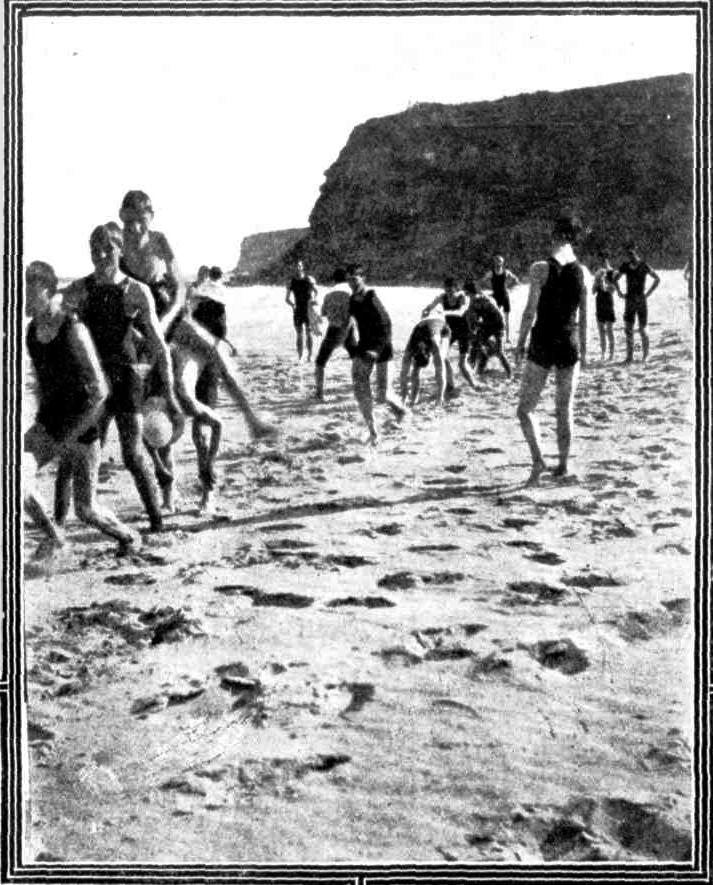
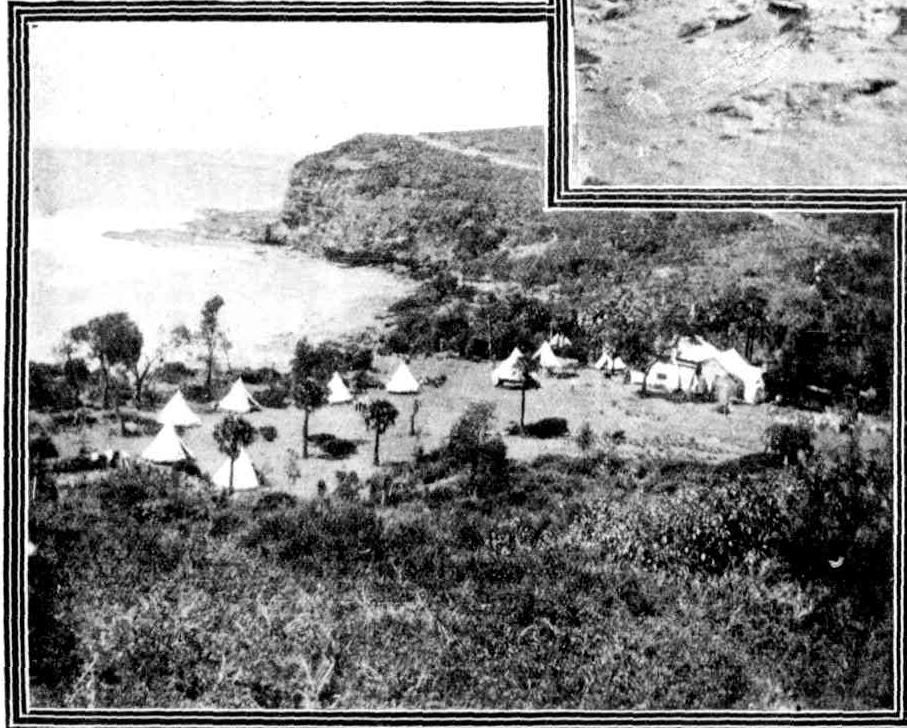
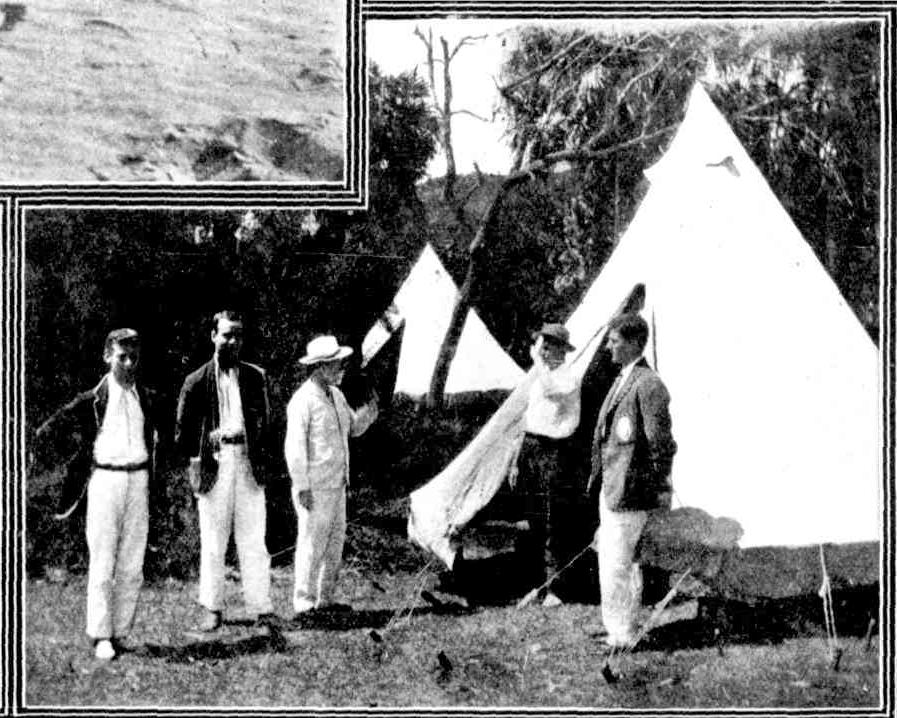
Certain University men recently organised a large camp, specially designed for Great Public Schools. The organisation was complete. The idea was to make it the beginning of an annual affair. In England, Scotland, Ireland, Norway, Sweden, Holland, and the United States these camps for secondary schools are already well known. In England, Oxford and Cambridge men conduct the camps, while boys from such schools as Eton, Rugby, and Harrow attend them. The camp is one of the best places to make friends. The very freshness and freedom of outdoor life, and the warmth of the Australian sun, help to establish goodwill and comradeship. The headquarters of the Sydney camp were at Dalley's Bungalow, a couple of miles past Newport. The spot is very picturesque, peeping on to a beach through a host of palms. The Bathurst Floods: A 'Varsity Camp. (1909, February 10). The Sydney Mail and New South Wales Advertiser (NSW : 1871 - 1912), p. 34. Retrieved from http://nla.gov.au/nla.news-article163286978
Henry Zeddon Jones is listed as a 'salesman' of Bondi Street, Bondi Beach in October 1907, when he is advertising to apply for his father's intestate estate. John Zeddon Jones, French Polisher, of Crown-Street, Woolloomooloo had lost his wife, Sophia Jane, the year before.
Henry Z Jones passed away in 1923, his address then was Mona Vale:
JONES -June 11 1923 at Manly, Henry Zeddon Jones, of The Hall, Pittwater road, Mona Vale, Pittwater. Family Notices (1923, June 14). The Sydney Morning Herald (NSW : 1842 - 1954), p. 8. Retrieved from http://nla.gov.au/nla.news-article16073865
His Pittwater land holdings weren't his only investments in real estate:
FREDERICK SYDNEY PEGG of North Sydney and FLORENCE CHARLOTTE LAIRD of Manly (the Executors of the Will of HENRY ZEDDON JONES) overdue rates £13/0/8 land Lot 9 Section 1 D P 1144 Constance street Guildford. Advertising (1935, January 25). The Sydney Morning Herald (NSW : 1842 - 1954), p. 3. Retrieved from http://nla.gov.au/nla.news-article17139825
NEXT WEDNESDAY. 6th MARCH. 1912. A CHANCE FOR SUBDIVIDERS. BILGOLA HEAD, NEWPORT. OCEAN FRONTAGE. INCLUDING GLORIOUS SURF BATHING BEACH. ABSOLUTE WATER FRONTAGE. Adjoining Dalley's Bungalow. MAGNIFICENT SUBDIVISION BLOCK. 25 ACRES, 3 ROODS, .. PERCHES, Fronting main Barrenjoey Road, Being lots 24 and 25 of the PITTWATER ESTATE. PLAN ON VIEW AT THE SALEROOMS. TITLE TORRENS. HARDIE AND GORMAN, in conjunction with Percy G. Sharpe, have received instructions to sell the above by Public Auction, at their Sale Rooms, 133 Pitt-street. at 11.30 o'clock .Advertising. (1912, February 28). The Sydney Morning Herald(NSW : 1842 - 1954), p. 14. Retrieved from http://nla.gov.au/nla.news-article15313791
In 1914 John Stevenson brought more of his Bilgola holdings under the Real Property Act:
No. 18,395. APPLICANT :—John Stevenson, Gladesville. LAND:—-County Cumberland, parish Narrabeen, shire Warringah, 26 acres 5 perches, on Bilgola Creek and road leading to road from Manly to Barrenjoey,—lot 19, and part lot 18, South Division, Pittwater Estate, and part 1200 acres (portion 20, parish), granted to John Joseph Therry; adjoining properties of W. J. Hollins, C. W. B. King, — Humphrey, and Crown Land. NOTICE UNDER REAL PROPERTY ACT. (1914, December 9). Government Gazette of the State of New South Wales (Sydney, NSW : 1901 - 2001), p. 7291. Retrieved from http://nla.gov.au/nla.news-article227425078
Bilgola Cottage provides the location for a divorce case when Colonel Watts' marriage falls apart:
WATT DIVORCE SUIT.
VISIT TO WEEK-END COTTAGE.
Mr. Justice Gordon, in the Sydney Divorce Court, on June-26, beard the conclusion of the evidence in a case in winch Muriel Maud Watt, formerly Williams, petitioned for the dissolution of her marriage with Walter Oswald Watt, on the ground of alleged misconduct.
The Court was asked by petitioner to find whether, her husband had been guilty with some woman or women unknown to petitioner at Sydney and Melbourne; and whether her husband had been guilty with a woman known as Ivy Schilling at Sydney, between December 18. 1911, and July 1, 1912, '
Henry Leddon Jones said that he lived at 'Palm Grove," on the Barrenjoey-road, near Newport. He formerly owned "Balgowlah," and the respondent purchased it from him in April last year. Witness lived there formerly, and used to let portion of the cottage to fishing parties.
Mr. Whitfield (for petitioner).-Did you ever see Mr. Watt there?
Witness.-Yes....WATT DIVORCE SUIT. (1913, July 5). The Australasian (Melbourne, Vic. : 1864 - 1946), p. 34. from http://nla.gov.au/nla.news-article143294016
Walter Oswald Watt was the youngest son of John Brown Watt, a Scot who had migrated to New South Wales in 1842 and Australian-born mother, Mary Jane (nee Holden, daughter of George Kenyon Holden and Eliza Punette Clunes, née Mackenzie). He was one of five sons and five daughters. He became one of our first and foremost early pilots.
Of Ivy: 'her most widely reported exploit outside the theatre occurred in 1911, when she saved a well-known surfer, Tommy Walker, from drowning at Manly Beach..' (From: pandora.nla.gov.au/pan/131760/20120120-0944/www.nla.gov.au/story-3.pdf)
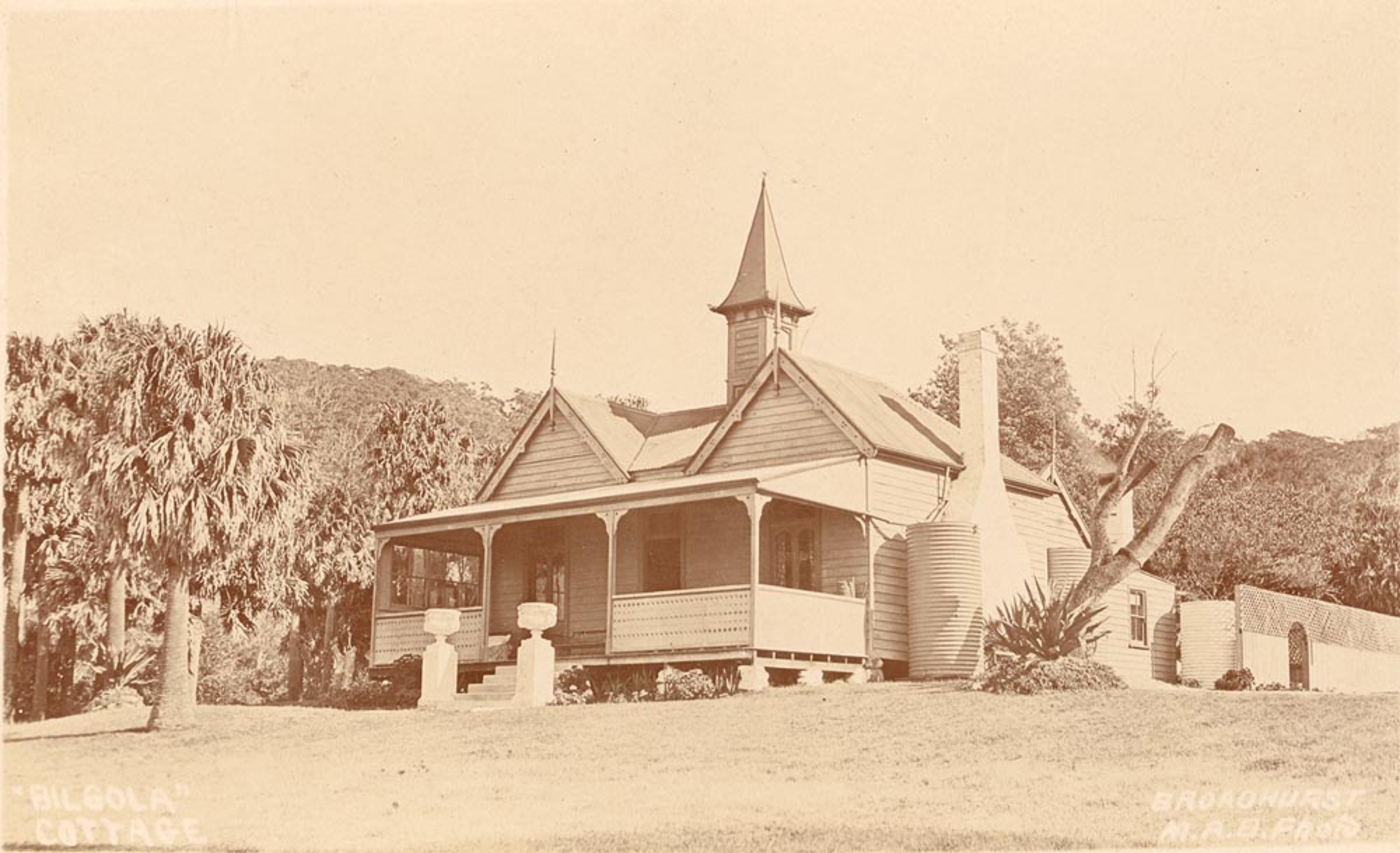
Bilgola cottage, ca. 1900-1927, Sydney & Ashfield : Broadhurst Post Card Publishers. Image No.: a105043h, courtesy the State Library of New South Wales.
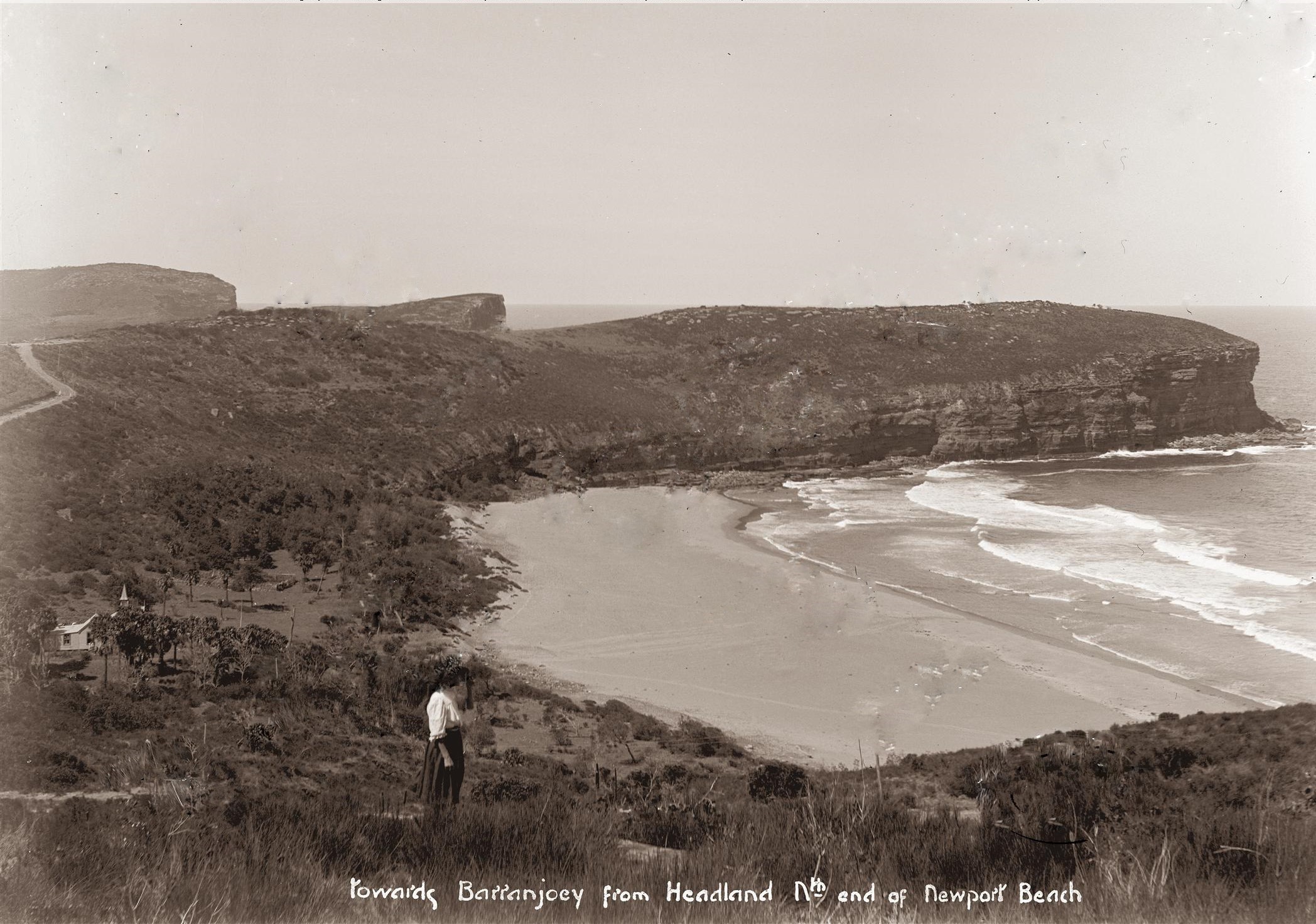
Bilgola Beach circa 1907
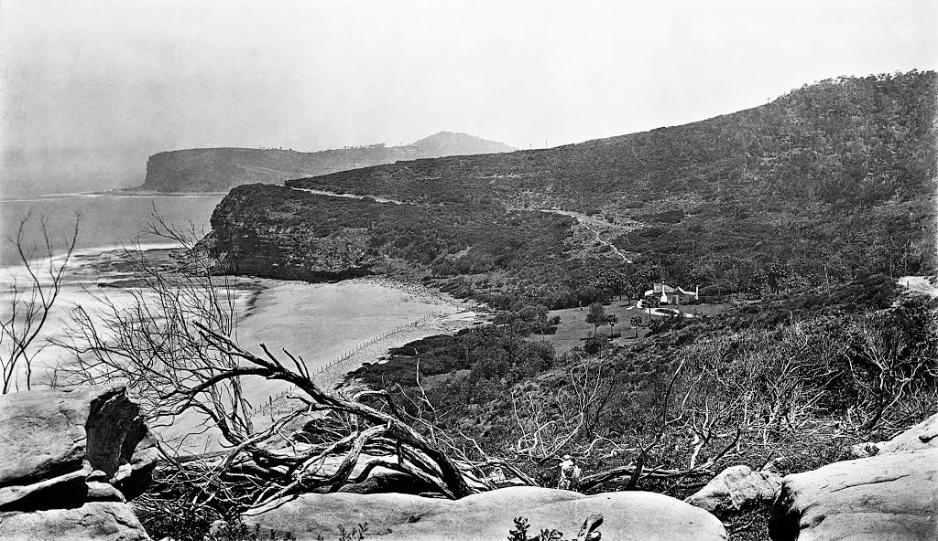
Bilgola beach, circa 1913 - Scanned from an original photographic album of views photographed and assembled by Arthur Ernest Hezlet (c1861 - 1929) of Burwood, New South Wales.
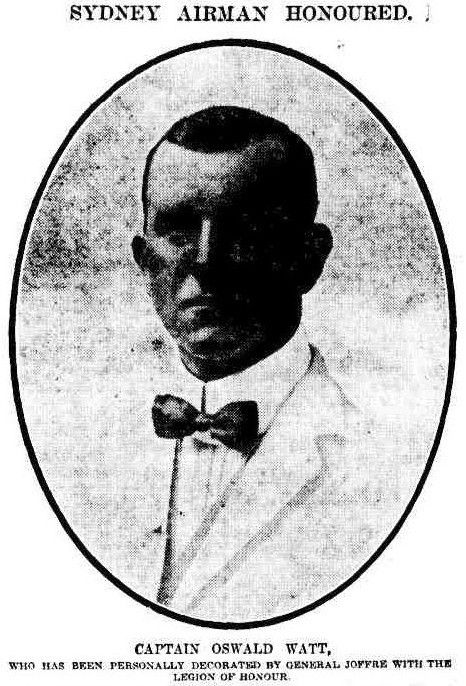
CAPTAIN OSWALD WATT, WHO HAS BEEN PERSONALLY DECORATED BY GENERAL JOFFRE WITH THE LEGION OF HONOUR
Captain Oswald Watt, of Sydney, - a son of the late Mr. J.. B. Watt, M.L.C., and a nephew of Mr. , Walter C. Watt, director of the firm of Messrs. Gilchrist, Watt, and Sanderson. He went home to England about two years ago and studied aviation, afterwards returning to Australia. When the war broke out he proceeded to France and Joined the French flying corps.
The "Echo de Paris" recently published the following account of an adventure by Captain Watt:
"On Sunday afternoon one of our aeroplanes, piloted by Captain Watt, who had Captain Chapltrel as his observer, came to grief near B--, when at an altitude of 1800 metres, and at a distance of five or six kilometers from our trenches. Thanks to the coolness of the aviators they succeeded in landing without further ado, between the French and German trenches; but, as these trenches were not more than 100 metres apart, they were forced to submit to a pitiless hall of bullet:)and shells. The aeroplane was dcstroyed, but the two aviators found shelter behind a hayrick, and In this perilous situation they awaited the cessation of the enemy's fire. In course of time the hayrick caught fire, and thanks to the cover which the smoke gave them they were able to find their way back to our' lines." SYDNEY AIRMAN HONOURED. (1915, February 20). The Sydney Morning Herald (NSW : 1842 - 1954), p. 11. Retrieved from http://nla.gov.au/nla.news-article15561061
It is during his time in France that on Wednesday 23rd of September, 1914 ‘Madame’ Melba as she was referred to by Arthur Wigram Allen, went with the family and others to visit and explore Bilgola beach. They were entertained ‘at lunch’ lavishly and spent the afternoon exploring the grounds and beach. Dame Nellie was accompanied by Mr and Mrs H Ward, (H J Ward had taken over the management of J C Williamson’s entrepreneurial entertainment firm on that man’s death in 1913. Melba had established the Melba-Williamson Opera Company in 1910), and her business manager, flautist John Lemmone. It would have certainly been an august party given whom attended.
As AW Allen states beneath one of the photographs: ‘a number of us went up to Bilgola today to show the place to Madame Melba. We had a very successful afternoon’.
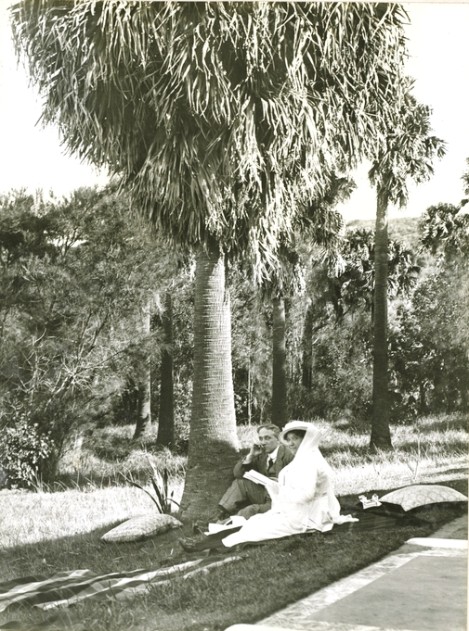
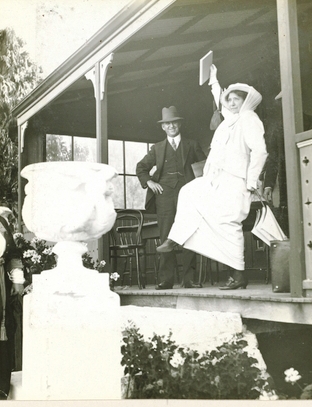
'Madame Melba with John Lemmone' Picture a3293015, and Melba with H J Ward in the grounds Pic: a3293016h, courtesy State Library of NSW
At the end of the war Colonel Watt was presented by those who served under him with a magnificent miniature aeroplane in silver, a trophy of which he was very proud. In January 1919 Mr Watt was appointed O.B.E. He brought his wing back to Australia in the Kaisar-i-Hind (‘Empress of India’; a P&O liner requisitioned as a troopship which Lawrence of Arabia also sailed home in: http://www.ssmaritime.com/Kaiser-I-Hind.htm).
Watt and his fellow airmen arrived home in June, 1919.
On his return he was elected president of the New South Wales section of the Australian Aero Club. After the war he lobbied politicians for improved safety measures in civil aviation and was well known for his generosity to former A.F.C. comrades and his efforts to find them employment. In 1920 he was offered the position of controller of civil aviation, but declined because of business commitments: he was a partner in Gilchrist, Watt & Sanderson Ltd, the family shipping firm, and a director of the Australian Alum Co., the Great Britain Tin Mining Co., the Sogeri Para Rubber Co. and Art in Australia Ltd.
'Toby' Watt drowned at Bilgola Beach, one of his favourite refuges, on Sunday May 21st 1921. He was just 42 years old.
COLONEL WATT. DROWNED NEAR NEWPORT.
SPLENDID WAR RECORD.
Colonel Walter Oswald Watt, late of the Australian Flying Corps, and a director of the firm of Messrs. Gilchrist, Watt, and Sanderson, Ltd., was found drowned at Bilgola Beach, about a mile north of Newport, on Saturday morning.
Colonel Watt was staying at his week-end residence there, and went down to the beach alone, evidently for the purpose of collecting wood. He had taken off his bath robe, which he was wearing over his bathing costume, and this, together with his towel, was found on the beach. A number of sticks were piled in a heap close by. These were close to a point where a number of slippery rocks run down to the water's edge, and not at the place where Colonel Watt usually entered the water when swimming. When the body was examined on Saturday afternoon a bruise was found at the back of the head and a cut in the middle of the forehead. There were also some scratches on one cheek, and these signs suggested that Colonel Watt slipped on the rocks referred to, and fell, striking his head. It is believed that the fall stunned him, and that he was drowned in comparatively shallow water, into which he rolled after the fall.
Mr. Sydney Jones, a caretaker at Colonel Watt's residence, was the first to notice the body floating in the water. He hurried to Newport to obtain assistance. From there some fishermen proceeded in a boat, and recovered the body. Constable Grant, of Mona Vale, and Mr. Bulfin made strenuous efforts to restore animation, but it was realised from the beginning that there was no hope of success, and after half an hour's work they had to admit failure. Dr. Richards, of Narrabeen, pronounced life extinct. COLONEL WATT. (1921, May 23). The Sydney Morning Herald (NSW : 1842 - 1954), p. 8. Retrieved from http://nla.gov.au/nla.news-article15950786
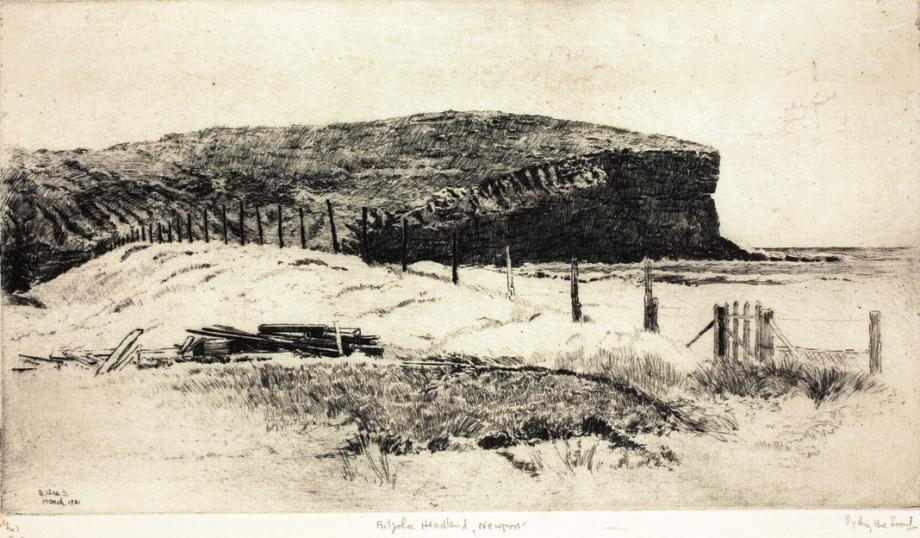
On base of sketch "It was here that Colonel Oswald Watt met his death. Drawn from Col. Watt's seaside residence 'Bilgola' when I was staying a weekend with him - a few months prior to his death." Sydney Ure Smith - sketched/drawn March 1921 - Image No.: a7065001h courtesy State Library of NSW
Advertised a few days later, on the other aside of Bilgola Creek:
NOTICE UNDER REAL PROPERTY ACT.
Applications having been made to bring the lands hereunder described, under, the provisions of the Real Property Act, Certificates of Indefeasible Title will issue, unless Caveats be longed in accordance with the Third Schedule to tire said Act on or before the 17 th June, 1921:
No. 23,303. APPLICANT: Arthur Billerwell, Mosman. LAND--Shire Warringah, 3, a. 1 r. 2 3/4p., part Iot 21, Villa Sites,, Pittwater Estate, situated on Bilgola Creek. Advertising (1921, May 24). The Sydney Morning Herald (NSW : 1842 - 1954), p. 6. Retrieved from http://nla.gov.au/nla.news-article15945290
Arthur Billerwell is associated with the Kookaburra Motorcycle Club, inaugurated in 1910, which had camping ground on Bilgola Beach. A little more about him:
THE KOOKABURRA'S SECRETARY,
MR. A. BILLERWELL.
Mr. Arthur 'BillorwcH is another motor-cyclist ,who graduated from the ranks of the amateur racing cyclist. A few years ago, he was a prominent North Sydney rider, and occupied a position very near scratch in the company of such riders as A. Biden, who, for several years, held the N.S. Wales record for 20 miles on the road, and was always a competitor with whom no liberties could be taken. Mr. Billerwell, however, was one of the less fortunate riders as a cyclist, for, in spite of his abilities, very few prizes came his way.
Taking up motor-cycling a few years ago, Mr. Billerwell was one of the moving spirits in forming the Kookaburra Club, and was, at its first meeting, elected secretary, a position he has filled ever since. Like many of his club mates, Mr. Billerwell has not confined his athletic energies to one branch, having taken part in a number of swimming events as a member of the Mosman Club ; he is also a skilful surfer. Not long ago, after a long period of motor-cycling, he demonstrated that he had not entirely forgotten how to pedal by riding a hard pursuit match — in which two cyclists start at opposite sides of a track, and ride in pursuit of each other until the agreed on distance is covered — with Mr. F. S. Roberts at St. Ives, on a rough pony track. He is also credited by those who know him with a leaning towards naturalistic studies, being quoted as something of an authority on the habits of ants. THE KOOKABURRA'S SECRETARY, (1913, February 9). Sunday Times (Sydney, NSW : 1895 - 1930), p. 18. Retrieved from http://nla.gov.au/nla.news-article126460786
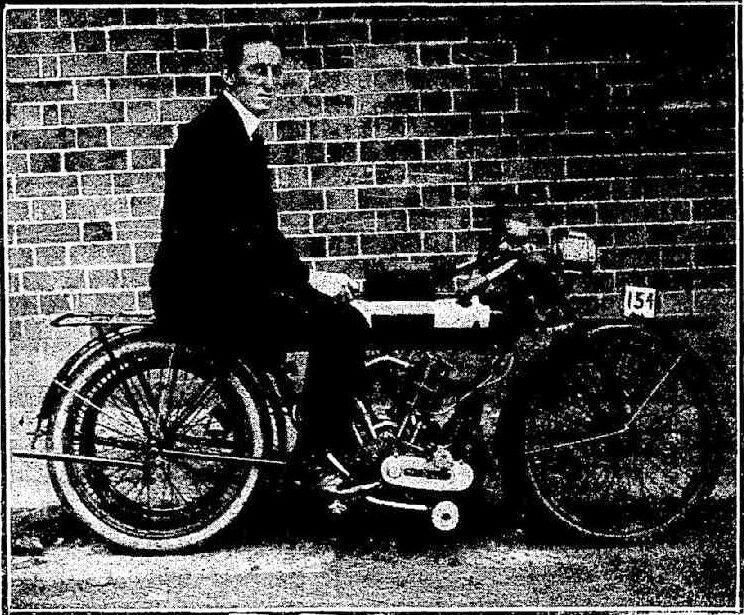
MR. ARTHUR BILLERWELL, Hon. Sec. of the Kookaburra Motor-Cycle Club.MOTORS & MOTORING. (1913, February 9). Sunday Times (Sydney, NSW : 1895 - 1930), p. 18. Retrieved from http://nla.gov.au/nla.news-article126460708
KOOKABURRA MOTOR-CYCLE CLUB. This club has made an important move recently by securing a site for a permanent clubhouse at Newport, where 7 ½ acres of land have been purchased by the camping section at Bilgola, having easy access to the beach. The property purchased is described as picturesque, and possessing many attractive features for those motor-cyclists who have a leaning towards Nature, and its extent will permit of its being made particularly valuable in the future. It is intended to erect a bungalow club-house at once, the building having two rooms and a kitchen, as well as wide verandahs on each side for 'sleeping out.' In addition there will be a smoke room, separated from the main building, in a position where Nature has already almost provided a room. The dining-room and outdoor kitchen are also to be situated a little distance away from the club house, in a beautiful palm grove, close beside the banks of a creek of pure, freshwater. Besides these buildings, the plans include these of a garage with, a suitable; work bench to permit of members overhauling their motorcycle engines on wet days. The club-house will no doubt be the rendezvous of the Kookaburras during the Summer months. The Kookaburra Club's committee has decided, on account of the bad state of the roads, to make a centre to which the majority of club runs will be hel'. The plan selected, has not been divulged at present, but it is stated it offers facilities for football, cricket, or other outdoor games, as well as motorcycle frolics; and two out of every month's week-end runs are to be to it. The other runs will include a week-end tour and a visit to such old motor-cycling haunts as Windsor, Appin, Springwood, etc.-
The migration of Kookaburras from their present Summer quarters is promised for April 13 and once again the birds find themselves connected with mystic 13. It has frequently been commented on how this club flirts with the supposedly unlucky number. The club will hold the opening run of its touring season on April 19 and 20.
ON TOUR. Messrs. A. G. Biden and R. Readford are away at present on a holiday, at Oberon. They rode up on their motor-cycles, and report having found a 'teaser' of a new hill on the way up. At present they are enjoying great relaxation among the rabbits and other game.
A NEW MOTOR-CYCLE CLUB.
At a meeting held on Wednesday evening, a new motor-cycle club, called the Britannia, was formed successfully, about 25 members being enrolled. Mr. A. A. Levi was appointed Hon. secretary, and Mr. d. A. Zink Hon. treasurer/ both pro 'tern. A further meeting is to be -held on Wednesday evening at the Volunteer Hotel, George-street, when other office bearers will be elected. The club's opening run is to take place to-day, leaving the Glaciarium for Newport via Manly at 9.30 a.m. KOOKABURRA MOTOR-CYCLE CLUB. (1913, April 6).Sunday Times (Sydney, NSW : 1895 - 1930), p. 21. Retrieved from http://nla.gov.au/nla.news-article126462062
Soon after his passing Col. Watts Bilgola property was advertised:
Messrs. Raine and Horne had a good gathering at their auction rooms on Thursday, when...On December 8 the firm will bring under the hammer a delightful bungalow residence and 6 1/2 acres of ground at Bilgola, near Pittwater. The property Is in the estate of the late Walter Oswald Watt. LAND SALES (1921, November 26). The Daily Telegraph (Sydney, NSW : 1883 - 1930), p. 18. Retrieved from http://nla.gov.au/nla.news-article239704659
Under instructions from PERPETUAL TRUSTEE COMPANY (Limited), as Executors of the Will of the late WALTER OSWALD WATT.
PITTWATER
"BILGOLA."
situated on the Barren Joey Road, Just beyond Newport, and amidst some of the finest scenery in New South Wales, IS a bungalow residence of weatherboard, having a wide verandah in front, and containing seven rooms and other offices.
DETACHED IS A LARGE GARAGE.
THE LAND, In area about 6 1/2 ACRES, is laid out in garden, lawns, and groves of Cabbage Tree Palms and Ferns,
TORRENS TITLE.
TERMS: One-third deposit, two-thirds can remain on mortgage for three years at 7 per cent.
"BILGOLA" is without doubt a unique Week-end home, situated, as it is, amidst charming scenery, with a glorious ocean view, and the magnificent BILGOLA BEACH at Its front door.
THE BEAUTY of "BILGOLA" is clearly shown in the fine pictures on exhibition in the office of the Auctioneers.
Solicitor to the Estate, E. S. Dunhill, Esq., 1 Bligh Street .
RAINE and HORNE will offer the above at PUBLIC AUCTION, in the Rooms, 70 Pitt Street Sydney, on THURSDAY NEXT, 8th December, 1921, at 11.30 a.m. Advertising (1921, December 3). The Daily Telegraph (Sydney, NSW : 1883 - 1930), p. 17. Retrieved from http://nla.gov.au/nla.news-article239705305
Colonel Watts property at Bilgola soon sold to Harry James Brigden, a public accountant who subdivided it into twenty eight lots that were offered for sale in February 1922. Unfortunately one of the surveyors, Norman Whitely, was killed by a shark earlier in February 1922. He had been staying in the cottage:
Human Remains
ON BILGOLA BEACH
Bathing Suit Identified
There is every indication that Mr. Norman Whitely, who disappeared from Bilgola Beach, Pittwater, on Monday, was the victim of a shark.
Constable Grant, on Mona Vale, who, with other police, has been making a thorough search of the locality, yesterday afternoon found the ribs and a leg of human being, which were still joined together. A hundred yards away he picked up the tattered remnants of a man's bathing costume. The latter was subsequently identified as the one belonging to Mr. Whitely. The remains were taken to the Morgue. Mr. Whitely, who was an employee of the firm of P. H. Mulligan and Company, surveyors, of Castlereagh-street, City, was to have carried out some survey work near Bilgola Beach, on the estate of the late Colonel Oswald Watt, who was himself drowned on the same beach last year. It was arranged that Mr. Walter Cridland, another employee of the firm, should meet him there on Monday morning, in order to commence the work. When Mr. Cridland arrived, however, he found that Mr. Whitely had disappeared. The remains comprised the spinal column, pelvis, right leg, with the foot missing, were examined by Dr. Sheldon at the morgue this morning, and in his report to the coroner stated that portions of the ribs attached to the spinal column had been broken off irregularly at different lengths. The bones, except the right heel, had been almost denuded of tissues. "No cause of death can be stated," said the doctor in his report, but evidently the body had been attacked by something which broke off the ribs." Human Remains (1922, February 9). Evening News (Sydney, NSW : 1869 - 1931), p. 5. Retrieved from http://nla.gov.au/nla.news-article118873854
Despite the demise of poor Mr. Whitely, the land sold:
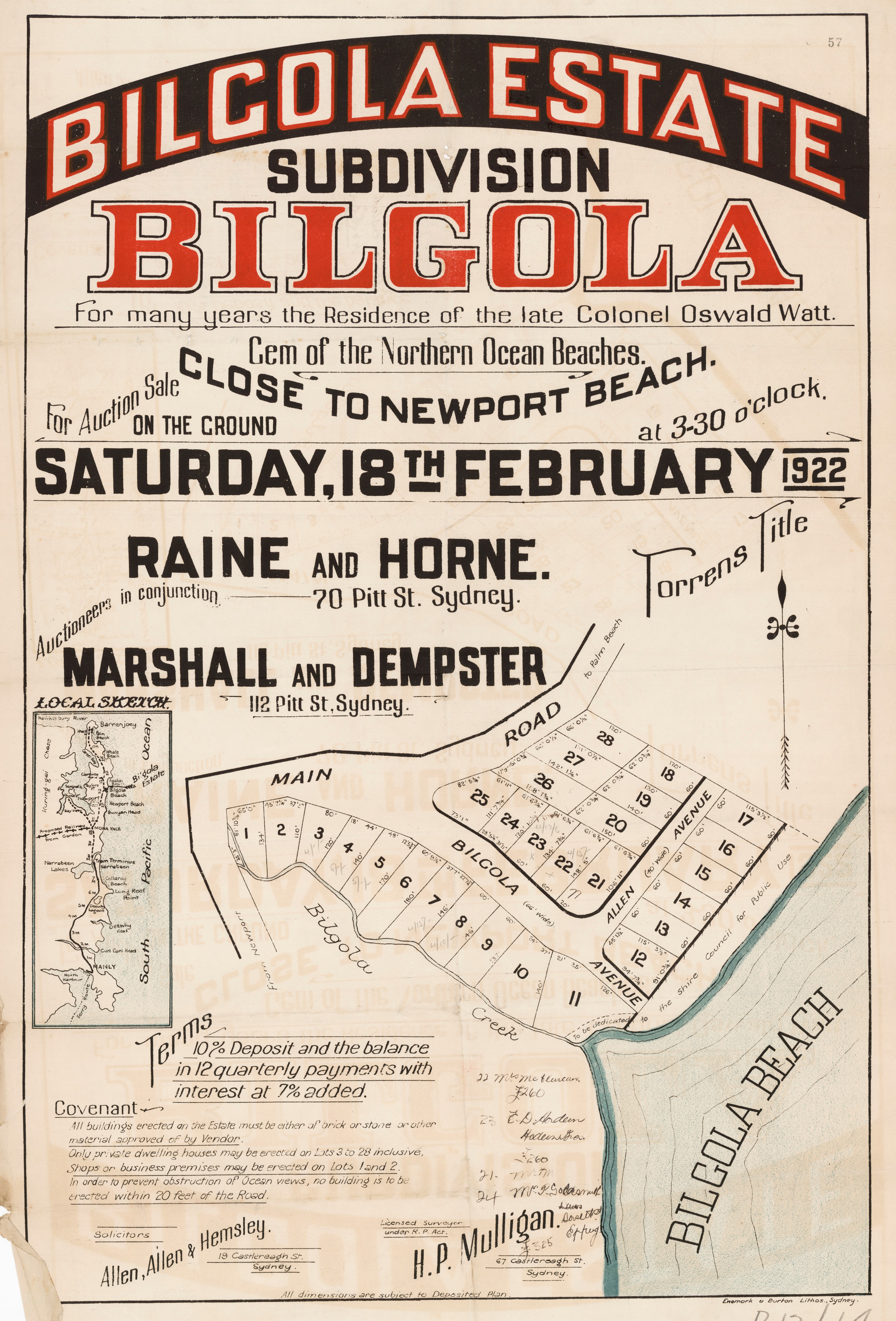
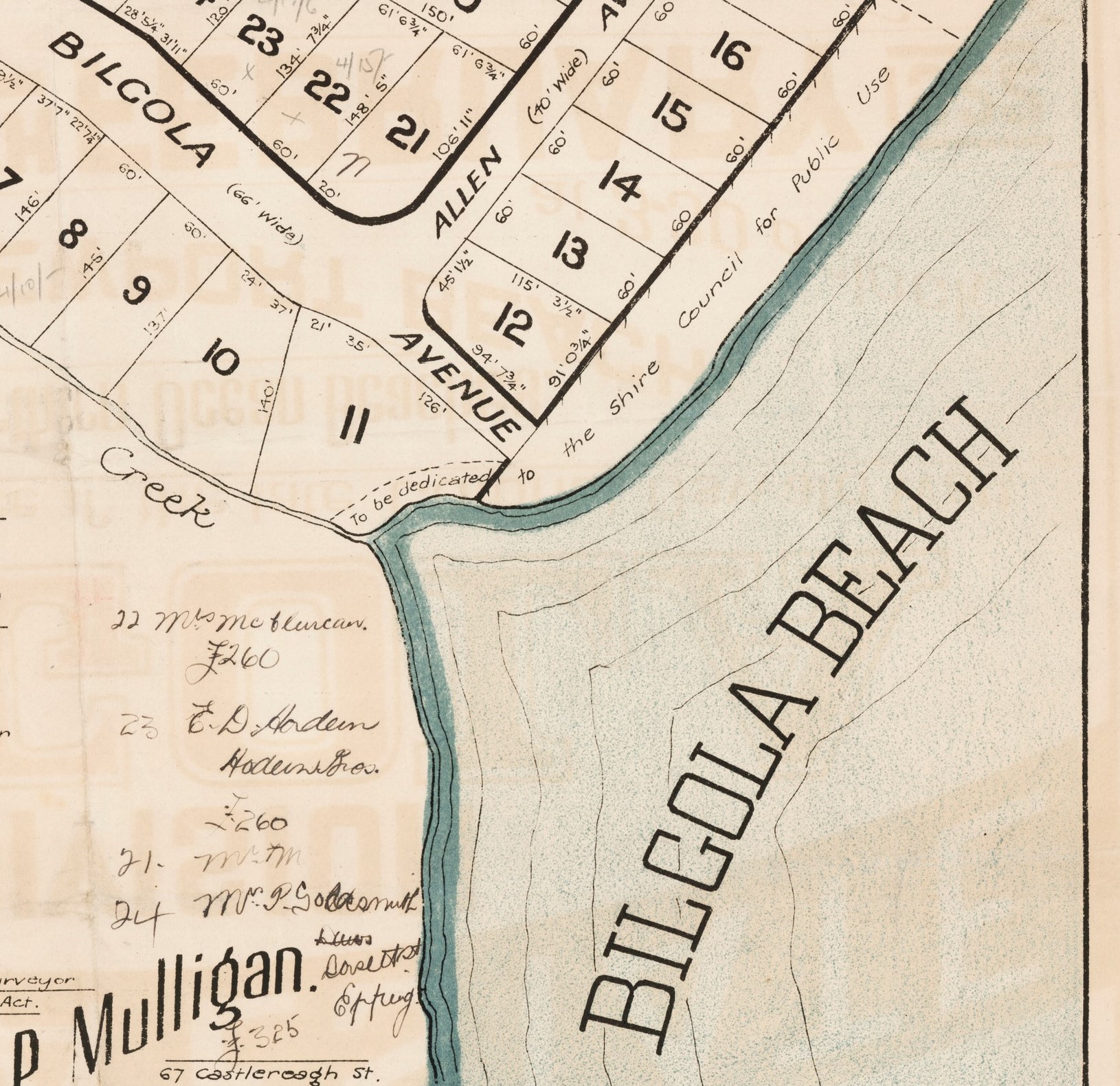
Bilgola Estate Feb 1922. Item No. c053460014, and section from showing purchasers from Avalon Subdivisions Folder, courtesy State Library of New South Wales
LAND SALES
Bilgola Estate
Messrs. Raine and Horne and Marshall and Dempster in conjunction yesterday submitted for public auction on the ground a number of lots in the Bilgola Estate. In spite of the heavy rain there was a large attendance. Several lots were disposed of at prices ranging from £4 10s to £5 10s per foot. The total sales reached £2400. The unsold lots are held for private treaty. LAND SALES (1922, February 19). The Sun (Sydney, NSW : 1910 - 1954), p. 5. Retrieved from http://nla.gov.au/nla.news-article225213788
Allen, Allen and Hemsley had a long association with being solicitors in Sydney, and Australia for that matter, and one of their sons, and a frequent visitor to Bilgola, and Pittwater for that matter, was Arthur Wigram Allen. The Allen Family albums, largely photographed by this gentleman, and digitised by the State Library of New South Wales, hold a record of Pittwater places from Rocky Point, Church Point, Bayview, to Mona Vale, Newport, Careel Bay and Palm Beach dating from 1909. There are also several Manly, Long Reef and Narrabeen photographs among this collection.
Their frequent visits to Bilgola were not an accident - they were attendees at his funeral and clearly had a long friendship with Col. Watts, stretching over years. Arthur Wigram Allen's son, Arthur Denis Wigram Allen(1894-1967), was an aviator too, who served in France in 1916 and so would have known Watt.
A small insight:
Sunday, 8th September, 1907; Jack and I motored to Oswald Watts' at Wivenhoe near Camden (41 miles), Mrs Wilson and Mrs Rhoda Anderson came with us. We had a very nice day getting back at 6 p.m.
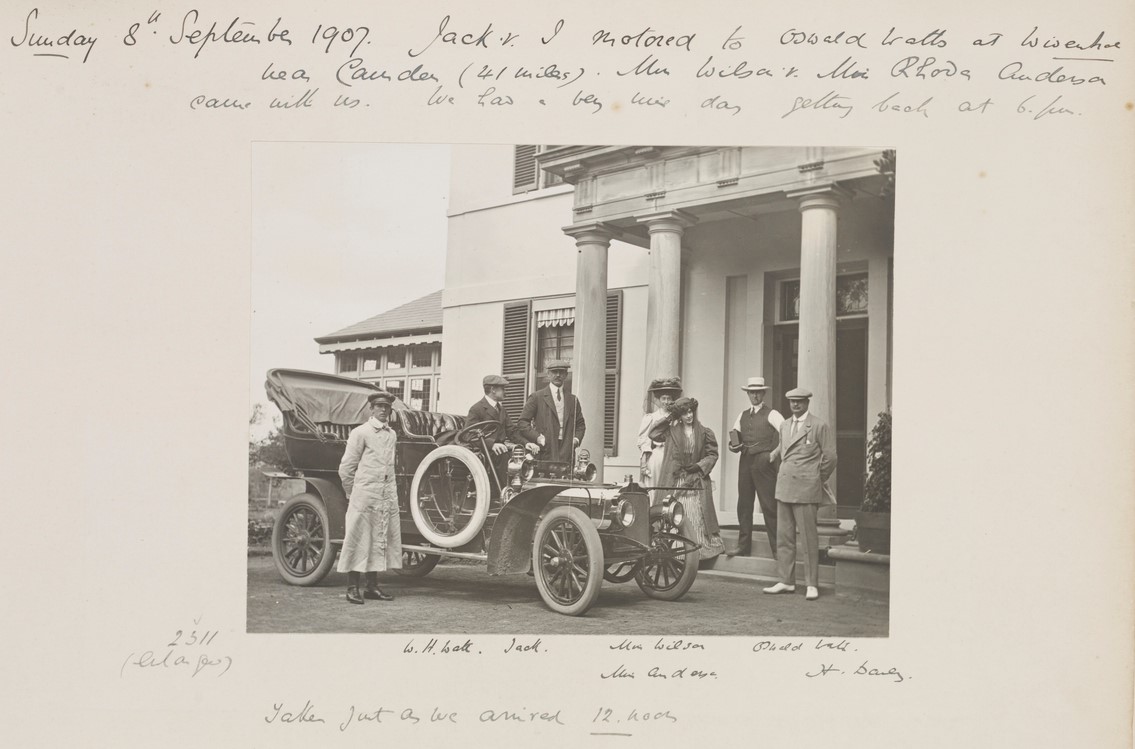
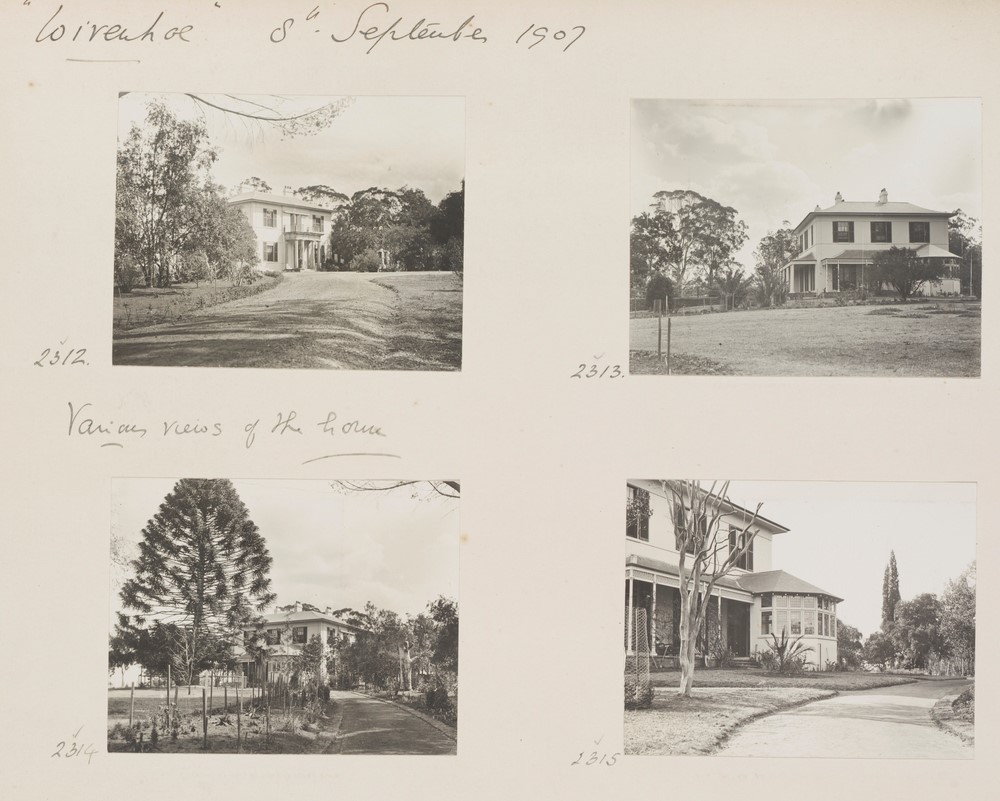
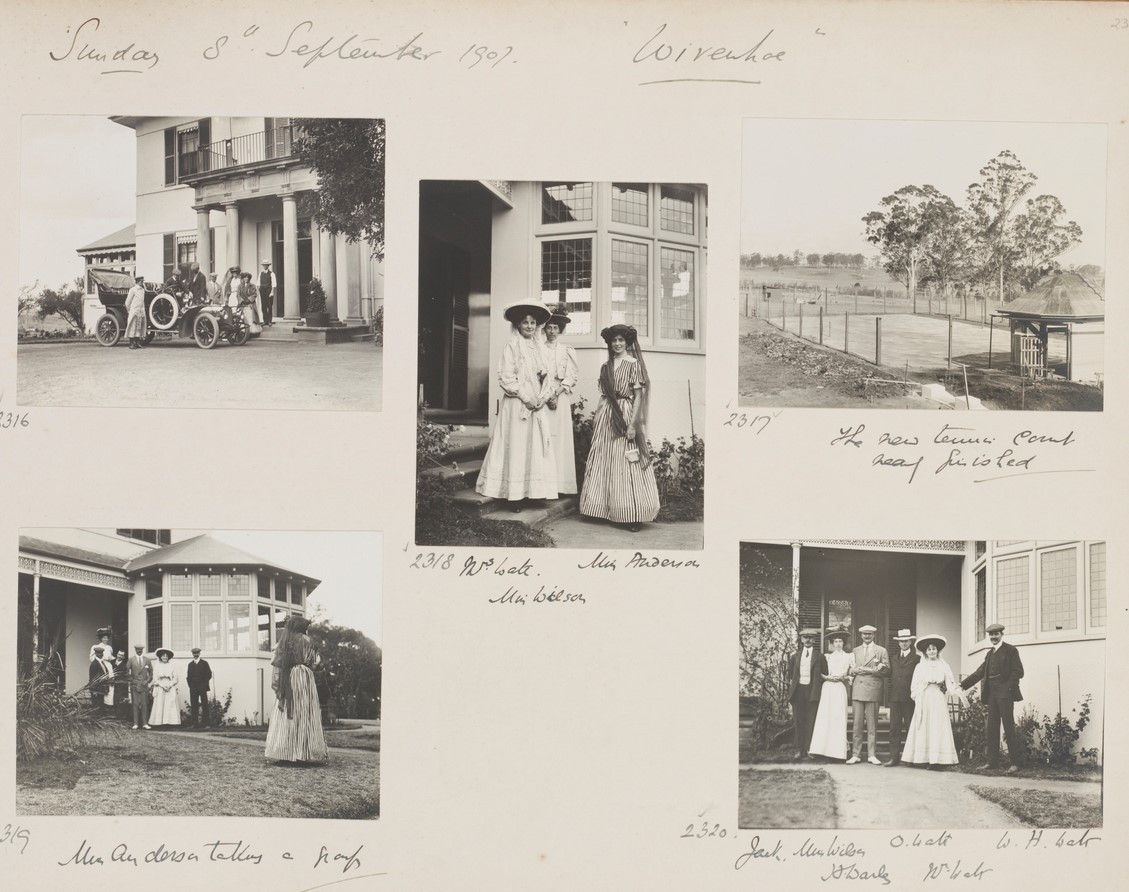
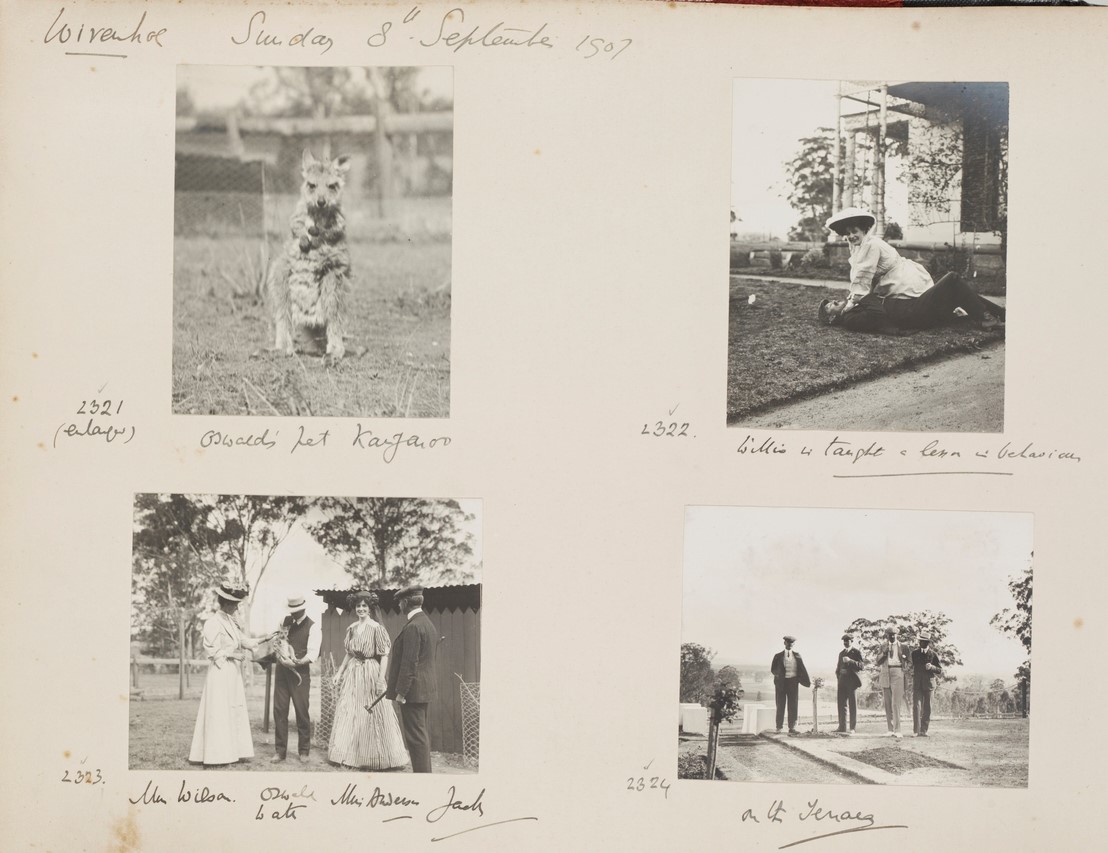
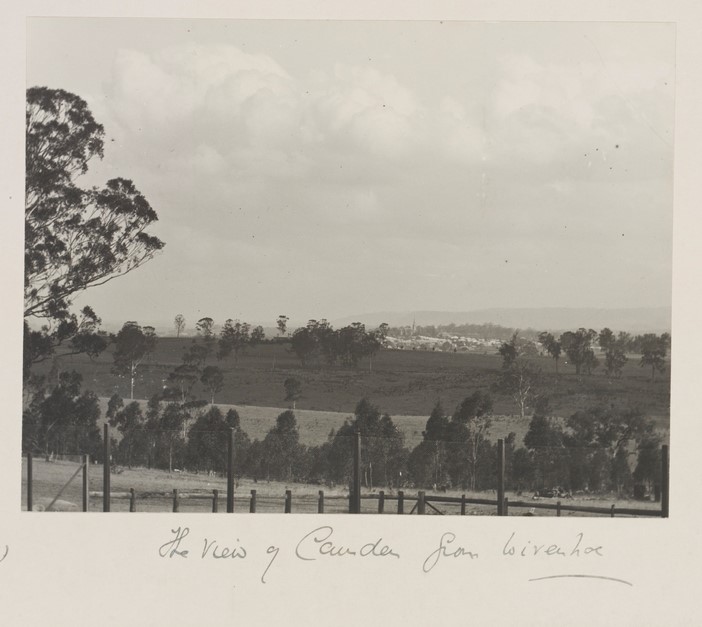
Wivenhoe - various views of the house. Items: a2883025h to a2883029h. All from Album 40: Photographs of the Allen family, 6 July 1907 - November 1907, Mitchell Library, State Library of New South Wales
OLDEST LEGAL FIRM.
Australian Record.
MESSRS. ALLEN. ALLEN AND HEMSLEY.
A record in Australian legal history has been achieved by the firm of Allen, Allen and Hemsley, solicitors. Yesterday was the 110th anni-versary of the date on which the founder of the firm, Mr. George Allen, of Toxteth Park, was admitted as a solicitor of the Supreme Court of New South Wales by Judge-Advocate Wylde and Mr. Justice Barron Field. Between 1822 and the present date, there have been no fewer than four generations of Allens members of the firm. Such an unbroken record for a solicitor's office Is unique in Australia, and, probably, very seldom equalled In London.
Mr. George Allen commenced the practice of his profession in Elizabeth-street on the site of the building now forming portion of Univer-sity Chambers. On his retiring from active work, the business of the firm was carried on by his sons, the late Sir George Wigram Allen. Mr. Walter B. Allen, and Mr. Arthur M. Allen. In 1884 new offices fronting Phillip-street, also now known as University Chambers, wore built by Sir George Wigram Allen, and In that new building the firm's practice was continued after the death of Sir George Wigram Allen by his sons Reginald Charles, Arthur Wigram, and Herbert Allen. In 1895 Mr. Alfred Hemsley, M.L.C., Joined the firm of which he Is still a member. Mr. Arthur Allen's son Denis Allen and his nephew Dundas Allen have in due course been made partners.
During the long period that the firm has been in existence a number of distinguished lawyers have been partners, namely, Mr. Ernest Augustus Smith, the late Mr. T. K. Bowden, the late Mr. George Colquhoun, and the late Mr. Cecil Cowper. Mr. Colquhoun will be remembered as, for many years. Crown Solicitor of New South Wales. Mr. Smith, now senior partner of Messrs. Macnamara and Smith, was a member of the firm before ac-centing the position of Crown Solicitor.
The records prove that the firm's appointment as solicitors to the Bank of New South Wales and the Australian Gas Light Co. dates back nearly 90 years. OLDEST LEGAL FIRM. (1932, July 27). The Sydney Morning Herald (NSW : 1842 - 1954), p. 10. Retrieved from http://nla.gov.au/nla.news-article16888907
LATE COLONEL WATT.
GREAT PUBLIC TRIBUTE. NAVAL' MILITARY, AND PUBLIC MOURNERS.
St. Jude's Church of England, Randwick, was thronged yesterday afternoon, when the service preparatory to the burial of the late Colonel Walter Oswald Watt, O.B.E., Croix de Guerre, and Legion of Honor, was held.
The service was conducted by Rev. W. J. Cake-bread, assisted by Rev. Frank Cash. The chancel was strewn with wreaths. Brigadier-General Jobson, who gave a brief eulogistic address, said that they had assembled to do honor to the memory of a great man, who had rendered good service in the great war. For France he had performed signal service, and of that service France had shown her appreciation. No soldier, flying man, or "Digger" had ever gone to Colonel Watt appealing for help without receiving it. He not only: gave willingly, but he gave with a blessing. During the progress or tho service an aeroplane hovered overhead, and a wreath, with a parachute attachment, was dropped in Avoca Street, close to the church. There were two cards attached. One bore the' inscription, "Australian Aircraft and Engineering Company, Limited. Sydney," and the other contained the request, "Would finder kindly deliver to St. Jude's Churchyard, Randwick?" The wreath was brought into church before the service was concluded.
While the coffin was being borne by eight members of the late colonel's squadron to the gun carriage (provided by the base coromandant), the organist (Mr. Arnold Mote) played Chopin's Funeral March. The firing party, which was drawn from the flagship Melbourne and the Brisbane, and which was under the command of Lieutenant Collins, came to the salute as the coffin approached the gun carriage. A procession was formed, and the family vault In St. Jude's Cemetery was reached after the funeral party had walked round two sides of a square, entering the burial ground by the northern side! It is long since so many people assembled round a graveside at St. Jude's. The funeral was one of the largest held In the metropolitan area for some time. The remains were interred with full naval and military honors, and the general public added their tribute in recognition of the worth of the man who had done so much for the Empire, and who in time of peace had met his death under tragic circumstances.
The chief mourners were Mr. Ernest Watt (brother) and Mrs. Watt, and Miss Pauline Watt. The navy and army representatives were many, and the men who had served with Colonel Watt turned out In numbers that, amply bespoke their affection for their late chief. The commercial and shipping interests were largely represented, and the general public gave an outward manifestation of regret at the untimely end of a man who had done so much for tho defence of their liberty and freedom.
Among the naval officers were Flag-Captain Cumberlege, Commander Feakes, and Lieut.-Commander Burrough, of the flagship Melbourne; and officers from all the warships in harbor. The band of the Melbourne played appropriate music on the march from tho church to the grave.
The State Commandant was represented by Colonel Thornthwaite. Other military officers included Major-General Sir Charles Rosenthal, K.C.B., - C.M.G., D.S.O., Brigadier-General M'Glinn, C.M.G., C.B.E., Colonel J, Adam Dick, C.M.G., Colonel Arnott, Colonel ' F. Osborne, Colonel Eames, Lieutenant-Colonel Travers, Colonel Wall, Colonel Rabett, Colonel Rutledge, M.L.A., Colonel Pearce (representing Colonel Farr, of the Repatriation Department), Lieutenant-Colonel Jamieson, Major Bond, Major Ross, Captain Robertson, and Lieutenant Arnott.
The air forces represented were the R.F.C., A:F.C„ and the Australian Aero' Club. The airmen were represented, among others, by Colonel Reynolds, Major Blake, Captains Hoidca, Mailey, Robertson, Lieutenants E. Walker, G. Walker, Cook, Cowell, Curley, Marduel, Wheeler, Marshall, Mulroney, Wade, Dibbs. Warneford, and First Air Mechanic A. Strange-Mure.
The directors and staffs of Gilchrist,' Watt, art! Co., and Gilchrist, Sanderson, and Co. wetp well represented. The Royal Automobile Club was also represented.
The Imperial Service ' Club (of which deceased was a vice-president) was represented by Commander R. S. Lambton (president) and Colonel Rabctt (vice-president).
The civilian representatives Included Mr. John Gilchrist, Sir Thomas Hughes, M.L.C., Monslgnor King, O.B.E., Rev. Father Murphy, M.B.E., Mrs. Walter Watt, Mr. and Mrs. James Burns, Captain C. M. Young,. Dr. and Mrs. Jamieson, Mr. S. Richardson, Dr. Brady, Dr. Reddail, Mr. D. Mills, Commander A. G. Milson, Messrs. J. W. Scott Fell, B- A. Oslear, Alex. Hay, M.H.R., Q. L. Deloitte, J. O. Fairfax, Robert D. W. Towns (secretary to Gilchrist, Watt, and Co.), Oswald L. M'CIoy, (shipping malinger to GUchriet,"Watt, and Co.), G. M. Merlvale, B. Burdekln, T. Cornish P. A. I Rabett (Union Club), W. A. Tnlnsh (secretary) and staff of the Union Club, W. H. Rothe, W. P. Fraser (representing Harrison, Jones, and Devlin), Victor Cohen, Roy Allen, Edward J. I Hart (honorary secretary of the New South Wales section of the Australian Aero Club), M. Severn, W. H. Palmer, H. Jefferson, E. J. Bayly Macarthur. Gordon Wescho, F. H. Williams, H. Peters, G. W. Lawson (treasurer of the Aero Club), W. Barnes, H. Villar, H. W. Corric (director of. the Commonwealth and Dominion Steamship Line), Reginald Allen, Arthur Wigram Allen, Sydney J. Clarence, Douglas L. Dowdell, Joseph Playoust (president de l'Union Francaiso), R. H. Laws (representing H. S. Blrt and Co., Ltd.), J. W. Cocks, E. S. Dunhill, Neville Dangar, R. R. Moss, R. Fowler, W. Olliffe, H. Dean, C. Carter, E. J. Knox and. Miss Knox, Captain James Peter (representing Mr. P. J. Franki), Captain' Arkley Smith (acting secretary. Royal Shipwreck Relief Society), Captain J. Owen, Messrs. R. V. Saddington (representing the Australian Alum Company), A. Carroll, J. Guthrie, F. P. ' M'Cabe, A. J. : Simpson, Eric G. Simpson, G.' Hewison, W. B. Clarke (Liverpool and London and Globe Insurance) Company), G. S. Freoman, H. T. Hall, G. H. Mather, J. B. Milne, Charles R. Carrlek , (assistant-manager, Central Wharf Stevedoring Company), Copeland Lethbridge (manager, Perpetual Trustee Company). '
The service at the graveside was conducted by Revs. W. J. Cakebroad and Frank Cash, after which the firing party discharged throe volleys over the grave. The sounding of the naval 'form of "The Last Post" by two trumpeters closed the service.
Many wreaths were sent, chief among them being from: — Laurel from Bertha, Tim and Bertha, Jimmy (son, England), Mr. and Mrs. Ernest Watt, Felicity and Jimmy, Pauline, Pamela, Mrs. Margaret Caldwell (England), Mrs. Gordon Caldwell (England), Mrs. Bethune (England) (sisters), nieces in England, Eileen Watt, his old nurse (Ward), Mr. Harry Caldwell . (nephew), Mrs. P. C. Watt and family, Helen Watt, Dr. and Mrs. Marsh, Mr. and Mrs. Charles Weston, Mr. and Mrs. Hubert Flood, Mr. and Mrs. M'Pherson (Hobart), Dr. and Mrs. Brady, Major Gordon Brady, Gil-I clirist. Watt, and Sanderson, Ltd., staff Gilchrist, Watt, and Sanderson, Ltd., Gilchrist, Watt, and. Co., Wills, Gilchrist, and Sanderson, Ltd. (Brisbane), John Sanderson and Co. (Melbourne), George Wills and Co., Ltd. (Adelaide), S. J. Clarence, Mr. and Mrs. Frank Chase, Mr. and Mrs. Richard Chase, Mr. and Mrs. A. H. W. Cunningham. Dr. and Mrs. E. W. Fairfax, Misses Knox, Miss Jane Brenan, Mrs. Alfred Lamb and Mrs. Tom Lamb, Captain Tooth, Mr. and Mrs. J. Burns, Mrs. Walmlngton, Mr ond Mrs. Murray Campbell, the Australian Aero Club (N.S.W. section), the publishers, editor, and staff of "Aircraft," commodore command-jing, enptains and officers H.M.A. fleet, Australian. Aircraft and Engineering Co., the French Consul, Mrs. Bloodworth and Miss Borthwlck. directors, Australian Alum Co., Ltd., Dr. and, Mrs. George Watt, Mr. D. M. Cohen, Mr. and Mrs. .E. L. Robinson, Sydney Ure Smith and Bertram Stevens, Jenn and Co., Mr. and Mrs. Cyril Williams, directors and staff of Aerial Co., Ltd., Mr. John Gilchrist and family, Monty and George Walker, secretary of staff of the Union Club, Mr. and Mrs, Tom Donkin, Mr. and Mrs. John Daliey, Miss Barbara Bowker, Misses Mary and Helen Laidley, Mr. S. J. Clarence, Mi. W. . T. Craig, Gordon, and, Molra, Mr. and Mrs. Cunningham, Gilchrist, Watt, and Co., Imperial Service Club, Dr. and Mrs. H. Marks, president and members of tile Union Club, Mr. and Mrs. H. Wj Corry, Mr. and Mrs. J. A. D. Gibson, Dr. and Mrs. Sydney Jamieson, Mr. C. H. Chateau,' Mr. and Mrs. Fraser. Miss Edith Weston, directors, Ulladulla Silica and Fire Bricks, Ltd., Mr. C. M. Young, General Jobson, Misses Phyllis and Ruth Macarthur, Miss Margaret Tooth, Commander and Mrs. Feakes, Sir Henry Brad-don, Lieutenant W. J. Warneford. Mr. W. G., Blaxland, Mr. J. H. Gossn, Mr. C. P. Clarson, Mr. and Mrs. Barden.) Colonel and Mr R. Macarthur Onslow, Mr. Hugh D. M'lntosh, M.L.C., Mr. and Mrs. Neville Dangar, Misses Blanche and Mildred Bloomfield, Wilkinson and Lavender, Limited, Tho Camp (Bilgola), Dalgety and Co.. Limited, T. J. Parker, Mr. and Mrs. Ralph Gibbs, Phyllis and John Massle, A.M.L. and F. Company, Limited, Mrs. Edward Knox, Miss Kenham, Misses Barbara and Janet Knox, Coe, Mr. and Mr B: Frank Macdenaid, M. Freeman and A. White. Mrs. Nora Dangar, Bubbles and Patsy, Gooffery Forrest Hughes, Mr. and Mrs. John M'Keown. Mr. and Mrs. Arthur Wigram Allen, R. H. Dempster, directors and staff, Huddart, Parker, Limited, Grimes Motor Garage, Limited, Miss Eugenie Moreau, Returned Soldiers and Sailors' Imperial League, Sir Thomas and Lady Hughes, Mrs. J. W. Stewart, Mr. and Mrs. P. A. Rabett, Miss Allison Rabett, Mrs. G. N. Barker, Walter Allan (England), Herbert Allan (England), John Allan (England). Miss N. Brenan. FLAG AT SOLDIEKS CLUB. The flag at the Soldiers' Club was flown at half-mast yesterday In honor of the late Colonel Watt. LATE COLONEL WATT. (1921, May 24). The Daily Telegraph (Sydney, NSW : 1883 - 1930), p. 9. Retrieved from http://nla.gov.au/nla.news-article239743569
Arthur Wigram Allen married Ethel Lamb in 1891 and they went on to have four children: Ethel Joyce, born in 1893, Arthur Denis Wigram in 1894, Ellice Margaret in 1896 and Marcia Maria in 1905.
Fascinated by the new inventions of the era, he became interested in photography, buying the latest cameras. It is their daughters that are seen, with friends, bathing at Bilgola in some of his photographs - as well as taking Dame Melba there.
His son married Mary Beatrice Dangar, a grand-daughter of H. C. Dangar, on November 9th, 1922. There are some wonderful photos of the Dangar family and Dangar Island on the Hawkesbury among his collection of albums.
.jpg?timestamp=1537475492208)
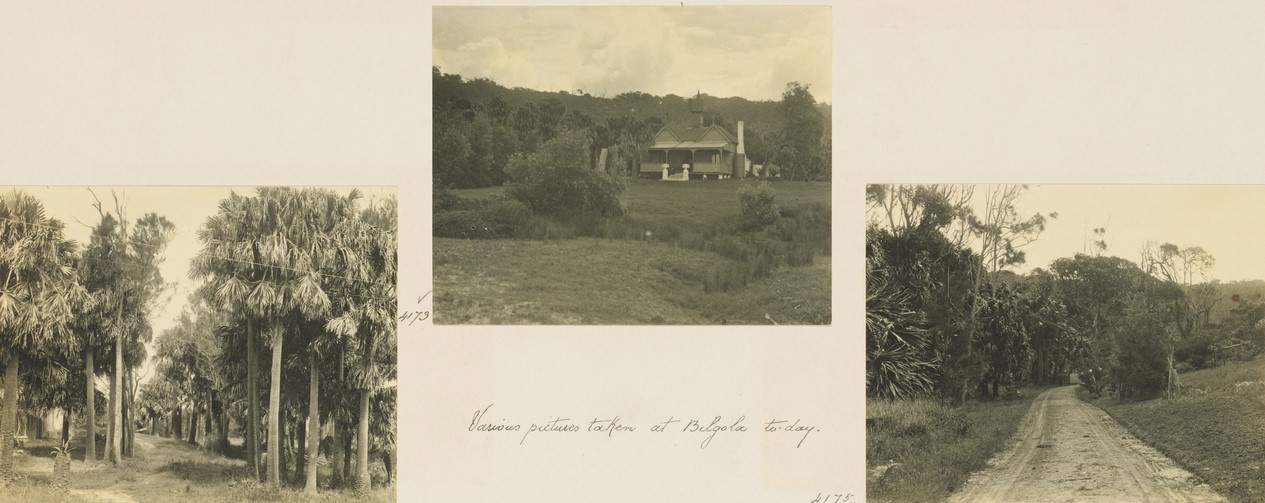
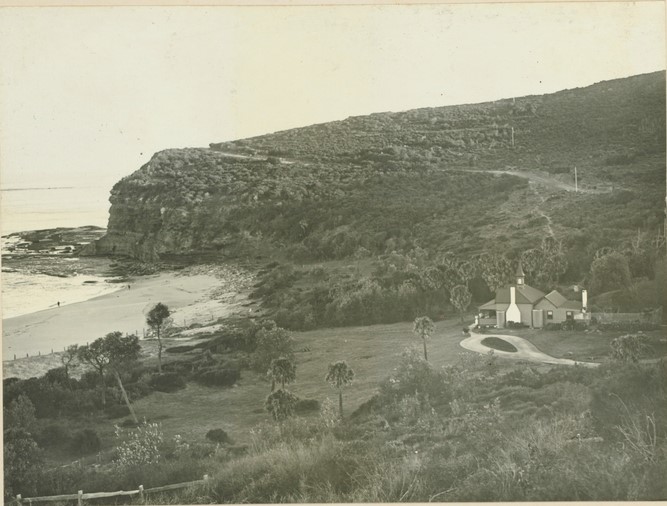
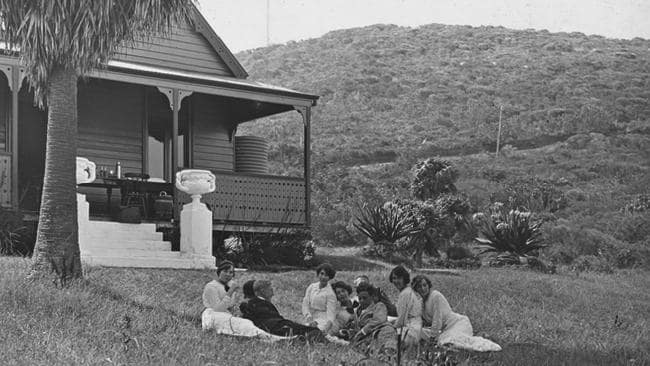
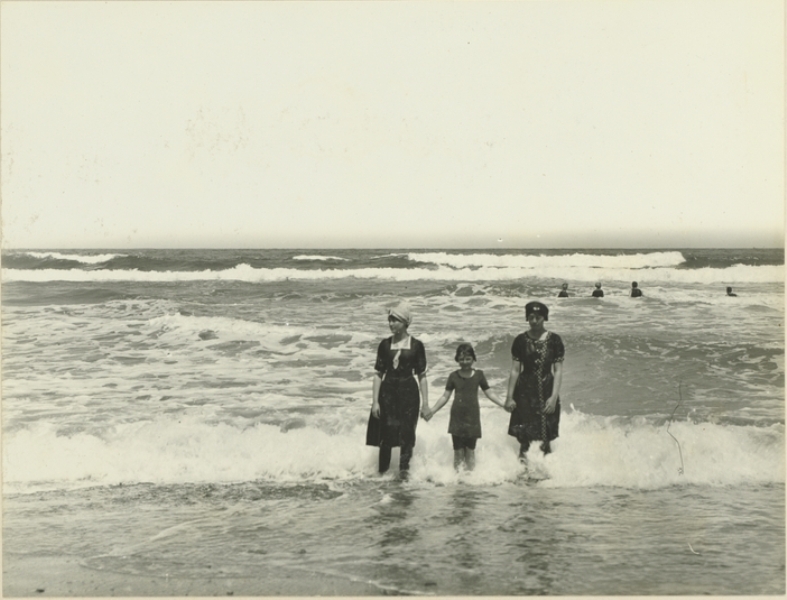
Members of the Allen Family surf bathing at Bilgola, Sunday 30th of November, 1913, Pic a3292030h courtesy State Library of NSW.
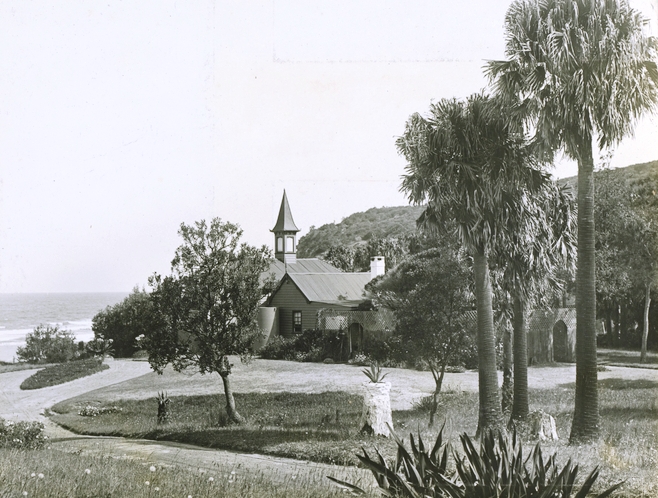
Above and Below from November, 30 1913 From album 63 of Allen family albums, courtesy State Library of NSW.
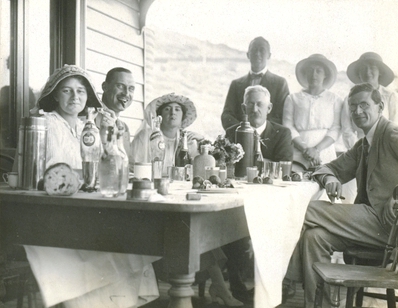
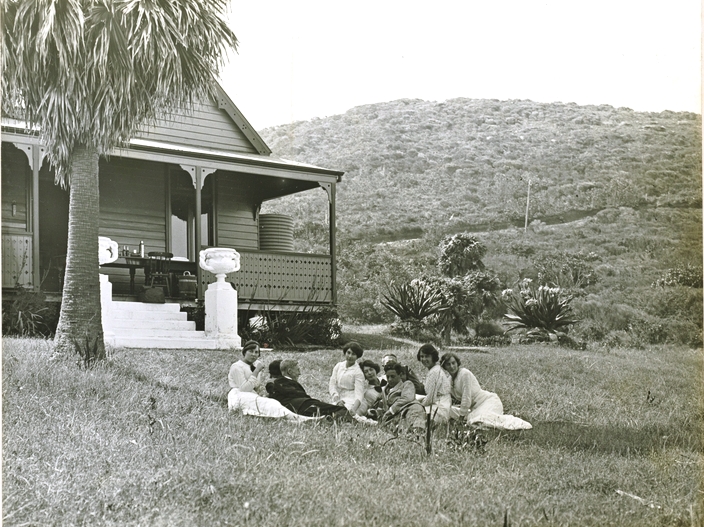
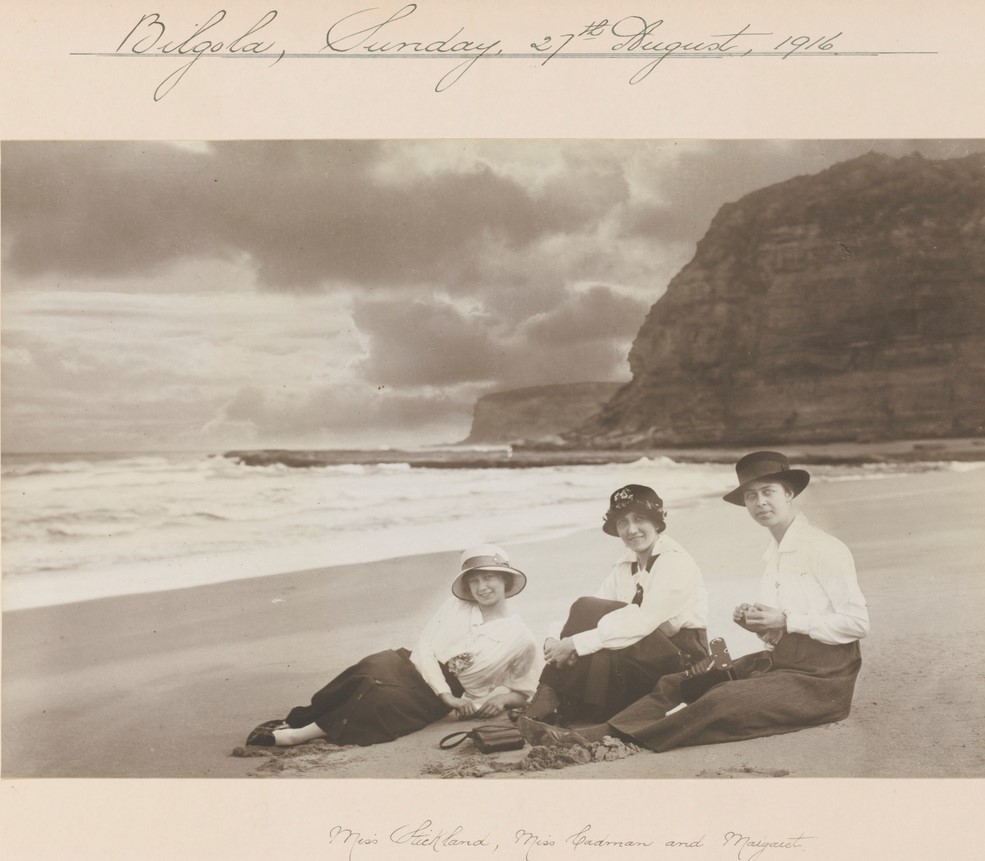
From Allen Family albums, Image No.: a3295023h courtesy State Library of NSW
Tony Dawson and Anne Spencer's research indicates it was Hannah Maclurcan and Robert Lee who, as tenants in common, purchased almost half the lots in the estate. They were married in 1931, but it is in Hannah Maclurcan, the hotelier who achieved fame for her Australian equivalent to Isabella Beeton’s ‘Book of Household Management’ (better known as ‘Mrs Beeton’s Cookbook’), that many remember as associated with Bilgola. Hannah published her book Mrs Maclurcan's Cookery Book: A Collection of Practical Recipes, Specially Suitable for Australia in 1898.
In 1901 Hannah moved to Sydney with husband Donald and in April 1903 took over the management of the Wentworth Hotel on Church Hill (now Grosvenor Street), near Wynyard Square. As a married woman, she could not hold the lease but it was her money, and money advanced under a bill of sale, that was used to purchase furniture and stock for the hotel. When her husband Donald Maclurcan died less than three months later, Hannah became eligible to hold the lease but it was not until 1905 that this was acknowledged through a friendly action in the NSW Equity Court. [3.]
Hannah Maclurcan transformed the Wentworth Hotel into one of the most fashionable establishments in Australia. By the time of her Bilgola purchase Hannah was into her sixties and wanted a quiet place away from the hustle and bustle of running a hotel.
Bilgola fitted the bill perfectly and Hannah erected a new house there to serve as a retreat and for entertaining her private guests. She spent a very large amount of money on the gardens, and filled the house with curios and antiques acquired during her regular trips to the United States. Members of the Royal Australian Historical Society who visited there in 1926 were impressed with the beauty of the place. [3.]
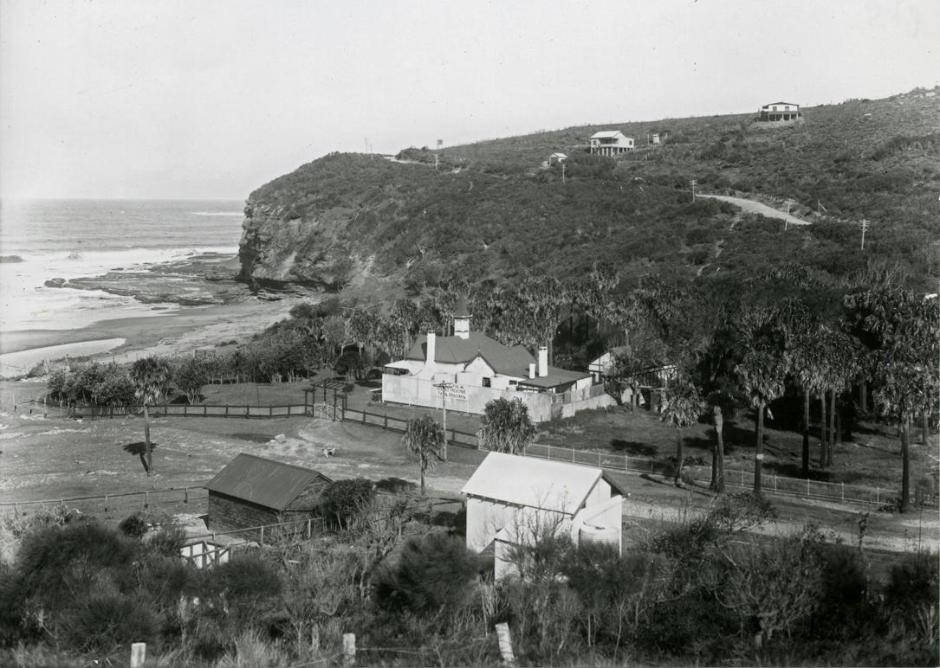
Bilgola Cottage - circa 1925 - same picture as a State library of NSW GPO picture dated 1925 - picture courtesy Anne Spencer. State Library of NSW records state: Mona Vale views: a corner of Bilgola Level of Description- Series Date of Work 6/1925 Type of Material Graphic Materials Call Number Government Printing Office 1 - 15677
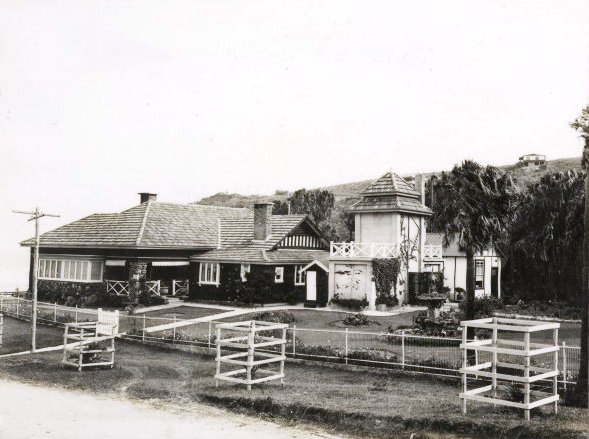 John Maclurcan, great grandson of Hannah Maclurcan, sent Pittwater Online an email in December 2013 regarding his great grandmother:
John Maclurcan, great grandson of Hannah Maclurcan, sent Pittwater Online an email in December 2013 regarding his great grandmother:
"Hannah did not work for her father in Townsville when she was 15 (1875). Her father never ran a hotel in Townsville. From 1861 to 1870, he was based in Toowoomba from where he moved to Brisbane. In 1875, he put her to work in his hotel in Sandgate. Hannah did not work in Townsville until 20 years later when she and my great grandfather ran the Criterion Hotel, late to take over the Queen's."
Right: National Library of Australia pic; 24768467. Bilgola House 1928, Samuel Wood
Here is just one of the references which confirm the family records:
Sunday, 27th November, 1921 – Sunday Times: Mrs. Maclurcan is pictured to-day. She is so well known in Sydney's social and business circles that she scarcely needs an introduction. She started her remarkable business career with her father, and actually managed his hotel at Sandgate when she was 16. Mrs. Maclurcan has a remarkable gift for organisation, as anyone who has been concerned in charity functions at the Wentworth Cafe will testify. The functions arranged under her direction give so little trouble to the executive members that they can enjoy the parties just as heartily as the patrons who have not helped in getting them up. Mrs. Maclurcan goes abroad periodically to glean new ideas for the running of the cafe. She is now directing the enlargement of the beautiful ballroom, and expects it to be in readiness for the Christmas and New Year celebrations.
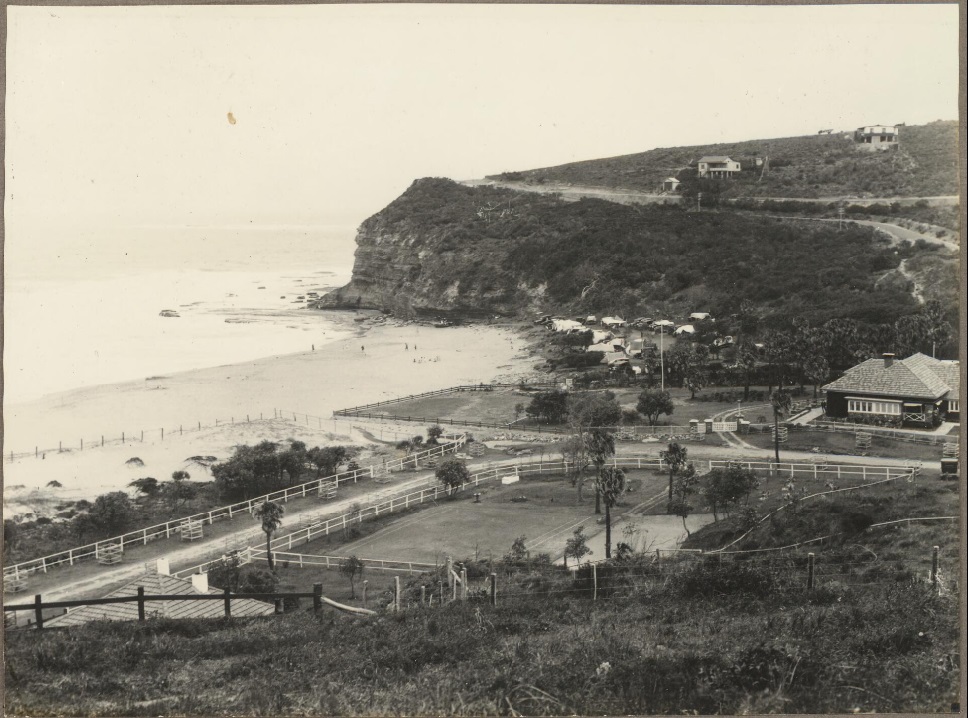
'View of Bilgola from the hill' Bilgola 1930, courtesy National Library of Australia, Picture an24768552-v. Tents can be seen where the clubhouse now stands and the Norfolk Pines have only just been planted.
Hannah's son Charles an amateur radio enthusiast who, in 1910, transmitted the first radio signals from the roof of the hotel, was also well known and it is his antenna that can be seen in this 1930's photograph of the new Bilgola House:
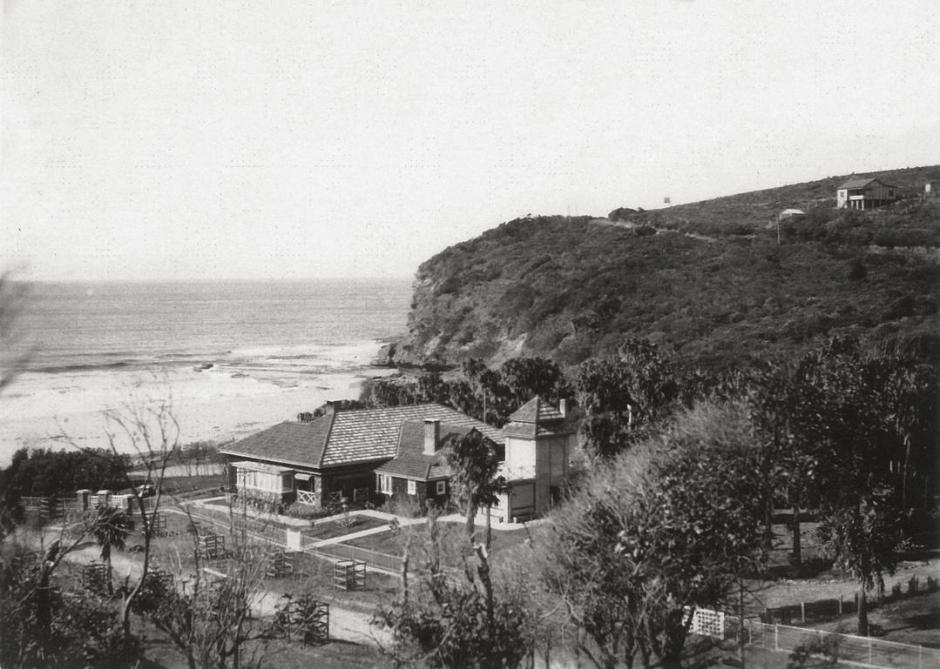
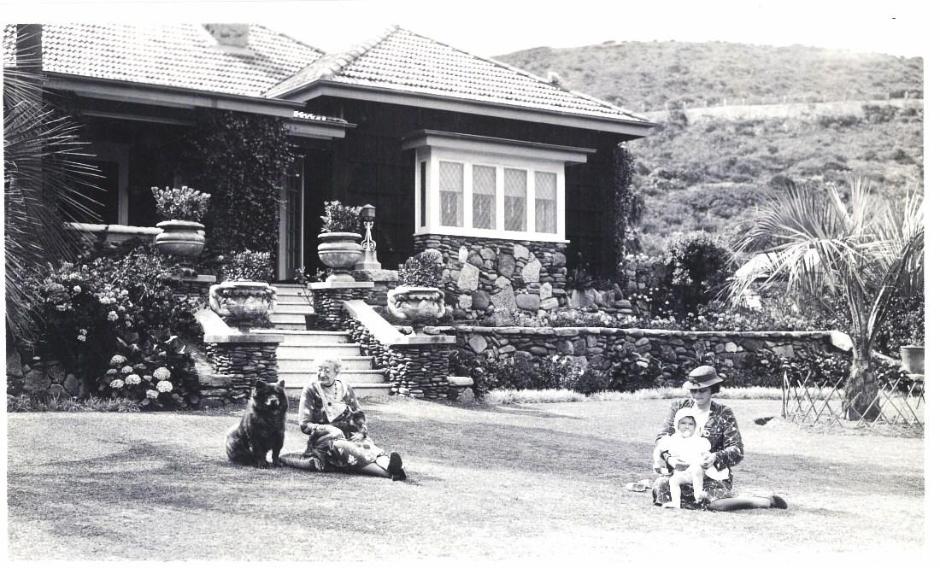
Hannah passed away in September 1936. Her home at Bilgola was placed on the market by January 1937 while a 1938 advertisement gives us a description of:
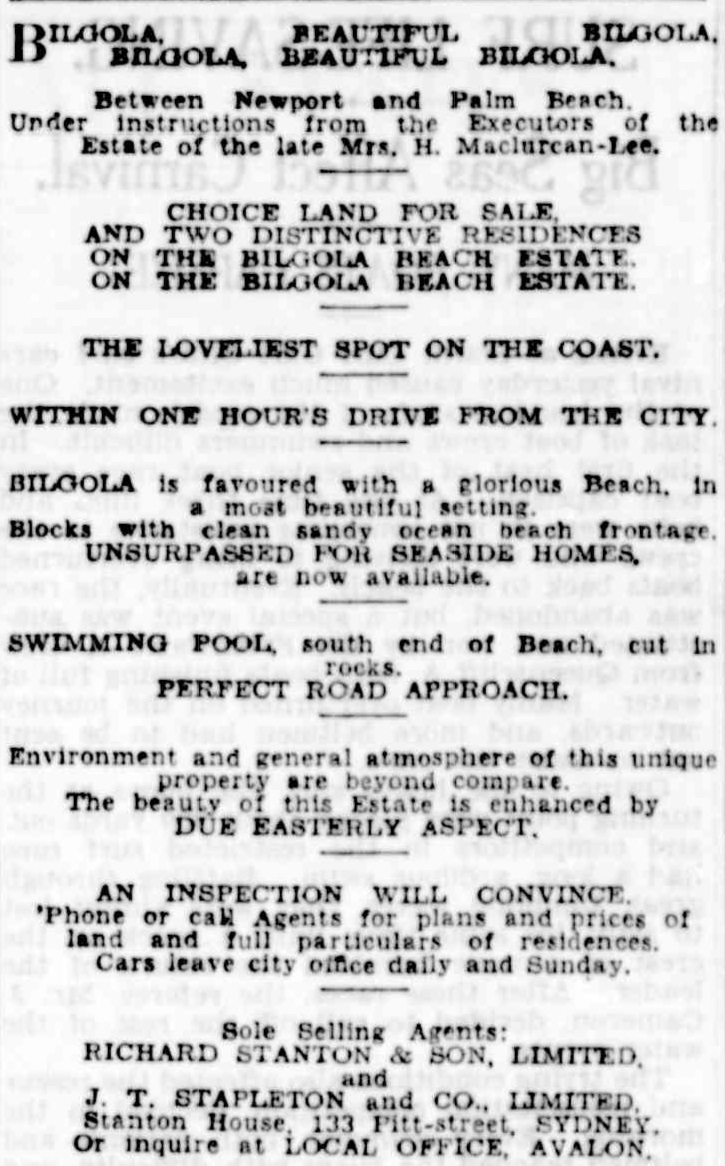
BILGOLA. A MAGNIFICENT SEASIDE RESIDENCE SURROUNDED BY BEAUTIFUL GROUNDS WITH PRIVATE SURFING BEACH. BILGOLA HOUSE the home of the late Mrs. H. Maclurcan Lee is now offered for sale with Instructions from the Executors at a price considerably below its original cost. It is a most attractively designed Residence faithfully built very well planned with all modern equipment and appliances. The accommodation consists of a spacious lounge room with open brick fire-place, five bedrooms, the principal bedrooms are connected with hot and cold water, maid's room, three bathrooms, two sleeping-out verandahs, a well fitted kitchen, pantry, ample cupboard space, hot water service, electric light private supply of soft water connected, and now city water Is also available.
THE GROUNDS, which have an extensive frontage of about 303 frontage to Bilgola Avenue with a glorious outlook. They are very imposing and are an important feature of this property, being arranged in gardens, lawns, shrubs, rockeries, large aviaries, a shady palm plantation with its own golden beach in front. “Bilgola House” is undoubtedly in the picturesqueness of its outstanding its surroundings. Inspection by arrangement with Sole selling Agents RICHARD STANTON A. SONS PTY LTD, J.T. STAPLETON PTY LTD Stanton House 133 Pitt St Sydney Or over week end enquire at LOCAL OFFICE AVALON ph y9155. Advertising. (1938, January 1). The Sydney Morning Herald(NSW : 1842 - 1954), p. 20. Retrieved from http://nla.gov.au/nla.news-article17426157
Anne Spencer and Tony Dawson record that:
the house that offered such comfort to W B Dalley, Oswald Watt, Hannah Maclurcan and others is, sadly, no longer with us. It was demolished in 1989, together with all the outbuildings, despite having been listed under Warringah Council’s draft provisions for the control of heritage buildings. The intention of the then owner was to erect townhouses on the site but community protest led to the rejection of this and subsequent plans.
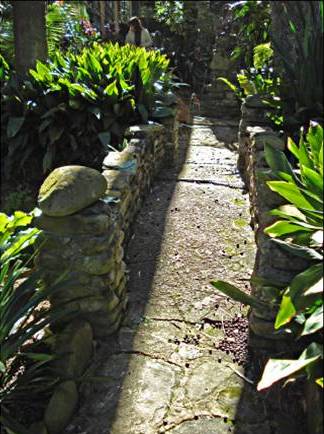
Stone bridge over Bilgola Creek
Today, five houses occupy the site and the present owners have been careful to preserve many of the heritage items – a grove of tall cabbage-tree palms, trees lining the avenue, the old entrance posts, dry stone walls bordering the creek, small bridge structures, lined garden beds, pedestals, wells, and even the flower urns on which the carved heads of Henry Parkes, John Robertson and William Dalley can still be discerned.
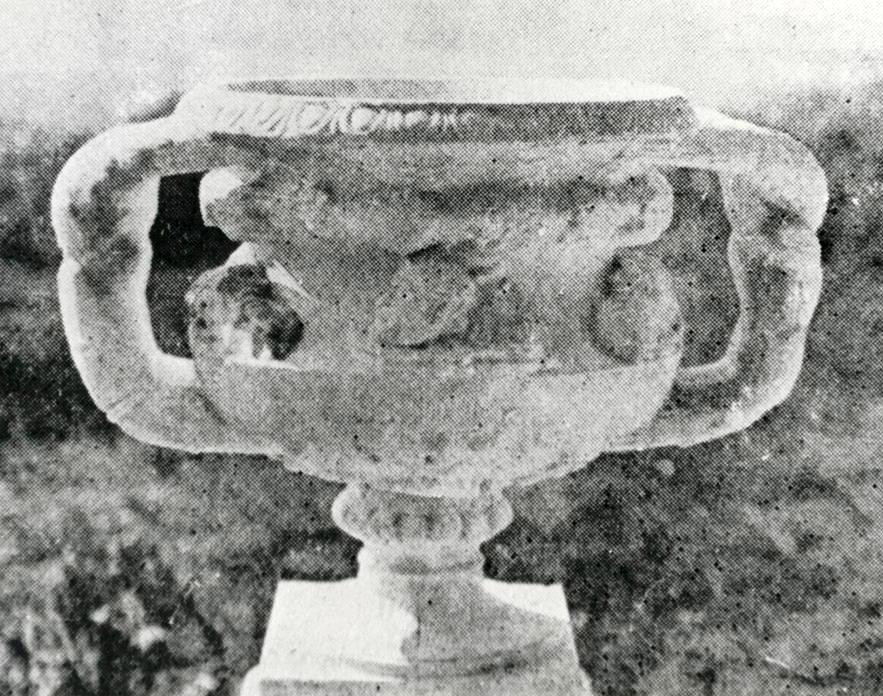
Flower urn revealing one of the carved heads. Anne Spencer's image - formed part of her and Tony Dawson's article [3.]
Tents Beside the Sea
BABEL OF BROGUES Ex-Service Women's Camp
BILGOLA'S SURF AND BLACKBERRIES
THERE are fifteen of them — there will be forty of them — lasses from Lancashire, Yorkshire, Devonshire, Northamptonshire, Che-shire, and goodness knows how many other "shires" — camped on the bit of green grass that slopes down to the yellow sands of Bilgola Beach. Brogues and burrs float curiously on the Australian air. They are wood-nymphs and mermaids together these girls; it is difficult to discover where the dryad of the bush gives place to the rider of the sea.
Yet one moment "Smiler" — she was known all over France in the days of the war as "Smiler"— is pirouetting in a pair of sandshoes round a gum sapling, her white teeth stained purple with the juice of blackberries, and the next instant she is dashing into the surf, her long brown hair streaming in the wind. Smiler is one of the many W.A.A.C.'s — members of the ex-Service Women's Club — who are in camp at Bilgola Beach. For a fortnight they are for-getting that in their Australian jobs as domestic assistants there is such a thing as a 6 a.m. alarm clock to call attention to pots and pans, and brooms and dusters. The only alarm clock is the boom of the surf against the rocks, and the single frying-pan makes melodious music as it swings and bangs against the tree to which it is hung. There are four big roomy tents, and the campers are in charge of Miss Norah Dickson. There is no routine day; every girl plays round and enjoys herself as she wishes. Many of the girls never knew what surfing really was till they came to Sydney, and in camp they are living the days in their bathers, changing into the dresses of convention only for the evening meal.
These English girls are getting a good cloak of Australian tan, but in some cases it is a tan which survives only after a first coating of red. The woman's touch is evident throughout tho camp. Palm fronds and bunches of leaves decorate every tent, and the centre pole of the "dining-room" is hidden by masses of greenery, The table boasts a jam jar stuck with red gum tips, but no silver vase ever looked more beautiful. The spare boxes, which act as serveries, are covered with odd bits of muslin, and even the plank-upon-boxes, which serves for half-a-dozen chairs, is set square against the table. Dozens of dresses upon coat-hangers are the chief adornment of the "bedrooms," If you except the pieces of mirror tied on to the canvas. Femininity is also proclaimed by the many pairs of gloves, washed, and pinned up to dry on the outside of the canvas.
The kitchen is a place of mystery. Last year the Boy Scouts helped to build an earth oven — a mound like a small ant-hill, with a tunnel running up to it — and this year the oven only needed a little building up to be ready for action. All sorts of wonderful things happen round about that mound. The girls have had varied experience of field cookery, and it is marvellous what they can do with food. Bread was baked yesterday morning, because the baker forgot to call, and the most delicious cakes were turned out for afternoon tea. The principle of baking is an involved one, needing small tins, with lids and kerosene tins without lids, but the business of frying is much easier. The simplest method of all has the most appetising result, and naturally finds great favor with a troop of hungry girls. There is nothing to equal the flavor of chops or sausages cooked on sticks held over the fire, washed down with plenty of billy tea.
These English girls are rapidly acquiring a taste for campers' fare, and the breezes out-of-doors give zest to even the appetite inclined to flag. Since the girls went in camp their number has been increased by "Waac," who introduced himself the day of their arrival. The shaggy terrier has declared him-self delighted with the company and surroundings, and refuses to leave. Realising, no doubt, that he is the only man about the place, he has constituted himself Watchman-In-Chief, and guards towels, hats, and shoes with admirable patience. He has become the pet of the camp, and there are all sorts of arguments foreseen for the time when it comes to deciding who shall remain the guardian of "Waac."
The four white tents by the sea will flap their canvas until February 15, when for a fortnight many girls will have had their first taste of holiday camping. Some of them camped in France, but that was different. Miss Dickson says the second camp has been much more successful than the first, and the third — next year— is expected to eclipse everything that has happened this year. Tents Beside the Sea (1923, February 11). The Sun (Sydney, NSW : 1910 - 1954), p. 3 (WOMEN'S SUPPLEMENT). Retrieved from http://nla.gov.au/nla.news-article223464813
THE CALL OF THE OUT OF DOORS
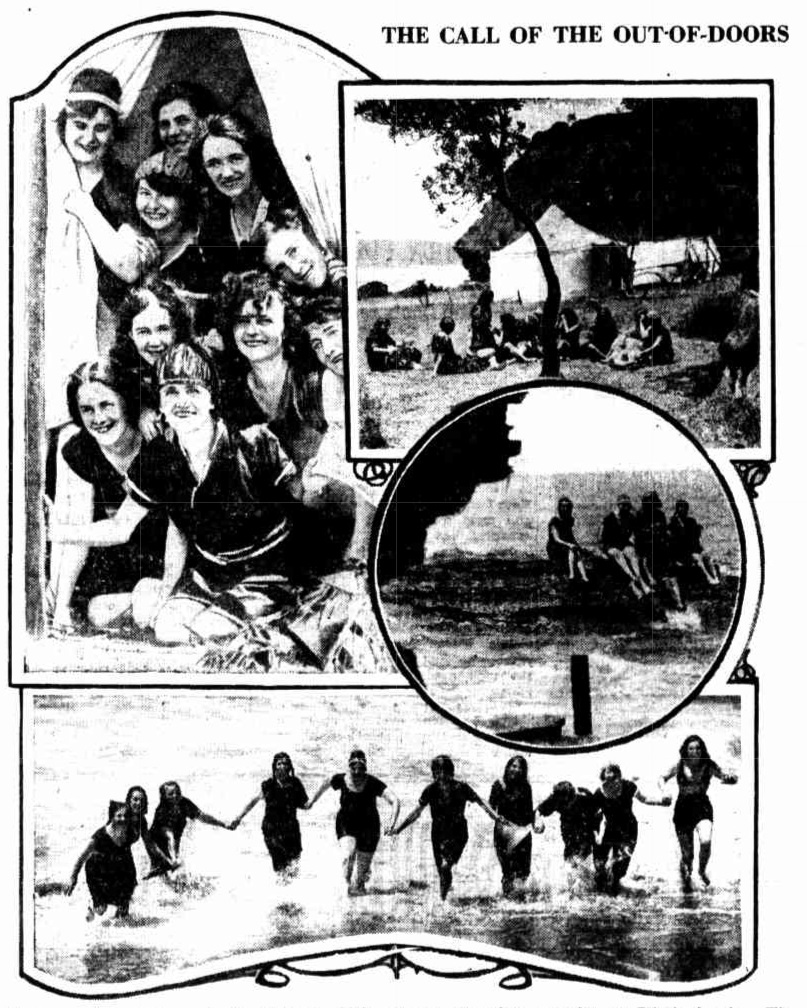
- Happy members of the ex-Service Women's Club enjoying Australian camp-life at Bilgola beach. The girls are all English, and sewed as W.A.A.C.S. during the war. THE CALL OF THE OUT- OF- DOORS (1923, February 11). The Sun (Sydney, NSW : 1910 - 1954), p. 3 (WOMEN'S SUPPLEMENT). Retrieved from http://nla.gov.au/nla.news-article223464816
COUNTRY WOMEN
SEASIDE CAMP SUGGESTED
So that the country women who toil further inland may have a holiday by the sea there is a proposal afoot to establish for them a camp between Newport Beach and Dalley's cottage, which belonged to the late Colonel Watt.
Mr. Wearne, Minister for Lands, visited the proposed site yesterday, accompanied by Dr. Arthur, M.L.A., and members of the Country Women's Association. The Crown owns 65 acres of land in the vicinity, and it is thought that the Minister will be willing to grant so much as is requisite to the scheme, at a nominal rental. There is some, questioning as to whether or not it is too far from the city, however. The Minister expressed himself as cordial towards the project. It has been arranged that members of the association shall interview him further on the subject at 2 p.m. on Wednesday. COUNTRY WOMEN (1923, September 24). The Daily Telegraph (Sydney, NSW : 1883 - 1930), p. 4. Retrieved from http://nla.gov.au/nla.news-article246070345
WOMEN'S COLUMN.
SEASIDE CAMP.
On Sunday several members of the Country Women's Association, including Dame Alice Chisholm, Mesdames Hazlett, H. C. McIntyre, Kierie, Tindal, Arding Thomas, Osborne, E. Nyland, Fraser-Clark, Nest, Carpenter, Weaver, Chapman, Henderson, and Miss Warby Lugsdon, and many others representing the Cumberland branch, and the Manly and Mosman sub-branches of the association, paid a visit to the proposed site of the first seaside camp. Mr. W. B. Wearne, M.L.A. (Minister for Lands), also accompanied the party, as the area proposed belongs to the Crown. It is at Bilgola Bay, just north of Newport, and is one of the most beautiful situations Imaginable.
Mr. Wearne made the very generous offer of an area of about 30 acres, including the beach frontage, to the association. It was considered by some members that the site was too far from Sydney, but in view of the impossibility of getting a sufficient area nearer town, and the ideal character of the site, which would be reserved for all time for the benefit of the people out back, there was a general feeling that Mr. Wearne, offer should be accepted at once.
The Minister Invited the ladies present to attend at the Lands Department on Wednesday, at 2 p.m., when he would be in a position to Inform them if there were any other areas of Crown lands on the coast near Sydney which would be suitable for camp purposes. WOMEN'S COLUMN. SEASIDE CAMP. (1923, September 26). The Sydney Morning Herald (NSW : 1842 - 1954), p. 9. Retrieved from http://nla.gov.au/nla.news-article16095915
GETTING A SITE FOR THE SEASIDE HOMES
On the assumption that the better the day the better the deed, Dame Alice Chisholm accompanied by representatives of the central executive of the Country Women's Association, and by a fine representative from her own branch and the sub-branches of Manly and Mosman, went down to Bilgoola to inspect the site for the suggested seaside home.
There they were met by Mr. Wearne, Mr. and Mrs. Weaver, Dr. Richard Arthur and other representative people, and the idea was thoroughly gone into. The general impression seems to have been that the site, while in itself most lovely, was too difficult of access to serve the purpose, and so after a picnic lunch and a gipsy tea the company returned to town, having heard Mr. Weaver upon the subject, and having accepted an invitation from that gentleman to meet him at the Lands Office on Wednesday afternoon, at 2 p.m., when he would place before them all particulars of land available at Narrabeen, Collaroy, Manly and Maroubra. The ladies and gentlemen present express themselves as most grateful for the helpfulness, courtesy and keen personal interest evinced by the Minister. WOMEN IN THE COUNTRY AND THE CITY (1923, September 28). The Sydney Stock and Station Journal (NSW : 1896 - 1924), p. 1 (STOCK & STATION JOURNAL Magazine Section). Retrieved from http://nla.gov.au/nla.news-article128178558
COUNTRY WOMEN'S ASSOCIATION SECURES CROWN LAND FOR HOLIDAY HOMES

One of the most practical movements yet undertaken with the object of brightening the lives of the poor of the outback stands to the credit of the Country Women's Association. This is a scheme to erect cosy cottages on Government grand land so that every year they may be occupied for a few weeks by country families free of rent. A deputation, introduced by Mrs. H. C. Mclntyre, treasurer of the Association, and Dr. Arthur, waited on the Minister for Lands, Mr. Wearne, on Wednesday, made representations to him, and fully outlined the proposals.
The Minister granted three acres of Crown land at Griffiths Park, near Palm Beach, and the Association Intends to erect about six little homes on the ground, hoping in the meantime for aid from patriotic and humanely-principled men and women in the swelling of the funds for so laudable an object. A start will be made in the work of clearing the ground within a few weeks. The Voluntary Workers will assist.
The Association intends to establish similar holiday settlements at various resorts such as Coff's Harbor. It is endeavoring also to secure the grant of an additional 60 acres at Newport, nearby the residence of the late Lieut.-Colonel Oswald Watt. On this site, it, it proposed to erect homes to accommodate 60 families.
Representations are also to be made to the Railway Commissioners for a reduction in fares from the country to the several resorts. Lady Edgeworth David has suggested to the Association that the homes should be named in memory of the pioneer women of the outback — women who have done equally as much for the country as the men. The suggestion will be adopted. COUNTRY WOMEN'S ASSOCIATION SECURES CROWN LAND FOR HOLIDAY HOMES (1923, September 30). Sunday Times (Sydney, NSW : 1895 - 1930), p. 1. Retrieved from http://nla.gov.au/nla.news-article120536628
SEASIDE CAMP FOR WESTERNERS.
TO THE EDITOR OF THE HERALD.
Sir,-In your Issue of Thursday last, the 12th Instant, I notice that a seaside camp is proposed to be built at Bilgola for the Western boys. As one who is very intersted in the excellent Idea, which I hope will now soon take some practical form when in such good hands as Dr. Arthur and Mr. Hunt. I, however, suggest that some safer and more convenient beach than Bilgola will be selected. The sand on this beach is exceptionally coarse and loose, and experienced surfers are unanimously of opinion that this beach should be classed as generally unsafe. I have surfed for 25 years almost continuously, and know practically every beach from Victoria to Queensland, and have particularly noticed on scores of occasions that Bilgola beach is very dangerous when other beaches are quite safe. It only needs a few accidents, and the camp will immediately get a bad name, and the whole project be a failure.
Country boys who are to be sent to this camp would naturally prefer a less expensive and more get-at-able place than Bilgola. People from outback want for a change not only surfing but other amusements, which can be provided in or near the more closely settled areas, such as Narrabeen, Deewhy, or Cronulla. Another great disadvantage of Bilgola is that country boys would need, in addition to the surf, smooth water to learn to swim. Now this is readily obtainable at either of the three above mentioned places. In which I might say I have no interest whatsoever.
I am, etc. H RUSKIN ROWE. March 18. SEASIDE CAMP FOR WESTERNERS. (1925, March 19). The Sydney Morning Herald (NSW : 1842 - 1954), p. 8. Retrieved from http://nla.gov.au/nla.news-article16205460
BILGOLA BEACH.
PROPOSED RESUMPTION OF FORESHORES.
Mr. Wearne (Minister for Lands) yesterday visited Bilgola Bay, north of Newport, and inspected a site which had been proposed as a seaside camp tor bush children. The Minister decided that the spot was too far distant from transport and other facilities, and that it was also unsuitable owing to the absence of life-saving apparatus. It was arranged that Dr. Arthur and Councillor Parr (Shire President) should confer regarding another site at Narrabeen.
The Shire Council asked the Minister to reserve the foreshores of Bilgola Bay and to reserve for park purposes the land be- tween the beach and the eastern side of the main road. It was estimated that the resumptions would cost about £8000.
Mr. Wearne said that the Government should not be expected to bear the cost of the resumption. He suggested that the Shire Council should approach the owners of the land on the western side of the road and endeavour to induce them to contribute one third of the cost. The Shire Council, he thought, should contribute one-third, and on those conditions the Government would consider providing the balance. BILGOLA BEACH. (1925, March 23). The Sydney Morning Herald (NSW : 1842 - 1954), p. 10. Retrieved from http://nla.gov.au/nla.news-article16196468
MR. WEARNE AT SEASIDE
CONSIDERS SCHEMES
Mr. Wearne, Minister for Lands, visited Bilgola, Newport, and Narrabeen yesterday, to go into various schemes placed before him. The proposal to establish at Bilgola a seaside camp for bush people, which is being forwarded by Dr. Arthur, was rejected by the Minister. He said that the site was too far from the tramline; that sufficient safeguards for children against the dangers of the surf were not available; and that the bush round about could not appeal to those who had come to the city for a change.
The president of the Warringah Shire, Cr. Parr, promised to confer with Dr. Arthur on a proposal to provide for the camp an area of land at Narrabeen. The Minister subsequently inspected Islands on the Narrabeen Lake, which it is proposed to form together into an area of about eight acres for a park. Mr. Wearne promised to carefully consider the proposal.
At Newport Mr. Wearne was asked to resume land along the beach to give a clear frontage and park area. The Minister said he was willing to reserve the foreshores from Balgowla to Newport, and contribute a certain amount toward the proposed resumption, but the council must call upon owners of land who would receive direct benefit to make a substantial contribution themselves. The cost of the resumption is estimated at from £7000 to £8000. MR. WEARNE AT SEASIDE (1925, March 23). The Daily Telegraph (Sydney, NSW : 1883 - 1930), p. 4. Retrieved from http://nla.gov.au/nla.news-article245265059


Bilgola Headlands: South and North
In 1832 Surveyor Larmer reported that, “The first person that squatted upon the land E of Stream [McMahon’s Creek, Bilgola Plateau and Newport] was Isaac Marsh then in the service of Jeremiah Bryant - he cleared part of the land on the West side of stream for Bryant and on the East side for himself. Michael Sullivan was also employed by Jeremiah Bryant to clear the land W of the Stream.”
Jeremiah Bryant was still living at “Belgoula” at the time of the 1841 census. He purchased 5 acres from Henderson on 2 October 1841 for £5, the same 5 acres being purchased by John Farrell II on 7 January 1848, also for £5. Mr. Bryant died in 1856. [2.]
NEXT TUESDAY, JANUARY 30. at 11.30 a.m.
NARRABEEN. — A Capital Block, for subdivision, MAIN-ROAD AND OCEAN FRONTAGE ; area, 21 1/2 acres, being Lot 25 south subdivision of the Pittwater Estate at Bilgola Head, close to Newport.
PITTWATER.— A MAGNIFICENT SUBDIVISION, as per plan, of 45 Blocks varying in area from about 1 to 75 acres, having FRONTAGES to the MAIN-ROAD, LAKE, and OCEAN. Portion of the Bassett Darley Estate, lying between Barranjoey and Newport, embracing, those' well-known beauty spots, Cabbage Tree, Boat Harbor, and Careel Bay.
The whole of the above properties are being offered under instructions from TRUSTEES DETERMINED TO REALISE. Investors may therefore rely upon the assurance that NO REASONABLE OFFER WILL BE REFUSED.
Plans and further particulars from the AUCTIONEERS, BATT, RODD, AND PURVES, LTD.
Advertising (1900, January 28). Sunday Times (Sydney, NSW : 1895 - 1930), p. 1. Retrieved from http://nla.gov.au/nla.news-article126287413
Block 25 of portion 20 had been bought in 1881 by Charles Edward Jeanneret - the gentleman behind taking over The Florrie as the mail boat and the building of the first Newport Hotel and the wharf (then known as Victoria Wharf) who was part of the George Pile scheme to develop the Marine Township of Newport as that suburb's earlier subdivision.
He passed away from cancer in August 1898 and had been subjected to petitions for bankruptcy leading to his estate being sequestered in 1897.
CREDITORS' PETITION
In the matter of the trustees of the Savings Bank of New South Wales versus Charles E. Jeanneret. Mr Hanbury Davies appeared for the petitioners and Mr Lucas for the respondent. The matter by consent was allowed to stand over for a week. LAW REPORT, (1897, April 6). The Sydney Morning Herald (NSW : 1842 - 1954), p. 3. Retrieved from http://nla.gov.au/nla.news-article14111680
The land did not reach the price asked:
On the Pittwater Estate a block of land, 21 1/4 acres, near the Hole in the Wall and Bilgola Head, with large frontage to the main road, was passed in at £1 17s 6d per. acre. THE PROPERTY MARKET. (1900, January 31). Evening News (Sydney, NSW : 1869 - 1931), p. 2. Retrieved from http://nla.gov.au/nla.news-article117039706
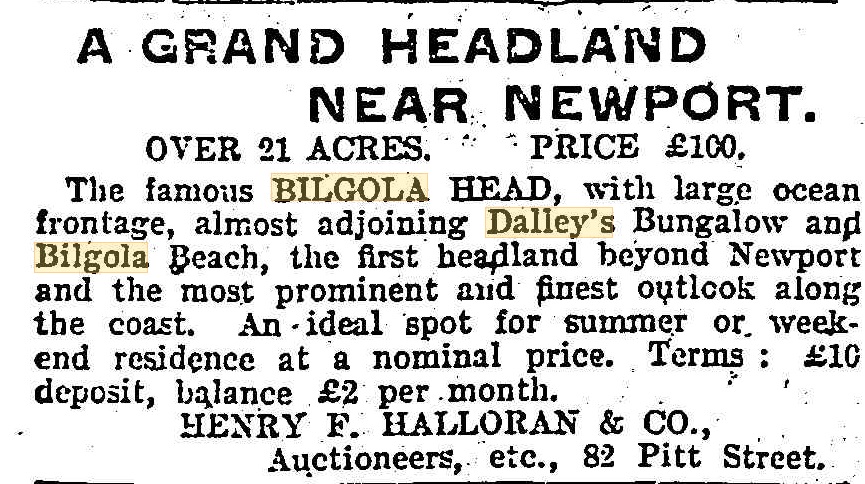
Advertising (1906, June 10). Sunday Times (Sydney, NSW : 1895 - 1930), p. 3. Retrieved from http://nla.gov.au/nla.news-article126569682
Messrs. Henry F. Halloran and Company furnish the following list of sales effected during the winter and report that with the advent of spring a much Improved Inquiry for property of all kinds Is noticeable especially for land at or near the harbour, where a large increase in values is to be expected. They anticipate a busy season, a strong demand, and improving values generally: .... 21 acres at Newport (Bilgola Head), £100; PROPERTY MARKET. (1906, October 2). Evening News (Sydney, NSW : 1869 - 1931), p. 8. Retrieved from http://nla.gov.au/nla.news-article115673646
The south Bilgola - Newport Headland was Crown Land until it was offered for sale - it would seem that this is the lands the Country Women's Association thought may be fit for their good purposes later that same year (see above). One item states there were once 65 acres of Crown Land at Bilgola Head.
Another bringing land under the Real Property Act in the vicinity was:
No. 19,.392. APPLICANT:—William Joseph Hollins, Rozelle. LAND County Cumberland, parish Narrabeen, shire Warringah, 7 acres 3 roods 11 1/2 perches and 15 acres 2 roods 5 perches, on Bilgola Creek, and on a road 1 chain wide leading to road from Manly to Barrenjoey, lot 20 and part lots 17, 18, and 21, Villa Sites, Pittwater Estate, and part 1,200 acres (portion 20, parish), granted to John Joseph Therry; adjoining properties of M. Dowling, A. M; Bowman, W. J. Hollins, F. S. Roberts, C. W. B. King, Humphery, Scales. NOTICE UNDER REAL PROPERTY ACT. (1915, January 6). Government Gazette of the State of New South Wales (Sydney, NSW : 1901 - 2001), p. 55. Retrieved from http://nla.gov.au/nla.news-article227053358
The land sales commenced with:
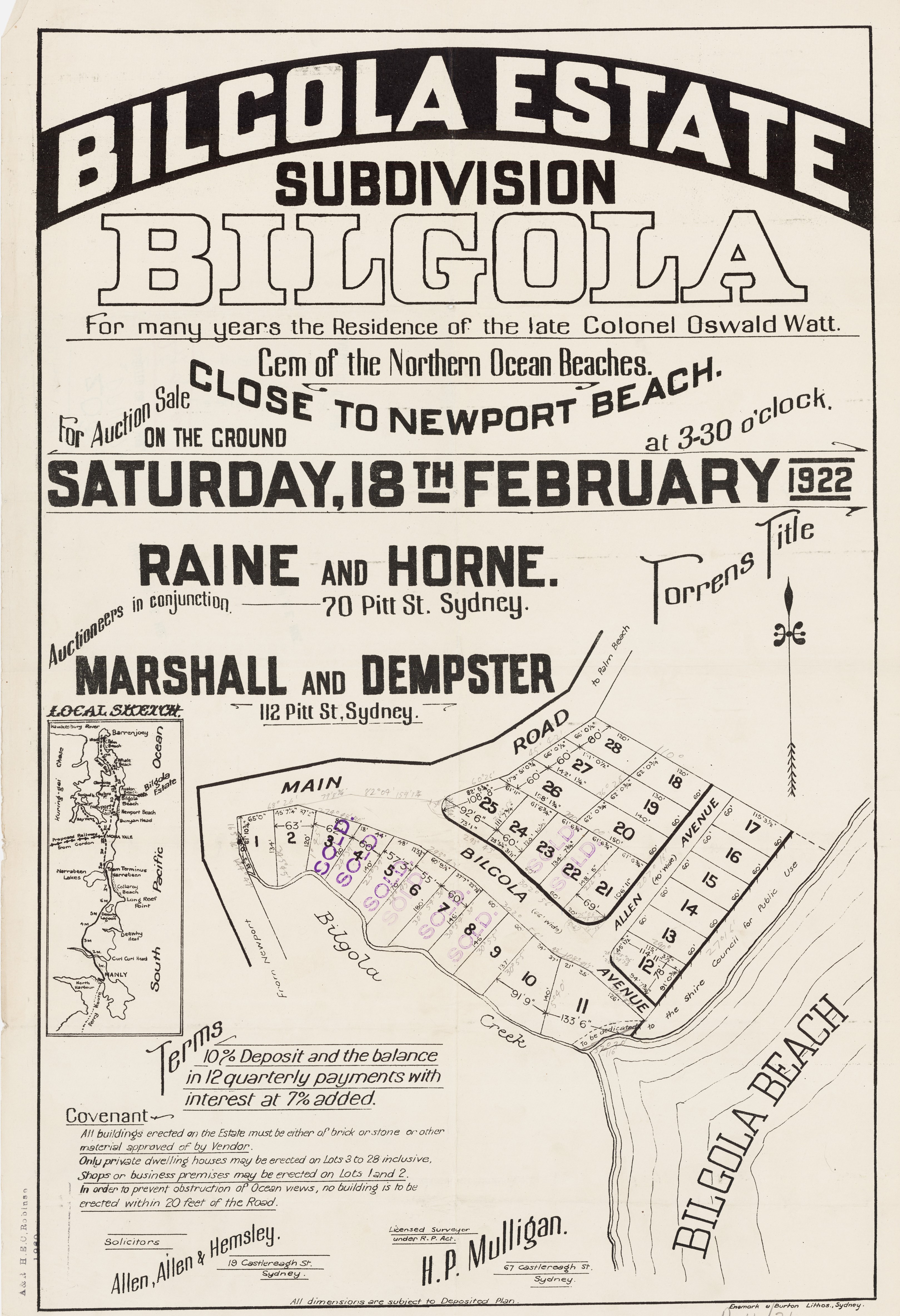
Bilgola Estate 1922, Item c027560037, from Pittwater Subdivisions folder, courtesy State Library of NSW
NEWPORT.-
There will also be a sale of Crown land at Newport, where Messrs. Craig and Herring will submit 24 blocks, which command fine ocean views. MONDAY OFFERINGS (1923, March 31). The Daily Telegraph (Sydney, NSW : 1883 - 1930), p. 11. Retrieved from http://nla.gov.au/nla.news-article245830706
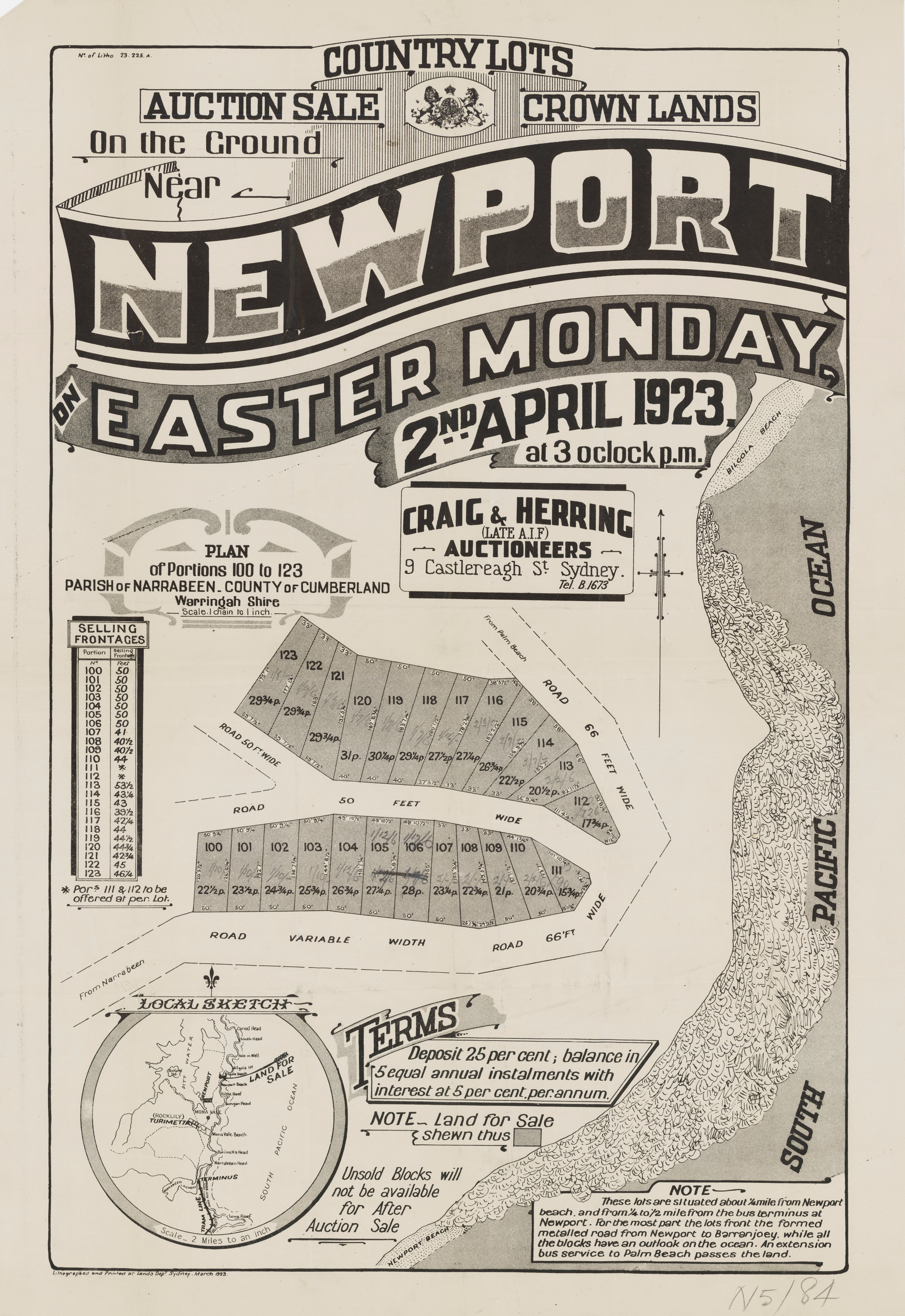
Newport crown land sales 1923 ( Bilgola south headland) Item No.: c050400059, from Newport Subdivisions Folder, courtesy State Library of NSW.
Later on recommendations from buyers formed part of the 1927 advertisements by the new Avalon Beach Estates Limited company (formed by Willmore and Randell) - including RMYC member Stuart Doyle and Harry Ruskin Rowe, who by the time this one appears, has increased his holding to around 50 acres. This is also the commencement of the selling of the blocks of land between Bilgola Beach and Avalon Beach - the Bilgola north headland and where we have the present day A J Small Lookout:
.jpg?timestamp=1566436232554)
.jpg?timestamp=1566436265830)
Advertising (1927, December 4). The Sun (Sydney, NSW : 1910 - 1954), p. 37. Retrieved from http://nla.gov.au/nla.news-article222741251
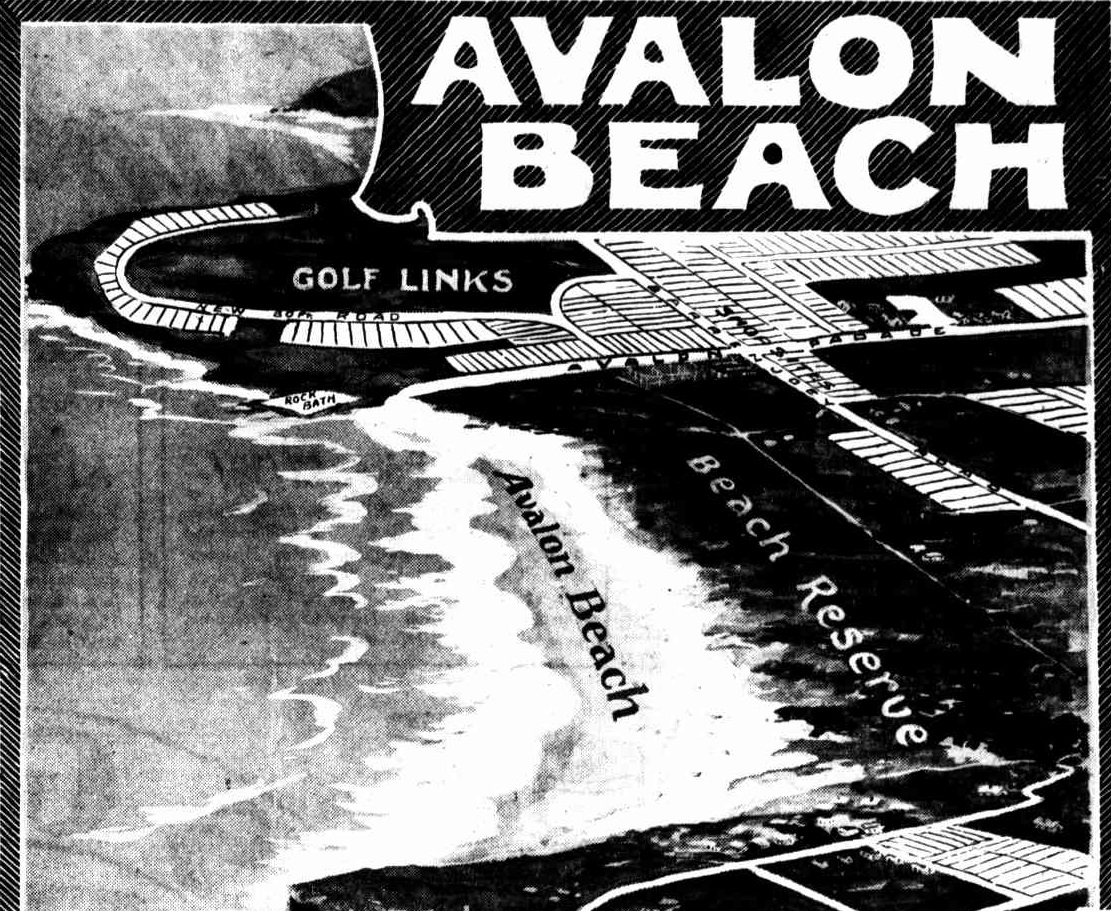
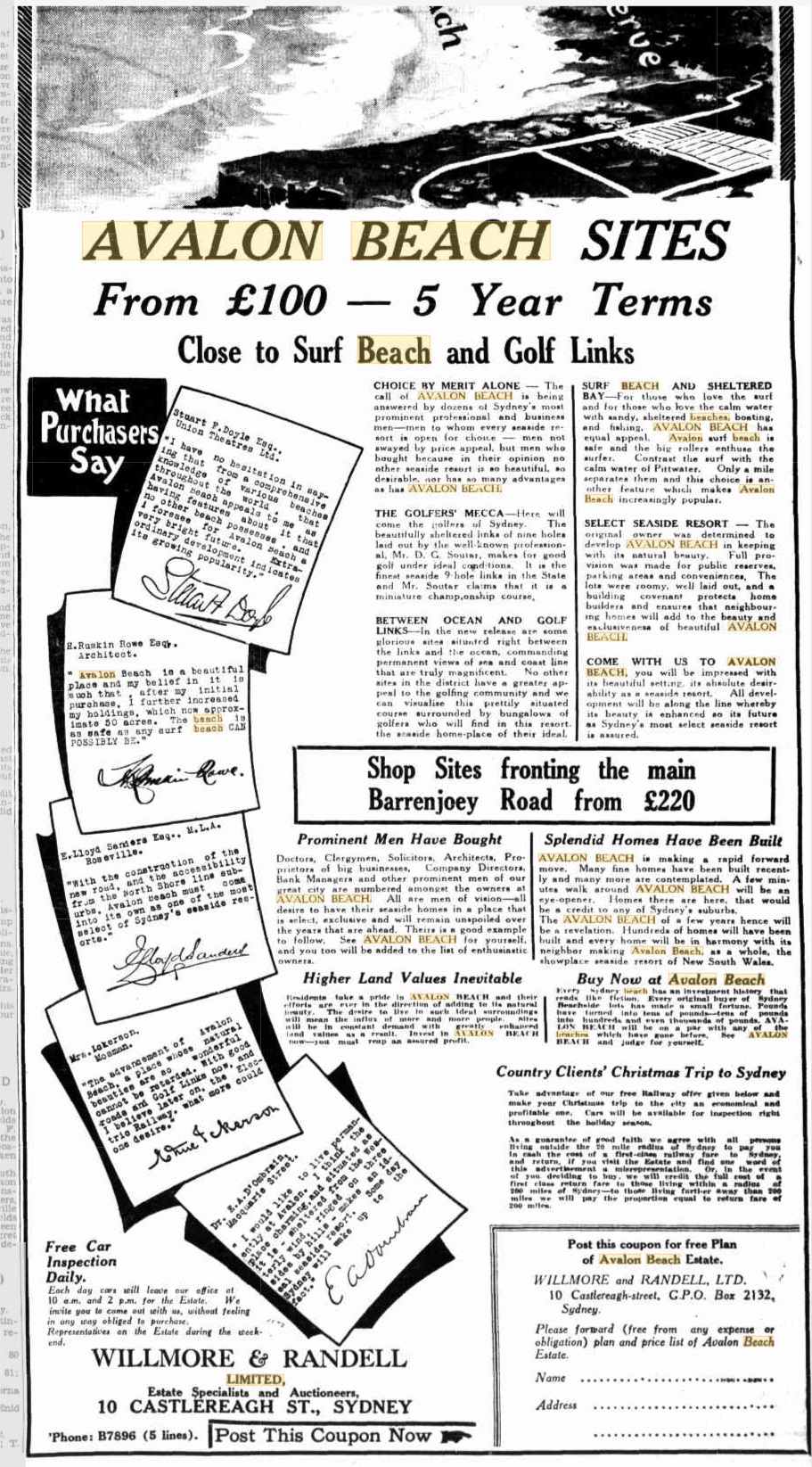
.jpg?timestamp=1566421782227)
Advertising (1927, December 11). The Sun (Sydney, NSW : 1910 - 1954), p. 23. Retrieved from http://nla.gov.au/nla.news-article222740156
Situated right in the heart of AVALON BEACH ESTATE, and encircled by the new 80 foot main arterial road laid down by the Main Roads Board, it is almost at the surf.
Already the authorities have commenced to resume the land necessary for the widening of the main Manly-Newport Road.Minor construction has also commenced, but as the Warringah Shire Council is fully alive to the vital necessity for this work, it is certain to be. expedited. Also attention is being given' to the branch roads, making this area easily accessible from the North Shore Railway Suburbs.
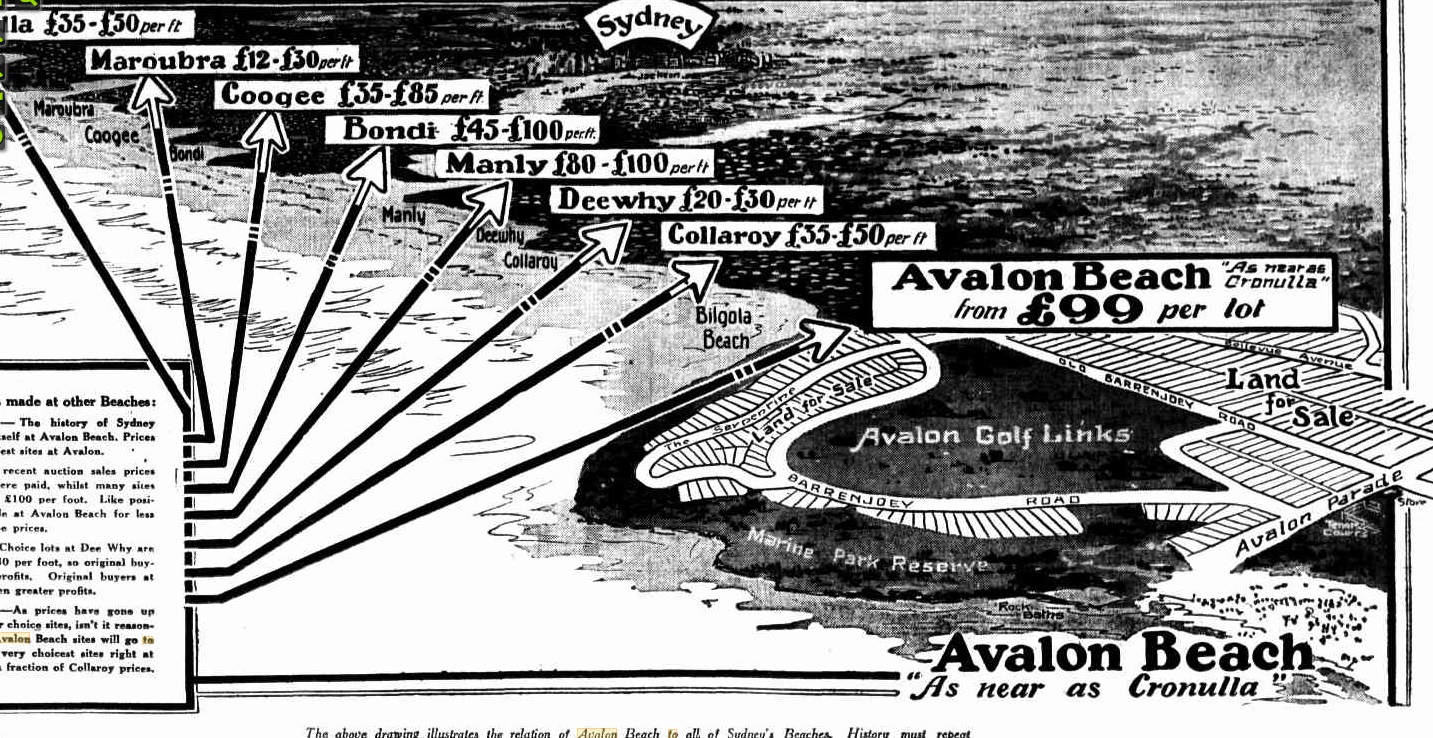
Advertising (1928, June 10). The Sun (Sydney, NSW : 1910 - 1954), p. 37. Retrieved September 28, 2018, from http://nla.gov.au/nla.news-article223212039
And another, which shows the selling of blocks of land on the Bilgola beach side base of Plateau road:
Palmgrove Estate … Fascinating Selection of Sites Including Ocean and Golf Link Frontages
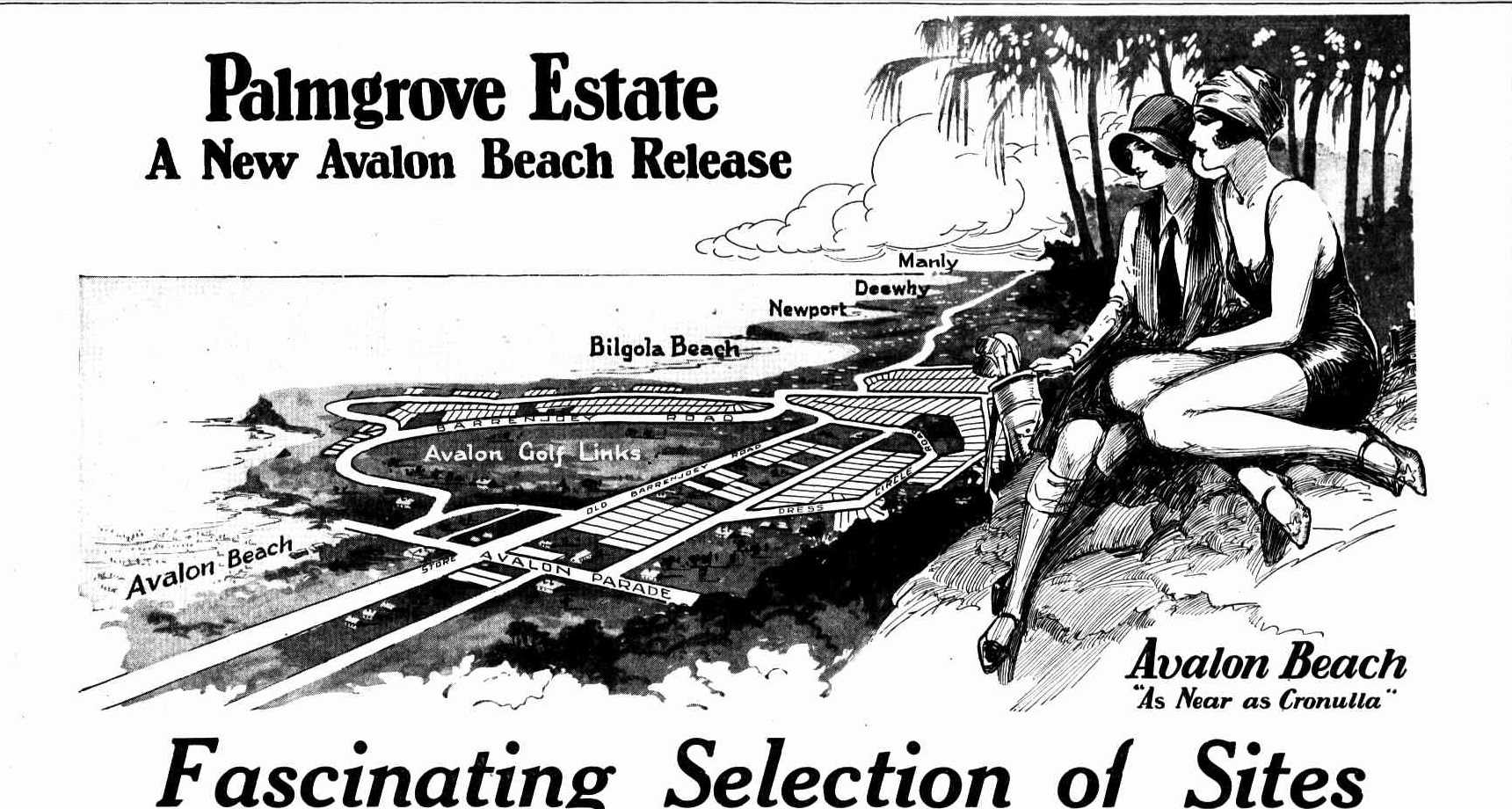
.jpg?timestamp=1537508769710)
.jpg?timestamp=1537508817675)
AS SAFE AS ANY SURF BEACH CAN BE. That is the expressed opinion of H. Ruskin Rowe, Esq., a keen, experienced surfer, and an AVALON BEACH , enthusiast. AVALON BEACH is a magnificent stretch of clean sand and the big rollers gladden the hearts of enthusiastic surfers.
Sites from £99 each Five Year terms A magnificent selection of allotments close to Surf Beaches and Golf Links, and adjoining some of the finest homes at Avalon Beach, are available at attractive prices arid terms. Homesites of individual beauty and gorgeous landscape setting. Faultless sites, generously proportioned, with matchless views of the entire surroundings. Read the list given below.
FINEST 9 - HOLE SEASIDE GOLF LINKS IN THE STATE. the number of players during
THESE SITES WILL BE ALMOST UNPROCURABLE IN A FEW YEARS EVERY YEAR SEES MORE AND MORE PEOPLE TURNING TO THE BEACHES With the opening of the North Shore Bridge AVALON BEACH will become so accessible that many city business men will make it their permanent home place. A forty minute run in their cars and the city will be reached.
The PALMGROVE Sites we are offering at from £99 each, will then be almost unprocurable, even at several times to-day's prices, and as in developed beaches of the past, demand will exceed supply, and the result will be greatly enhanced values. ' You could not ask for a more sound and profitable investment than is offered by PALMGROVE ESTATE to-day. Get further Particulars and arrange to inspect.
BELLEVUE AVENUE. Lot 39 — faultless site generously proportioned, level as a lawn and practically opposite the homes of Messrs. Ivor Youill and W. Todd. Many other fine homes in' the vicinity. Golf Links and Surf Beach quite handy. 10 per cent, deposit. 5-year terms.
PLATEAU ROAD. Lots 165 and 173, two of the cheapest lots in Avalon Beach. Gloriously elevated with views of Golf Links, Surf Beach, and Ocean, that can never be built out. £99 each. 5 years in which to pay. Lot 158 has a wonderful appeal. Entrancing views, faultless position, magnificent setting — a truly charming site for your beach-side home, or a sound and profitable investment. Only £150, on five year terms. 10 per cent, deposit.
THE SERPENTINE. Lot 100, right opposite the magnificent new residence just completed for W. C. Abbott, Esq., occupies one of the most commanding actual ocean frontage positions in Avalon Beach. Two minutes surf — 3 minutes Golf Links. 65ft. frontage, with reserve access along one side. Lot 103, another actual ocean frontage site, overlooking Mrs. Maclurcan's palatial residence, and the whole of the picturesque Warringah Shire Coast as far as Manly. The view from this site presents a picture of marvellous beauty and charm. 10 per cent, deposit. 5 year terms.
BARREN JOEY ROAD. Lot 123, a magnificent site, with matchless views, and only three minutes Bilgola Surf. This increased rapidly. Fror splendidly situated site', has assured prospective value, and values have risen at … and at £170 is exceptional buying. 10 per cent, deposit. 5 year Beach will reach that terms. Lots 133-144 inclusive. An interesting group of 12 fascinating sites, with permanent panoramic views that almost defy description. Beautiful Bilgola Beach settlement, with its palms and native trees, nestles at your feet. £155 each. 10 per cent, deposit 5 year terms.
AS AT EVERY SYDNEY BEACH, BIG PROFITS WILL BE MADE AT AVALON Take the history of every Sydney Beach as your guide. Without exception, tremendous profits have been made — profits beyond those returned by any other form of investment. AVALON BEACH prices, originally ruled "where to-day as high as £100 per foot is asked. That is why history must repeat itself at Avalon Beach to the profit of those who buy to-day. . BONDI. The increased, population is reflected in increased prices. In 1910 £6 per foot— to-day as high as £100 is the value. Avalon Beach will show equally striking - increases. CRONULLA, ' Only a few years ago homesites, right at the beach could be bought for a few pounds per foot. The same lots to-day bring as high as £50 per foot. As Cronulla values grew so will Avalon, MAROUBRA. Before the tram was built sites could be had at almost your own price. To-day £12 to £30 per foot are the ruling rates. COLLAROY. During the past few years value have...week-ends and holidays is evidence of its popularity. A Club House is there now, but provision has been made for the erection in the future of a much larger one; the area for this purpose has been reserved. L - — £15,000
THE NORTH SHORE BRIDGE WILL FORCE VALUES UP. Rapid … growth is inevitable. The great Harbour Bridge will wipe away the present travelling inconvenience. Electric trains will open up the North Shore to a flood of incoming population, and the Northern Beaches will come into their own.
BEAUTIFUL 4-COLOUR ART FOLDER FREE ON APPLICATION.— It contains photographs of magnificent homes, of golfing and surfing scenes, comprehensive drawing showing the relation of Avalon Beach to Sydney and the great North Shore Bridge; and, above all, an exquisite 3-colour painting of Avalon Beach itself. WILLMORE & RANDELL LTD. Managing Agents, Head Office : 10 CASTLEREAGH STREET, SYDNEY 'PHONE: B7896 (5 lines).
At present Avalon Beach prices the .. new homes is high as £60 per foot, Avalon in the past 12 months at figure In a shorter period. . . Avalon Beach. (551 Free ... WILLMORE & RANDELL, LTD., Hi . 110 Castlereagh Street, I B AVALON I Box 2132 L, CJ>.0. M 3 L- 1 Please -send me ( free 0/ any expense or H B 1 obligation ) free plan and price list of H | I AVALON BEACH ESTATE, together II H 1 with handsome art folder. I M \ NAME ... SYDNEY ADDRESS' ...
Advertising (1928, December 9). The Sun (Sydney, NSW : 1910 - 1954), p. 37. Retrieved from http://nla.gov.au/nla.news-article223248101
Worth noting:
SHIRE OF WARRINGAH—Naming of Road.—Ordinance 30, clause 53, Local Government Act.—Notice is hereby given that the undermentioned road has been renamed in accordance with section 249 (a) of the Local Government Act Past name or location,—Section of Old Barren joey road between the Serpentine and southern junction of New Barrenjoey road.
New name,—The Serpentine.
J. MORGAN. Shire Clerk, Shire Hall, Brookvale, 19th December, 1957. 2095—12s. SHIRE OF WARRINGAH.—NAMING OF ROAD.—Ordinance (1957, December 27). Government Gazette of the State of New South Wales (Sydney, NSW : 1901 - 2001), p. 4289. Retrieved from http://nla.gov.au/nla.news-article220360671
Bilgola Plateau

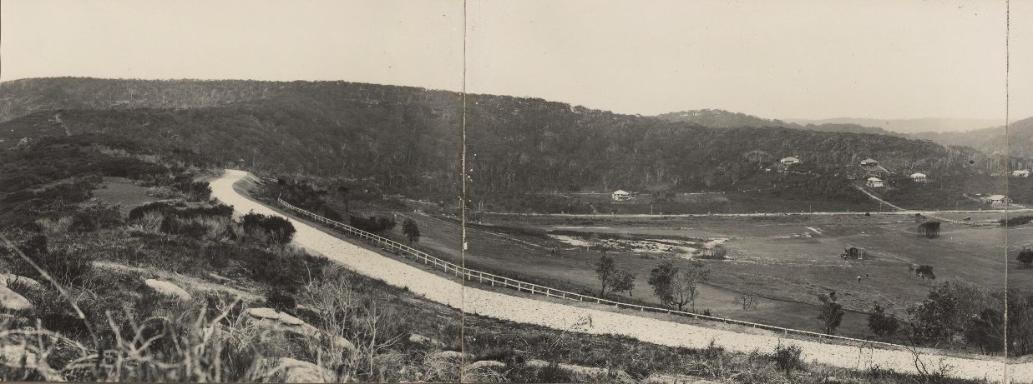

After the initial 1871 land sales of the Therry estate parcels and farm acreage were offered again in May 1881 with the resulting purchasers of the blocks in the Bilgola Plateau and Bilgola Beach sections:
South Division: Lot 5, 4 acres, 2 roods 10 perches, L3fi 10s; lots 6 to 8, 27 acres 0 roods 12 perches, L150 9s — Mr. Jones; lots 5a to 8a, 37 acres 1 rood 13 perches, L149 6s 6d — Mr. Francis; lot 11, 11 acres 1 rood 21 perches, L57 — Mr. J. W. Warren ; lot 9, 25 acres 1 rood 6 perches, L57 17s 11d— Dr. Milford; lot 26, 12 acres 3 roods 8 perches, L64 — Mr. C. E. Jeannerett ; lots 16 to 21, 21 and 25, 103 acres 1 rood 17 perches, L310 1s 4d ; farm, L44 3s 3d— Mr. Francis; lot 22, 11 acres 0 roods 34 perches, L14 18s — Mr. Renwick. SALES OF PROPERTY. (1881, May 24). The Sydney Daily Telegraph (NSW : 1879 -1883), p. 2. Retrieved from http://nla.gov.au/nla.news-article238300369
These lands changed hands and were, with the coming of roads, 'buses and the tram to Narrabeen, placed under the Real Property Act, including those that went up the hills into Bilgola Plateau and down those same hills into Clareville and Newport.
No. 13,259. County of Cumberland, parish of Narrabeen, 101 acres 1 rood 381 perches, situated on Clareville Wharf Road, Clareville,—is Block No. 3, South Subdivision, Pittwater Estate, and is part of 1,200 acres (portion No. 20 of parish) granted to John Joseph Therry; adjoining the properties of F. Burne, J. Robertson, S. Smith, and G. A. Smith, Trustees of Mrs. Evans, or J. G. Cousins, G. Holland, The London Bank of Australia, and J. H. Parry. – Applicant: Margaret Allan, Mosman. Day until which Caveats may be lodged: 17th February, 1905. NOTICE UNDER REAL PROPERTY ACT. (1904, December 30). Government Gazette of the State of New South Wales (Sydney, NSW : 1901 - 2001), p. 9437. Retrieved from http://nla.gov.au/nla.news-article226488010
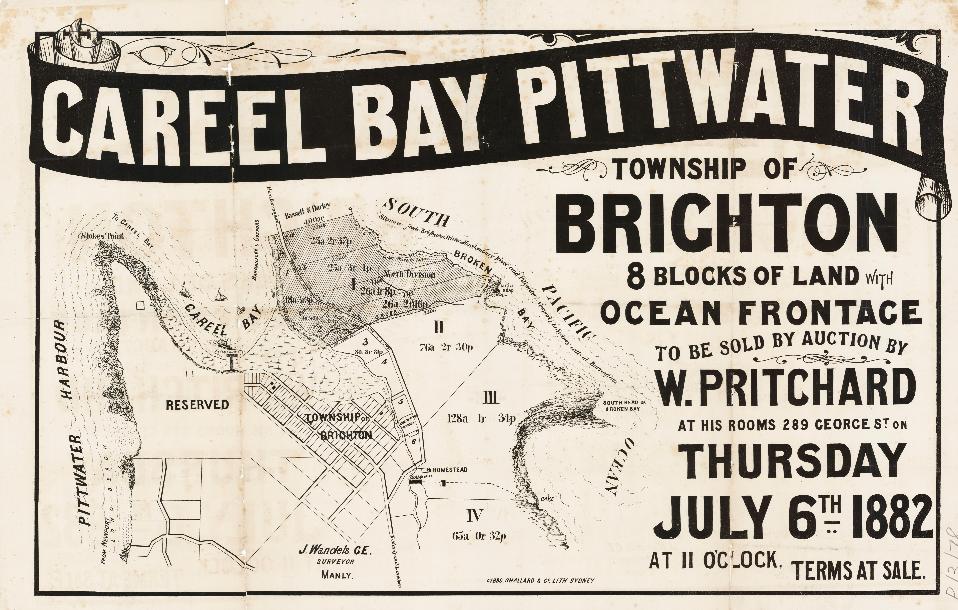
Careel Bay Pittwater - No boundaries shown, 1882. Item No: c053460084, courtesy State Library of NSW.
No 15,531 APPLICANT Frank Henry Burt, Sydney LAND -County Cumberland, parish Narrabeen, shire Warringah, 18 acres 1 rood 20 perches, at Pitt Water, lot 18, villa sites. Pitt Water Estate, and part 1200 acres (portion 20 of parish) granted to John Joseph Therry, adjoining properties of A E Wickham and W H Holt Advertising (1908, December 12). The Sydney Morning Herald (NSW : 1842 - 1954), p. 6. Retrieved from http://nla.gov.au/nla.news-article28149677
No. 17,123. APPLICANT:—Richard Stephen Gillis, Randwick. LAND:—County Cumberland, parish Narrabeen, shire Warringah, 12 acres 3 roods 26 1/2 perches, on Barrenjoey-road, near Hole-in-Wall, —lot 26, south division Pittwater Estate, and part 1,200 acres (portion 20 of parish) granted to John Joseph Therry. NOTICE UNDER REAL PROPERTY ACT. (1911, July 5). Government Gazette of the State of New South Wales (Sydney, NSW : 1901 - 2001), p. 3633. Retrieved from http://nla.gov.au/nla.news-article230683687
No. 18,217/ APPLICANTS:—John George Cousins, Amess Bissett Coleman, and Thomas Hardy, all Sydney. LAND: —County Cumberland, parish Narrabeen, shire Warringah, 96 acres 3 roods, on the road from Manly to Barrenjoey, being Block IV, South Division, Pittwater Estate, and part 1,200 acres (portion 20, parish), granted to John Joseph Therry; adjoining properties of F. Burne, estate late John Tomkins and A. Bowen, G. Crowley, and J M. Taylor. NOTICE UNDER REAL PROPERTY ACT. (1913, June 25). Government Gazette of the State of New South Wales (Sydney, NSW : 1901 - 2001), p. 3845. Retrieved from http://nla.gov.au/nla.news-article221596335
No. 18,923. APPLICANT: James McKinlay, Marrickville. LAND: County Cumberland, parish Narrabeen, shire Warringah, 8 acres 1 rood 12 1/2 perches, on Pittwater, near Refuge Cove,—part lot 11, Villa Sites Pittwater Estate, and is part 1200 acres (portion 20, parish), granted to John Joseph Therry ; adjoining properties of A. E. Wickham and — Kilminster. Diagrams delineating these lands may be inspected at the land Titles Office, Sydney.
W. G. H-WILLIAMS,
Registrar-General.
10th December, 1913. NOTICE UNDER REAL PROPERTY ACT. (1913, December 10). Government Gazette of the State of New South Wales (Sydney, NSW : 1901 - 2001), p. 7336. Retrieved from http://nla.gov.au/nla.news-article228061585
No. 18,395. APPLICANT :—John Stevenson, Gladesville. LAND:—-County Cumberland, parish Narrabeen, shire Warringah, 26 acres 5 perches, on Bilgola Creek and road leading to road from Manly to Barrenjoey,—lot 19, and part lot 18, South Division, Pittwater Estate, and part 1200 acres (portion 20, parish), granted to John Joseph Therry; adjoining properties of W. J. Hollins, C. W. B. King, — Humphrey, and Crown Land. NOTICE UNDER REAL PROPERTY ACT. (1914, December 9). Government Gazette of the State of New South Wales (Sydney, NSW : 1901 - 2001), p. 7291. Retrieved from http://nla.gov.au/nla.news-article227425078
NSW State Records lists Primary Applications as:
Primary Application - Parts Land on Bilgola Creek in Parish Narrabeen County Cumberland Volume 1237 Folio 186- 01-01-1863 to 12-08-1897
Primary Application - John Stevenson 361 acres situated on Bilgola Creek and on a road leading to the road from Manly to Barrenjoey Shire Warringah Parish Narrabeen Volume 2554 Folio 103 - 14-01-1913 to 18-02-1915
Primary Application - William Joseph Hollins 23 acres 1 rood 16 3/4 perches on Bilgola Creek & on a road 1 chain wide leading to the road from Manly to Barrenjoey in Shire Warringah Parish Narrabeen County Cumberland Volume 2570 Folio 171 - 12-06-1914 to 27-04-1915
Primary Application - Arthur Billerwell 3 acres 1 rood 2 3/4 perches on Bilgola Creek in Shire Warringah Parish Narrabeen County Cumberland Volume 3280 Folio 102 - 30-03-1921 to 04-02-1922
IMPROVING AVALON. ROADSIDE TREES PLANTED
Since the sale of Avalon Beach Estate at Christmas additions and improvements have been effected on the estate.
The rock pool baths at the southern end of the beach have been extended 18ft., and are now 57ft. long, with a smooth bottom. Ladies' dressing sheds have been erected immediately at the rear, on a spot once occupied by a jumble of rocks, and a general store and refreshment room of original design has been built close to the beach.
Several landowners are already building homes on their lots. A new, wide road has been constructed, giving the land direct access to the beach, and at the side of all the roads, trees, of eight different varieties, chosen as specially suitable for the land and atmosphere, have been planted. One of these is the Illawarra Flame Tree, which carries blooms of fire color.
IMPROVING AVALON (1922, March 22). The Sun (Sydney, NSW : 1910 - 1954), p. 10 (FINAL RACING). Retrieved from http://nla.gov.au/nla.news-article225222882
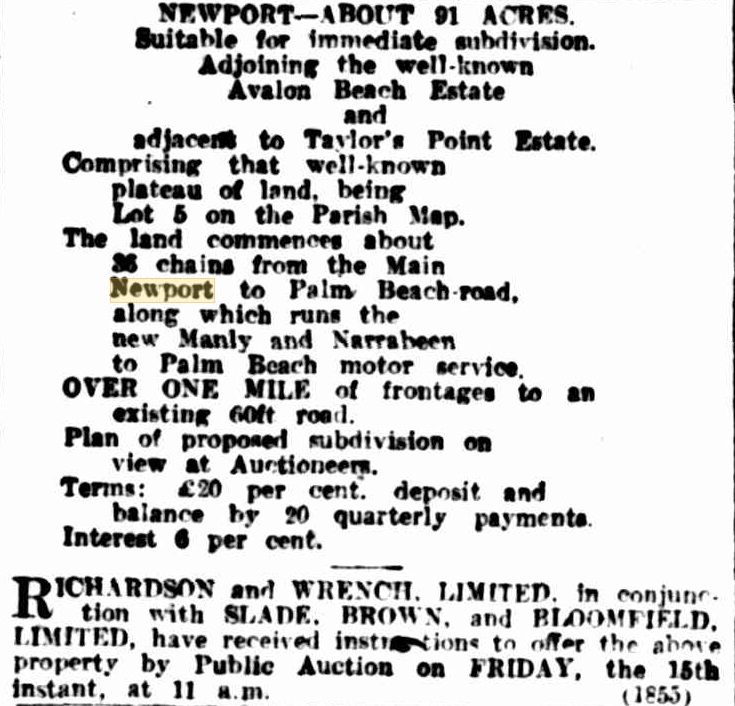
Advertising (1922, December 6). The Sydney Morning Herald (NSW : 1842 - 1954), p. 18. Retrieved from http://nla.gov.au/nla.news-article16043629
The plateau road up to Bilgola is on lithographs for Subdivision 4 by A J Small in 'The Avalon Estate, Avalon Beach'. With the advent of 'New Barrenjoey Road', around the Bilgola Bends, being completed by June 1929, the track up to Bilgola Plateau began appearing on lithographs for land sales as 'Plateau road'.
REAL ESTATE
DEVELOPING NORTHERN BEACHES
NEW SUBURBS ACROSS THE HARBOR THREE NEW FACTORS WHICH WILL HELP
Lack of an unbroken path from the city to beyond Manly has retarded the development of— the beaches on the Barrenjuey peninsula. This Is due to the fact that there are vast suburban areas on the north side of the Harbor barely scratched by development and, consequently, the majority of Sydney's citizens are congregated on the south side. Naturally, they patronise the beaches nearest home; few cross the harbor to swim and surf. This aspect will be changed by the growing North Shore bridge, whose steel link, should create an enormous new population whose surf beaches will be Newport, Avalon, Whale Beach, and Palm Beach. Co-ordinating with this work, the Warringah Shire Council is straining every effort to have the road from Manly lo Newport constructed in a permanent manner, either of concrete or of something equally durable, and plans to improve the existing road from Newport to Palm Beach up to Main Roads Board standard. A start is already being made, for a deviation is to circle the ugly hill which divides Newport from Avalon, and surveyors are now studying contours and levels on the Avalon side. This deviation will do more than cut out a bad-surfaced route with a nasty grade. It will Improve the road to the north by adding new scenic vistas, for the route will curve around the hill towards the ocean, skirt the bluff, and, before it rejoins the existing road, pass between the golf course and sea, and run the length of Avalon behind the reserves.
Better roads, naturally, lead to Improved transport facilities, and, now they are assured that their 'buses will not be shaken to pieces by a succession of pot-holes, proprietors of the 'bus companies who have been serving this district have amalgamated Into one big, company which plans to put new and better 'buses on the run. Soon after Christmas, they anticipate, they will have at least 20 'buses serving the district between Manly and Palm Beach. This, normally, should mean Increased tourist traffic and quicker residential development — which will, In turn, demand still more 'buses.
These aids should help the northern beaches to a quick move forward. Palm Beach has long been popular with the class who own motor cars, and now attention is being paid to Avalon, which is closer to the city, and, yet quite as attractive in Its less spectacular way. Here the land flows gently in the beach instead of rising to the sudden heights which (is) rampart at Palm Beach, and, as a result, offers easy building conditions and proximity to the surf. Hundreds of motor-owners now make it a week-end resort, and many are lured by the interesting golf course, with its novel holes. Land is now being sold here, adjoining the golf course, fronting the new main road, and on the gentle slopes overlooking the beach. Many very fine sites are available in the Avalon Estates, despite the speed with which they are being bought. The inauguration of the better 'bus services and the completion of the deviation should undoubtedly add to the beach's popularity, and, at the same time, to values In the vicinity. REAL ESTATE (1926, October 29). The Sun (Sydney, NSW : 1910 - 1954), p. 15 (FINAL EXTRA). Retrieved from http://nla.gov.au/nla.news-article224122137
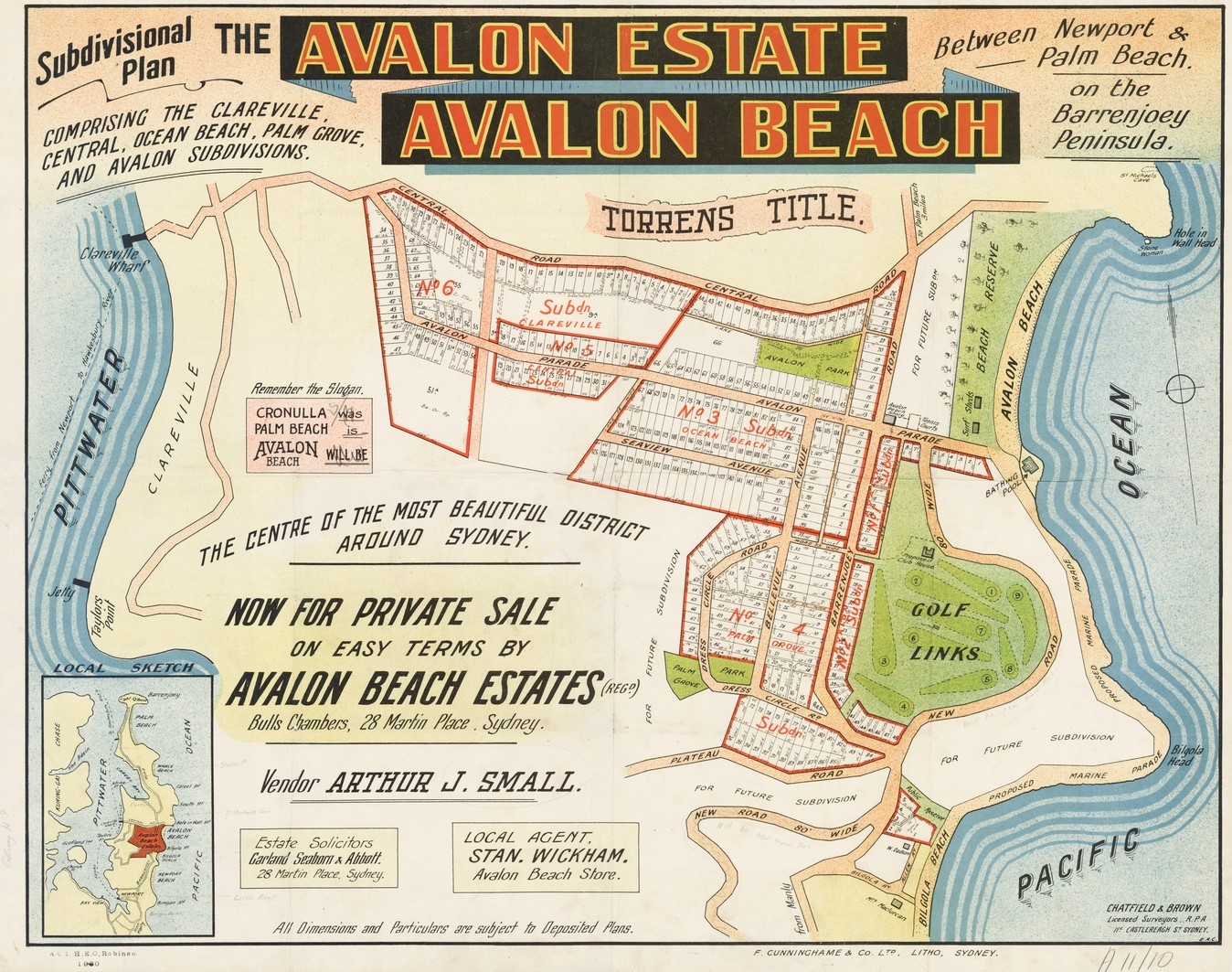
Warringah Shire Council Minutes of Meetings records:
18. Main Roads Board. 16/7/28. Advising that the length of Barrenjoey Road which is proposed to be proclaimed a main road is that extending from Newport to the end of the last at deviation at Avalon. Resolved: (Crs. Hitchcock, Atkins) - That an application be made to have the whole length of Barrenjoey Road proclaimed a main road.
MAIN ROADS ACT, 1924-1929.
PROCLAMATION.
(l.s.)
PHILIP GAME,
Governor.
I Sir Philip Woolcott Game, Governor of the State of New South Wales, with the advice of the Executive Council, and in pursuance of the provisions of section 8 of the Main Roads Act, 1924-1929, do hereby repeal the proclamation of Main Road No. 164 published in Government Gazette No. 37 of 15th March, 1929, and proclaim the road numbered and described in the Schedule hereto as a Main Road.
Signed and sealed at Sydney, this fifth day of August, 1930.
By His Excellency's Command,
MICHAEL F. BRUXNER.
GOD SAVE THE KING!
Schedule.
No. 164. From the intersection of the Great Northern Highway (Main Road No. 9), Lane Cove road and Mount-street, North Sydney, via Miller-street (with branch from Great Northern Highway, via Falcon-street to Miller-street), and Falcon-street, Merlin-street, Military-road (with branch from Merlin-street easterly and northerly via Falcon-street and Laycock-street to Military-road), Spit-road, Upper Spit road, Spit Bridge, Sydney-road, Condamine-street, Pittwater-road, Barrenjoey-road and Avalon-parade to the intersection of Avalon-parade and Old Barrenjoey-road. MAIN ROADS ACT, 1924-1929. (1930, August 22). Government Gazette of the State of New South Wales (Sydney, NSW : 1901 - 2001), p. 3347. Retrieved from http://nla.gov.au/nla.news-article223076515
Almost four decades after this:
WARRINGAH SHIRE COUNCIL.—
Notice is hereby given that the Council of the Shire of Warringah in accordance with section 249 (a) of the Local Government Act, 1919, as amended, has renamed that section formerly known as New Barrenjoey Road, between Newport Beach and Central Road, Avalon—Barrenjoey Road; and has renamed that section of Barrenjoey Road known locally as Old Barrenjoey Road, between Plateau Road and the Fire Station at Avalon, Old Barrenjoey Road, in accordance with details on a plan which has been exhibited at the Shire Hall, Brookvale. J. MORGAN, Shire Clerk, Shire Hall, Brookvale. 6694—$2.40 WARRINGAH SHIRE COUNCIL.—Notice is hereby given (1966, May 20). Government Gazette of the State of New South Wales (Sydney, NSW : 1901 - 2001), p. 2044. Retrieved from http://nla.gov.au/nla.news-article220017694
In 1927 Arthur Jabez Small handed over the selling of the portions of land to two gentlemen who were to become big land developers in New South Wales and later, other states, George Malcolm Willmore and Reginald N. Randell.
COMPANY NEWS.
The following companies have been registered, shares being of the value of £1 each: Avalon Beach Estates, Limited, capital £25,000, to purchase, take on lease or in exchange,or otherwise acquire any lands and buildings, but In particular to acquire a certain parcel of land, containing about 180 acres, situated at Avalon, N.S.W. First directors, G. M. Whitmore, R. N. Randell, and A. R. Macgregor. COMPANY NEWS. (1927, November 4). The Sydney Morning Herald (NSW : 1842 - 1954), p. 15. Retrieved from http://nla.gov.au/nla.news-article16416226
REAL ESTATE
TO SELL AVALON NEW COY. FORMED 180-ACRE HOLDING
After 15 years of quietly developing a large tract of land at Avalon Beach, Mr. A. J. Small has disposed of his entire Interest to the Avalon Beach Estates. Ltd.
This new company was formed and registered to exercise the option to. purchase, and has now formally taken possession. The area, comprising approximately 180 acres, is situated right at and adjoining the beach, and completely surrounds the golf course which was laid out by the well-known professional golfer Mr. D. G. Soutar, who claims that it Is the best nine-hole seaside golf course in the State.
Modern town-planning has played an Important part in this new subdivision, and generous allowance has been made for public parks and reserves. The selling agents are Willmore and Randall Ltd. and the first release will probably be offered to the public this week. REAL ESTATE (1927, November 16). The Sun (Sydney, NSW : 1910 - 1954), p. 23 (FINAL EXTRA). Retrieved from http://nla.gov.au/nla.news-article222739439
As can be seen above, soon after being formed this new company set about providing access to the area, and blocks of land, with roads. In October 1928 Plateau road, and a sketch of other roads, as well as the then being constructed torpedo wharf at Clareville, appears in Willmore and Randall advertisements:
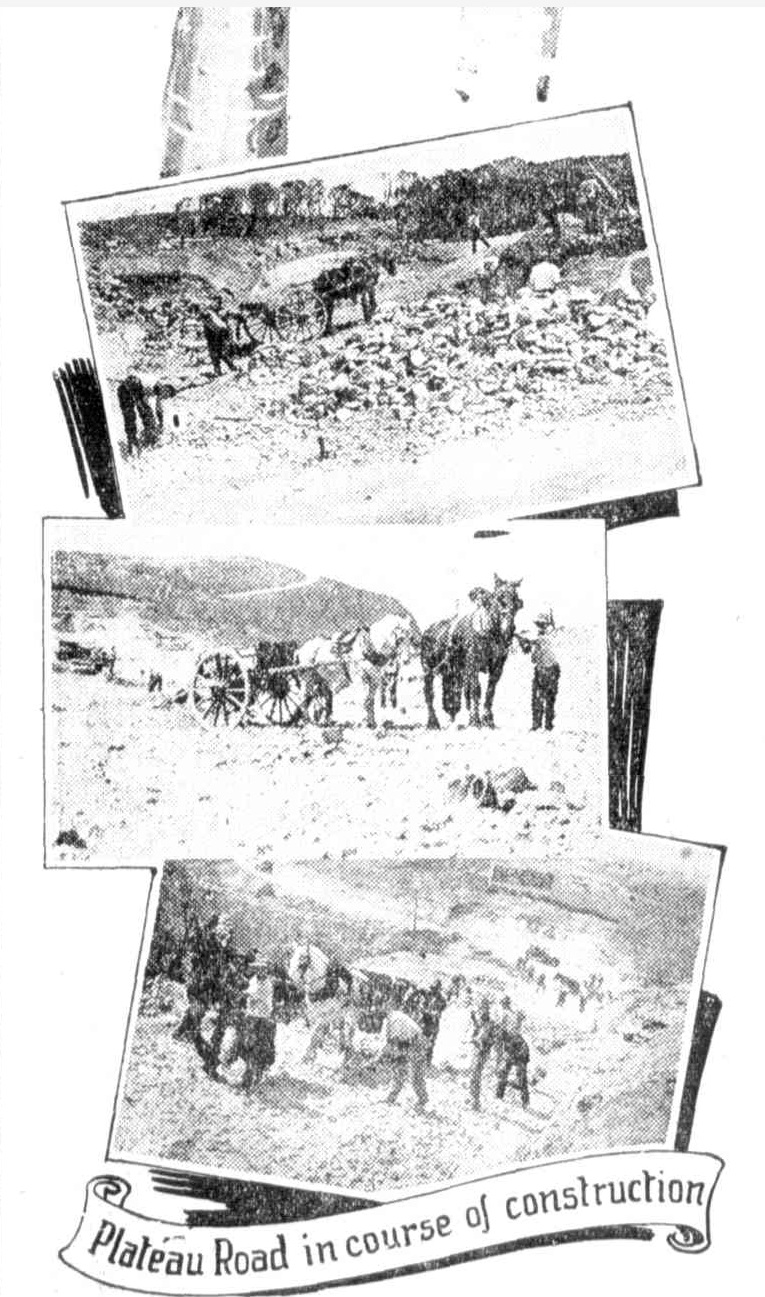
.jpg?timestamp=1574890765534)
.jpg?timestamp=1574890825627)
Plateau Road is now open for traffic. This enables us to release 200 new and particularly choice sites — sites with glorious elevation, within easy distance of ...Advertising (1928, October 7). The Sun (Sydney, NSW : 1910 - 1954), p. 33. Retrieved from http://nla.gov.au/nla.news-article224680128
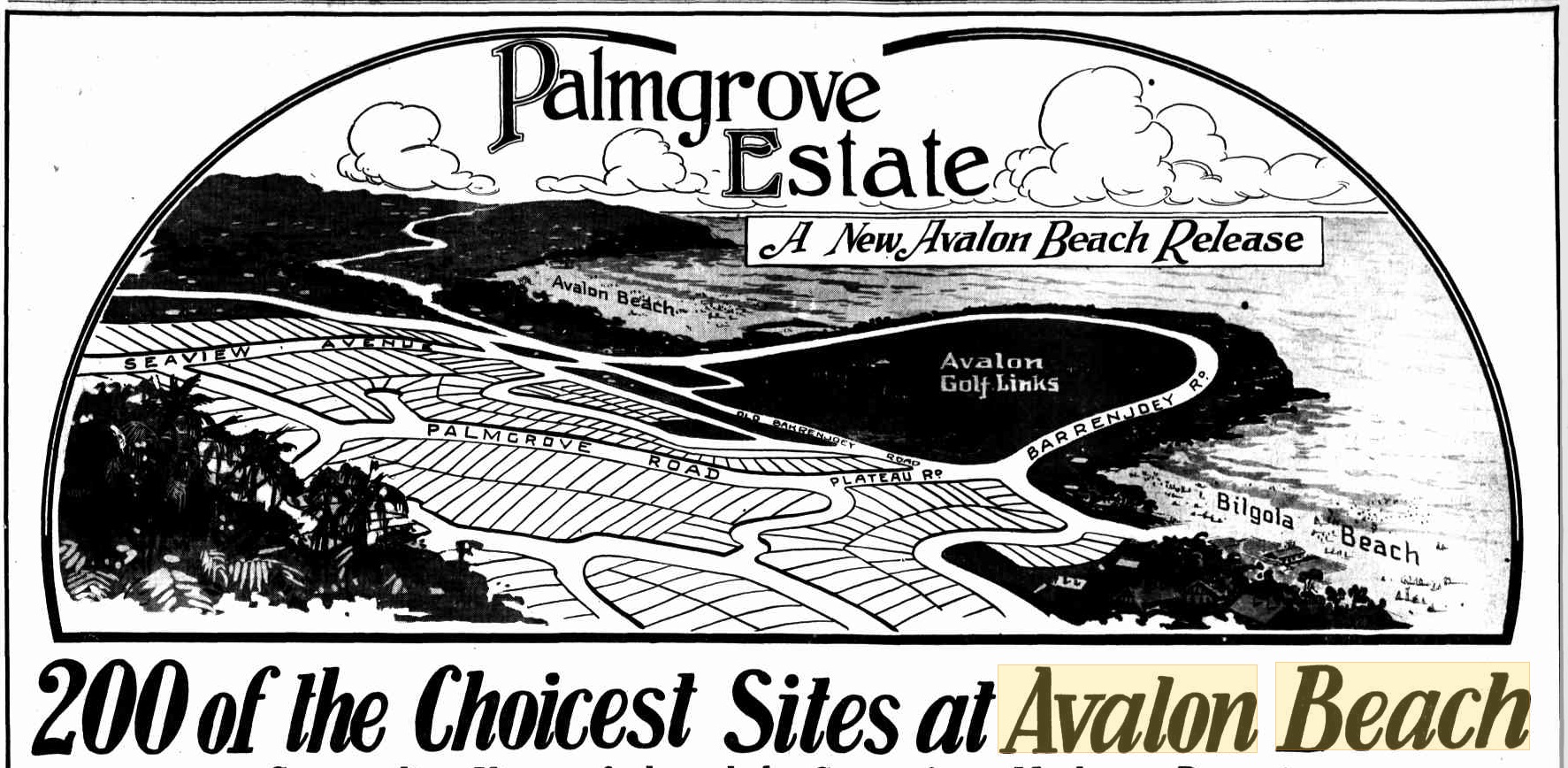
.jpg?timestamp=1566429296153)
.jpg?timestamp=1566429330395)
Advertising (1928, November 11). The Sun (Sydney, NSW : 1910 - 1954), p. 37. Retrieved from http://nla.gov.au/nla.news-article223246319
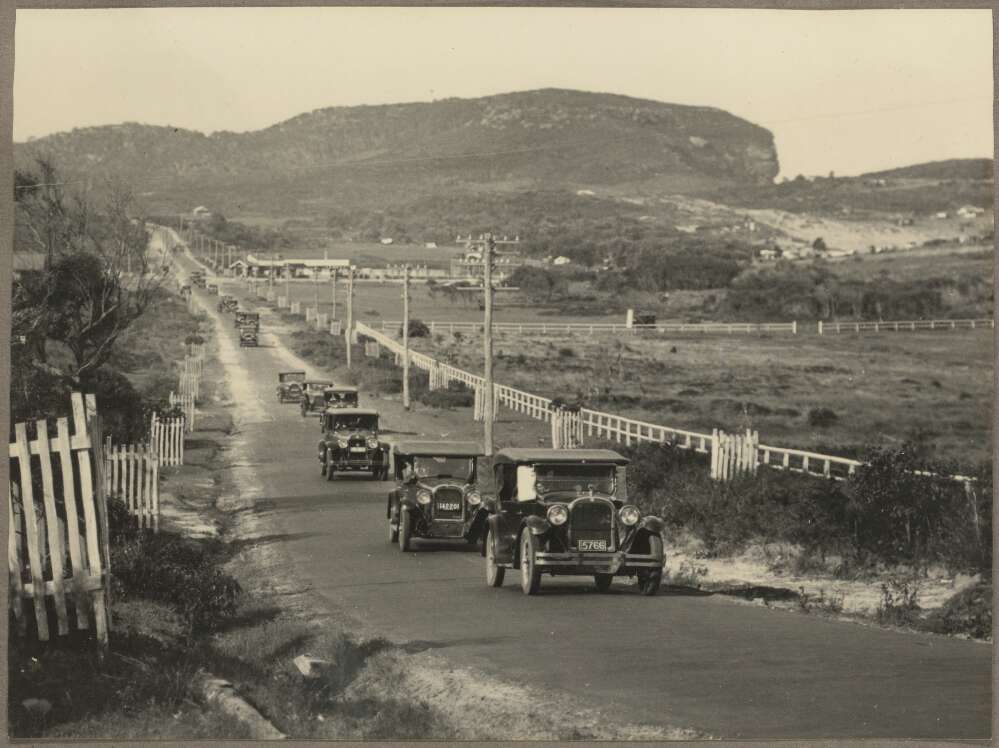
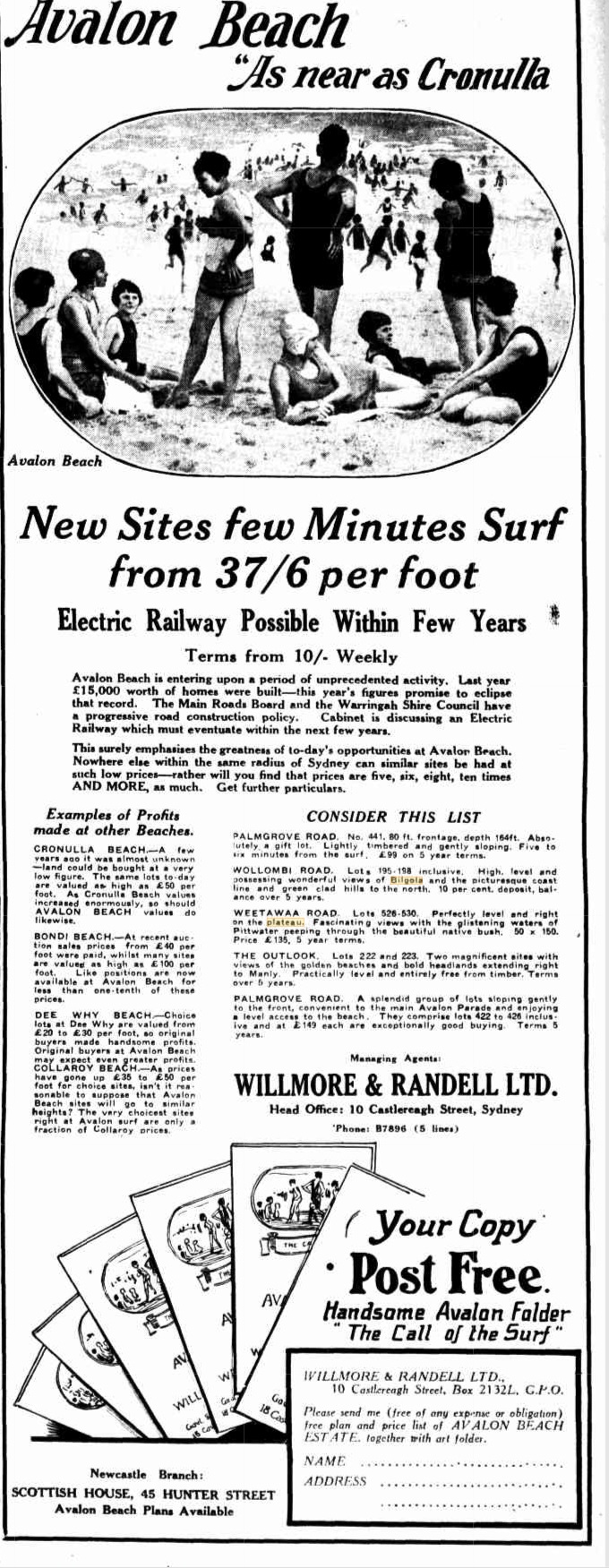
Avalon Beach as near us Cronulla
Avalon Beach
New Sites few Minutes Surf from 37/6 per foot Electric Railway Possible Within Few Years Terms from 10/- Weekly Avalon Beach is entering upon a period of unprecedented activity. Last year £15,000 worth of homes were built — this year's figures promise to eclipse that record. The Main Roads Board and the Warringah Shire Council have a progressive road construction policy. Cabinet is discussing an Electric Railway which must eventuate within the next few years. This surely emphasises the greatness of to-day's opportunities at Avalon Beach. Nowhere else within the same radius of Sydney can similar sites be had at such low prices — rather will you find that prices are five, six, eight, ten times AND MORE, as much. Get further particulars.
Examples of Profits made at other Beaches. CRONULLA BEACH, — A few years ago it was almost unknown — land could be bought at a very low figure. The same lots to-day are valued as high as £60 per foot. As Cronulla Beach values increased enormously, so should AVALON BEACH values do likewise. BONDI BEACH.— At recent auction sales prices from £40 per foot were paid, whilst many sites are valued as high as £100 per foot. Like positions are now available at Avalon Beach for less than one-tenth of these prices, DEE WHY BEACH. — Choice lots at Dee Why are valued from £20 to £30 per foot, so original buyers made handsome profits. Origins! buyers at Avalon Beach may expect even greater profits. COLLAROY BEACH As prices have gone up £36 to £50 por foot for choice sites, isn't it reasonable to suppose that Avalon Beach sites will go to similar heights? The very choicest sites right at Avalon surf are only a fraction of Collaroy prices.
CONSIDER THIS LIST
PALMGROVE ROAD. No. 441, 80 ft. frontage, depth 164ft- Absolutely., a gift lot. Lightly timbered and gently sloping. Five to six minutes from the surf. £99 on 5 year terms
WOLLOMBI ROAD. Lots 195-198 inclusive. High level and possessing wonderful views of Bilgola and the picturesque coast line and green clad hills to the north. 10 per cent, deposit, balance over 5 years.
WEETAWAA ROAD. Lots 526-530. Perfectly level and right on the plateau. Fascinating views with the glistening waters of Pittwater peeping through the beautiful native bush. 50 x 150. 4 Price £135, 5 year terms.
THE OUTLOOK. Lots 222 and 223, Two magnificent sites with views of the golden beaches and bold headlands extending right to Manly. Practically level and entirely free from timber. Terms over 6 years.
PALMGROVE ROAD. A splendid group of lots sloping gently - to the front, convenient to the main Avalon Parade and enjoying a level access to the beach. They comprise lots 422 to 426 inclusive and at £149 each are exceptionally good buying.
Terms 5 years. Managing Agents: WILLMORE & RANDELL LTD. Head Office: 10 Castlereagh Street, Sydney 'Phone: B7896 (5 lines)
our Copy ... Post Free. A Handsome Avalon Folder ...''Call of the Surf " WILLMORE & RANDELL LTD.,10 Castlereagh Street, Box 2 1 32 L, C.R.O, Please send me ( free of any expense or obligation ) \ free plan and price list of AVALON BEACH ESTATE, together with art folder. NAME Newcastle Branch: ADDRESS . SCOTTISH HOUSE, 45 HUNTER STREET Avalon Beach Plans Available. Advertising (1929, January 6). The Sun (Sydney, NSW : 1910 - 1954), p. 13. Retrieved from http://nla.gov.au/nla.news-article230371167
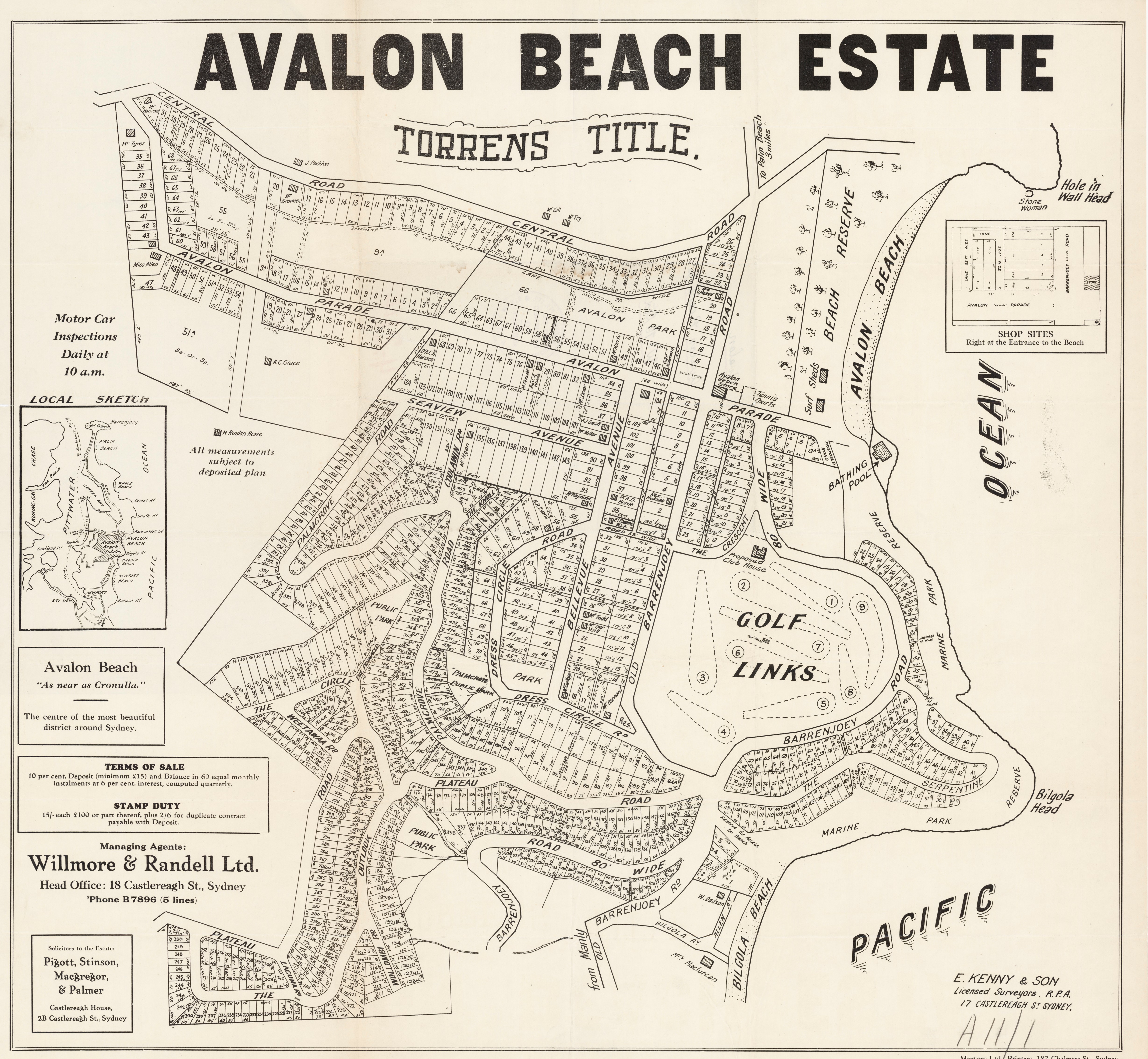
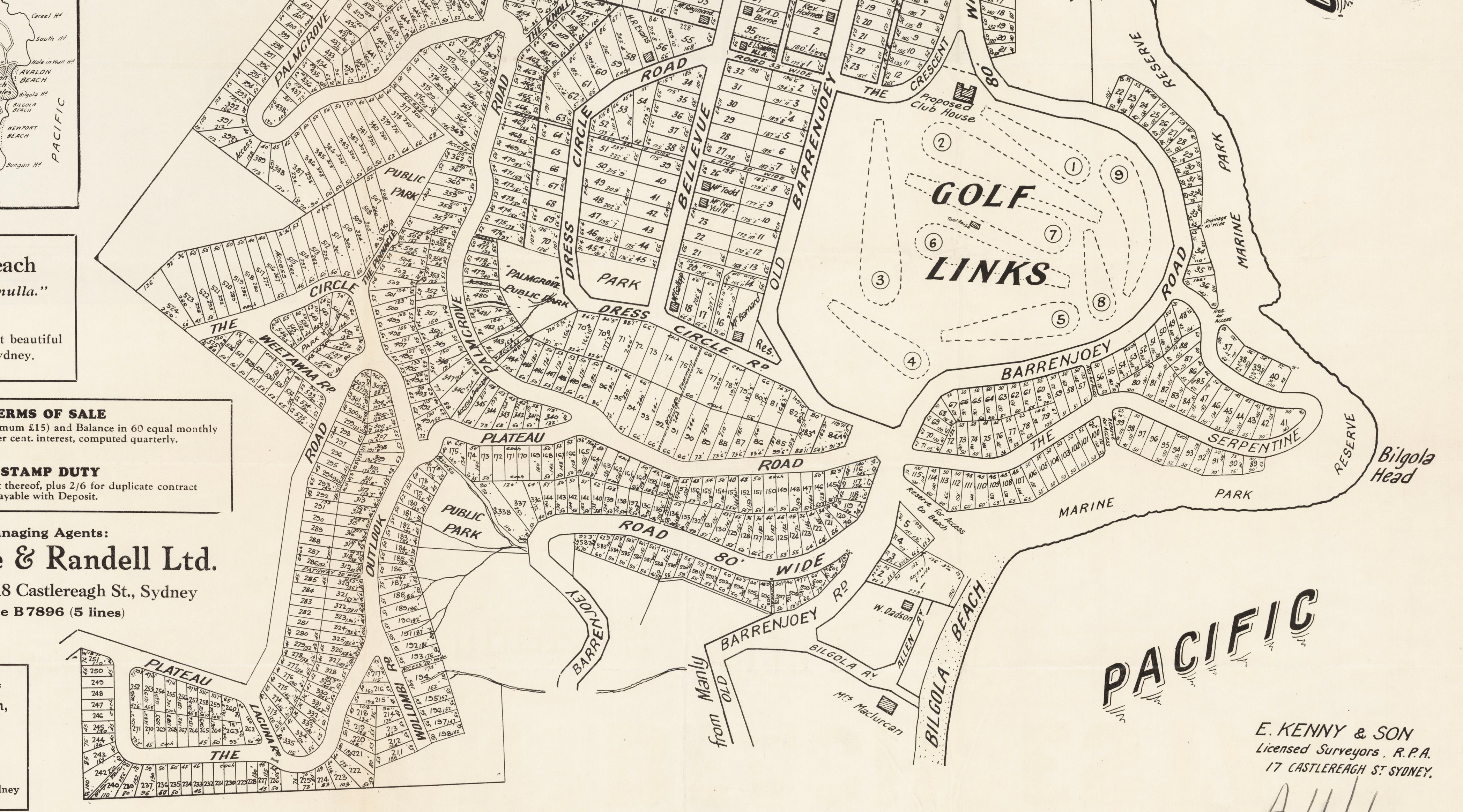
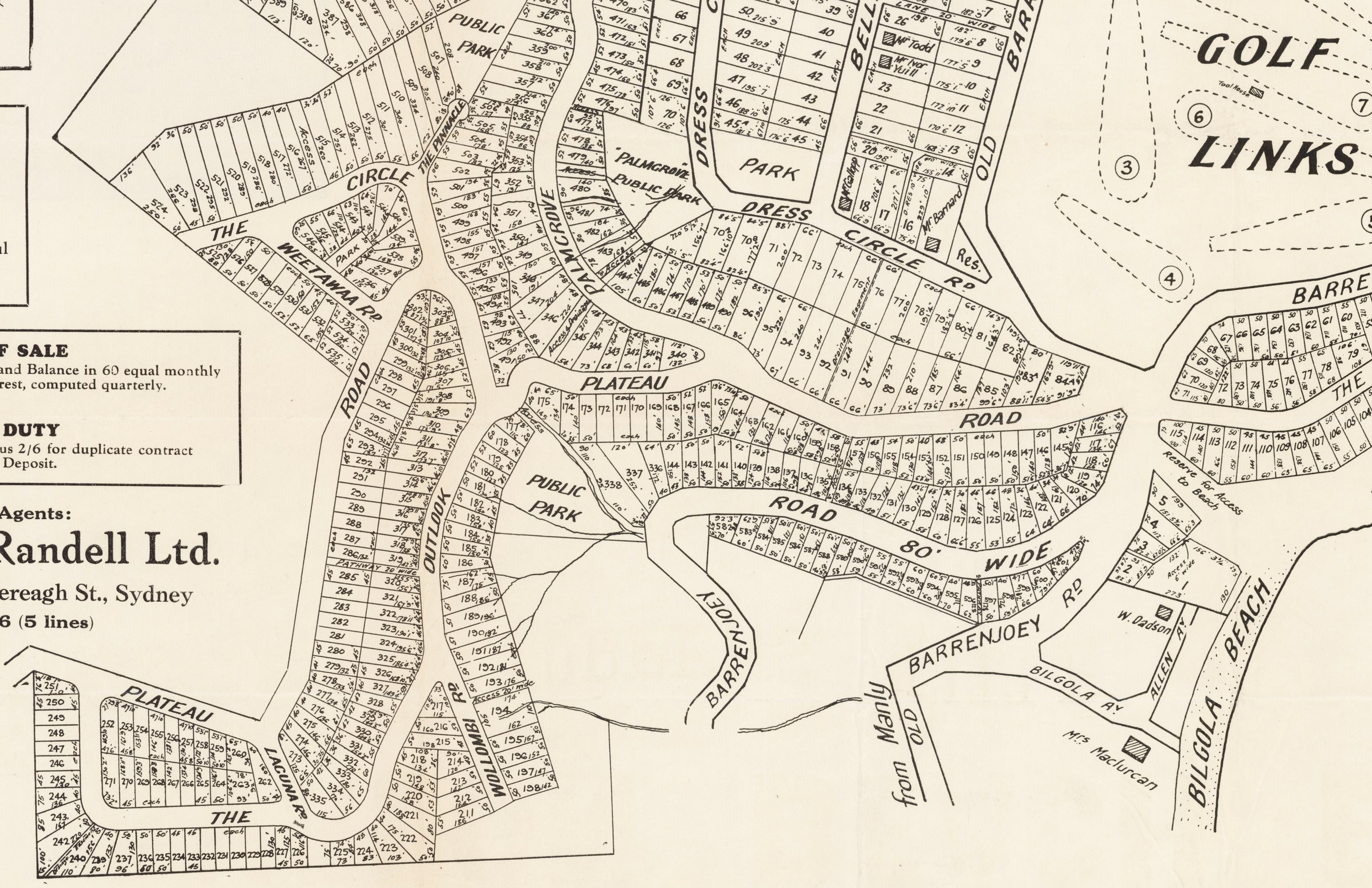
Avalon Beach Estates. Item No.: c027560001, and sections from - from Avalon Subdivisions Folder, courtesy State Library of NSW
Plateau Road, Bilgola Plateau, within portion 20, becomes a public road:
Sydney, 8th November, 1929.
NOTIFICATION UNDER THE PUBLIC ROADS ACT, 1902, OF RESUMPTION AND WITHDRAWAL AND DEDICATION OF LANDS FOR ROAD, OF DECLARATION OF EXISTING ROADS TO BE PUBLIC ROAD, AND OF THE CLOSURE OF ROADS DEEMED TO BE UNNECESSARY.
IN pursuance of the provisions of the Public Roads Act, 1932, I, Sir Dudley Rawson Stratford de Chair, Admiral in the Royal Navy, Knight Commander of the Most Honourable Order of the Bath, Member of the Royal Victorian Order, Governor of the State of New South Wales and its Dependencies in the Commonwealth of Australia, with the advice of the Executive Council, do hereby notify, that the lands hereunder described, which are required for the roads hereunder specified (in respect of which roads notice of proposal to open the same has duly been, given), are hereby resumed or withdrawn for the several roads referred to ; also that the said lands are hereby dedicated as roads ; also that the existing roads, particularised hereunder, are hereby declared to be Public Roads ; and also that the roads hereunder specified, which are deemed to be unnecessary (in respect of which notice of proposal to close the same has duly been given) are hereby closed.
D. R. S. DE CHAIR,
Governor.
R. T. BALL,
Minister for Lands

NOTIFICATION UNDER THE PUBLIC ROADS ACT, 1902, OF RESUMPTION AND WITHDRAWAL AND DEDICATION OF LANDS FOR ROAD, OF DECLARATION OF EXISTING ROADS TO BE PUBLIC ROAD, AND OF THE CLOSURE OF ROADS DEEMED TO BE UNNECESSARY. (1929, November 8). Government Gazette of the State of New South Wales (Sydney, NSW : 1901 - 2001), p. 4576. Retrieved from http://nla.gov.au/nla.news-article223031701
DISTRICT COURT.
(Before Judge White) MORATORIUM ACT.
Australian Securities v Avalon Beach and others
Australian Securities, Limited, of Wynyard-street, Sydney, applied under the Moratorium Act 1930 for leave to take foreclosure proceedings in respect of certain mortgage securities to it from Avalon Beach Estates Limited, of Castlereagh-street, Sydney, over the interests of the latter in certain land bought by it from Arthur Jabez Small, and over purchase moneys under sub-sales by Avalon Beach Estates, Limited, of the same land to various sub-purchasers.
It was submitted that Avalon Beach Estates, Limited, still owed certain of the purchase moneys payable to Small, and had also given a mortgage security to Motor Discounts, Limited, of Castlereagh-street, Sydney, over certain of the contracts of sub-sale.
Evidence was given that Willmore and Randell, Limited-the company was not made a party to the application-had been appointed by Avalon Beach Estates, Limited, selling agents for the allotments In the sub-division, and that these two companies were now in voluntary liquidation. George Malcolm Willmore and Reginald N. Randell, company directors, who were covenantors for payment of the mortgage moneys secured to Australian Securities, Limited, were made respondents to the application.
For the applicant company It was urged that the evidence given should satisfy the Court that as to certain alleged breaches by Avalon Beach Estates, Limited regarding securities Its conduct in allowing Willmore and Randell, Limited, to receive from it certain of the purchase moneys under the sub-sales was such as to render Avalon Beach Estates, Limited, undeserving of the benefit or protection of the Moratorium Act, within the meaning of sub-section 4 of section 4 and that, therefore, the application should be granted.
It was contended on behalf of Avalon Beach Estates, Limited, that the question of conduct under section 4, sub-section 4, could only be taken into account in the case where the mortgagor was unable either to redeem the property in full or to repay any part of the principal moneys. It was further contended that the proviso in sub-section 3 of section 4-which prohibited the Court from granting leave to commence proceedings for foreclosure unless the Court was satisfied that having regard to all the relevant circumstances, including the ability of the mortgagor to redeem the property out of his own moneys it would be unjust and inequitable not to grant the application-only applied in a case where the evidence established that the mortgagor was financially able to pay the whole of the mortgage moneys due. Evidence had been given, however, that some of the moneys were still held by the liquidator of Avalon Beach Estates. Ltd.
Judgment was reserved.
Mr. H. V. Jaques (instructed by Messrs Stephen Jaques and Stephen) appeared for the applicant company; Mr. E. P. McDonald (instructed by Messrs. W. S. Gray and Perkins) for Avalon Beach Estates, Limited; Mr J. M. Sanders (instructed by Mr. R s o' Sillar) for Motor Discounts, Limited, Mr E. R. Mann for G. M. Willmore and R.N. Randall. DISTRICT COURT. (1931, May 7). The Sydney Morning Herald (NSW : 1842 - 1954), p. 6. Retrieved from http://nla.gov.au/nla.news-article16775725
Warringah Shire Council 'Rates Owing' Notices published in the NSW Government Gazette during the early 19040's and even into the 1950's state Arthur Jabez Small of 'Avalon Estates' has outstanding £ and pence so even though the Willmore-Randall arrangement seemed to fall apart during the Depression years of the 1930's, Mr. Small's passion for creating an Avalon Beach idyll did not cease, including ensuring reserves and parks were set aside for residents.
GIGANTIC RED GUM.
Land on Avalon Heights, recently bought by the Wild Life Preservation Society of Australia, was inspected on Saturday by members of the Naturalists' Society, under the leader ship of Miss Thistle Harris.
The chief object of Interest in the area of six and a half acres is the gigantic Sydney redgum believed to be the largest in the Sydney district. It is 22 feet round the butt and the trunk rises to a height of 150 feet. Naturalists were surprised that the redgum had attained such dimensions in the sandstone country. GIGANTIC RED GUM. (1937, March 30). The Sydney Morning Herald (NSW : 1842 - 1954), p. 6. Retrieved from http://nla.gov.au/nla.news-article17356131
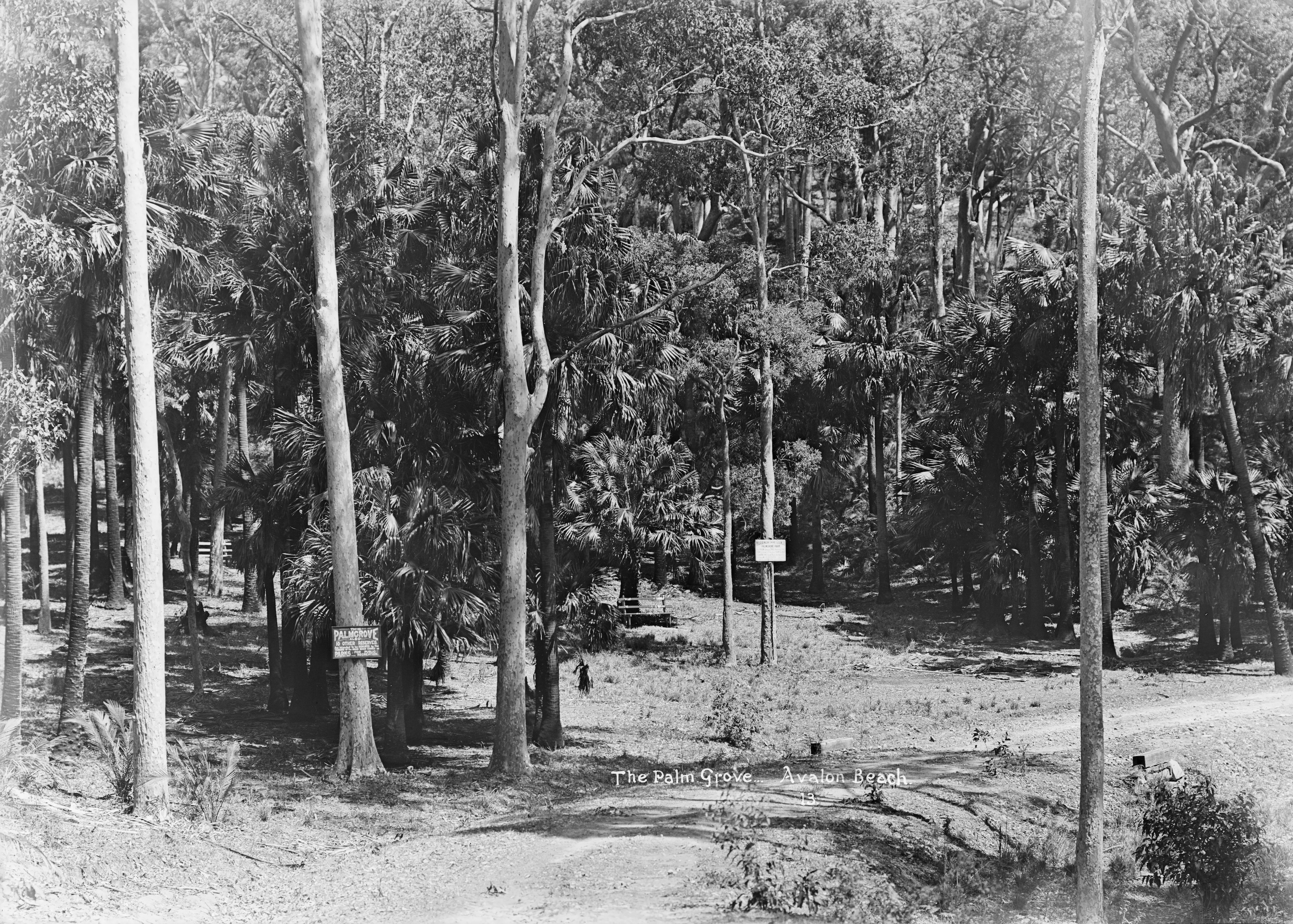
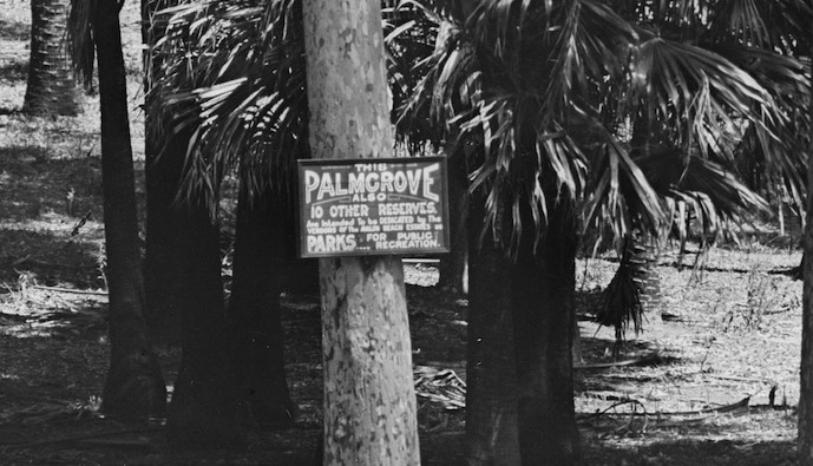
PARKS AND PLAYGROUNDS.
Aims of Movement.
"That every child shall have a chance to play and every citizen the opportunity for recreation" was adopted as a chief aim in the constitution of the New South Wales Parks and Playgrounds Movement, which held its first annual meeting at the New South Wales Cricket Association's Chambers on Wednesday. "The normal expansion of Sydneys playing fields should be, at a minimum, from 100to 120 acres of level land every year," says the report of the movement. A report on the whole matter by the Surveyor-General, who was being assisted by a committee of the movement, was expected shortly. "In the meantime, the executive of the movement has taken up (as an Immediate measure) the question of pressing for 'Five More Moore Parks."
The meeting, which was a full one, delegates from 30 bodies being present, was concerned largely with the elimination by the Legislative Council of the parks clauses of the Greater Sydney Bill. 'This meant', said Dr. C. E. W. Bean, honorary secretary of the movement, 'that, although the Greater Sydney authority, if established, could plan parks and playgrounds, It would not be able to acquire them, or even to accept them if given to it-powers which were possessed by greater-city authorities all over the world. '
On the motion of the chairman, Mr. A. J.Small, seconded by Mr. D. G. Stead, the meeting expressed its unanimous disapproval of the elimination of these powers from the bill. The liability of all State school playgrounds to taxation while many private school grounds were exempt was also strongly criticised in the report, a case being cited in which public land lying Idle was heavily rated as soon as it was permitted to be used as a play-ground for State schoolchildren. On the motion of the chairman, seconded by Mr. R.A. Bennett, it was resolved to urge that, in the bill projected by the Government, exemption should be extended to all school play-grounds. A committee was appointed "to co-operate with the city authorities in their task of re-organising the playground system of Sydney," And It was also resolved, on the motion of Mr. Burrows and Mrs. Wyatt, to urge the preservation by some means of the Pymble State forest. Mr. A. J. Small (president of the Town Planning Association) was elected as first president of the Parks and Playgrounds Movement. PARKS AND PLAYGROUNDS. (1931, September 25). The Sydney Morning Herald (NSW : 1842 - 1954), p. 10. Retrieved from http://nla.gov.au/nla.news-article16818070
Then, as now, keeping these roads open was a community work. This great old ABHS photo of people working to keep the edges of Hilltop Road at Bilgola underlines those who lived here permanently, or spent months here during Summer, worked as one team:
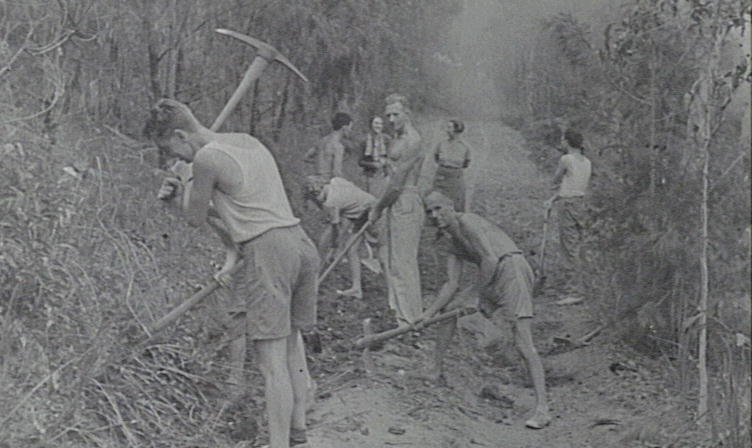
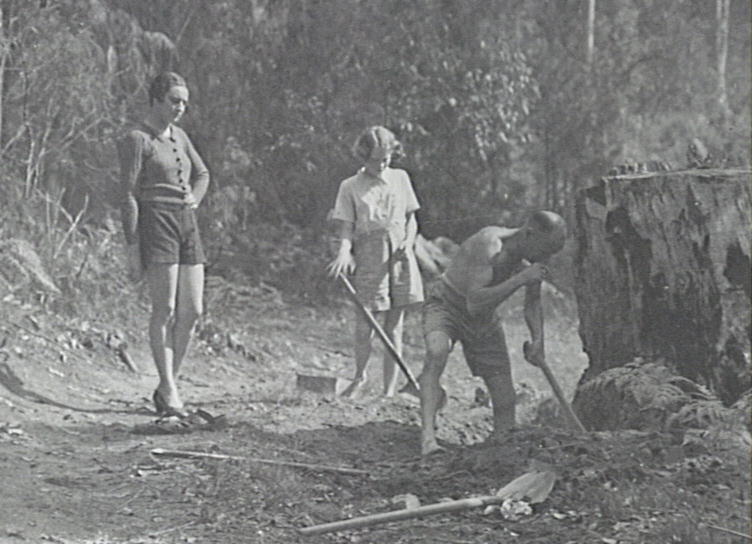
One of the recurring problems with living atop a glorious hill with a breathtaking view is bushfires and the way they are drawn up these landscapes. Bilgola actually has a street and small park with a name derived from an indigenous word for 'fire'.
BUSHFIRES SWEEP FASHIONABLE BEACH RESORTS: HOMES MENACED
Bushfires last- night swept Sydney's fashionable beach resort area from Avalon to Newport, halted traffic on the main Palm Beach highway and threatened property valued at thousands of pounds before they were brought under control. At Newport police assisted householders to pack belongings and move them on to the streets.
One house in Hillside-road, was surrounded completely by flames, but occupants refused to leave, and played a hose over it for several hours. Reports received at Sydney Fire Headquarters this afternoon indicate that bushfires on the mountains are again out of control.
In the Avalon-Newport area, several small fires are still burning, but the main -outbreak has been controlled. The cliff face between Avalon and Newport is blackened The fire jumped the main highway at Bilgola and traffic was halted until this section was controlled The outbreak was fought by firemen from Avalon, Narrabean and Manly, assisted by local residents. Two truck loads ot Air Trainees also were sent to assist. Members of the Women's Fire Brigade- Auxiliary were at a dance at North Sydney when the alarm was given.. They took the brigade's mobile kitchen to the fire, and remained all night serving refreshments to the firefighters. A house occupied by Mrs. Winifred Bridges, in Hillside-road, Newport, had a remarkable escape from destruction, for the second time since 1938. Fire surrounded the premises on both occasions. Roared Through Bush Mrs. Bridges said she did not bother to remove- any belongings from the house last night. "In the 1938 fire we moved most of our furniture on to the roadway, she explained. "A spark caught it, and it was burned, while the furniture left in the house was untouched.
"Although the police warned us of the danger we were content last night to play the hose on the house continually and hope for the best."
A laundry about 50ft. from the house also was encircled by the flames but this was undamaged, too. Ten houses, mostly permanent residents, in the area were endangered. The fire started on the Avalon plateau about 1.30 pm yesterday. It was noticed first by Mr. J. D. Handley, of Plateau-road. Mr. Handley and other residents fought the flames until the arrival of the Avalon brigade under Captain Hock.
Said Mr. Handley: "The wind soon had the flames roaring through the bush. At several places they were 20ft. over the treetops. "We built firebreaks wherever possible, but could not prevent the flames spreading."
Property in this area is very valuable. Chief Fire Officer, Mr. W. Beare, today praised the work of civilians and volunteer firefighters. Mr. Beare said the men worked unceasingly until the fire was put out. He praised also the women who remained up ail night serving refreshments.
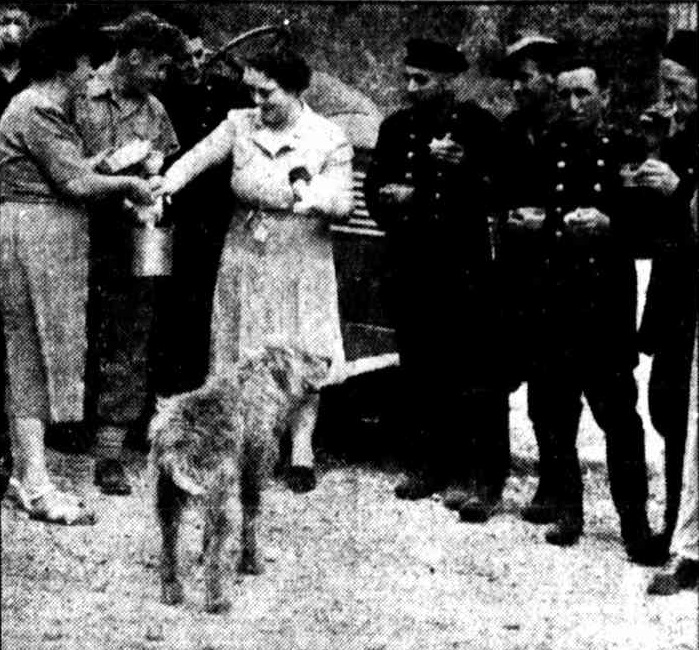
Breakfast. Firemen who had been out all night fighting bushfires near Avalon were given refreshments at daybreak today by residents whose homes they had protected. BUSHFIRES SWEEP FASHIONABLE BEACH RESORTS; HOMES MENACED (1944, November 17). The Sun (Sydney, NSW : 1910 - 1954), p. 3 (LATE FINAL EXTRA). Retrieved from http://nla.gov.au/nla.news-article229281276
AVALON BILGOLA Seaside subdivision 20 lots from £175, £50 deposit Office on Plateau Road W SIMMONDS Sole Agent XW9234 open holidays. Family Notices (1952, April 11). The Sydney Morning Herald (NSW : 1842 - 1954), p. 8. Retrieved from http://nla.gov.au/nla.news-article18248385
The Bilgola Heights Estate:
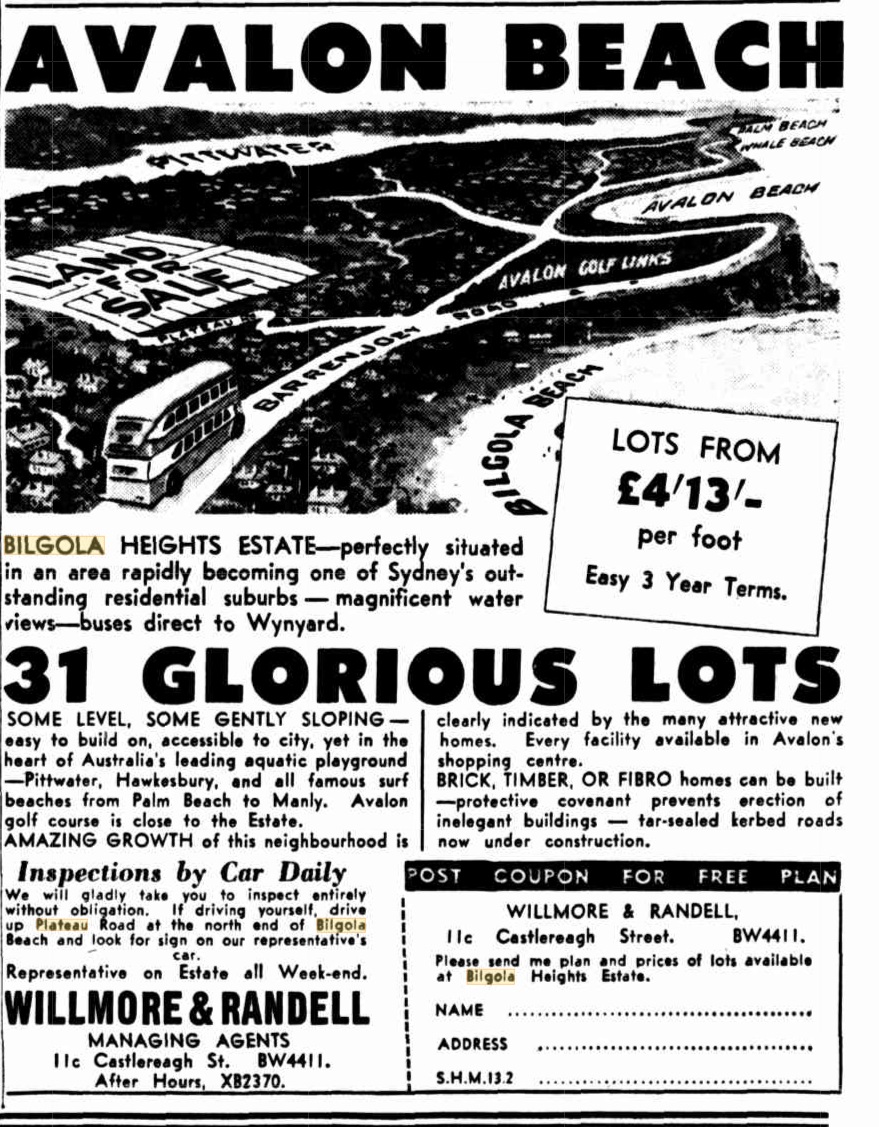
Advertising (1953, May 1). The Sun (Sydney, NSW : 1910 - 1954), p. 7 (LATE FINAL EXTRA). Retrieved from http://nla.gov.au/nla.news-article231043251 - and re-advertised with this same brochure through 1954.
Bilgola Heights, Bilgola Plateau Estate, 7 lots. est 60ft frontage. £1805: REAL ESTATE Greater Use Of Accommodation (1954, June 19). The Sydney Morning Herald (NSW : 1842 - 1954), p. 7. Retrieved from http://nla.gov.au/nla.news-article27517269
The difference between land lot prices in 1929 and 1952:
AVALON BEACH--£119 Level Block right up on the Heights magnificent views of Bush and Pittwater 5474 Herald. Advertising (1929, August 28). The Sydney Morning Herald (NSW : 1842 - 1954), p. 23. Retrieved from http://nla.gov.au/nla.news-article16578991
AVALON HEIGHTS Avalon 50x 125 good high position £230 JX3274 after 12 Saturday.
AVALON BEACH New Subdiv Lots from £225 , £50 deposit W SIMMONDS Old Barrenjoey Road XW9234
AVALON BEACH NORTH Small new Fibro House ready to move Into H W S All conienlences Close bus £1700 JB2252 until 1pm 27 9/ 52
AVALON BEACH Furnished Home h w sep gar frig Close Paradise pool £4950
Also Waterfront Lot SIMMONDS Old Barrenjoey Rood XW9234
AVALON, P water W front New W board 2 b r lge Inge Mod offices, frig furn 60ft deep w front £3810- GORDON BROWN XW9167.
Advertising (1952, September 27). The Sydney Morning Herald (NSW : 1842 - 1954), p. 29. Retrieved from http://nla.gov.au/nla.news-article18283809
OVERLOOKING TWO BEACHES
A HOUSE on the cliff heights at Avalon has an intimate view of two of Sydney's loveliest beaches — Avalon and compact Bilgola. There is also a third view across the busy highway and over the Avalon golf links. It is the home of new Australians Mr. and Mrs. Hans Rettenmeyer. They built the house as a permanent home and have furnished it appropriately with portable pieces than can be used indoors or out. The house is of knotted pine on brick foundations. Its atmosphere is informal, with low picket railings screening the entrance steps and deck, canvas blinds shading the western windows,and, and, inside, polished knotted pine floors throughout.
"snotneus"
Mr. Rettenmeyer, who is an interior decorator, has chosen a scheme of Aztec colorings— vital earth-reds, tans, yellows, browns. Mrs. Rettenmeyer, who is Dutch, has contributed some lovely old brasses to the decor. These belonged to her family in Holland. One is an old oil lamp which gives off a lamentable light and an appalling amount of black smoke. The Dutch call it a snotneus, which means just what it sounds like — a dirty nose.
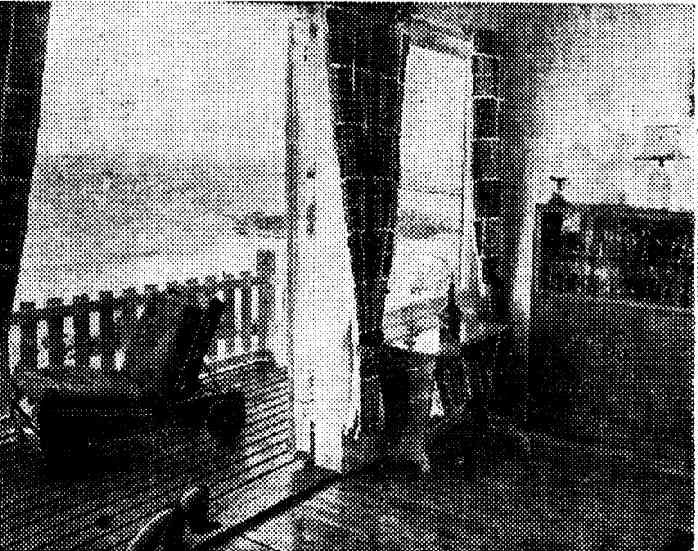
PICKET-FENCED sundeck with spaced timber flooring in Mr. and Mrs. Hans Rettenmeyer' s house at Avalon overlooking Bilgola Beach and ocean. Furnishings in the modern room are of polished maple and Pacific oak. Wheeled chairs are used indoors or out.
.jpg?timestamp=1566169057885)
ABOVE : Decorative nonsense corner with swing-bar doors leading to kitchen.
.jpg?timestamp=1566169089995)
LEFT: Mrs. Norbert Faconi and Mrs. Rettenmeyer on shaded verandah overlooking Avalon Beach and golf links. Chairs are of moulded plywood. OVERLOOKING TWO BEACHES (1953, November 22). The Daily Telegraph (Sydney, NSW : 1931 - 1954), p. 35. Retrieved from http://nla.gov.au/nla.news-article248733929
Firemen race 50 yds. through flames
Five firemen yesterday drove more than 50 yards through blinding smoke and flames to escape a bushfire at Newport.
The fire had surrounded them by jumping a road. The firemen pressed their bodies close to the. engine to prevent flames setting their clothing alight. The smoke and heat caused Mai Smith, 23. of Avalon, to collapse. Doug Canty, 22, grabbed Smith and prevented him from falling from the tender. Canty and another fireman Peter Dawson, 24, held on to Smith until the tender was clear of the flames. Smith soon recovered and rejoined the fire fighters. Dawson said: "We had unhooked our hose and had travelled back to the roadway to refill the tender with water. "When we returned to where we had left the hose we saw the fire, leap the roadway. "We were surrounded by fire. "In a split-second decision we decided to race the tender back along the road. "We just made it."
The fire, which broke out soon after midday, blazed throughout yesterday afternoon and last night on a three-mile front. Several times a change of wind sent the fire dangerously close to 50 homes.' The fire burned out dense bush. Last night more than 100 civilians and firemen worked to prevent the fire jumping Plateau Road, between Avalon and Newport. People living in Plateau Road prepared to leave their homes. The firefighters brought the fire under control at 10 p.m. Many had worked without a break since 2 p.m. Picture — P. Three.
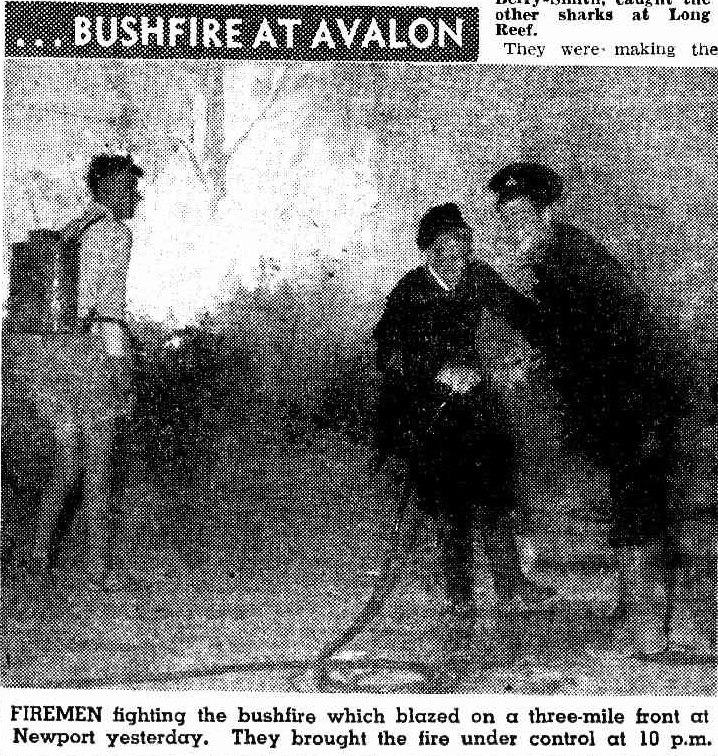
Firemen race 50yds. through flames (1954, October 5). The Daily Telegraph (Sydney, NSW : 1931 - 1954), p. 1. Retrieved from http://nla.gov.au/nla.news-article248946707
The Bilgola Plateau - Newport Plateau
In 1832 Surveyor Larmer reported that, “The first person that squatted upon the land E of Stream [McMahon’s Creek, Bilgola Plateau and Newport] was Isaac Marsh then in the service of Jeremiah Bryant - he cleared part of the land on the West side of stream for Bryant and on the East side for himself. Michael Sullivan was also employed by Jeremiah Bryant to clear the land W of the Stream.”
Jeremiah Bryant was still living at “Belgoula” at the time of the 1841 census. He purchased 5 acres from Henderson on 2 October 1841 for £5, the same 5 acres being purchased by John Farrell II on 7 January 1848, also for £5. Mr. Bryant died in 1856. [2.]
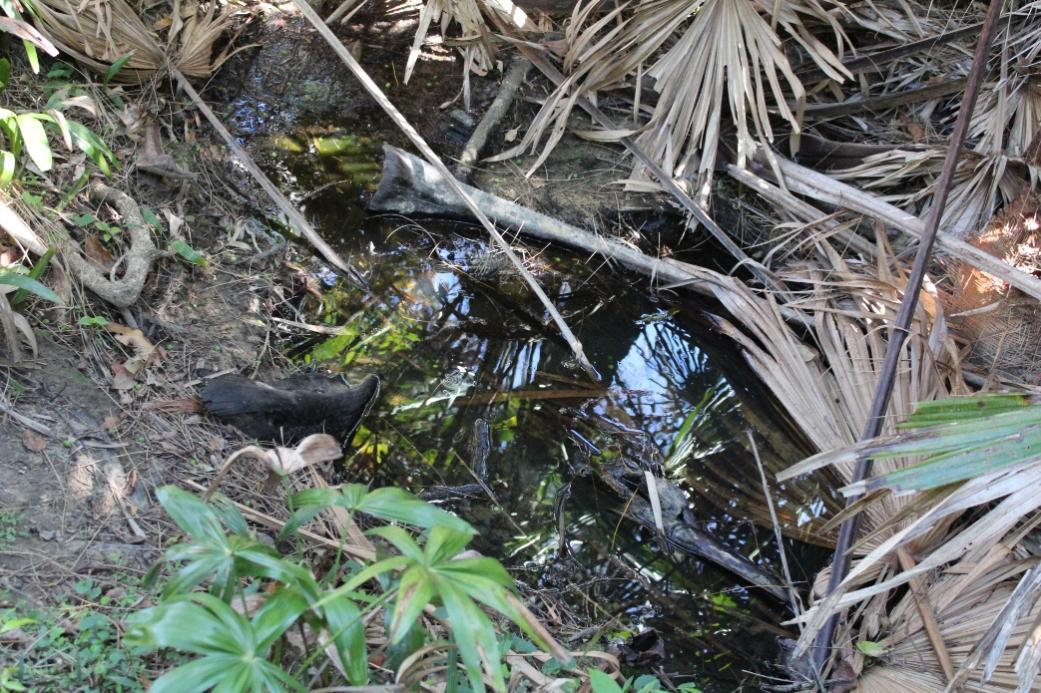
McMahon's creek today - above Porters Reserve, Newport - Visit: Newport's Bushlink 'From The Crown To The Sea' Paths: Celebrating Over 20 Years Of Community Volunteer Bushcare Results
On the 6/2/1928 – Warringah Shire Council Minutes of Meetings records:
Resolved (Cr. Hitchcock, Cr. Simpson) that the amended Newport plan of part of Crown of Newport Estate, eliminating the Estate road shown to extend to the southern boundary, on a previous plan, be approved. Quarter 5. Resolved (Or. Hitchcock, CrL SOc) that he plan of Session proposed deviation of Quarter-session Road, Church Point (Widening), be approved, and the owners of the land affected be written to and asked if they are prepared to give the land for the dedication. 6.The report regarding Mr. P. Towle's claim for compensation for the removal of about 30 cubic yards of loam from his land in Bonnie View Estate, was adopted, and it was decided to send a copy to his Solicitors, who had written on the matter.
Edith.Lilja. 8/2/28. Pointing out that the Council is draining the water from Barrenjoey Road on to her land at Bilgola, causing damage. Referred to the Overseer.. 34. Y. Cleland. 6/2/28. Again urging that Taylor's Point jetty be extended. To be informed that there are no funds available for the work.
A familiar panorama tops the Crown of Newport Estate's 1st subdivision:




.jpg?timestamp=1553020400251)
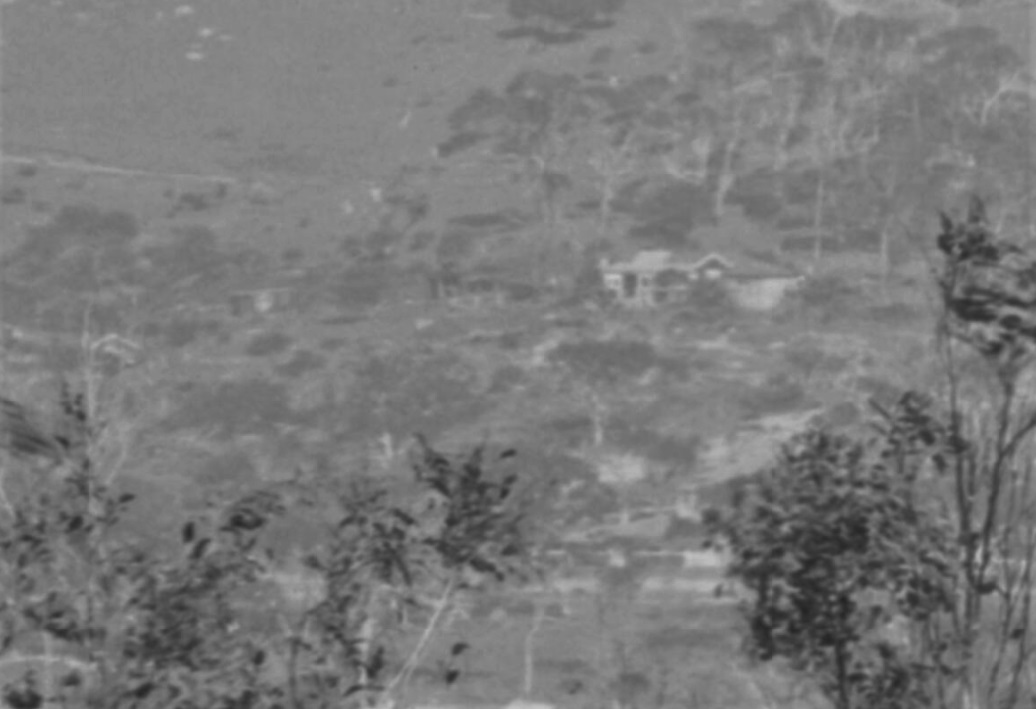
Panorama of Newport, New South Wales [picture] / EB Studios; between 1917 and 1930, Image No.: 6154744, courtesy National Library of Australia. And enlarged sections from http://nla.gov.au/nla.obj-162419378

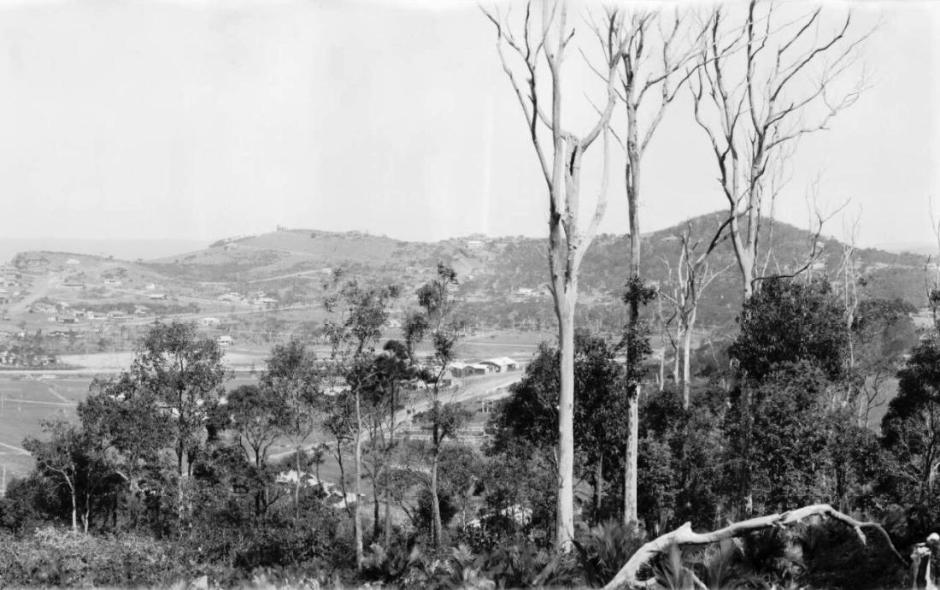
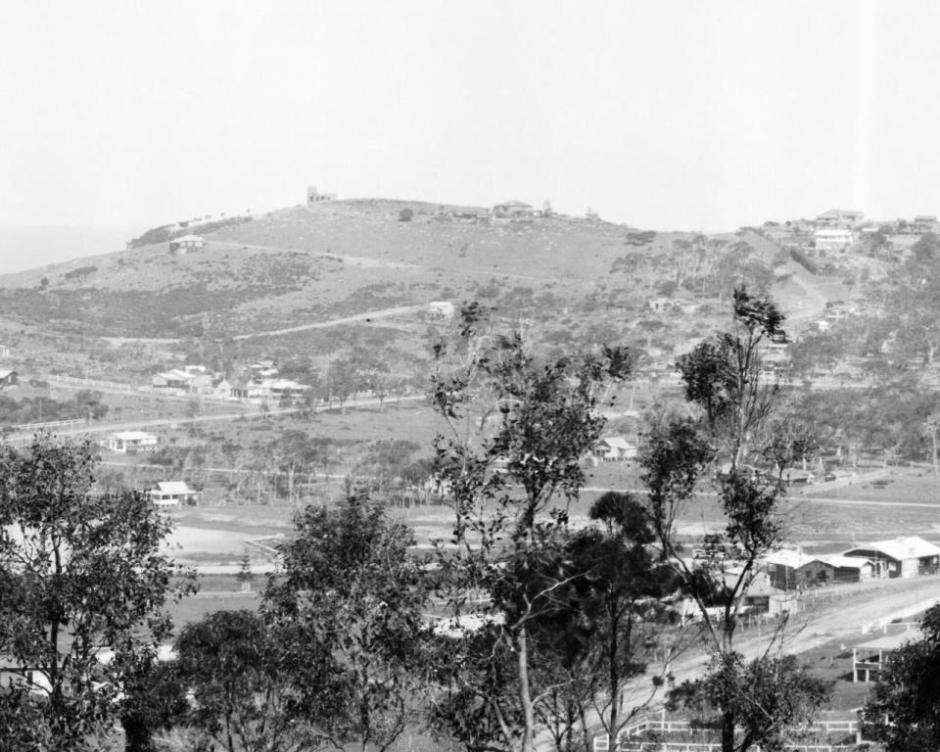
Sections from Panorama of Newport, New South Wales [picture] / EB Studios; between 1917 and 1930, Image No.: 6154744, courtesy National Library of Australia.

NSW Records & Archives Company Registration:
Australian & New Zealand Real Estate Co [Company] Ltd [Limited]- Contents Date Range ; 01-01-1926 to 31-12-1939
TIETYENS MCLACHLAN & GAVAN DUFFY, Attorney solicitor & proctor conveyancer & notary, Albury & Tumbarumba, 16 Mar 1903, Were: TIETYENS, Frederick William; HOOD, Henry Warrington; MCLACHLAN, Hubert Donald; GAVAN DUFFY, Frank Brendan - also had offices in Sydney from 1920 on.
The Australian and New' Zealand Real Estate Co., Ltd. — Nominal capital, £5,000, in £1 shares. Objects: To carry on business as auctioneers, house agents, land and estate agents, valuers, brokers, and general agents.
Subscribers: F. P. Smith, Eileen S. Smith, Lockie Gannon, W. H. Hume, J. Watson, N. C. Smith, J. A. Clapin. Registered office, Sydney. Registered Sydney 16/7/26. REGISTERED COMPANIES. (1926, July 21). Daily Commercial News and Shipping List (Sydney, NSW : 1891 - 1954), p. 5 (Weekly Summary.). Retrieved from http://nla.gov.au/nla.news-article159994544
Tenders Called: Newport — Formation, metalling, etc., of Grand View Drive, Crown of Newport Estate November 8 — Locke, Gannon & Worley, Commercial Union Chambers, Hunter Street, Sydney. Advertising (1926, November 3). Construction and Local Government Journal (Sydney, NSW : 1913 - 1930), p. 4. Retrieved from http://nla.gov.au/nla.news-article109639720
TENDERS FOR FORMATlON, METALLING, ETC
GRAND VIEW DRIVE, CROWN OF NEWPORT ESTATE NEWPORT
TENDERS for the above will be received up to 4pm MONDAY, November 9th
Plans and specifications may be seen at our office
Lowest or any tender not necessarily accepted
LOCKIE, GANNON, and WORLEY,
Civil Engineers and Surveyors,
3rd floor, Commercial Union Chambers
_Hunter street SYDNEY.Advertising (1926, November 4). The Sydney Morning Herald (NSW : 1842 - 1954), p. 7. Retrieved from http://nla.gov.au/nla.news-article16320109
Tenders Newport — Formation, metalling, walling, etc., of 98 chains of roadway, Crown of Newport Estate .Advertising (1927, March 2). Construction and Local Government Journal (Sydney, NSW : 1913 - 1930), p. 4. Retrieved from http://nla.gov.au/nla.news-article108991340
Sydney Stud Ram Sales ... The New Zealand and Australian Land Co. took three big-priced rams, one at 550 guineas,- one at 375, and one at 220 guineas. The 550 guineas ram was one of the best-lookers in the whole learn. He is a get of 2-G, Wanganella's best son of the famous. 9-1 ;(sold for 5000 guineas to Goonong), and is a long, plain-bodied ram, with typical head and horns and a dense, covering of robust sire's wool. The 375-guinea purchase- is another son of the same great sire, and bears a close resemblance to 9-1. He looks a breeder, and his fleece is very evenly put on. The Pastoralist (1927, July 13). Sydney Mail (NSW : 1912 - 1938), p. 31. Retrieved from http://nla.gov.au/nla.news-article158296974
New Zealand and Australian Land Co., Ltd. - 8 per cent, for year ended March 31 (by cable). BUKIT KUBU RUBBER'S SMALLER EARNINGS. (1927, October 21). The Daily Telegraph (Sydney, NSW : 1883 - 1930), p. 22. Retrieved from http://nla.gov.au/nla.news-article246197739
OBITUARY
MR. W. H. HUME
At the Dubbo District Hospital, on Sunday, William Henry Hume, an old age pensioner, passed to his rest at the advanced age of 88 years. Deceased was a native of Mudgee, and lived all his life in the State. He was well-known and highly respected in the (Gil-gandra district. His wife predeceased him some years ago, but a grown-up family of five sons and two daughters survive. They are William, Thomas, George, Arthur, Joseph, Ada and Catherine. The funeral took place to the Catholic portion of the local cemetery at 3 o'clock yesterday afternoon, where Rev. Father C. Corcoran performed the burial service in the presence of sorrowing re-latives and friends. Shakespeares had charge of the funeral. OBITUARY (1932, June 7). The Dubbo Liberal and Macquarie Advocate (NSW : 1894 - 1954), p. 1. Retrieved from http://nla.gov.au/nla.news-article131613115
OBITUARY
MR. N. C. SMITH
The death occurred at Moss Vale on Sunday last of Mr Norman Clyde Smith, manager of the Bank of New South Wales at Cooma for the past 10 years, and manager of the West Wyalong Branch for six years prior to going to Cooma. Mr. Smith, who was 60 years of age, has been ill for the past year, and has been on sick leave for that period. For the past few months he has resided at Manly, and just recently Mr. and Mrs. Smith went to Moss Vale, where their son, Mervyn had been transferred to the staff of The Bank of N.S.W.
The late Mr Smith was a man of high character and genial disposition winning the high esteem of all sections of the communities in which he has resided from time to time. He was also a public-spirited citizen, taking an active part in all patriotic and public organisations. Many friends in, West Wyalong and district will deeply regret the passing of this estimable citizen.
Deceased is survived by Mrs. Smith, two sons and one daughter. The sons are Mervyn, of Moss Vale, and Geoffrey, of Melbourne. The daughter is Mrs. H. Hain, of Cooma. One son, Eric, was accidentally drowned in a whirlpool near Trangie some years ago. OBITUARY (1946, March 7). The West Wyalong Advocate (NSW : 1928 - 1954), p. 1. Retrieved from http://nla.gov.au/nla.news-article185755250
A school for Bilgola Plateau
By the late 1950's it became apparent that although the Avalon Public School had capacity for more students, the area was attractive because it was affordable for young families, and this necessitated the providing of a school within an easier distance for all those young little legs.
By September 1960 land was being resumed in order to facilitate the construction of a brand new school, with room to play, atop Bilgola - although still called 'Newport Heights' and even 'Avalon Heights' this was, in fact Bilgola's Heights:
NOTIFICATION OF RESUMPTION OF LAND UNDER
THE PUBLIC WORKS ACT, 1912, AS AMENDED
IT is hereby notified and declared by His Excellency the Governor, acting with the advice of the Executive Council, that so much of the land described in the Schedule hereto as is Crown land is hereby appropriated, and so much of the said land as is private property is hereby resumed, under the Public Works Act, 1912, as amended, for the following public purpose, namely, a Public School at NEWPORT HEIGHTS and that the said land is vested in the Minister for Education as Constructing Authority on behalf of Her Majesty the Queen.
Dated this 24th day of August, 1960.
K. W. STREET,
by Deputation from His Excellency the Governor.
By His Excellency's Command,
ERN WETHERELL, Minister for Education.
The Schedule
All that piece or parcel of land situate in the Shire of Warringah, parish of Narrabeen and county of Cumberland, being part of the land comprised in Certificate of Title, volume 7,148, folio 94 and also being part of portion 20: Commencing at a point in a north-western side of Plateau-road being also the north-eastern extremity of a south-eastern boundary of lot 45 in deposited plan 12,838; and bounded thence on part of the south-east by that side of that road bearing 190 degrees 47 minutes 30 seconds, 90 feet 6 inches to the south-eastern extremity of a north-eastern boundary of lot 49 in said deposited plan 12,838; on parts of the southwest by the said and another, north-eastern boundary of that lot bearing successively 329 degrees 18 minutes 30 seconds, 17 feet 111 inches and 287 degrees 49 minutes 30 seconds, 181 feet If inches; again on the south-east by the northwestern boundaries of lots 49 to 55 inclusive in said deposited plan 12,838 bearing 197 degrees 49 minutes 30 seconds, 347 feet 7 ½ inches; again on parts of the south-west by northeastern boundaries and part of a north-eastern boundary of lot 7 in deposited plan 28,117 bearing successively 335 degrees 45 minutes 40 seconds, 289 feet 0£ inch 324 degrees 43 minutes 30 seconds, 589 feet 0 inches and 324 degrees 47 minutes 30 seconds, 40 feet; on part of the north-west by a line bearing 54 degrees 30 minutes 10 seconds, 530 feet Of inch to a point in the north-western boundary of a Reserve for Public Recreation of 5 acres 0 roods 211 perches, as shown in said deposited plan 12,838; again on the south-east and on parts of the north-east by the said north-western and by southwestern boundaries of that Reserve bearing successively 197 degrees 49 minutes 30 seconds, 198 feet, 144 degrees 43 minutes 30 seconds 290 feet and 107 degrees 49 minutes 30 seconds, 100 feet; again on the south-east by the north-western boundaries of lots 42 to 45 inclusive in said deposited plan 12,838 bearing 197 degrees 49 minutes 30 seconds, 231 feet 8i inches; again on the north-east by the south-western boundary of said lot 45 bearing 107 degrees 49 minutes 30 seconds, 221 feet 05 inches; and again on the north-west by the said south-eastern boundary of that lot bearing 59 degrees 18 minutes 30 seconds, 15 feet 10? inches to the point of commencement; having an area of 6 acres 3 roods 13 ½ perches or thereabouts and said to be in the possession of Bilgola Plateau Pty. Limited. (833) NOTIFICATION OF RESUMPTION OF LAND UNDER THE PUBLIC WORKS ACT, 1912, AS AMENDED (1960, September 2). Government Gazette of the State of New South Wales (Sydney, NSW : 1901 - 2001), p. 2764. Retrieved from http://nla.gov.au/nla.news-article220315750
They gave a bit back:
PUBLIC INSTRUCTION ACT OF 1880, AS AMENDED
Notification of Rescission of Resumption
Rescission of Resumption of Land Acquired for Public School
Purposes at Newport Heights, New South Wales
IN pursuance of the provisions contained in subsection (1) of section 4 a of the Public Instruction Act of 1880, as amended, His Excellency the Governor, with the advice of the Executive Council, doth by this notification rescind the notification of resumption of land under die Public Works Act, 1912, as amended, dated the 24th August, 1960, and published in the Government Gazette No. 102 of the 2nd September, 1960, insofar as such notification relates to the land described in the Schedule hereunder.
The Schedule
All that piece or parcel of land situate in the Shire of Warringah, parish of Narrabeen and county of Cumberland, being part of the 6 acres 3 roods 131/2 perches parcel of land resumed for Newport Heights Public School by notification in Gazette of 2nd September, 1960, shown in plan catalogued Ms. 17,712 Sy.: Commencing at the northernmost corner of the said 6 acres 3 roods 13£ perches parcel of land; and bounded thence on the south-east by the northernmost south-eastern boundary of that land bearing 197 degrees 49 minutes 30 seconds 198 feet; again on the south-east by a line bearing 238 degrees 14 minutes 372 feet 51 inches to the westernmost south-western boundary of the said 6 acres 3 roods 13 perches parcel of land; on the south-west by part of that boundary bearing successively 324 degrees 43 minutes 30 seconds 54 feet £ inch and 324 degrees 47 minutes 30 seconds 40 feet to the westernmost corner of that land; and on the north-west by the northernmost north-western boundary of that land bearing 54 degrees 30 minutes 10 seconds 530 feet 1 inch to the point of commencement,—and having an area of 1 acre 19 ½ perches or thereabouts.
Dated at Sydney, this twenty-seventh day of June, 1962.
E. W. WOODWARD, Governor.
By His Excellency's Command,
(4828) ERN WETHERELL, Minister for Education. PUBLIC INSTRUCTION ACT OF 1880, AS AMENDED (1962, July 13). Government Gazette of the State of New South Wales (Sydney, NSW : 1901 - 2001), p. 2024. Retrieved from http://nla.gov.au/nla.news-article220322926
Bilgola Heights Plateau School officially announced:
Sydney, 10th January, 1964.
NEW PUBLIC SCHOOL
IT is hereby notified for general information in accordance with the provisions of the 34th section of the Public Instruction Act of 1880, as amended, that it has been decided to establish a school on the Bilgola-Avalon Plateau to be known as BILGOLA HEIGHTS PUBLIC SCHOOL.
E. WETHERELL, Minister for Education.
NEW PUBLIC SCHOOL (1964, January 10). Government Gazette of the State of New South Wales (Sydney, NSW : 1901 - 2001), p. 26. Retrieved from http://nla.gov.au/nla.news-article220393857
By September 1964 Tenders for work were being advertised:
Bilgola Heights Public School—Levelling and preparation of site. (Specifications available, £1 each.) Department of Public Works—Tenders for Works (1964, September 25). Government Gazette of the State of New South Wales (Sydney, NSW : 1901 - 2001), p. 3034. Retrieved from http://nla.gov.au/nla.news-article220343176
Bilgola Heights Public School—Supply and Laying of Asphaltic Concrete. - Department of Public Works—Tenders for Works (1965, April 15). Government Gazette of the State of New South Wales (Sydney, NSW : 1901 - 2001), p. 1267. Retrieved from http://nla.gov.au/nla.news-article220391226
Bilgola Plateau Public School—Aluminium Roller Shutters Department of Public Works—Tenders for Works (1967, May 5). Government Gazette of the State of New South Wales (Sydney, NSW : 1901 - 2001), p. 1443. Retrieved from http://nla.gov.au/nla.news-article219983981
Bilgola Heights Public School—Supply and Laying of Kikuyu Sods. (Specifications $1.) Department of Public Works—Tenders for Works (1967, June 30). Government Gazette of the State of New South Wales (Sydney, NSW : 1901 - 2001), p. 2376. Retrieved from http://nla.gov.au/nla.news-article219985911
NOTIFICATION OF RESUMPTION OF LAND UNDER
THE PUBLIC WORKS ACT, 1912, AS AMENDED
Acquisition of Easement
IT is hereby notified and declared by His Excellency the Governor, acting with the advice of the Executive Council, that an easement or right to use the surface, subsoil, and undersurface of the land described in the Schedule hereto for the construction and maintenance of drainage channels and of tunnels and pipes for the conveyance of water and sewage, is as to so much of the said land as is Crown land, hereby appropriated, and as to so much of the said land as is private property, hereby resumed, under the Public Works Act, 1912, as amended, for the following public purpose, namely, the disposal of surface water at the BILGOLA PLATEAU Public School, and that the said easement or right is vested in the Minister for Education as Constructing Authority on behalf of Her Majesty the Queen.
Dated this seventh day of January, one thousand nine hundred and seventy.
K. W. STREET,
By Deputation from His Excellency the Governor.
By His Excellency's Command,
C. B. CUTLER, Minister for Education.
The Schedule
All that piece or parcel of land situate in the Shire of Warringah, Parish of Narrabeen, and County of Cumberland, being the site of the proposed drainage easement 6 feet wide shown in Deposited 'Plan 539075, and said to be in the possession of Peter John Thompson and others. NOTIFICATION OF RESUMPTION OF LAND UNDER THE PUBLIC WORKS ACT, 1912, AS AMENDED (1970, January 30). Government Gazette of the State of New South Wales (Sydney, NSW : 1901 - 2001), p. 290. Retrieved from http://nla.gov.au/nla.news-article220054374
GEOGRAPHICAL NAMES ACT, 1966
HAVING reviewed place names on Central Mapping Authority 1: 25,000 maps of BROKEN BAY and MONA VALE (within SYDNEY 9130-1, 1:100,000 map area) within the area bounded by latitudes 33° 30', 33° 45', and longitudes 151° 30', 151° 15/ Counties Cumberland and Northumberland, Shires Hornsby, Gosford and Warringah, Land Districts Metropolitan and Gosford, the Geographical Names Board of New South Wales has this day assigned the following recorded names as geographical names.
Bilgola
Bilgola Beach
Bilgola Creek
Bilgola Head
Bilgola Plateau
Bilgola Plateau Public School.
GEOGRAPHICAL NAMES ACT, 1966 (1977, January 21). Government Gazette of the State of New South Wales (Sydney, NSW : 1901 - 2001), p. 221. Retrieved from http://nla.gov.au/nla.news-article220121460
Freda and Walter (Wally) Wardle, who also ensured the Kalori yacht sailed at Pittwater High School, were among those getting this school going. In Wally's Profile he and Freda explained:
Freda; I was (teaching) at Bilgola Plateau. It’s an excellent school.
Walter: I was the first President of the P&C Association there. I was teaching there in 1965 and until 1980, then Deputy of Infants at Nth Narrabeen till 1987 then I returned to Bilgola Plateau. The first P and C Meeting was held at Avalon school because they were still building Bilgola, we’d only been in the district six months, and a near neighbour called for nominations for chairperson, called out my name, and the Inspector who was there said “Yes, Wal, you do it.”
There were no other nominations so I ended up doing it; it was the best thing that ever happened because we got to meet everybody very quickly; it helped us settle into the community. These were the days before there was water on too; we had tanks when we had the house built; two big tanks at the back.
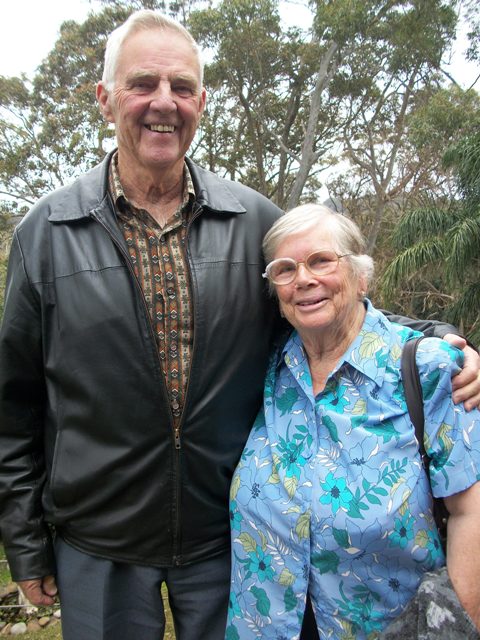
Walter and Freda Wardle - A J Guesdon photo.
In 2015 the school celebrated its 50th anniversary: Time Capsule Unearthed at Bilgola Plateau Public School - Celebrating 50th Anniversary NB: The principal found out after this time capsule was unearthed that another has been buried, in 1970, in the school grounds.
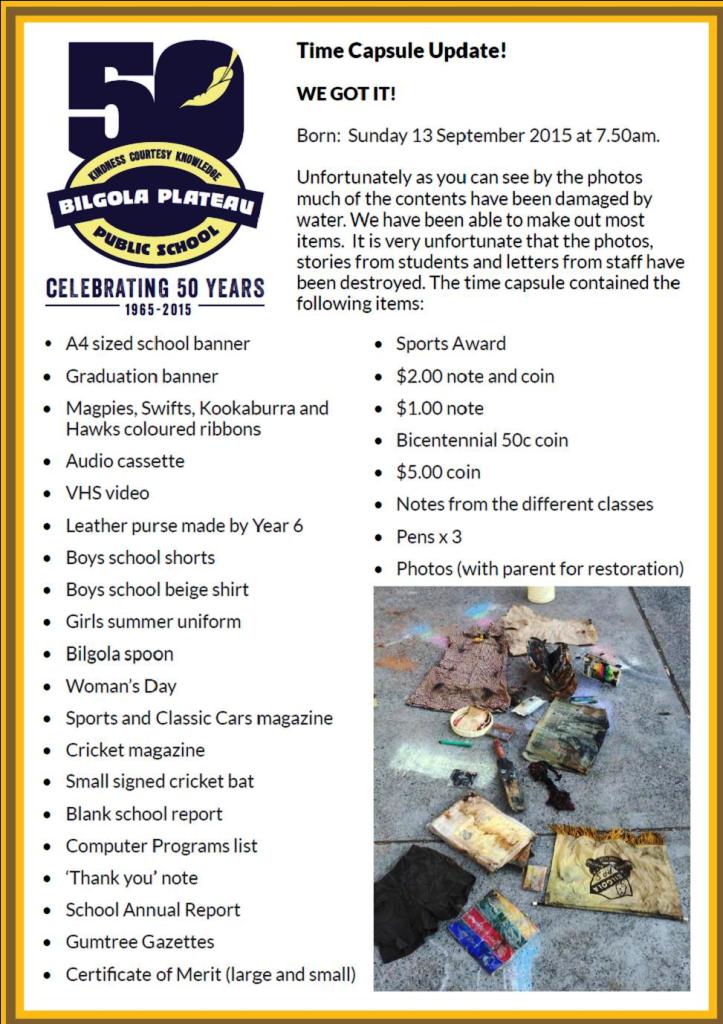
where all the subdivisions began
When Rev. J J Therry passed away in 1864 the executors of his will were members of the Society of Jesus, or Jesuit priests.
In his will he desired “that the Irish Jesuits and they alone should have the management of the whole of my property for the purpose of appropriating its proceeds, whether of sales or rents or in any other form, for religious, charitable, and educational purposes.” A series of trustees carried out the provisions of the will.
Therry had other property besides his Pittwater estate, and land sales were made elsewhere before the trustees turned their attention to Pittwater.
Therry had expressed the wish to have a village, to be called Josephton, established at Pittwater, and the “Marine Village of Brighton (Josephton) Pitt Water” was subdivided in 1871. The first sale appears to have been to John Collins on 10 October 1872. Collins had built a cottage on Lot 1 of section XIII, which lot was bounded by John Street on the south, William Street on the west, and the creek on the north. He paid the trustees £5, but the value of the lot with its improvements was £40.
The lot was to be conveyed to Hannah Andrews, the wife of John Andrews, in exchange for the Andrews’ 50 acres at the Basin, on the opposite side of Pittwater. Later, John Collins’ widow Honorah conveyed this land to her son, Patrick John Collins, on 28 September 1887.
John Collins purchased Thomas Warner’s 50 acre grant at Stokes’ Point from George Green on 21 October 1870 for £70. On the same day he sold it to the Revd. Joseph Dalton, one of the trustees of Therry’s will, for £100. [2.]
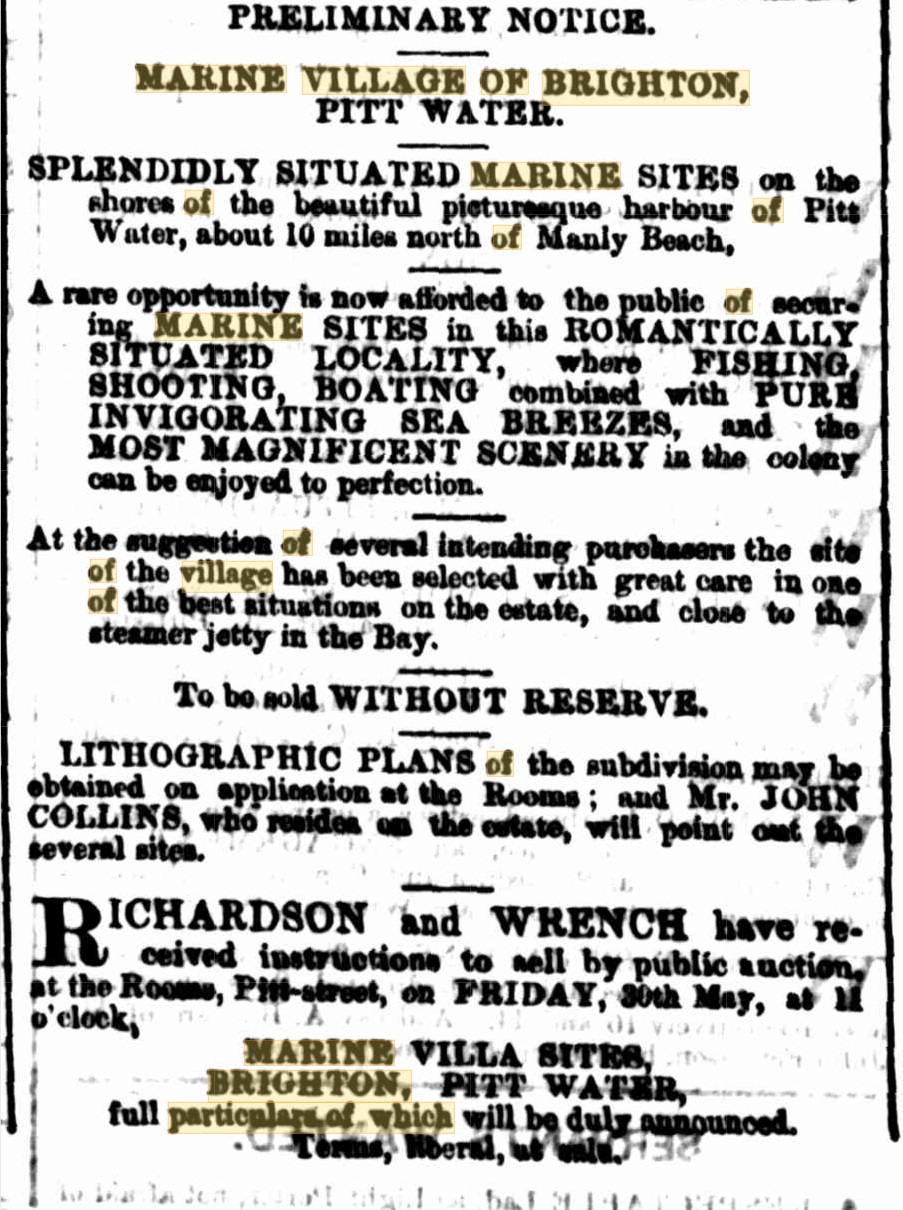
Advertising (1873, May 14). The Sydney Morning Herald (NSW : 1842 - 1954), p. 7. Retrieved from http://nla.gov.au/nla.news-article13309078
MARINE VILLAGE OF BRIGHTON
PITT WATER.
SPLENDIDLY SITUATED MARINE SITES on the shores of the beautiful picturesque harbour of Pitt Water, about 10 miles north of Manly Beach. A rare opportunity is now afforded to the public of securing MARINE SITES in this ROMANTICALLY SITUATED LOCALITY, where FISHING, SHOOTING, BOATING combined with PURE INVIGORATING SEA BREEZES, and the MOST MAGNIFICENT SCENERY in the colony can be enjoyed to perfection.
At the suggestion of several intending purchasers the site of the village has been selected with great care in one of the best situations on the estate, and close to the steamer jetty in the Bay.
WITHOUT RESERVE.
LITHOGRAPHIC PLANS of the subdivision may be obtained on application at the Rooms; and Mr. JOHN COLLINS, who resides on the estate, will point out the several sites.
RICHARDSON and WRENCH have received instructions to sell by public auction, at the Rooms, Pitt-street, on FRIDAY, 30th May, at 11 o'clock, MARINE VILLA SITES, BRIGHTON, PITT WATER.
These unrivalled sites will be acknowledged to occupy a convenient and remarkably pretty position on the waters of this beautiful inlet, and an inspection is invited prior to the sale. Advertising (1873, May 22). The Sydney Morning Herald (NSW : 1842 - 1954), p. 7. Retrieved from http://nla.gov.au/nla.news-article13318995
BELOW; Sections from (showing sales/owners) Marine Village of Brighton - John St, William St, George St (the Parade), Joseph St, Therry St, Patrick St, Elizabeth St, Queen St, [1871 Lithograph]. Item No: c053460043, courtesy State Library of NSW. Map 2
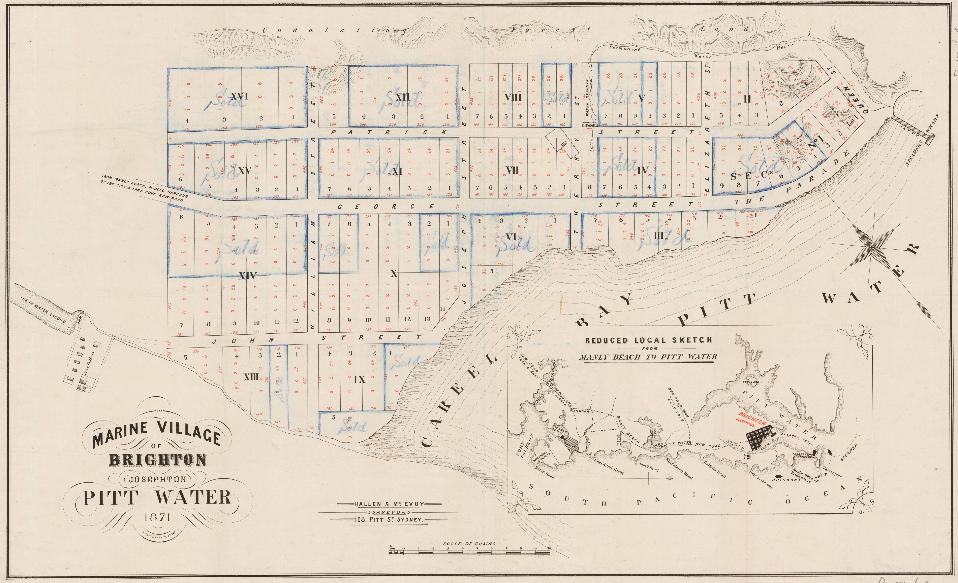
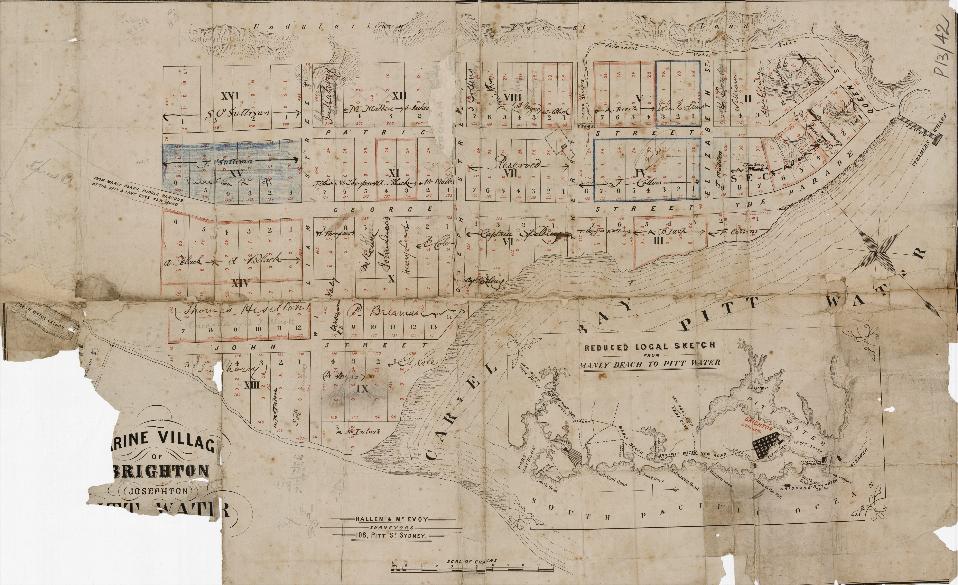
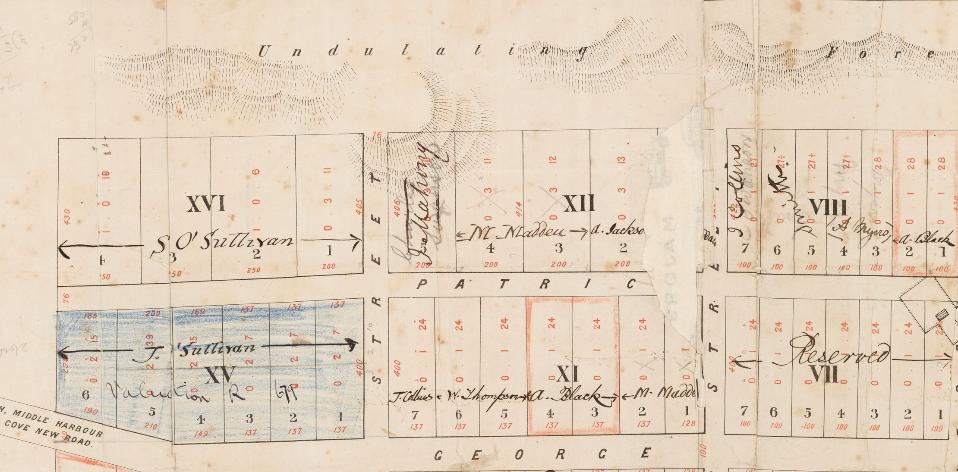
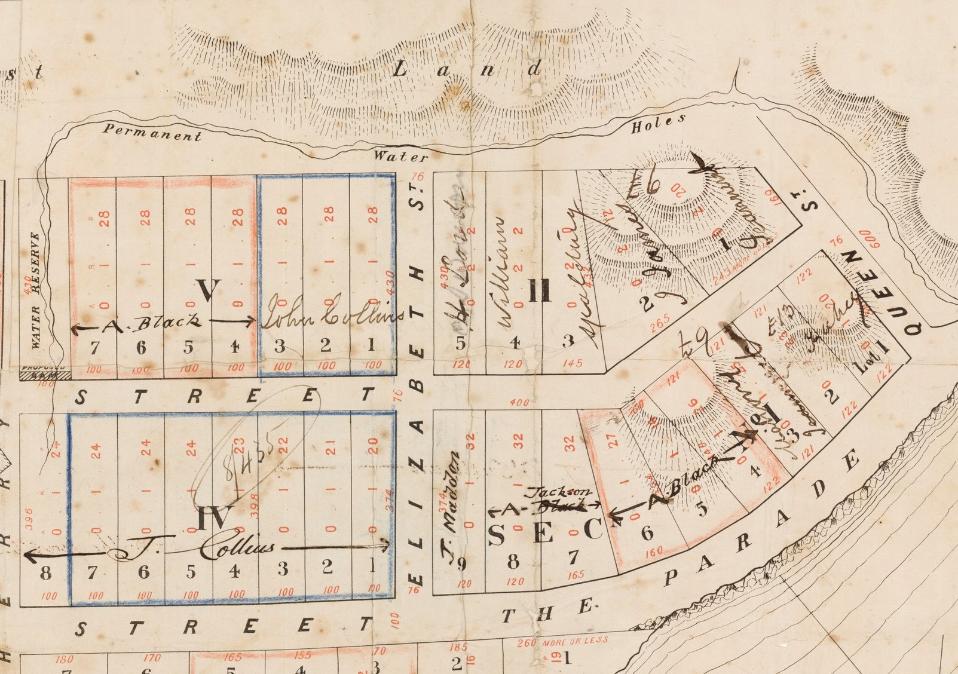
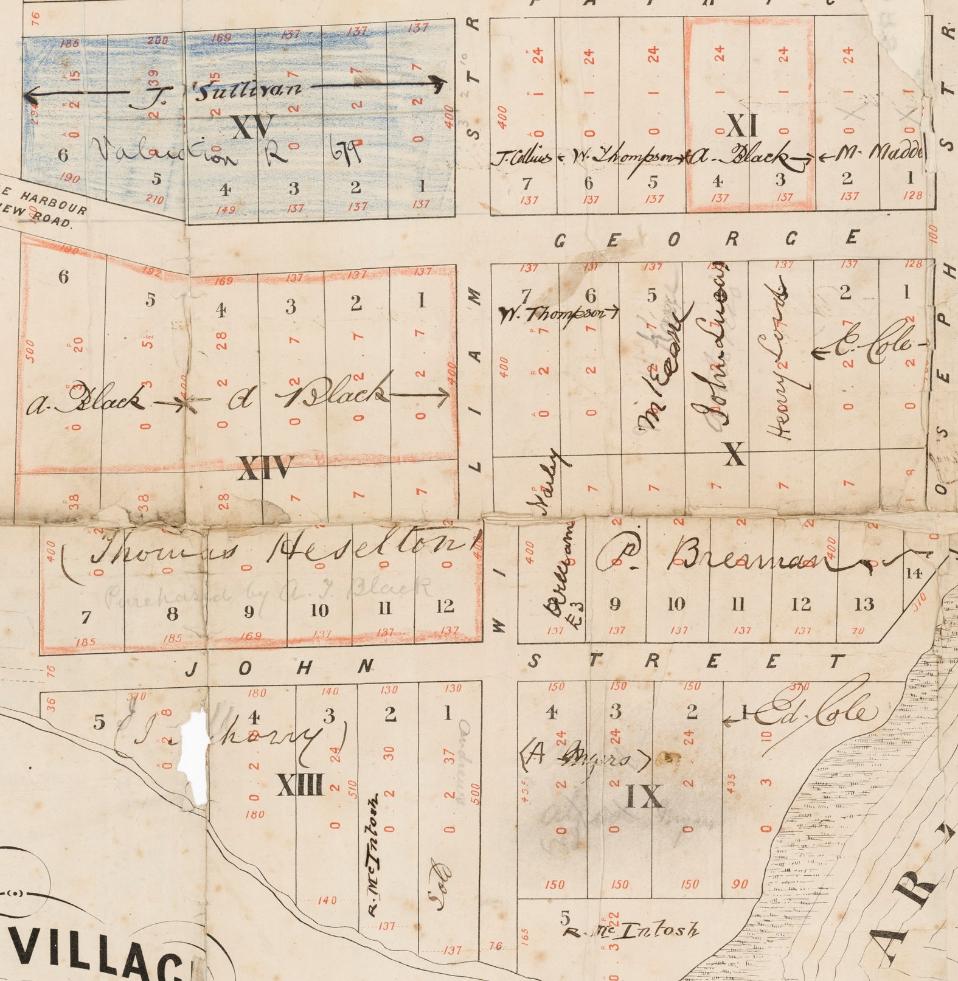
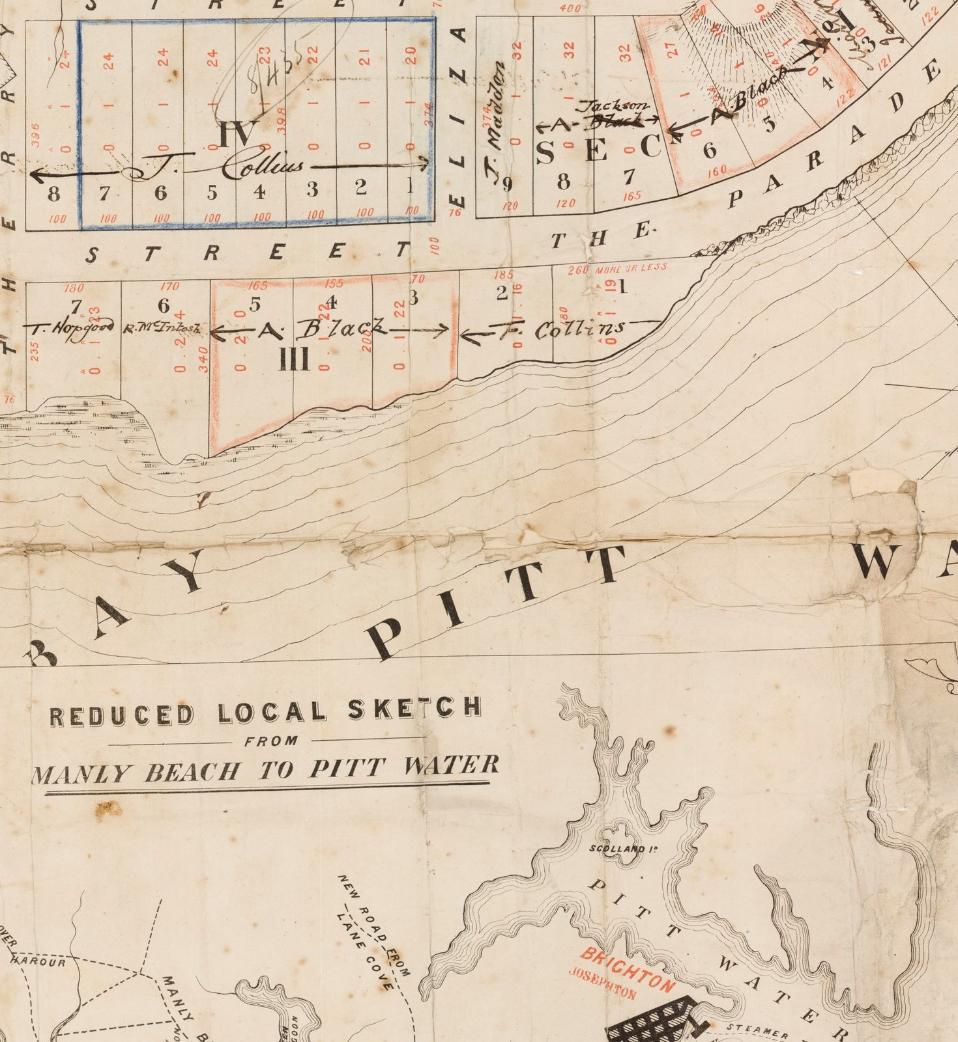
After the 1873 land sales The whole of Therry’s Pittwater estate was advertised for sale in the Sydney Morning Herald, April 17th 1880. On 22 May 1880 the Freeman’s Journal carried an article by Cruig Barry called “A Trip to Pittwater”. His friends had recently bought land on the estate, and were going to inspect their investment. As they approached,
“a splendid valley lay before us with the homestead of the patriarch of Pittwater, Mr John Collins, in the distance ... Mr Collins’ farm is situated in the valley, being flanked on the east by St. Michael’s Cave and the South Head of Broken Bay, and on the west by Mount St. Mary.
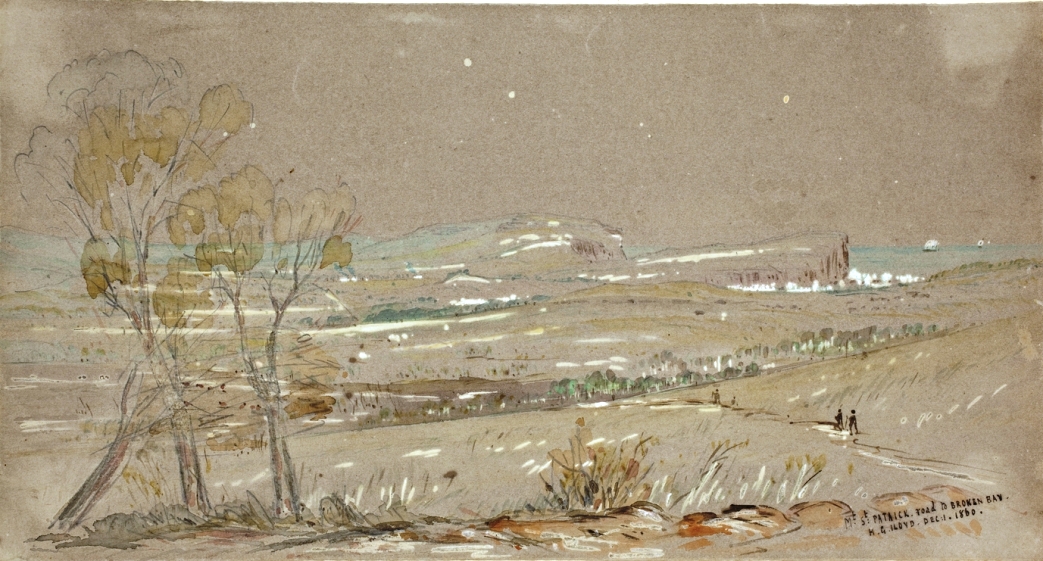
After doing full justice to Mr Collins’s hospitality, we sallied forth under his guidance to survey that part of the estate in which we were interested.” His friends had purchased land at Long Beach, on Pittwater, and they were delighted with their investment.
John Collins also purchased twelve lots in the Brighton (Josephton) subdivision, totalling approximately 4¾ acres, for £12 on 2 December 1880. On the same day his brother Frank purchased three lots for £9.
Sales may have been slow, for a further advertisement appeared in the Herald on the 9th and 12th of May 1881 advertising a sale by auction. At this auction, on Monday 16 May 1881, Collins’ farm, consisting of Block III (128 acres 1r.34p.) and Block IV (65 acres 0r. 32p.) of the North Division of the estate, were sold to Gustave Adolphe Lix, farmer, for £1018 10s 8d. [2.]
Mr Lix was also a purchaser of lands in Warriewood.
PITTWATER and CAREEL COVE.
The whole of the residue of
THE PITTWATER ESTATE.
Also,
STOKES POINT, which is now subdivided into VILLA SITES, fronting CAREEL COVE
and PITTWATER.
adjoining the Township of BRIGHTON, PITTWATER.
RICHARDSON and WRENCH have received instructions to sell by public auction, at the Rooms, Pitt-street, on MONDAY, 16th May, at 11 o'clock, The whole of the unsold lots of
THE PITTWATER ESTATE, as follows :
NORTH DIVISION.
TWO CHOICE FARMS.
No. III. Area. 128 ACRES 1 ROOD .14 PERCHES, having frontages to the PACIFIC OCEAN and the MAIN ROAD to BARRENJOEY, on which is the HOMESTEAD and, RESIDENCE now in the occupation of JOHN COLLINS, Esq.. and also the CELEBRATED CAVE.
No. IV. Area, 65 ACRES and 32 PRRCHES, adjoining the above, and which are the WELL-KNOWN SPRINGS.
SUBURBAN SITES.
Nos. 8 to 16 and 10 and 20, surrounding the TOWNSHIP OF BRIGHTON, in areas from 2 ACRES 3 ROODS 35 PERCHES to 9 ACRES 3 ROODS 10 PERCHES, having frontages to the MAIN PITTAVATER ROAD and other roads and streets, all 1 chain wide.
Nos. 1A and 2A. Areas. 5 ACRES 3 ROODS 21 PERCHES and 7 ACRES 34 PERCHES respectively, overlooking PITTWATER.
SOUTH DIVISION.
Nos. IV. and V. TWO FINE FARMS, areas 97 ACRES 3 ROODS 17 PERCHES, and 91 ACRES 2 ROODS 9 PERCHES respectively.
No. VI. A FARM of 127 ACRES 3 ROODS 29 PERCHES, near SALTPAN COVE and the TOWNSHIP of NEWPORT.
Lots 5 to 8 and 5A to 8A. EIGHT CHOICE VILLA SITES in PITTWATER, fronting LONG BEACH ; areas from 4 ACRES 2 ROODS 10 PERCHES to 17 ACRES 27 PERCHES.
Lots 9 and 11. TWO SMALL FARMS in REFUGE BAY; areas. 25 ACRES 1 ROOD 6 PERCHES, and 11 ACRES 1 ROOD 24 PERCHES.
Lots 16 to 21, and 24 and 25. S GRAND BLOCKS of RICH SOIL in CABBAGE-TREE VALE, on BILGOLA BEACH : areas, from 5 ACRES 2 ROODS 36 PERCHES to 21 ACRES 1 ROOD.
Lot 26. A SMALL FARM, fronting the RECREATION RESERVE on OCEAN BEACH ; area, 12 ACRES 3 ROODS 8 PERCHES.
STOKES' POINT, PITTWATER.
ADJOINING THE TOWN OF BRIGHTON, AT THE STEAMERS WHARF.
The whole of this Magnificent Point will be submitted in lots, as per lithograph, now published, viz..
Section A. 15 VILLA SITES; areas. 3 ROODS 17 PERCHES to 2 ACRES 20 PERCHES.
Section B. 14 VILLA SITES : areas. 1 ACRE 10 PERCHES to 6 ACRES 3 ROODS 32 PERCHES
Section C. 9 VILLA SITES. CAREEL BAY ; areas. 1 ACRE 3 ROODS 34 PERCHER to 4 ACRES 21, PERCHES
Section D. WATER FRONTAGE SITES; areas. 2 ACRES to 4 ACRES 21 PERCHFS. PITTWATER HARBOUR
Section E. 10 VILLA SITES, adjoining the TOWN OF BRIGHTON : areas. 1 ACRE 11 PERCHES to 4 ACRES 1 ROOD 23 PERCHES.
This subdivision is well worthy of attention, as there is no doubt that PITTWATER will become an important and attractive resort for our BUSINESS MEN requiring CHANGE OF AIR, QUIET, and REST from the busy turmoil of the city.
The communication between the city and Pittwater is now more frequent than formerly, besides having the coaches daily from MANLY BEACH, there are now commodious fast steamers plying regularly from the city.
The NORTHERN RAILWAY will pass within 7 miles of CAREEL COVE at Pittwater.
TERMS EXCEEDINGLY LIBERAL AT SALE.
LITHOGRAPHS are now READY FOR DISTRIBUTION.
Messrs. ELLIS and MAKINSON, Elizabeth-street, are Solicitors of the vendors. Day of Sale, MONDAY NEXT. Advertising (1881, May 12). The Sydney Morning Herald (NSW : 1842 - 1954), p. 9. Retrieved from http://nla.gov.au/nla.news-article13479502
The land sales from the 1881 subdivisions are listed as:
Pittwater estate, subdivision of Father Therry's grant, as follow., viz.:—
Stokes Point: Lots 1 and 11, section A, in area 3 acres 0 roods 34 perches, L40 3s Id — Mr. I. J. Josephson, purchaser ; lot 15, section A, 2 acre 0 roods 20 perches, L24I 8s 9d ; lots 3 and 4, section A, 2 acres 3 roods 36 perches, L30 11s 7d — Mr. Francis ; lot 13. section A, 1 acre 0 roods 33 perches, L12 13 3d — Mr. S. .Swain ; lot 14, section A, 1 acre 1 rood 30 perches, L15 Is 10d ; lot 12. section A, 1 acre 0 roods. 17 perches, LI1 12-5 4d — Mr. H. .Solomon : lot 2. section A, I acre 0 rood 11 perches. Ll l It's 3d — Mr. I. J. Josephson ; lot 10, section A. 1 acre 2 roods Ifi perchc-, 1/22 S;— Mr. J. Cunningham ; lots 7 to 9, section A, 3 acres b roods 23 perches, LJ0 12s fid — Mr. F. Smith ; lots 5 and fi, section A, 3 acres I rood 21 porches, LlO Ills— Mr. .J. Cunningham.
Section B, lot 1 and 14, 2 acres 2 roods 4 perches, L22 Ms fid — Mr. R Symons ; lots 2 and 13, 2 acres 3 roods 27 perches, J/23 7s — Mr. J. Hodgson; lots 3 and 12, 3 acres 1 rood Ifi perches, LIS 8s fid— Mr. W. Waterhouse ; lot 4 and 1 1, 7 acres 0 roods 17 perches, L35 Km 7d — Mr. G. Harrison ; lots 5 and 10, 8 acres 2 roods 22 perches, L43 3s 3d — Mr. M. Bayley ; lot7, 6 acres 3 roods 22 perches, L41 14s — Hon, J. Lucas ; lot 6,4 acres 2 rood 21 perches, L23 3 Id — Mr. A. Myers ; lots 8 and 9, 12 acres 29 perches. L48 14s 6d - Mr Francis
Section C : Lot 1, 1 acre 3 roods, 24 perches L57 19s; Lot 9 3 acres 0 roods 30 perches, L108 7s 6d - Mr. R. Symons; lot 2,1 acre 3 roods 34 perches, L37 5s 9d; lot 3 2 acres 2 roods 4 perches L44 3s 9d - Dr. Milford; lots 4 and 5, 5 acres 1 rood 23 perches, L80 18s 1d - Mr. W. Waterhouse; lot 8, 2 acres 1 rood 16 perches, L50 10s 6d; lot 6, 4 acres 0roods 5 perches, L66 10s 4d - Mr. Francis, lot 7 , 2 acres 2 roods 9 perches L43 9s 1d - Mr. J. Blannie.
Section D: lots 5 to 7, 10 acres 1 rood 25 perches, L156 1s 10d — Mr. M. Bayley; lot 1. 1 acre 3 roods 33 perches, L2fi 1 8s .Jd ; lot 4, I acre 0 roods 21 perches, L5 1 12s 10d — Mr. Francis; lot 3, 2 acres 2 roods 13 pcrcncs, L25 lfis 3d — Mr. G. A. Shipley; lot 2, 2 acres 2 roods 31 perches. LSI 3s lOd — Mr. J. Blannie.
Section E: lots 4 and 7, 3 acres 0 roods 38 perches, L12 Is 8d — Mr. F. Grishrook; lot 8, 1 acre 3 roods 1 perch, Lll Is — Mr. F. Collins lots 3 and 10, U acres 2 roads 11 pcrche?, L28 Ms ; lots 5 and fi, 7 acres 3 roods G perches, LIG Ms Gd — Mr, J. Waudels ; lot 1, J acre 2 roods 30 perches, L20 5s — Mr. J. Hodgson ; lots 2 nnd 3, 2 acres 1 rood 37 perches, L21 Ifis 3d— Mr. E. Fisher.
North Division: Lots 19 and 20, 14 acres 0 roods 14 perches, L66 18s 6d; lots 12, 13, 15, 16, 21 acres 0 roods 26 perches L53 3s Md— Mr. Francis; lot 14, 5 acres 2 roods 23 perches. L2211s 6d — Mr. H. E. Castle ; lot 8, 4 acre 1 rood 23 perches, L48 1 Is ; lot 7, 3 acres 1 rood 28 perches, L13 0 3d — Mr.R. Symons; lot 9, 7 acres 1 rood 35 perches, 1,21 fin' 5d — Mr. R. M'lntosh; lots 10 and 11,11 acrcn 3 roods perches, L35 7.s 3d — Hon. J. Lucas; lots 1a and 2a, 13 acres O roods 18 perches, L45 17s 10d — Messrs. Kearey Brothers.
Farms: Lot 3, 128 acres 1 rood 31 perches, with homestead thereon, L770 15s Gd — Mr. G. Lix ; lot 4, 65 acres 0 roods 32 perches, L247 15s 2d — Mr. F. Smith.
South Division: Lot 5, 4 acres, 2 roods 10 perches, L3fi 10s; lots 6 to 8, 27 acres 0 roods 12 perches, L150 9s — Mr. Jones; lots 5a to 8a, 37 acres 1 rood 13 perches, L149 6s 6d — Mr. Francis; lot 11, 11 acres 1 rood 21 perches, L57 — Mr. J. W. Warren ; lot 9, 25 acres 1 rood 6 perches, L57 17s 11d— Dr. Milford; lot 26, 12 acres 3 roods 8 perches, L64 — Mr. C. E. Jeannerett ; lots 16 to 21, 21 and 25, 103 acres 1 rood 17 perches, L310 1s 4d ; farm, L44 3s 3d— Mr. Francis; lot 22, 11 acres 0 roods 34 perches, L14 18s — Mr. Renwick. SALES OF PROPERTY. (1881, May 24). The Sydney Daily Telegraph (NSW : 1879 -1883), p. 2. Retrieved from http://nla.gov.au/nla.news-article238300369
Further sales in 1882:

Careel Bay Pittwater - No boundaries shown, 1882. Item No: c053460084, courtesy State Library of NSW.
EIGHT MAGNIFICENT BLOCKS OF LAND, CAREEL BAY, PITTWATER, SURVEYOR'S DESCRIPTION. W PRITCHARD will sell by auction, THIS DAY, Thursday, JULY 6th, at 11 o'clock, in his Rooms, 289 George-street. The above magnificent blocks of land.
SURVEYOR'S DESCRIPTION. The land forms the pick of the late Rev. Therry's PITTWATER ESTATE, on CAREEL BAY. It is with regard to beauty of scenery, salubrity of climate, and fertility of soil, unsurpassed in this charming locality, and overlooks the tranquil waters of CAREEL BAY and PITTWATER HARBOUR, backed by the bold MOUNTAINS of the WORLD-FAMED HAWKKESBURY on the WEST ; and commands an immense and extensive view over the PACIFIC OCEAN on the EAST. Lots A and B. of block 1, rise in gentle terraces from the MAINROAD to BARRENJOEE, to a height of above 200 feet, and then slope down to the coast in a northerly direction. Lots C and D of Block 1 lie on gently rising ground, partly cleared, and are protected against southerly winds by a wall of high COAST CLIFFS. All these four lots contain an abundant supply of USEFUL TIMBER and practicable facilities for a PERMANENT SUPPLY OF FRESH WATER, particularly lots C and D. which are traversed by a watercourse running into CAREEL BAY.
ALL lots have large frontages to the GOVERNMENT MAIN ROAD leading to the POST and TELEGRAPH OFFICE and LIGHTHOUSE at BARRENJOEE. which connects the land for sale with MANLY, LANE COVE, and M'CARR'S CREEK SETTLEMENTS: and on the portion from the old HOMESTEAD to BARRENJOEE the GOVERNMENT have voted £500 for improvements, so that communication with the POST and TELEGRAPH OFFICE will be EASY and ENJOYABLE.
LOTS A. B. and C of Suburban Lot 2, in the primary subdivision of the "PITTWATER ESTATE," are on level ground, bounded on the WEST by the waters of CAREEL BAY and on the EAST by the GOVERNMENT MAIN ROAD to BARRENJOEE. Lots A and B are pretty well timbered, and Lot C is nearly open ground, and enjoys on the South the frontage of another ONE CHAIN ROAD to the MOUTH of CAREEL CREEK.
THERE IS DAILY COMMUNICATION WITHIN A FEW MILES OF THE LAND FOR SALE, either by LAND or SEA, Coaches run duly from MANLY to NEWPORT, and thence a ride, drive, or sail for a few miles brings one to CAREEL BAY. The STEAMER FLORRIE, which runs in connection with the coaches from NEWPORT to GOSFORD, will also land passengers and luggage at BARRENJOEE; steamers run also direct from SYDNEY to the HAWKESBURY" and BRISBANE WATER, midland passengers at the LIGHTHOUSE STATION. The whole distance from MANLY is about 14 miles. The GOVERNMENT have voted the necessary funds for a bridge over the NARRABEEN LAGOON, and it is also clearing a new one-chain road from the LANE COVE-ROAD to the PTTWATER-ROAD, and so avoids the NARRABEEN LAGOON. FOUR SCHOONERS are plying regularly between PITTWATER and SYDNEY, and so facilitate the transfer of heavy material.
PLENTY of SPORT with GUN, ROD. or BOAT.
(Signed) J. WANDELS, CE., 19-6-82.
The land in this locality has been proved to be well suited for ORANGE GROWING ; but in a few months there will not be an acre of land in the locality available for purchase. LITHOGRAPHIC PLANS may be had at the Rooms of the Auctioneer. TERMS AT SALE. Advertising. (1882, July 6). The Sydney Morning Herald (NSW : 1842 - 1954), p. 10. Retrieved from http://nla.gov.au/nla.news-article13514755
Bilgola Road Names
AVALON BEACH. — Building Site. Laguna Road and Plateau Road. (Deceased Estate.) Advertising (1937, February 3). The Daily Telegraph (Sydney, NSW : 1931 - 1954), p. 15. Retrieved from http://nla.gov.au/nla.news-article247384315
Sydney, 28th May, 1976.
NOTIFICATION OF PROPOSED CLOSING OF ROADS
IN pursuance of the provisions of the Public Roads Act, 1902, I propose to consider the closing of the roads hereunder described.
All persons interested are hereby called upon to set forth in writing addressed to the Under Secetary for Lands within one month from the date of publication of this notice any objections which may appear to them to exist to these proposals.
W. F. CRABTREE, Minister for Lands.
Descriptions
Land District—Metropolitan; Shire—Warringah
Upton Grey Holdings Pty Ltd. The part of York Terrace, Bilgola Plateau, shown by hatching on diagram hereunder, Parish Narrabeen, County Cumberland. Rds 76-51.
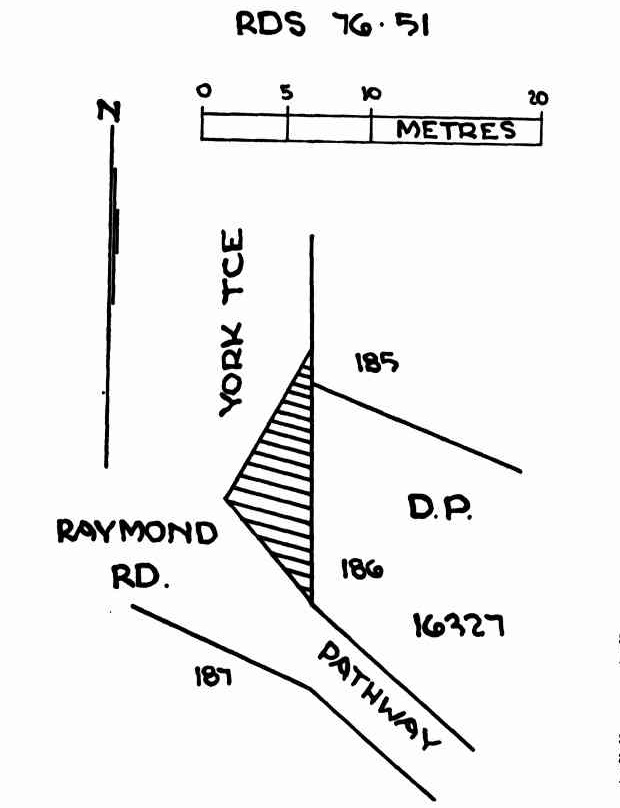
NOTIFICATION OF PROPOSED CLOSING OF ROADS (1976, May 28). Government Gazette of the State of New South Wales (Sydney, NSW : 1901 - 2001), p. 2277. Retrieved from http://nla.gov.au/nla.news-article220198289
Weetawaa at Bilgola Plateau: Aboriginal meaning is “a place of fire” - compare the Aboriginal meaning of Wee Waa - "Fire for Roasting" - from the language of the Kamilaroi people.
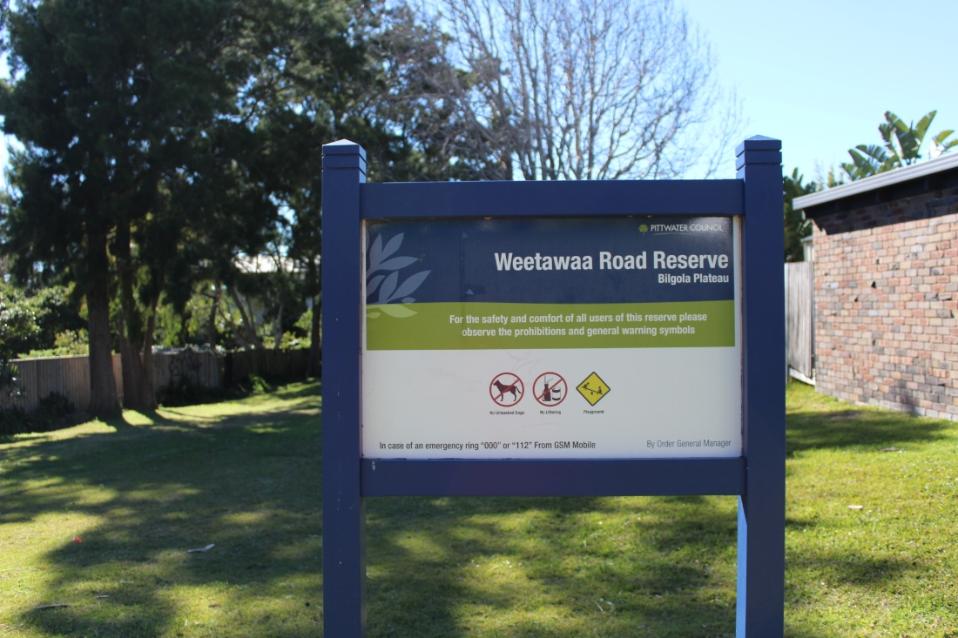
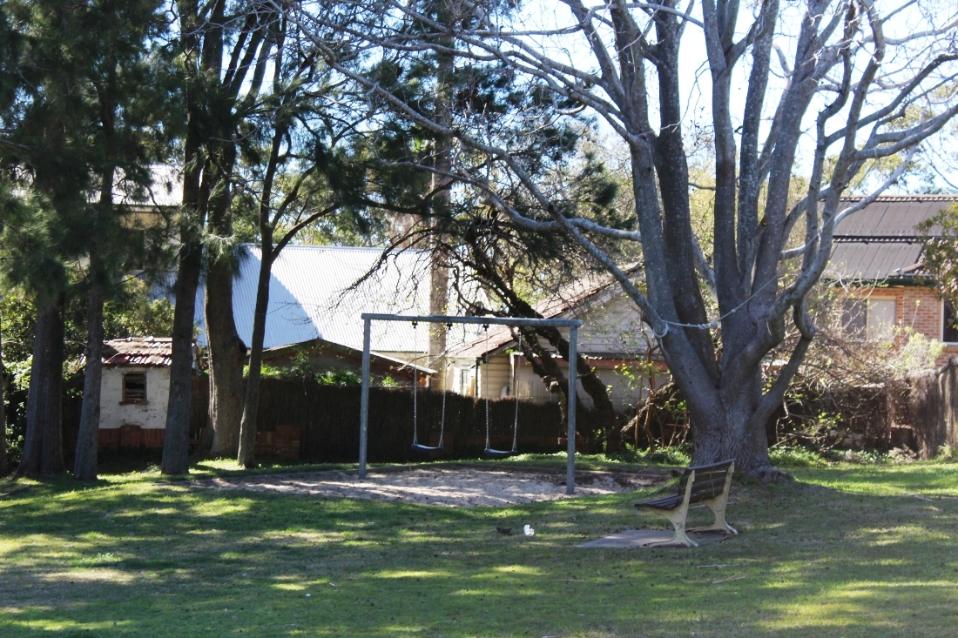
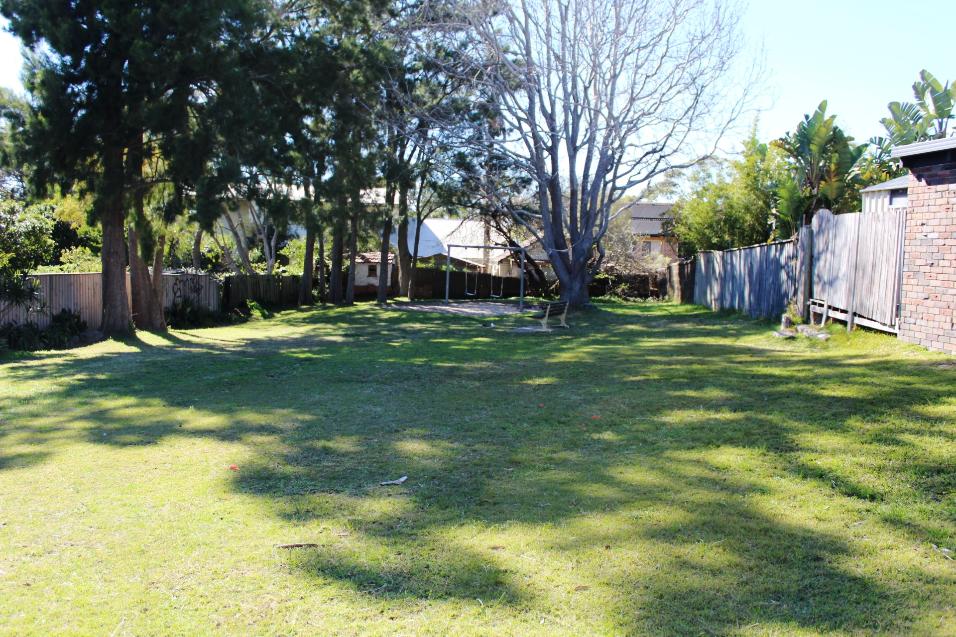
At the Warringah Council Ordinary Meeting of June 25th 1979 Council resolved to re-name the southern section of Hilltop Road, Clareville (off Wandeen Road) "Illangi Close". The names submitted for consideration were:- (a) Aboriginal Illangi (Close) - "Camp on a hill" Mia (Close) - "Native shelter" Ilaroo (Close) - "Track by the sea" Broula (Close) - "Place of trickling water" (b) Other Hillend (Close)
In accordance with prescribed procedure Council had advertised the proposed re-naming on April 7th, 1979. The four property owners affected by the proposed re-naming were written to on April 4th, 1979 and their comments invited concerning the proposed re-naming. Only one reply was received, within the month allowed for the lodging of objections, from the owners directly affected.
In response to Council's notification to residents of the proposal to rename that section of Hilltop Road off Wandeen Road, two replies were received. A letter from Mr. F. Howitt, of Wandeen Road, suggested the name 'Mia Close' (Native shelter). Mr. G. H. Mills of Hilltop Road advised that he and other affected residents, with whom he discussed the proposed renaming, favoured the name 'Illangi Close' (Camp on a Hill). The recommendation was then put forward that the southern part of Hilltop Road, Clareville (off Wandeen. Road) be renamed 'Illangi Close' in accordance with the provisions of Section 249(a) of. the Local Government Act.
Mr. Mills initially drew Council's attention to the fact that it would be desirable to have the subject part of Hilltop Road re-named. Mrs S. Caines, one of the affected property owners written to, advised by letter that she wrote to Council within the month stipulated and requested that the section of Hilltop Road to be re-named be called "Wandeen Place". However her letter did not appear on Council's files. Accordingly that southern section of Hilltop Clareville (off Wandeen Road) was to be re-named Wandeen Place
On June 18th 1991 the Public Works Committee Meeting, delved into the matter again at the behest of council from an early 1991 discussion.
On February 19th 1991, Council resolved:- "That Council acknowledge the objection to the renaming of Wandeen as "Yeramba Place" as valid, and approve the renaming of Wandeen Place as "Tarpeena Place" subject to the appropriate advertising and action required under Section 249(a) of the Local Government Act.
Following the advertising of the proposed name change and notification of residents adjoining the subject road, Council received a letter of objection from Mr B Johnson, objecting to the name change from Wandeen Place to "Tarpeena Place". Mr Johnson did not put forward any other suggested names.
Mrs Susan Caine of Wandeen Road, Clareville, a corner block adjoining the subject road, also objected to the proposed name change and suggested that the name "Mia Place" would be more appropriate. In addition to these written objections, a number of telephone objections to the proposed name change were received, however, no name was proposed by these objectors.
There was no clear agreement between the various residents whose properties adjoin the subject road as to a name that would be acceptable to both them and Council. Council proceeded to rename Wandeen Place as "Mia Place" (Aboriginal for "small") on the basis that it was proposed by one of the residents and is not currently used within Warringah Shire.
The name was approved and the renaming of Wandeen Place as "Mia Place" occurred. So "Mia" with a meaning of both "small" and "Native shelter", according to which record you read, became the name.
Bilwara Avenue: 'Trees' - which sort? . Has been used as a name for a house/home from at least late 1890's -1900's - once instance at 1900 industrial Pyrmont found.
Clareville instance is from February 1958 Bilgola Plateau Pty. Ltd - owners. Part Block 5 - 21 allotments and new road - Bilwara Avenue. In October 1960 Warringah shire Council records list 'Transfer to BILGOLA PLATEAU PTY. LIMITED in respect of Public garden and recreation space in a subdivision at Bilwara Avenue, Bilgola Plateau;' In 1967, Frank M. Mason & Co. owner, Bilgola Plateau Pty. Ltd. was applying to progress Part of 'Lot 5' Zoning Residential A(33 allotments): Council had approved.this application on Februray 27th, 1967, subject to certain conditions and resolved that "decision concerning the amount of land to be provided as a Public Reserve being deferred until Council can obtain a legal ' opinion as to its entitlements following the decision of the Board of Subdivision Appeals concerning an earlier submission for part of this land".
In March 1968 ,with 40 allotments now occurring council suggested the following names for the new roads in this subdivision; "Loblay Crescent" and "Mark Place"- nearby 'Bilga Avenue' in present day Bilgola Plateau has a meaning of 'Bees nest'.
With each language/dialect in each place different, and so much of the language for the 'songlines' of Pittwater lost, were the use of these words as accurate as those who thought of them wanted them to be?
Compare: Bilerong; 'Place of Swamp Oak', Bilinga; 'Magpie', Bilkurra; 'Narrow-leaved Box Tree', Billang; 'To push or roll', Billara; 'Dead leaf', Billeang; 'Bat', Billeroy; 'Running creek', Billinudgel ; 'good view', Biloola; 'Cockatoo', Bilyan; 'To throw off cloak', Bilyara; 'Eaglehawk' - sourced from Grandpa Pencil finds some 'B' Australian Aboriginal Words - website. Retrieved from http://www.grandpapencil.net/austral/abword/abb.htm
Delecta Avenue: Latin - Form of the verb dēlectō (“delight”). Verb[edit]. dēlectā (for attaining high standard) picked, chosen, select.
Georgia Lee Place:
Hansford Parade: Hansford is a surname and rare male given name, which originates from the Old English, meaning "'Ford near protected temple'".
Hilltop Road: 'Hill' + 'Top' - top of the hills road!
Hudson Parade: named for George Inglis Hudson, landowner.
Kemble Place: WARRINGAH SHIRE COUNCIL.—Naming of Roads.—Notice is hereby given that Council, in accordance with section 249 (a) of the Local Government Act 1919 (Ordinance No. 30, clause 53),has renamed the roads listed hereunder
Past Name and Proposed Name
Elimatta Road, Warriewood (between Alameda Way and Waniewood Road)—Alameda Way.
Raymond Place, Bilgola Plateau—Kemble Place.
L. THOMSON, General Manager/Shire Clerk, Civic Centre, Dee Why. WARRINGAH SHIRE COUNCIL.—NAMING OF ROADS.—Notice is hereby given that Council, in accordance with section 249 (a) (1988, January 22). Government Gazette of the State of New South Wales (Sydney, NSW : 1901 - 2001), p. 420. Retrieved from http://nla.gov.au/nla.news-article231244094
Lisa Place:
Lower Plateau Road: the lower part of the Bilgola 'Plateau road' - Bilgola Plateau and Bilgola Beach street names will run as a dedicated stand alone page.
Mia Place: both "small" and "Native shelter" - to honour original custodians last seen gallivanting on the bay and eating oysters in 1788
Mirrabooka Street: Mirrabooka is an Aboriginal name for the constellation most commonly known as the Southern Cross.
Riverview Road: view of the river - Pittwater!
Stromboli Place: Is an Italian pastry with cheese and meat, rolled! But in this instance
Taylors Point Road: named for early landowner
Wandeen Road: Optimistic, Peacemaker, Cheerful, Lofty (?)
Yarrabee Place: 'Gum Forest' - aboriginal word - refers to eucalypt trees
WARRINGAH SHIRE COUNCIL.—Notice of Road Renaming at Clareville.—
Past Name and New Name
Southern part of Hilltop Road, Clareville (off Wandeen Road).—Illangi Close.
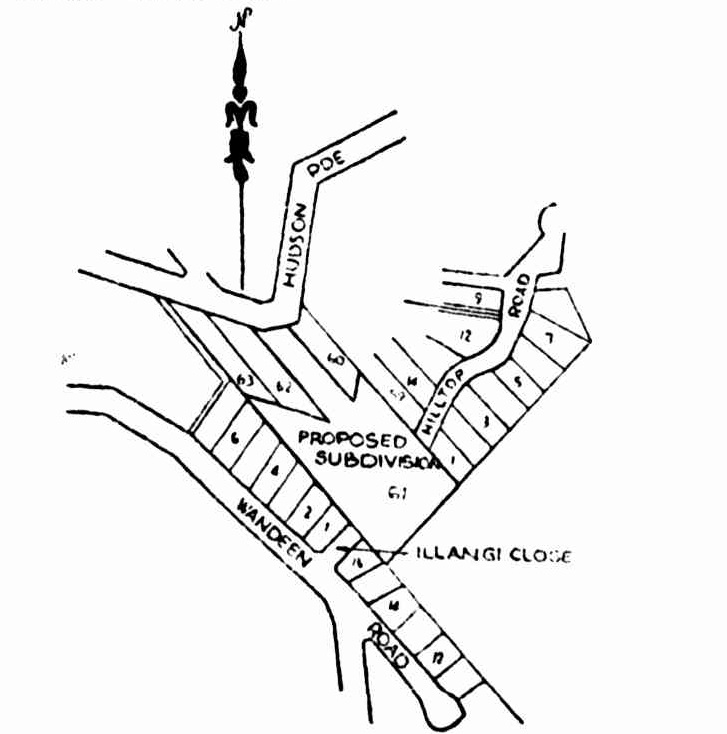
R. M. STUCKEY, Shire Clerk.
Civic Centre, Dec Why. 9668—$34.20
WARRINGAH SHIRE COUNCIL.—NOTICE OF ROAD RENAMING AT CLAREVILLE.— (1979, July 20). Government Gazette of the State of New South Wales (Sydney, NSW : 1901 - 2001), p. 3581. Retrieved from http://nla.gov.au/nla.news-article219963111
Some Of The People Behind The Street Names
Arthur Wigram Allen & Arthur W Denis Allen
- Allen Street, Bilgola Beach
Arthur Wigram Allen (1862-1941)
You can make Money like Arthur Wigram Allen but you gotta know how
£30,000 PROFIT IN PICTURESQUE REAL ESTATE COUP
Tale of a Sigh and a Smile REMARKABLE JUGGLING IN CITY AND SUBURBAN PROPERTY
FROM the window of her modern bungalow in Edgecliff Road, Woollahra, Miss Eadith Walker must often look with a sigh across the garden of her old home "Wallaroy." Just as often, perhaps, Mr. Arthur Allen, city solicitor and property speculator, driving down Edgecliff Road in one of his inevitable electric broughams, must look through the fence at the old place, and smile.
BETWEEN her sigh and his smile there is a difference of £30,000, that is going into Arthur Allen's pocket as the profit from the most picturesque property coup ever effected in suburban real estate. When Miss Walker decided to sell "Wallaroy". in 1025, she had hopes that a buyer could be found who would use tho place as a residence, and save it the indignity of becoming the medium of successive speculations. Unfortunately for her, such a buyer was not forthcoming, and under restricted conditions of sale' "Wallaroy" . went begging at £11,500., At this price it came into the possession of Arthur Allen who immediately subdivided it. By way of showing, at the outset that "Wallaroy" was a bargain, Mr. Allen sold one of the six blocks for £7000; this, to a young man who regards the estate as a strategical social strong-point. Until quite recently no further sales had been made on the "Wallaroy" subdivision, but within the last month Mr. Allen made a property master-stroke that will amply explain why real estate agents say that "Arthur Allen is right out on his own." -
As a principal of the legal firm of Allen, Allen, and Hemsley, he is the owner of Wigram House in Castlereagh Street near Martin Place. Adjoining Wigram House at the rear is Kincoppal Chambers, a building fronting, Martin Place. The owners of "Kincoppal" were recently anxious to sell, and they approached Arthur Allen as-the logical buyer. They offered him the property for £38,000, their equity, in it being about £14,000.
The solicitor agreed to buy, but before the deal was fixed up he interested the two vendors in "Wallaroy," and eventually sold them two blocks fronting Edge-cliff. Road for £14,000. This meant, in effect, that he became the owner of the Martin Place property "Kincoppal" without having to put up a penny. Apart from the fact that in this one deal he has more than recouped the whole of his original outlay on "Wailaroy," the Value of "Kincoppal" and Wigram House is also enormously increased under one ownership - in cash and kind Mr. Allen has received about £21,000 for the three blocks of "Wallaroy" that he has sold up to the present. So on the deal, ' as it stands now, he has made £10,000 profit, and he holds the house and two other blocks for nothing, and these are valued by good judges at about £23,000. Thus the "Wailaroy" that he bought for £11,500 promises to yield him £44,000, or a total profit of about £33,000 in two years.
£5000 Wedding Gift
In actual fact, however, his profit will probably be £5000 less than that amount, because one of the remaining blocks will never be sold. ' This has been earmarked by Mr. Allen as a wedding present for daughter Marcia, who is engaged to Mr. John Bavin, son of the Premier. This paternal gift will cost Arthur Allen nothing, although it is worth £5000. With his blessing it is charged to progress. You can make Money like Arthur Wigram Allen but you gotta know how (1928, January 14). Smith's Weekly (Sydney, NSW : 1919 - 1950), p. 3. Retrieved from http://nla.gov.au/nla.news-article234382102
MR. ARTHUR W. ALLEN.
The genial vice-president of the Sydney Lawn Tennis Club, whose portrait we publish in this issue, has lately taken no prominent part in matches or tournaments, and but for his official position would have dropped somewhat out of sight as far as the game is concerned. He is rarely to be seen at the Association Ground. He practices, when his business allows time, on the courts of the Phillip-street Club, of which he is a member, and also at his own beautiful home, Hoxteth. Both before and since his appointment as vice-president he has been noted for his liberality in giving cups and trophies, an example which we recommend to our wealthier readers not that the true lover of lawn tennis considers the value of a prize, but because the public has got to expect to see handsome trophies at athletic gatherings, and there is really no reason why they should not be a feature in tournaments also. Moreover, the winning smile of Lady Carrington, or other fair one, as she hands over the prizes, is rich compensation for the toil and heat of hardly fought contests.
Mr. Arthur Wigram Allen is the third son of Sir Wigram Allen, for many years the respected Speaker of the Legislative Assembly. He is a partner in the well known firm of Allen and Allen, solicitors ; in which, by the way, another gentleman well-known in tennis circles' figures, Mr. P. B. Colquhoun. He drives one of the smartest turnouts in New South Wales his knowledge of horsemanship and horseflesh is considerable. His ill-health necessitates a constant change of scene and so, and when in Sydney he is obliged to stick closely to business, facts which sufficiently explain his rare appearance in matches. He avoids net play, preferring a sure swift stroke from the back of the court. He became vice-president early in 1889, upon the resignation of the previous holder of that post.
He has played for the colony in the intercolonial matches, and took part in all the tournaments at the Association Ground between 1884 and 1887. He learnt the game in the Melbourne University courts. Prom 1880 to 1882 he was to be seen nearly every Saturday playing for Trinity College. In 1883 he won the doubles at the Sydney Amateur Sports, with his brothel", Mr. B. C. Allen, for his partner. In 1884 he was * runner up * to Keyser in the Parramatta tournament. He won the Sydney handicap singles in June 1885, receiving a handicap of half fifteen, and was put at scratch the following year, when he was equally successful. In 1887 he came in second for the handicap singles (Sydney), and ... Rodd and he took a second place also in the scratch pairs. Of his social qualities it need only be said that he is noted for his hospitality, and this and other qualities have made him exceedingly popular.
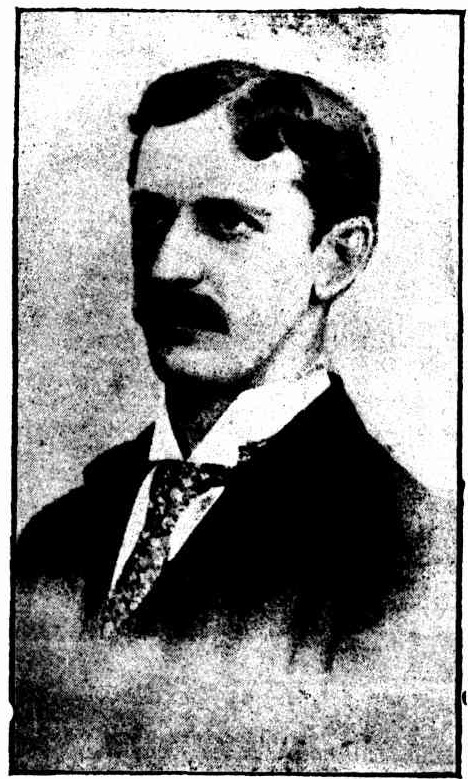
MR. A. W. ALLEN, VICE-PRESIDENT OF THE SYDNEY LAWN TENNIS CLUB.
MR. ARTHUR W. ALLEN. (1890, February 6). Illustrated Sydney News (NSW : 1881 - 1894), p. 4. Retrieved from http://nla.gov.au/nla.news-article63614635
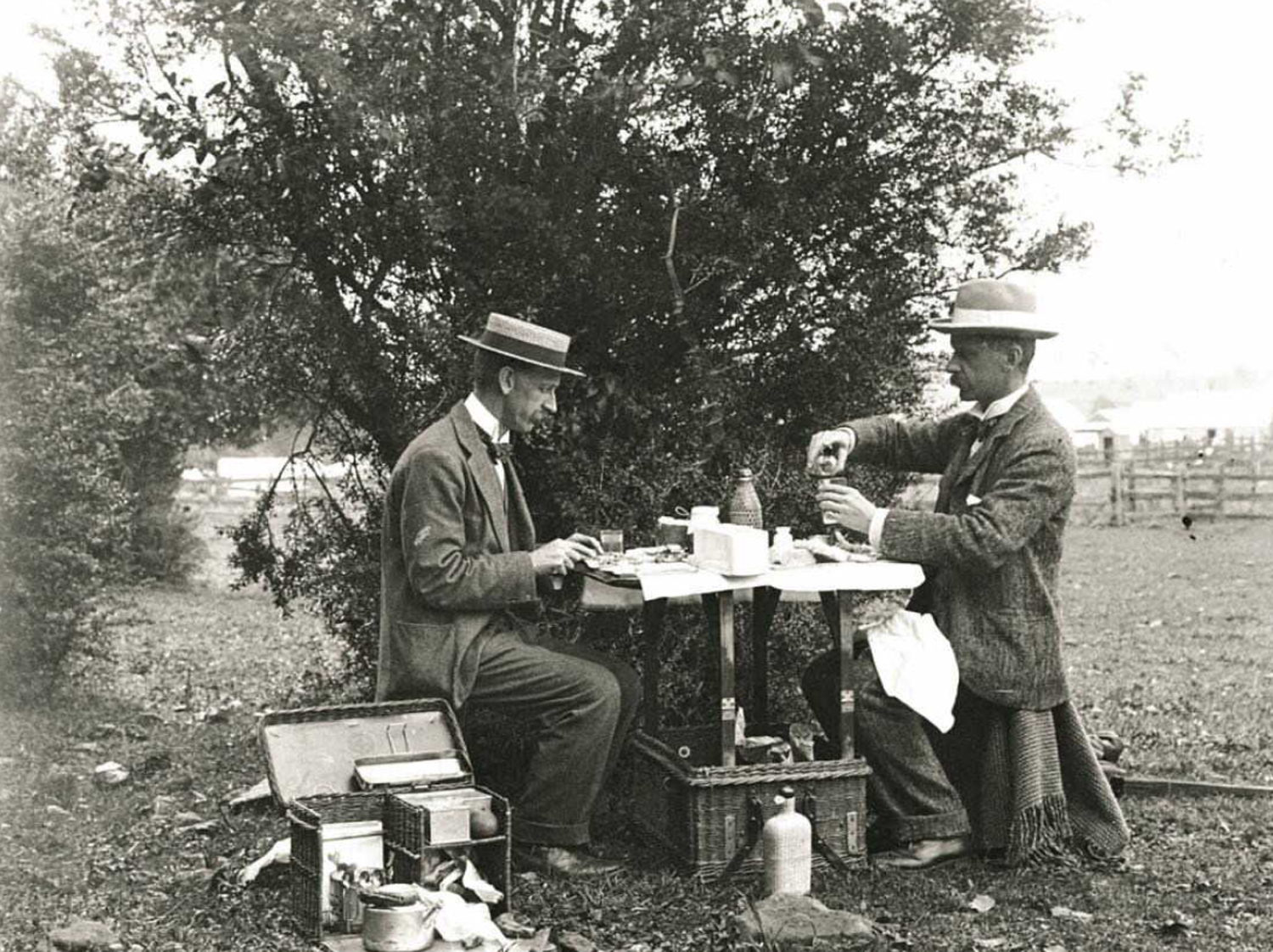
Arthur Wigram Allen and his brother George Boyce Allen of Strickland House circa 1900, courtesy State Library of NSW
DEATH OF MR. A. W. ALLEN
Mr. Arthur Wigram Allen, head of the old-established legal firm of Allen, Allen, and Hemsley, died at his home in Edgecliff Road. Woollahra, yesterday aged 79 years.
The late Mr. Allen was the third son of the late Sir George Wigram Allen. Mr. Allen had many interests and until about three years ago was a director of J. C. Williamson, Ltd. Mr. Allen was well known in the city and owned one of the first electric motor cars to be brought to Australia.
The firm of Allen, Allen, and Hemsley was established in 1822, and since that time four generations of Allens have been members of the firm. Mr Arthur Allens son Denis ís now a member.
The founder of the firm, Mr George Allen, of Toxteth Park Glebe ar-rived in Sydney in 1816 and was admitted as a solicitor of the Supreme Court of New South Wales in July 1822. He was the first attorney and solicitor locally trained to be admitted to practice in New South Wales.
The funeral will take place to day after a service at All Saints Church Woollahra', at 2 .30 pm. There will be a private cremation at Rookwood Crematorium. DEATH OF MR. A. W. ALLEN (1941, October 3). The Sydney Morning Herald (NSW : 1842 - 1954), p. 7. Retrieved from http://nla.gov.au/nla.news-article17767023
LATE MR. A. W. ALLEN'S ESTATE
The estate of Mr. Arthur Wigram Allen, solicitor, formerly of Messrs. Allen, Allen, and Hemsley, who died on October 2, has been sworn for probate at £70,620. Mr. Allen made gifts of £100 each to St. Luke's Hospital and the Royal Alexandra Hospital for Children, £250 to each of two nurses who attended him, and £50 to a union club messenger.
He directed that each clerk in the employ of his firm at the time of his death should receive a legacy equal to 10 per cent, of his or her yearly salary, and he made bequests to relatives and friends. His residuarry estate goes to his family. LATE MR. A. W. ALLEN'S ESTATE (1941, December 10). The Sydney Morning Herald (NSW : 1842 - 1954), p. 13. Retrieved from http://nla.gov.au/nla.news-article17778110
Everything inside the home was put up for sale:
LOOKING I through "Merioola," home of the late Arthur Allen, I felt a gnawing memory. Not that I knew his home, but his period. An auctioneer was selling everything that the head of the old legal firm, Allen, Allen, and Hemsley — oldest in Australia — had accumulated in a long lifetime.
There were antiques, pictures, objects of art and virtu, furniture, lares et penates. The presiding spirit had departed. The house was a shell. Once It had echoed to the voices of children. And it presented scenes of social gaiety. But now in spite of the eager crowd of bargain seekers, it was hollow and dispirited.
In Victorian days it was a mansion, I reflected. Then memory told me what It wanted to impart. I found myself saying, "It is the end of an epoch." I was quoting from Galsworthy's "Forsyte Saga" at the death of Queen Victoria. I was in the home of Soames. Like Soames the late Arthur Allen had artistic, perceptions. Soames had a ... paintings.
They were a reminder of his having arrived to enjoy the refinements wealth could give in an economy of laissez faire. The catalogue of 84 pages of heavy art paper, Illustrated with prints of original Gruners', Heysens', Lamberts', Pentleigh Boyds', Norman Lindsays', and Rupert Bunnys' filled In the background of a life that stretched from mid-Victorian times to George VI — five monarchs of the House of Hanover. Here was solidity that seemed enduring. There were no cracks in the foundations of an established society.
TfTE TfTE saw a newcomer, well-nourished and oozing prosperity, bid successfully for a cigar box, and felt Arthur Allen's shade shudder. In the crowd were the dealers to acquire what had intrinsic 'beauty and would yield the profit of rarity.
In the 'nineties I had glimpses of a perfectly appointed table as a poor relation of Western District (Vic.) squatting families. Those were the spacious days — for they who were our "landed gentry." Their life was a replica of the "county folk" of England.
In the catalogue of "Merioola" ' was a set of rare old Sheffield candle-ptieks. I have seen gleaming silver and damask and fine glass when we went into dinner at those gracious homes of the first families of Victoria. Their broad acres landlocked the villages as they then were. But half a century ago the properties were subdivided into small farms. Something was lost, whether for good or ill is a ' matter of small concern to-day. .
WHEN I saw a pair of magnificent Early Sheffield-plated champagne coolers go under the hammer it was as though one was suddenly- back in another existence — not mine, for I had but few fugitive invitations that a duty to a needy relative might be performed. Here, with the auctioneer describing hall-marked ware I was witnessing the dispersal of all the elegances of a onetime stately Sydney home.
The house itself seemed to know the worst. It had a dispirited look. Architecturally it sagged, for its bones could never have given it dignity and the grey surfaces were peeling. Within, it was listless and outmoded, the bathrooms uncaring whether there was a water shortage or whether there wasn't. The house didn't belong to this world any more, if indeed It ever did. It had entertained a Prince, afterwards Edward VIII, but plainly it said "lchabod," and awaited the day it would come down and in its place blocks of flats to match the neighboring congeries would blot out completely its identity.
I heard Max Lawson lingering on Chippendale and Jacobean pieces, Georgian silver, baccarat finger bowls, Webbs' crinkly liqueur glasses, crested spoons and forks, ribboned and reeded handled fruit knives, Derby plates with scalloped edges, hand-made linen, and almost wished myself a Sir Keith Murdoch.
Since the old Noblesse made way for our newer newspaper magnates, industrialists, financiers, and drapers, only — the new possessing classes can afford what the late Arthur Allen Inherited and acquired over the space of a century or more. Perhaps the Fairfaxes in 111 years of newspaper production have more precious things to loot.
I LOOKED along the bookshelves and saw the miscellaneous reading of a catholic mind. The old standard novels of the Victorian era were there and an assortment of Australian writers, including Evalt, now Federal Minister. His biography of W. A. Holman caught my eye.
And it came to my mind that Bertram Stevens, once Red Page editor of the "Bulletin," was, in his callow days, Arthur Allen's private secretary. Stevens edited a few anthologies — verse and short stories — but I failed to find him in the "Merioola" library.
Paintings, etchings, and old prints realised over £4000. I wonder what they cost when being collected. Probably double what tile executors realised. One thing, however, delighted me. It was that my old friend Elioth Gruner's "The Broken Fence," brought top price, 350 guineas. Some there are who would not give him his place as the most Individual and sincere of our landscape painters. Heysen's "The Quarry" brought 150 guineas. It was a beautifully lit and composed study. I asked Sir Victor Wilson, who once owned the quarry, to go along and bid. But to him no quarry could be a thing of beauty and a joy forever. — C.M.THAT REMINDS ME (1942, March 7). Smith's Weekly (Sydney, NSW : 1919 - 1950), p. 11. Retrieved from http://nla.gov.au/nla.news-article234591220
Relatives - A W Allen's father:
THE LATE SIR GEORGE WIGRAM ALLEN.
Death of Sir George Wigram Allen.
THE almost sudden death of Sir George Wigram Allen will cause a shock to the community that cannot fail to be widely felt. The sad event took place at his residence, Toxteth Park, Glebe, on Thursday, 23rd July. Although he had been seriously unwell for some few days, the sadly fatal termination of the complaint was unexpected, and was consequently all the more terrible to his family and friends when it did happen. Sir George had been in town a few days previously, attending to business as usual ; but on his return home he felt exceedingly unwell. On the following day he declared himself somewhat better, and discussed various matters with his brother and partner, Mr. Arthur Allen. On Friday night, however, he was much worse, and the medical advice of Dr. Scott Skirving was called in, and afterwards that of Dr. O'Reilly. On the night of the 22nd ult., the symptoms became so critical that Dr. Wilkinson was summoned in consultation, but the disease was a species of perforation of the bowels, defying all medical skill, and he expired quietly and calmly, as has already been said, on the following morning.
Sir George Wigram Allen was born at Surry Hills, Sydney, on the 16th May, 1824, and was at the time of his death in his sixty-second year. He received his early education at Mr. Cope's school, and subsequently at the Sydney College.
In 1841 he was articled as a solicitor to his father, the late Hon. George Allen, M.L.C. He was admitted as an attorney of the Supreme Court in due time, and took part in the large and successful practice established by his father, the firm ranking as amongst the most respectable solicitors in the country, and the confidential advisers of many of the principal families in this colony. Sir George married in 1851 the daughter of the Rev. W. B. Boyce, then President of the Wesleyan Conference, and leaves four daughters and six sons. Of the former, two are married; one to Mr. Leeper, Provost of Trinity College, Melbourne, the other to Captain Maxwell, R.N., late of this station. The six sons are all unmarried, and two of them are now studying at the University of Cambridge. Sir George had four sisters. One (since deceased), who married Mr. G. Allen Mansfield ; the second, Mr. A. H. Macafee (of the firm of A. McArthur & Co.) ; another, Mr. Jas. Mitchell ; and another, Captain Methven. His brothers are Messrs. Arthur Allen and W. Boyce Allen.
Sir G. Wigram Allen and his father were practically the founders of the Glebe, now one of the most populous and important suburbs of Sydney. He was a zealous member of the Wesleyan connection, and personally conducted the services of that church for some years at the Glebe. Then in 1853 he was appointed solicitor to the Sydney University, and in 1859 was first Mayor of the Glebe, one of the earliest suburban municipalities of the colony, which was mainly founded through his instrumentality. He held the office of Mayor for eighteen years consecutively. His first connection with the Legislature was in 1860, when he was appointed by Governor Denison a member of the Legislative Council, and in 1869 he was elected as member in the Assembly for the Glebe electorate.
In 1873, he was appointed to the office of Minister of Justice; and in March, 1875, was chosen as Speaker of the Assembly, an office which he held continuously until the last parliament, when Mr. E. Barton was chosen. Shortly afterwards Sir Wigram (he was knighted in 1877) resigned his seat in Parliament, and has since attended only to professional business.
Sir George was a well known figure in the public and social life of the country, and his death will create a void not easily filled. His public efforts in founding every good work are matters of record ; but his private charities were known only to himself and the recipients of his benevolence. Nevertheless, it is known that none who needed help or succour sought it at his hands in vain.
His funeral took place at the necropolis on the 25th July, and was attended by a large number of the chief citizens of Sydney and suburbs. Touching on the death of the gentleman in question, our senior contemporary says : "The almost sudden death of Sir Wigram Allen causes a loss to the colony that will be both deeply and widely felt. It brings to an end a life that was crowded with business ; and how large a portion of that business arose from his charge of the affairs of other people, his connection with the semi-public institutions of a provident or benevolent character, or was involved in his occupancy of important positions in public life, is too well known to need more than a reference in this place. Sir Wigram Allen had been a public servant in the true sense, though much of his service was rendered in a quiet, unostentatious way. As member of Parliament and as mayor of a municipality, as Speaker of the Assembly and in the Senate of the University, on the old National Board and in the Council of Education, he did for a succession of years good work for the public ; and, notwithstanding the ceaseless activity of his private life, he found or made time and opportunity to "serve his generation."
A man of great shrewdness, business ability, and tact, he was conspicuous also for courtesy and a kindly disposition. Successful in his profession, if he had, like other successful men, his enemies, he made and retained many friends. Inspiring confidence by his integrity and sound judgment, he was the depositary of many trusts, and bore the burden of many interests. There are men whose passing away would leave a larger vacancy apparent in public life, but there are probably few amongst us whose place would not be more readily filled. He was a man who, amidst assid-uous devotion to private affairs, went beyond them and won honours from his neighbour, from the representatives of his country, and from the Crown ; and his honourable memory will live. He was an Australian born, who did credit to the land of his birth."

Death of Sir George Wigram Allen. (1885, August 1). Illustrated Sydney News (NSW : 1881 - 1894), p. 16. Retrieved August 15, 2019, from http://nla.gov.au/nla.news-article64036497
His father's farther: George Allen (1800-1877)
The Honorable George Allen
THE citizens of Sydney have been so long familiar with the face of the Hon. George Allen, and his name is so well known throughout the country, from his public position and his long-continued connection with benevolent and Christian enterprises, that, on his decease, some notice of his career in the journals of the colony is naturally expected.
Mr. Allen was born in November, 1800. His father, Dr. Richard Allen, was one of the physicians of the King, and had an extensive practice in London. He died when his youngest son, George, was only six years of age.
In July, 1815, George Allen left England for Australia; and arrived in Sydney, when he was a little over fifteen years of age, in January, 1816. He was then articled as a pupil of Mr. Frederic Gurling, Crown solicitor and Clerk of the Peace. And after six years he was admitted to practice as attorney and solicitor of the Supreme Court. His admission took place on the 22nd July, 1822. He was the first of his profession ever admitted in this country. Three days afterwards he was made an attorney of the Governor's Court of New South Wales.
In 1824, on the promulgation of the new Charter of Justice, when Mr. Allen was the only colonial attorney, the other legal practitioners being either English barristers or attorneys of England or Ireland, an attempt was made to exclude from practice, in the Supreme Court here, all but those who had been admitted in the courts of the United Kingdom. Led by Mr. W. C. Wentworth and Dr. Wardell, the members of the profession who derived their title to practice from the authority of the courts in the mother country, claimed the sole right to practice in'* the courts of the colony. But, after considerable argument, the Supreme Court decided in favour of Mr. Allen's claim to equal rights with the attorneys admitted by English and Irish Courts, and thus established, in his person, the equality of colonial attorneys with those of the mother country. He continued the practice of his profession for thirty-two years; and succeeded in obtaining an income which made him one of the wealthy.
Unlike many who have attained financial prosperity in this country, he made it a rule to devote, in liberal measure, a portion of his increasing resources to the amelioration of the condition of Iiis fellow- men¿ and to the advancement of philanthropic undertakings. In the city where he made his fortune ' he continued to work, BS well as to give, for the good of others.
In 1823 he married. His domestic life has been marked by a prosperity and peace well according with the usefulness and honour of his public career. He has seen growing up around him a large and increasing circle of children and grandchildren. His eldest son has become, a representative of the Ïeople, was the first Minister of m ustice and Public Instruction, and is now Speaker of the Legislative Assembly. In 1854, he gave up his practice to his son, and devoted his energies to public duties and to the advancement of beneficent and religious purposes.
When the Corporation of Sydney was first established, in 1842, he was chosen as one of the Aldermen,and held that position until 1853, when the first Corporation was dissolved. In 1844 he was elected Mayor of Sydney. While holding that position.in 1845, he was appointed by Sir George Gipps-to a seat in the Legislative Council, then the only;Legislative Chamber. He also received a commission as honorary Police Magistrate of the city and port. When the present Parliamentary Constitution was established, in 1856, he was made a member of the Legislative Council. At the end of five years the appointments to that House ceased by effluxion of time ; and according to the terms of the Constitution Act, the Governor, Sir John Young, nominated members for life. Again Mr. Allen was appointed. In 1856 he was elected Chairman of Committees ; and was re-elected to the same office session after session, until in January, 1873, the failure of sight rendered it necessary for him to resign that position.
During these years Mr. Allen was called to take part in various other important public duties. He was chairman and director of the Australian Gaslight Company, director and vice-president of the Savings Bank, director and president of the Bank of New South Wales. He was one of the first members of the denominational school Board ; and after the abolition of that Board by the Public Schools Act of 1866, he was made a member of the Council of Education. He held a place m the Council from January, 1867, to January, 1873, when he retired, and was succeeded by his son, now Sir George Wigram Allen. In 1828 he assisted Sir Francis Forbes and Messrs. Wentworth and Bland in founding the Sydney Grammar School. Under its present constitution he was trustee and chairman of that institution. In 1859 he was made a member of the senate of the University, and held that position until his death.
Mr Allen was for 5(5 yeai's an active member o the New South Wales Benevolent Society. He was a member of the committee in 1821. In 1831 he was made co-secretary with the Venerable deacon Cowper. On the retirement of the Deacon Mr Allen became sole secretary, and that that place as long as he lived. He was also President of the society. He was a member of the Committee of the Sydney Infirmary for more than thirty years, and was for some years a vice-president. He was, one of the founders of the society for the relief of. destitute children, through whose efforts the asylum, at Randwick, was erected. He acted on the board of that institution to the end of his life, and was vice-president.
He was a very active member of the Wesleyan Methodist denomination, liberally promoting their church extension and missions to the heathen. He was also a zealous promoter of the designs of the British and Foreign Bible Society, and the Religious Tract Society, which are supported by all Protestant denominations ; and the esteem entertained for him by Christians of various churches was manifested by their choosing him to preside in these associations. His connexion with these societies began before his admission as an attorney, and continued for fifty-six years.
For a few years past the growing infirmities of age compelled Mr. Allen to take a less active part than formerly in the many good works in which he delighted. But almost to the last day of his long life he continued to show his undecaying sympathy and zeal for these undertakings. He died at his residence, Toxteth Park, Glebe, on Saturday, the 3rd November, at the age of seventyseven. Mrs. Allen, after a wedded life of fifty-four years, survives him ; and he has left many descendants to hand down to future ages the family name, for which he has won honourable regard in Australia. The Honorable George Allen. (1877, November 17). Australian Town and Country Journal (Sydney, NSW : 1870 - 1907), p. 17. Retrieved from http://nla.gov.au/nla.news-article70610517
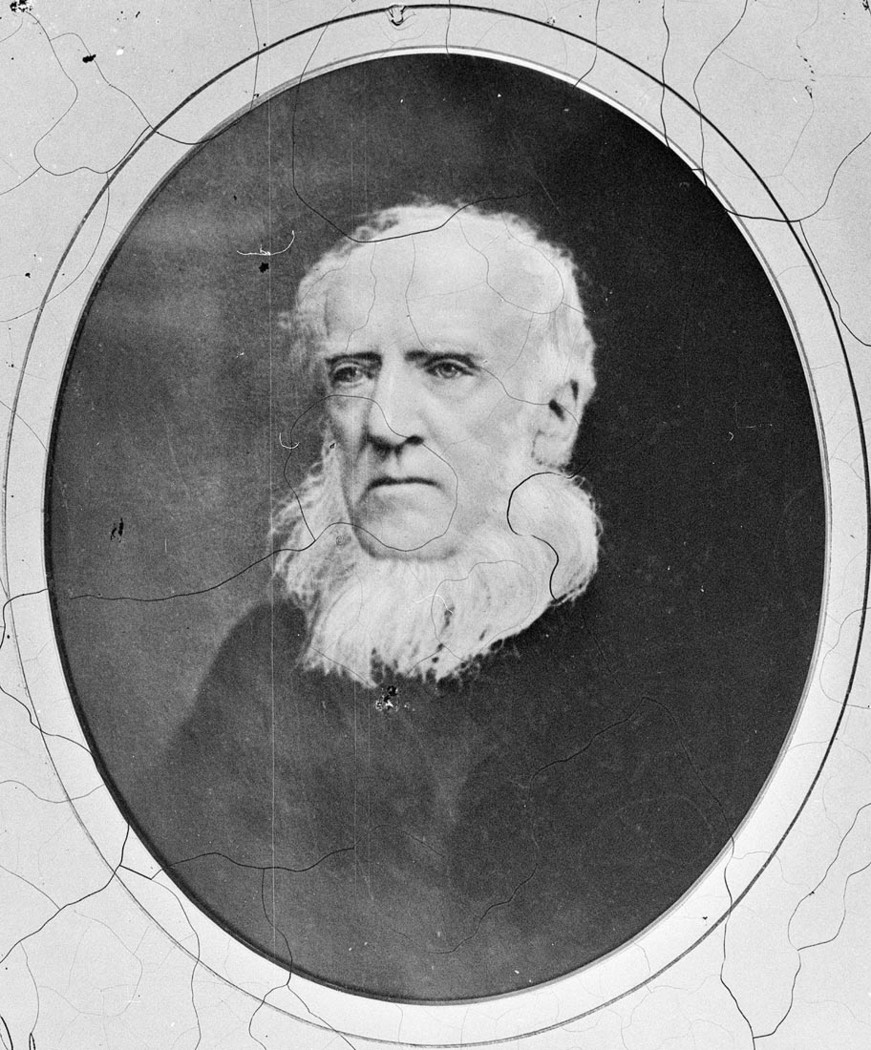
Hon. George Allen, Father of Speaker Sir G.W. Allen, no date, Image No.: gpo1_10516h, courtesy NSW State Archives & Records Authority of New South Wales
THE LATE HON. GEORGE ALLEN.
On Saturday, November 3, there passed away from among us, at the ripe age of 77 years, a gentleman whose name his long been " familiar in our mouths as household words," in association with matters of public interest, and more especially with those connected with religious and charitable objects - the Hon. George Allen, of Toxteth Park, Glebe.
Mr. Allen arrived in this colony in January 1816, and was admitted as a solicitor in 1822. He was the first attorney ever admitted in the colony. Mr. Allen practised his profession until the year 1854, since which period his energies have been devoted mainly to the public institutions of this city.
He was an alderman of the city from its incorporation in 1812 to the dissolution of the old Corporation on the appointment of the Commissioners, and was Mayor of Sydney from November, 1844, to November, 1845. In July of that year he was appointed to a seat in the Legislative Council by the then Governor, Sir George Gipps - a position which he held until the introduction of responsible government in 1856. In 1856 he was appointed one of the first members of the Legislative Council, and on the dissolution of that body by effluxion of time he was appointed a member of the present Legislative Council. In the same year he was elected Chairman of Committees in the Upper House, and was afterwards elected to the same office no less than twenty-two times. In January, 1873, growing infirmity of sight compelled him to resign this office, and on his resignation a unanimous vote of the House bore testimony to the fidelity, efficiency, and zeal with which he had performed its duties. Mr. Allen was one of the first members of the old Denominational Board of Education, and held office till the passing of the Public Schools Act in 1866.
In 1859 he was made a member of the Senate of the University of Sydney, and continued his connection with that body until the time of his death. In January, 1867, he became a member of the Council of Education, of which body he was chairman about two years. He retired from the Council in January, 1873, his place being taken by his son.
With the New South Wales Benevolent Society Mr. Allen was connected for more than fifty years - for many years as vice-president, and afterwards as co-secretary with the late Venerable Archdeacon Cowper. After the resignation of the latter, Mr. Allen became sole secretary, which office he held at the time of his death. Of the Destitute Children's Asylum at Randwick he was one of the first founders, and on the Board of that institution he continued to act until the end of his life. Of the committee of the Sydney Infirmary he was a member for more than thirty years, and for several years was one of its vice-presidents. In addition to the charitable and philanthropic institutions of the city, with nearly all of which he was connected by office or as member of committee, Mr. Allen was closely identified with the British and Foreign Bible Society and the Religious Tract Society, as well as with the principal societies of the religious communion to which he belonged. In the sphere of business he was chairman and director of the Australian Gas-light Company, director and vice-president of the Savings' Bank, and director, and for some time president, of the Bank of New South Wales, as well as of other incorporated companies. It is not often that we lose a citizen who has gained a more widespread esteem among all classes and all creeds in the community than Mr. Allen had, and the general estimation in which the deceased gentleman was held, was abundantly proved at his funeral, which took place on the 7th instant.
The corpse was removed at an early hour from the dwelling to the chapel which Mr. Allen many years ago built on his own estate, at Toxteth, and precisely at the time appointed the service commenced. The chapel of course, could not contain one-tenth of the numbers who were in attendance. A portion of the funeral service was then read by the Rev. F. Tait and the Rev. B. Chapman, after which the procession was formed. The hearse was followed by the carriage of the deceased, and succeeded by five mourning coaches, in which were Sir George W. Allen and other sons, and the grandsons of Mr. Allen, the Rev. W. B. Boyce, the Rev. R. Mansfield, Mr. T. W. Bowden, and other relatives of the family.
The carriages of Sir Alfred Stephen, Lieutenant-Governor, and of Sir James Martin, Chief Justice, and his Grace Archbishop Vaughan, were next in order; next in order were Ministers of the Crown, Judges of the Supreme Court, members of the Legislative Council, the Senate of the University, members of the Board of Wesleyan Missions (of which society Mr. Allen was for fifty years the lay treasurer), the directors of the Randwick Asylum (of which he was vice-president), the honorary secretaries and the committee of the New South Wales Auxiliary Bible Society ; a number of private carriages bringing up the rear. The cortege consisted of nearly 150 carriages. From the chapel to the mortuary nearly every place of business was either partially or wholly closed. Arrived at the cemetery, the corpse was convoyed to the family vault, the pall-bearers being on one side Sir Alfred Stephen and the Hon. John Hay, on the other Sir James Martin and Sir William M. Manning, the remainder of the funeral service was then read by the Rev. W. B. Boyce ; the Rev. J. H. Fletcher, president of Newington College, concluding with an extempore prayer.
About twenty ministers of the Wesleyan Church were present, among whom were the Rev. H. H. Gaul, chairman of the Sydney district ; Rev. F. Firth, secretary of Conference; B. Chapman, general secretary of Foreign Missions ; and J. H. Fletcher, president of Newington College. The Very Rev. Dean Cowper, the Revs. Canon Vidal, Canon King, Canon T. O'Reilly, T. Wilson, J. Barnier, S. Mitchell, G. King, E. M. Saliniers, and Dr. Woolls represented the Church of England. The Very Rev. Dean M'Carthy and two or three other clergy of the Church of Rome. The Rev. James Adam, M.A., Rev. J. B. Laing, Rev. A. Gardiner, Rev. R. S. Paterson, Rev. Dr. Steel, of the Presbyterian Church ; the Rev. J. Jefferis, and the Rev. J. A. Dowie, Congregational. Among the lay-men were the Hon. Sir John Robertson, the Hon. Sir Henry Parkes, Sir G. L. Innes, Mr. J. R. Fairfax, Dr. Garran, Mr. E. Fosbory (Inspector-General of Police), Mr. G. A. Lloyd, Mr. J. Paxton, Mr. Marsh, W.P.M., Mr. R. G. Reading, Mr. M. Metcalfe, while both branches of the legal profession were well and largely represented. THE LATE HON. GEORGE ALLEN. (1877, November 16). The Sydney Morning Herald (NSW : 1842 - 1954), p. 7. Retrieved from http://nla.gov.au/nla.news-article13403119
Arthur Denis Wigram Allen (1894-1967), solicitor and aviator, was born on 19 August 1894 at Burwood, Sydney, second of four children of native-born parents Arthur Wigram Allen, solicitor, and his wife Ethel Grace, née Lamb. Belonging to one of Sydney's oldest and most respected families, Denis was educated at Tudor House school, Moss Vale, and from 1906 in England at Summer Fields school, Oxford, and St Peter's College, Radley, Berkshire (1908-12). From boyhood, he was a close friend of his cousins Dundas Allen (later his partner) and (Sir) George ('Gubby') Allen who was to captain the 1936-37 English cricket team.
Back home, Denis was articled on 16 July 1913 to Alfred Macartney Hemsley, a solicitor in the family firm. Denis was a skilled horseman and a successful amateur rider at picnic race meetings.

Denis (far left with white towel around him) at Bilgola with relatives and friends on Sunday November 30th, 1913 - from Album 63 Photographs of the Allen family, 18 October 1913 - 9 August 1914, courtesy State Library of NSW.
When he joined the Royal Naval Air Service in England in June 1916, he brought 'the same delicate touch to an aeroplane'. Cool and courageous as an acting flight commander, he served in France and won the Distinguished Service Cross that year.
FLIGHT-COMMANDER ALLEN
Flight-Commander Denis Allen, news of whose promotion has been received by private cable, is the son of Mr. Arthur Wigram Allen (Allen, Allen and Hemsley, solicitors, of Sydney). He joined the Royal Navy as a flight sub-lieutenant in July, 1915, when he was 20 years of age. He left England in September, 1915, for France, where he has been nearly all the time since, and was promoted Flight Lieutenant in June of last year. His last promotion places him in the lines of the Flight Commanders in the Royal Naval Air Service. FLIGHT-COMMANDER ALLEN (1917, March 11). Sunday Times (Sydney, NSW : 1895 - 1930), p. 9. Retrieved from http://nla.gov.au/nla.news-article122784737
Transferring to the Royal Air Force as an 'aeroplane and seaplane officer', he was promoted captain in April 1918. He was appointed technical officer on the staff of the director-general of aircraft production, flew as a test-pilot and was awarded the Air Force Cross in November. Later he did similar work for Thomas Sopwith; Allen's British commercial flying licence was No.2.
Returning to Sydney in 1919 to carry on the family tradition, he resumed his articles on 12 December, was admitted as a solicitor on 21 October 1922 and became a partner in Allen, Allen & Hemsley. He would have preferred to continue flying.
HISTORIC LAW FIRM
Allen, Allen, and Hemsley ITS FOUNDATION AND EXPANSION
The firm of Allen, Allen and Hemsley, city solicitors, is well-nigh a household phrase in New South Wales, not only because of its extensive legal activities, but because of the long period of its foundation. And now the firm has achieved a position that is unique in the Southern Hemisphere, for recently the son of Mr. Arthur Allen joined it, and thus represents the fourth generation in the same business.
As far back as 1823 the firm was established by Mr. George Allen, who arrived in Australia in 1816. He was admitted as a solicitor in 1822. He was a man of varied activities, and took a deep interest in the early development and legislation of the State. He was a member of the first corporation of Sydney, and Mayor in 1844. He subsequently became a member of the Legislative Council.
His son was Sir George Wigram Allen (named Wigram after Money Wigram, an old English shipping firm), who was admitted as a solicitor of the Supreme Court in 1846, joining his father the same year. The firm was then known as George Allen and Son, and had an office in the old buildings that stood on the site at present occupied by University Chambers in Elizabeth and Phillip streets. Some years later the late Mr. Thomas Kendall Bowden, a member of the well-known Parramatta family, was taken in as a partner, and subsequent to his admission there followed Mr. Walter M. Allen and Mr. Arthur Mansfield Allen, both sons of the founder of the firm. Sir George Wigram Allen was the first president of the Law Institute and a member of the Senate of the University, being elected to fill the vacancy caused by his father's death in 1877. He was also the first Minister of Justice and Education.
In the beginning of 1883 Mr. Reginald Charles Allen was admitted to partnerchip, and on the deaths of Sir George Wigram Allen and Mr. Arthur Mansfield Allen, both of whom died in 1885, Mr. Reginald Charles Allen remained as the sole surviving member of the firm. He was soon, however, joined by his brother, Mr. Arthur Wigram Allen, who was admitted as a solicitor in 1886.
The late Mr. George Colquhoun and Mr. Ernest A. Smith also became members of the firm, remaining in the .office until their respective appointments as Crown Solicitor. Mr. Ernest Smith is still living, and is the senior partner oi Messrs. Macnamara and Smith. Another solicitor, who became a member of the firm after Mr. Ernest Smith's appointment as Crown Solicitor was the late Mr. A. G. M. Friend. He and Mr. Colquhoun retired, however, in 1S95, and in the meantime Mr. Alfred Macartney Hemsley became actively associated with the business as a partner. Since 1895 Mr. Herbert Allen, the late Mr Cecil Cowper and Mr. Harold Minton Taylor have joined the firm. Including Mr. Denis Allen, who was recently admitted as a solicitor, there are now six partners in the firm.
Sir George Wigram Allen was a man of much philanthropy, and left many monuments of his interest in legal and ordinary education. There are permanent Wigram Allen prizes at the Sydney Grammar School and Newington College, and the University prize of the same name is one of the most coveted of the many honors of the institution.

SIR GEORGE WIGRAM ALLEN.
.jpg?timestamp=1566177533886)
HON. GEORGE ALLEN, M.L.C, Founder of the Firm.
HISTORIC LAW FIRM (1923, January 14). Sunday Times (Sydney, NSW : 1895 - 1930), p. 3. Retrieved from http://nla.gov.au/nla.news-article120541530
At All Saints Anglican Church, Singleton, on November 9th 1922 he married Mary Beatrice Dangar, born 1898 at Neostfield, Singleton, to Richard H and Ethel M (birth registered at Singleton) a grand-daughter of H. C. Dangar. 'Molly' had worked with a voluntary aid detachment in London. The Allens had been visiting the Dangars and Dangar island on the Hawkesbury for years:
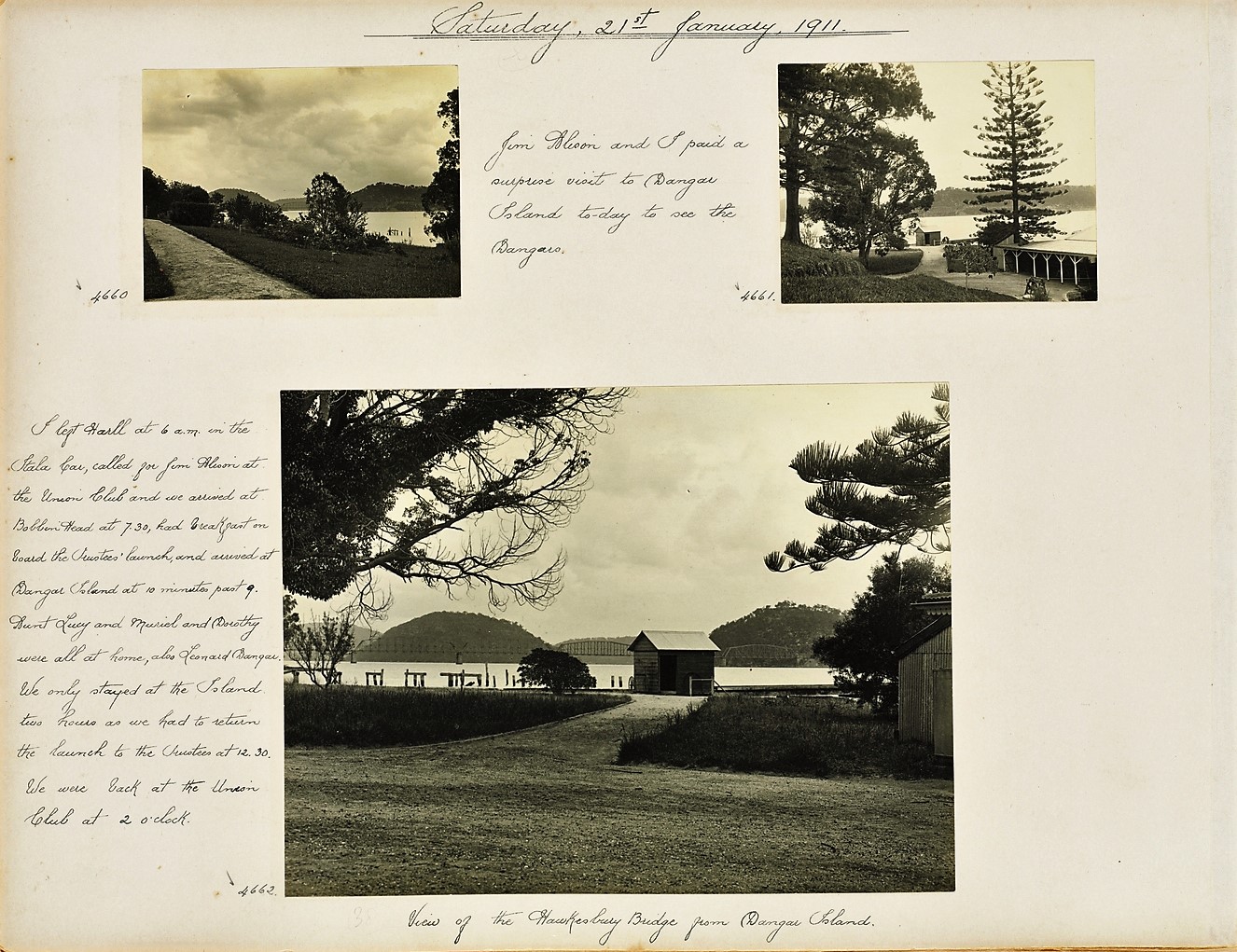
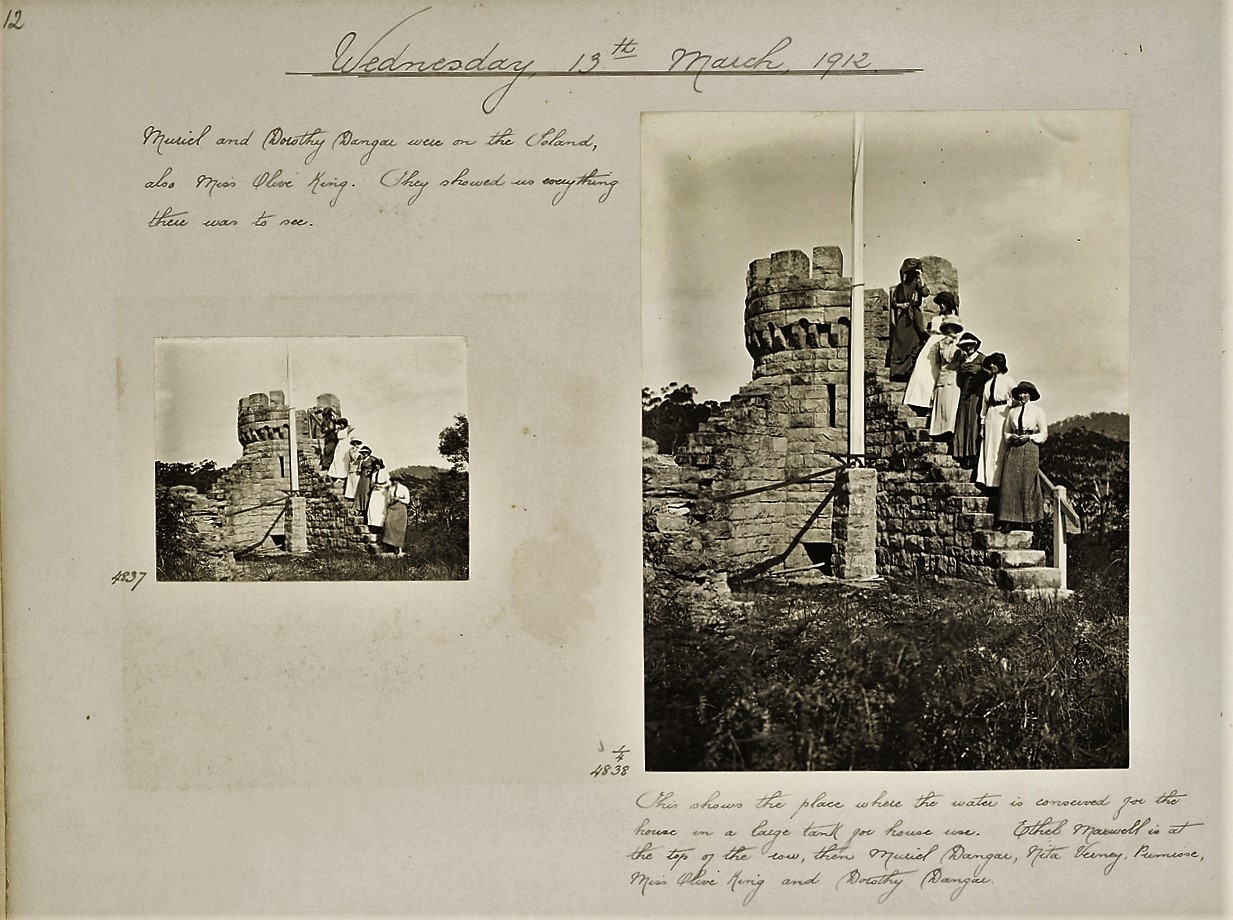
Dangar Island on the Hawkesbury - A W Allen family albums from 1911 and 1912, Images : a2877014h and a3288024h, courtesy State Library of NSW
MARRIAGES.
ALLEN—DANGAR.—November 9th, at All Saints' Church, Singleton, by the Rev. Forster Haire, Arthur Denis Wigram, son of Mr. and Mrs. Arthur Wigram Allen, of "Merloola," Edgecliff-road, Woollahra, to Mary Beatrice, only daughter of Mr. and Mrs. R. H. Dangar, of Neotsfield, Singleton. Family Notices (1922, November 15). Evening News (Sydney, NSW : 1869 - 1931), p. 10. Retrieved from http://nla.gov.au/nla.news-article118827946
WEDDINGS.
ALLEN-DANGAR.
The marriage was celebrated at All Saints' Church, Singleton, on Thursday last, of Mollie, daughter of Mr. and Mrs. R. H. Dangar, Neotsfield, Whittingham, to Arthur Denis Wigram, son of Mr. and Mrs. Arthur Allen, Mericola, Edgecliff-road, Woollahra. The Rev. W. Foster Haire officiated. The bride was given away by her father and wore a gown of silver brocade, with a train lined with blue. Her bouqeot was of lily of the valley and forget-me-nots. She also wore a diamond and sapphire brooch, the gift of her father and mother, a diamond ring, the gift of Mr. and Mrs. R. R. Dangar, and a diamond and platinum watch, the gift of Mr. A. W. Allen. Miss Joan Dowling, who was bridesmaid, wore a frock of primrose georgotte and a hat of yellow straw and silver lace. Master Billy Bourke and Mister Dick Austin acted as pages, wearing suits of yellow linen with white kilted frills. Mr. H. V. Dangar attended the bridegroom. After the ceremony the guests were entertained at luncheon at Neotsfield in a large marquee draped with yellow muslin. Mrs. Dangar wore a gown of lime-coloured crepe and a black hat. The honeymoon is being spent at Port Hacking. The bride travelled in a gown of royal blue crepe de chine and grey hat. WEDDINGS. (1922, November 15). The Sydney Morning Herald (NSW : 1842 - 1954), p. 9. Retrieved from http://nla.gov.au/nla.news-article16050932
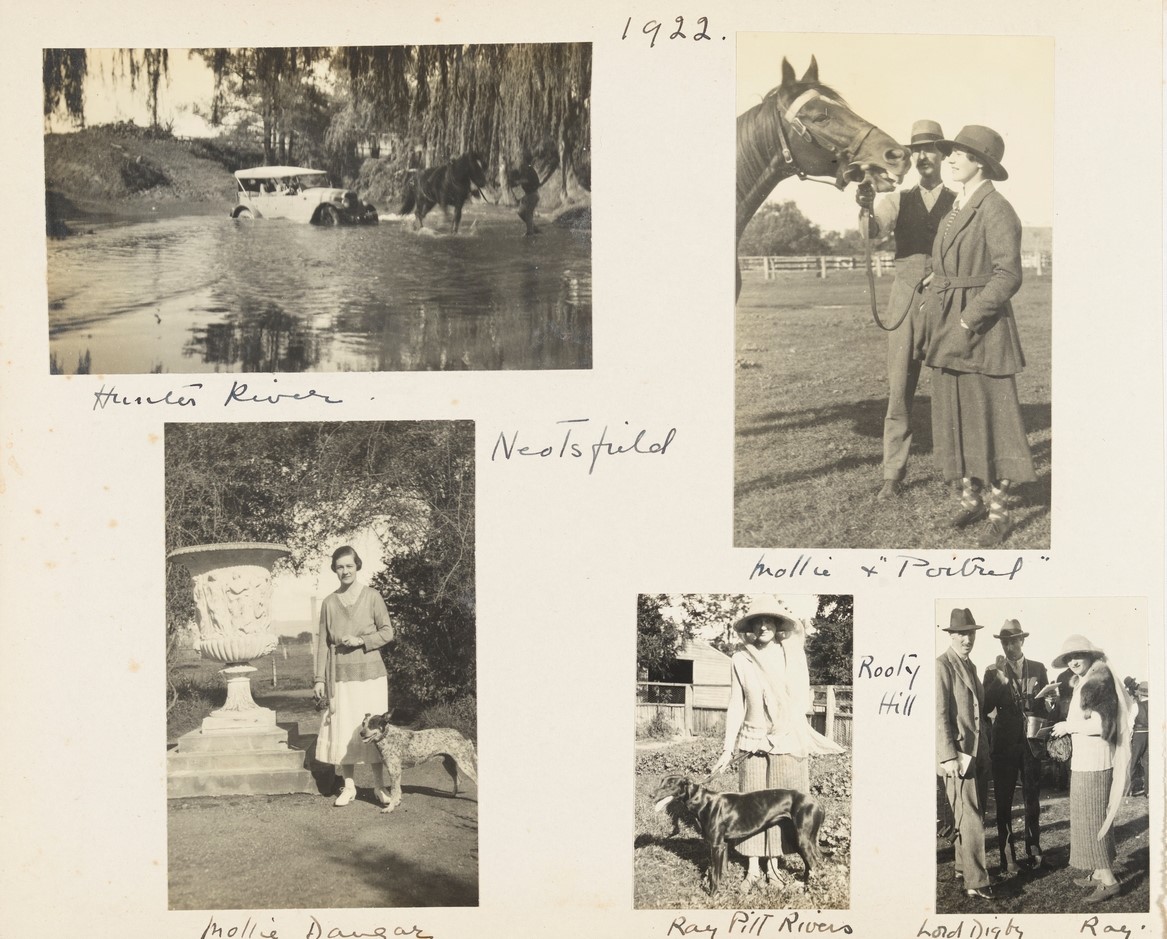
Mollie Dangar and Neotsfield from Album 02: Photographs of the Allen family, 1920 - 1925, - dated 1922 Image No.: a9700026h, courtesy Mitchell Library, State Library of New South Wales
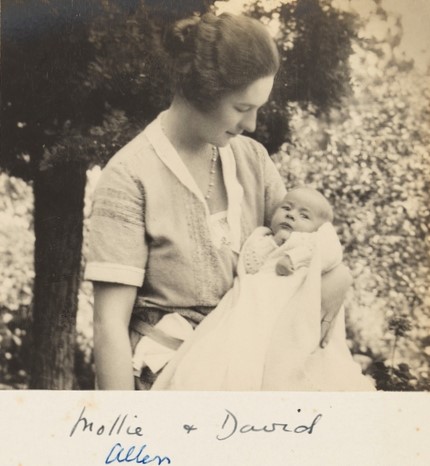
Mollie and David Allen from Album 02: Photographs of the Allen family, 1920 - 1925, - dated 1923 Image No.: a9700051h, courtesy Mitchell Library, State Library of New South Wales
BIRTHS. ALLEN.— 11th August, at Rosemont Avenue, Woollahra, to Mr. and Mrs. Denis Allen— a son. Family Notices (1923, August 14). The Daily Telegraph (Sydney, NSW : 1883 - 1930), p. 6. Retrieved from http://nla.gov.au/nla.news-article246058274
Mollie died on April 4th, 1934, leaving three sons.
ALLEN -April 4 at a private hospital Mary Beatrice Allen the wife of Arthur Denis Wigram Allen. Family Notices (1934, April 5). The Sydney Morning Herald (NSW : 1842 - 1954), p. 10. Retrieved from http://nla.gov.au/nla.news-article17068847
MRS. DENIS ALLEN
Death Announced WELL-KNOWN SOCIETY WOMAN
WIDESPREAD regret has been caused by the death last night of Mrs. Denis Allen, wife of Mr. Denis Allen, of Allen, Allen and Hemsley, solicitors, only son of Mr. Arthur Allen, of "Merioola," Edgecliff. The late Mrs. Allen was formerly Miss Molly Dangar, only daughter of Mr. and Mrs. R. H. Dangar, of "Turee," Cassilis, and had three young sons. Her only brother is Mr. Harry Dangar, the artist. Mrs. Allen, who had been in hospital for several weeks, did not rally after an operation performed yesterday. MRS. DENIS ALLEN (1934, April 4). The Sun (Sydney, NSW : 1910 - 1954), p. 22 (LAST RACE EDITION). Retrieved from http://nla.gov.au/nla.news-article230547889
MRS DENIS ALLEN
Mrs Denis Allen of St. Neots, New South Head-road died in St. Vincents private hospital yesterday morning after an illness of three weeks. She was a daughter of Mr. and Mrs. R. H. Dangar, of Turee, Coolah, and a sister of Mr. Harry Dangar, and is survived by her husband and three sons.
The funeral took place yesterday afternoon, when the remains were cremated at Rookwood. The service at the Crematorium was conducted by the Rev. Canon Langley, assisted by the Rev. Hubert Gordon.
Among those present were Mr R. H. Dangar, Mr and Mrs Herbert Allen, Mr and Mrs Dundas Allen, Messis. C. Voyce Allen, R. Voyce Allen and Arthur W. Allen, Mr. and Mrs. Dick Allen, Mr Noel Dangar, Mr. Harry Dangar, Mr and Mrs. Hubert Fairfax, Sir Robert Anderson, Drs Grant Lindeman, Lorimer Dodds and Philip Parkinson, Mr and Mrs J. W. Bavin, Messrs H. Minter Taylor, A. M. Helmsley, Norman Cowper, G. V. Davy and John H. Lyon (representing Messrs Allen, Allen and Hemsley and staff), Messrs W. A. Taylor, H. Tindale, C. H. Reading, P Rothe, J. Dickson, B. Burdekin, R. T. Coulson (secretary of Royal Sydney Golf Club), H. Horsley, A. Consett Stephen, Leslie Consett Stephen, Leon Gellert, Sidney Ure Smith, L Want, R. M. Bell, G. C. Remington, C. S. Ross, P. S. Remington, R. G. Carson, R. P. Osborne, W. H. Mackay jun, T Lamb, G. Sayers, Mr and Mrs Noel Heath, and Misses Margaret Allen, Joan Dowling, Fanny Gordon, Cherry Gordon, Barbara Knox, and Janet Knox. MRS. DENIS ALLEN. (1934, April 5). The Sydney Morning Herald (NSW : 1842 - 1954), p. 8. Retrieved from http://nla.gov.au/nla.news-article17069200
MRS DENIS ALLEN
An Appreciation
(By P.P.)
I ARRIVED In London towards the end of 1917, on a stretcher, with all my available worldly goods In a small cretonne 'dolly bag,' tucked under the pillow of the ambulance stretcher. With eyes bandaged and half blinded with gas, I dimly realised that the stretcher was being carried from an ambulance train along the platform, and there followed the now familiar rumble of the stretcher being slid Into the waiting ambulance waggon.
A soft voice came to me in my darkness, ' asking kind questions. Did I want any letters written? Could a cablegram be sent to my family? Would a telephone message to any friends in London be of any help? ' 'Did I want any money until arrangements could be made?
I answered as best I could, through a growing amazement, which finally became so great that I lifted up a corner of the bandages, to Identify this voice and this extraordinary kindness with some person.
A lovely girl sat on an Improvised seat in the swaying ambulance car, and I said to her: '.'Should you please tell me who you are, and why you are doing this?'
The same sweet voice said quite simply: 'My name Is Molly Dangar. We meet all the ambulance trains.'
To-day Molly Dangar, as Mrs. Denis Allen, is dead. She was one of a gallant band of women who, through all the years of the war, and carrying wounded Australian soldiers to London; one of a band which never tired, and who saw to it that no man arrived In London without the assurance that he was back home amongst his friends and his own folk.
The experience I have described above occurred to thousands and thousands of men, and this spirit of service remained with Mrs. Allen through her life, all too brief though It has been. She was one of those so rare people who believed that the only value of living was to leave the world a little better than it was when one came into it. MRS DENIS ALLEN (1934, April 12). Mudgee Guardian and North-Western Representative (NSW : 1890 - 1954), p. 9. Retrieved from http://nla.gov.au/nla.news-article161903704
Allen was chairman of New England Airways Ltd and from 1935 of its successor, Airlines of Australia Ltd. He served on a committee of veteran airmen appointed in 1940 to recruit 50,000 men for the Empire Air Training Scheme and was a founder of Air Force House in Sydney.
During World War II he drove his father's 1916 Detroit electric brougham which he was to present to the Museum of Applied Arts and Sciences in 1947. Allen did much to hold the law firm together while many of its partners were on active service. He won the confidence of clients by his common sense and meticulous attention to detail. Modest about his own ability as a lawyer among more gifted men, after the war he restructured the firm to divide the equity among all the partners. He retired late in 1963.
Denis Allen was chairman of Mount Kembla Collieries Ltd, and a director of Australian Mutual Fire Insurance Society Ltd and of Butler Air Transport Ltd; he strongly opposed B.A.T.'s takeover by Ansett Transport Industries Ltd.
Tall and rather loose-limbed, with the pale-blue eyes of his family, Denis was extremely conservative in his habits. He belonged to the Union, Royal Sydney Golf and Australian Jockey clubs.
On February 20th 1943 at St Mark's Church, Darling Point, he had married Philippa Nancy, daughter of Sir Colin Stephen. She shared Denis's love of horses and owned Advocate, winner of the 1952 Victoria Derby.
Survived by his second wife, and by the sons of his first marriage, Allen died on 4 June 1967 at his Double Bay home and was cremated. His youngest son Patrick, deputy fleet training manager with the British Overseas Airways Corporation, was to pilot the supersonic Concorde on her early development flights.
George Malcolm Willmore
George Malcolm Willmore (1895-1978), real-estate developer, was born on 24 September 1895 at Islington, London, son of George John Willmore, assurance agent, and his wife Daisy Annie Julia, née Holmes. G. J. Willmore was later a Salvation Army missionary. After migrating to Australia as an adolescent, young George became a salesman.
On 1 November 1914 he enlisted in the Australian Imperial Force and in April 1915 landed at Gallipoli with the 4th Battalion. Suffering from shock, he was evacuated in August to England where he performed staff duties and rose to warrant officer (1919). On 23 September 1916 he married Annie Jane Helena Hall at the register office, West Ham, London. He was discharged from the A.I.F. in Sydney on 23 May 1920.
Service number 1196
Rank Lance Corporal
Roll title 4 Infantry Battalion - 1 to 8 Reinforcements (December 1914 - August 1915)
Conflict/Operation First World War, 1914-1918
Date of Embarkation 22 December 1914
Place of embarkation Melbourne
Ship Embarked On HMAT Themistocles A32
Employed briefly by the Bureau of Meteorology at Narrabri, New South Wales, Willmore returned to Sydney where he worked in advertising and met a salesman, Reginald Randell. Becoming business partners, the pair first manufactured non-slip floor polish which they sold to the Myer retail business.
In 1925, having acquired an office in Bligh Street and a motorcycle with side-car, they established a real-estate agency, Willmore & Randell Ltd. They proclaimed the firm to be 'Sydney's largest and most progressive organisation specialising in the management and control of subdivisions', and claimed to have sold over £1 million worth of Sydney real estate in 1927-28.
Newspaper advertisements solicited business, offering to realise estates for landowners quickly. Willmore personally wrote the detailed marketing material which touted high capital growth at terms as low as a shilling a day, covenants to prevent 'the encroachment of undesirable buildings', and 'glorious breeze-cooled positions . . . of rare charm'.
Free train fares or inspections by motorcar offered further incentive to prospective clients. The business expanded until there were almost fifty offices in South Australia, Victoria, New South Wales and Queensland. The Willmore family lived at Vaucluse, in a home which boasted housemaids and gardeners, and a Buick motorcar in the garage.
The onset of the Depression in 1929 damaged business; within a year all offices had closed and Willmore & Randell was in liquidation. Willmore sold the Vaucluse property, and the family lived for a time in a house at Randwick; (Sir) Leslie Hooker personally collected the rent.
Prospects remained poor until 1935 when Willmore and others formed a new real-estate company, and the Willmore & Randell name once again appeared in Sydney and Melbourne. The Willmores moved to Rose Bay. Property markets were sluggish after World War II because of government controls over land sales, but activity picked up about 1950. The firm began to specialise in subdividing large tracts of land outside cities, developing new suburbs with hundreds or even thousands of building blocks, and providing infrastructure and community facilities, ranging from halls and kindergartens to American-influenced resort-style features.
During the mid-1950s the partnership was divided in all but name; Randell took over the Victorian and South Australian operations and Willmore controlled the business in New South Wales and Queensland. Willmore aimed to be the 'Woolworths of real estate'; eventually the company became one of the largest broad-acre subdivision firms in Australia.
DOYLE CASE - From Page 1 |
KNEW "MOST" MINISTERS
"Used Christian Names"

Left: GEORGE WILLMORE
George Malcolm Willmore, estate agent, said in the Bankruptcy Court yesterday that Reginald Aubrey Doyle addressed most State Ministers by their Christian names.
Willmore was being examined before the Registrar in Bankruptcy, Mr. L. C. Bohringevon matters relating to Doyle's bankruptcy.
Mr. J. K. Manning . (for the Official Receiver, Mr. S. T. Jaques): When you agreed to cash cheques for " him,- you were influenced by your knowledge of his varied interest in transactions? -Yes. I did not think Parliament House would be a sanctuary for swindlers.
Doyle appeared to have varied and substantial interests?-Yes. He was acquainted with most of the Ministers of the Crown and addressed them by their Christian names. I have seen him talking with them.
The first cheque you cashed was met and the other two met an unfortunate fate?-Yes.
When they were dishonoured, did you get in touch with Doyle? -Yes, I rang the two numbers 1 have mentioned. I have also contacted him, on occasions, at the Moccador Cafe.
"STRONG TERMS"
What did you say to Doyle?What I said to him could not be repeated here in Court. He pleaded that he was in a difficult situation. I threatened him with immediate action. My complaint was in very strong terms.
Mr. Bohringer: Unparliamentary language.
Willmore: Yes. By this time, I discovered that other things were amiss.
Mr. Manning: What did Doyle say?
Willmore: I cannot recall exactly. His explanations were always plausible He said there was some Ministerial hold up in the payments of the cheques. One of the two cheques shows evidence of having been dis-honoured twice?-Doyle was very smart He called me on the phone and again offered some plausible explanation.
"MOST SECRET"
Willmore said that Doyle gave him a cheque for £6,250 When this cheque was met by the bank he did not see Doyle again He did not know that, on January 30, Doyle had paid in sufficient to meet the cheque Doyle was most secret in these matters.
Willmore told Mr Manning (hit he had made the money available to Doyle on "other than a business basis " He did not charge him any interest, he said ' I had previous transactions with Doyle which induced me to lend him such a large sum of money," said Willmore
"Doyle had contacted me previously about valuation of some Transport Department and Housing Commission land
' On one occasion, we had a law suit with the Housing Commission and, because of Doyle's great influence in Macquarie Street, I suggested to him that he might be able to do something about it He got a letter from the Minister for Housing Mr Evatt.
Mr J W Shand, QC, for Willmore It was a letter purporting to be signed by Mr Evatt
Mr Manning' Did you find out later that it was not Mr Evatt's signature?
Willmore Yes. DOYLE CASE [?] From Page 1 (1953, March 5). The Sydney Morning Herald (NSW : 1842 - 1954), p. 4. Retrieved August 19, 2019, from http://nla.gov.au/nla.news-article18360134
HE PAID EXTRA MONEY
Frank David Kemp, en-graver, of Edgar Kemp Pty. Ltd.,, said that on January ' 12, a man asked for a seal
with the words, "Clutha Development, Ltd.," on it.
He could not recognise the man in court.
He said he sold the man a seal press for £5/10/. The man paid over, some extra money, saying that he wanted it in a hurry.
"He told me he had misplaced a seal and wanted it replaced as soon as possible," Kemp said.
"He mentioned that he was on his way up to New Guinea that night."
THE WORD: "It's A Racehorse"
Kemp said the man did not say what the word Clutha meant. Mr. P. Roach (for Doyle) said that "Clutha" was the name of a racehorse.
Ronald Edgar Kemp, en-graver, was shown two certifi-cates on which police alleged the seal had been impressed.
He said the word "Clutha" was indistinct and appeared to have been obliterated.
George Malcolm Willmore, co-partner of Willmore and Randell, real estate agents, of Castlereagh Street, city, said that he cashed two cheques for Doyle, one for £3.000 and the other for £3,250. Both cheques were dishonoured.
About January-27, he received a cheque for £6,250 from Doyle in payment for the dishonoured! cheques. '
Willmore said he was pressing Doyle for payment when he received the cheque.
THE SIGNATURES: "Hawkins, Wilson"
Willmore alleged that Doyle had shown him two Common-wealth Bank cheques. One cheque was for £27,000. The other for £28,000.
"The two signatures I remember very clearly," Willmore said. "One * was 'Hawkins' and the other 'Roland Wilson.' Under-neath was 'Consolidated Revenue No. 2 Account.'
"He told me the money was due to him but for some reason payment was held up.
"That was the reason I cashed two cheques for £3,000 and £3,250."
Mr. Ross: You had no doubt that Doyle was an honest and reputable businessman at the time you cashed those cheques?
Willmore: No.
Mr. Ross: You appreciate, looking back, that there were factors which could have put you on your guard?-Yes.
Questioned by Mr. Roach, Willmore said that when he had cashed the cheques for Doyle, he had not seen the cheques for £27,000 and £28,000, but had been told 'about them. HE PAID EXTRA MONEY (1953, March 24). The Sydney Morning Herald (NSW : 1842 - 1954), p. 4. Retrieved from http://nla.gov.au/nla.news-article18363283
Dispute on Doyle's, £6250 to agent
The Bankruptcy Court today was asked to order that city estate agent George Malcolm Willmore pay back £6250 to the estate oi Reginald Aubrey Doyle.
Official Receiver S. T. Jaques claimed that Doyle paid Willmore a debt of £6250 when he was insolvent last January, and that Willmore had been given an advantage over other creditors. Federal Judge in Bankruptcy Mr. Justice Clyne said he would hear Mr. Jaques' application on September 14. Doyle, investor and punter, was made bankrupt on February 13, and on April 14 was sentenced to 10 years' jail for forgery and fraud. He is serving this sentence. In an affidavit, Mr. Jaques said Doyle was made bankrupt because "on January 30 he departed from his house with intent to defeat or delay his creditors". On January 15, ' Mr. Jaques continued. Willmore, of Beach Rd., Darling Point, gave Doyle £3250 in cash in exchange for a cheque, and on January 16 gave him another £3000, also in exchange for a cheque Both cheques were dishonored, and when Willmore pressed for payment, Doyle, on January 27, gave another cheque for £6250. This cheque was dishonored on January 29 but on January 30 Doyle deposited £6250, and the cheque was met later that day. Mr. Jaques said that between' January 15 and January 30 Doyle was unable to pay his debts, and Willmore was aware of this. Doyle's estate is in the hands of the Official Receiver, and Mr. Jaques asked that Willmore be ordered to pay costs of the application. Dispute on Doyle's, £6250 to agent (1953, July 14). The Sun (Sydney, NSW : 1910 - 1954), p. 2 (LATE FINAL EXTRA). Retrieved from http://nla.gov.au/nla.news-article230355462
Premier's Department, Sydney, 9th April, 1958.
HIS Excellency the Governor has approved of the recognition of Mr. George Malcolm Willmore as Honorary Vice-Consul of Brazil at Sydney.
R. J. HEFFRON, Acting Premier. Government Gazette Notices (1958, April 18). Government Gazette of the State of New South Wales (Sydney, NSW : 1901 - 2001), p. 1098. Retrieved from http://nla.gov.au/nla.news-article220273296
In 1965 Willmore and his wife obtained a Mexican divorce, and on 11 March 1969 at Las Vegas, Nevada, United States of America, he married Gertrude Elizabeth Gardiner, a 37-year-old widow. In 1974 the company's major financier, Cambridge Credit Corporation Ltd, was placed in receivership. During the ensuing crisis, most of the firm's numerous subsidiaries received wind-up notices but the parent company survived. Next year Willmore moved to Queensland and managed the Brisbane office. In April 1978 his wife announced that she proposed to begin divorce proceedings.
Described by his son Ian as fiery-tempered, and a 'very complex man, full of ideas, impatient, commanding, and not at all pleased if anyone else seemed to be outclassing him even in a small way', Willmore was dynamic, autocratic and somewhat intimidating. Real-estate colleagues recalled an extravagant host, a natural risk-taker with breadth of vision, imagination, and a daring and ruthless approach to business. He had 'a remarkable ability to make money, and an equal ability to spend it'.
A small dapper man, he was fond of fine suits, Rolls Royces and the bright lights of Sydney, New York and Hollywood. He 'tipped his manicurist and hairdresser with blocks of land, [and] spent lavishly in Sydney's night spots and on five-star travel overseas'. Particularly generous to his grandchildren, he was a dominant presence in family life.
He died on 26 July 1978 at Buderim, Queensland, and was cremated with Christian Science forms. His wife, and the three daughters and three sons of his first marriage, survived him.
Death registration: George Malcolm Willmore
Death date: 26/07/1978
Mother's name: Daisy Annie Julia Holmes
Father/parent's name: George John Willmore
Judith A. Nissen, 'Willmore, George Malcolm (1895–1978)', Australian Dictionary of Biography, National Centre of Biography, Australian National University, http://adb.anu.edu.au/biography/willmore-george-malcolm-12040/text21599, published first in hardcopy 2002
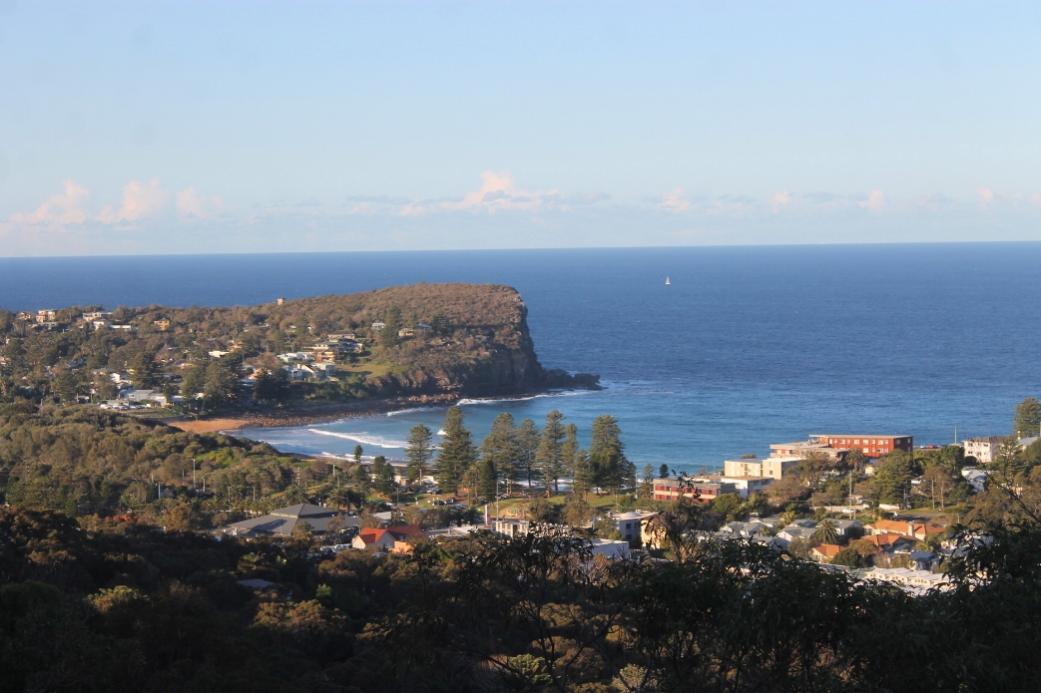
References And Extras
- TROVE - National Library of Australia
- Shelagh Champion OAM and George Champion OAM, in their Profiles of the Pioneers in Manly, Warringah and Pittwater (1996 - revised 2013)
- BILGOLA - THE STORY OF A POLITICIAN, A PILOT AND AN EPICURE by Tony Dawson and Anne Spencer
- Pittwater Reserves: The Green Ways Bilgola Beach - The Cabbage Tree Gardens And Camping Grounds
- Tallamalla-Bilgola Cottage-Bilgola House
- Dame Nellie Melba Lunches at Bilgola Cottage
- Walter Oswald Watt - 11 February, 1878 – 21 May, 1921 - Early Australian Airmen Mont (for Avalon Tattoo May 2012 Precursors)
- Roads In Pittwater: The Barrenjoey Road
- Pittwater Ocean Beach Rock Pools - A History
- John W. Stone - Profile
- David Lyall - Profile
- Bruce Robertson OAM - Profile
- Avalon Bilgola Amateur Swimming Club
Also Available:
- Pittwater Roads II: Where the Streets Have Your name - Scotland Island
- Pittwater Roads II: Where the Streets Have Your Name - Newport Beach
- Pittwater Roads II: Where the Streets Have Your Name - Clareville
- Pittwater Roads II: Where the Streets Have Your Name - Avalon Beach
- Pittwater Roads II: Where the Streets Have Your Name - Warriewood
- Pittwater Roads II: Where the Streets Have Your Name - Elanora Heights, Green Hills and Ingleside
- Pittwater Roads II: Where the Streets Have Your Name - Mona Vale
- Pittwater Roads II: Where the Streets Have Your Name - Bungan
- Roads In Pittwater: The Bay View Road
- Roads In Pittwater - The Barrenjoey Road
- Motor Car Tours To And In Pittwater Show Us The Way This Place Once Was
- Roads To Pittwater: The Wakehurst Parkway Along Old Oxford Falls Track
- Roads To Pittwater: The Pittwater Road
- Roads To Pittwater: The Sandspit Punt and Spit Bridge
- Roads To Pittwater: The Mona Vale Road
- My Holiday by Charles de Boos – 1861
St. John's College.—
On Wednesday evening, 14th instant, a number of the subscribers to the above-named institution met, according to advertised notice, in Mr. Monahan's inn, for the purpose of nominating by election Fellows for the management of the College. D. Byrnes, Esq., was voted to the chair, and the election proceeded— Messrs. Naughten and Starr, scrutineers, postponing the declaration of the result until the following day, at the suggestion of the Rev. Mr. M'Carthy, and with general approval. We have had handed in, since then, the following list of the gentlemen nominated :—
Clerical : The Very Rev. Dean Lynch, Ven. Archdeacon M'Encroe, Rev. J. J. Therry, Rev. Dean O'Connell, Right Rev. Abbot Gregory, and Revs. P. Hallinan, D.D., M. Brenan, and J. Keating. —
Lay : Hon. J. H. Plunkett, Messrs. J. V. Gorman, Justice Therry, D. H. Deniehy, M.L.A., P. Faucett, M.L.A., M. Fitzpatrick, Under Sec. for Lands and Works, J. M. Dillon, Crown Solicitor, Jas. Martin, Attorney Gen., J. O'Neill Brenan, Sheriff, W. B. Dalley, M.L.A., Thos. Callaghan, Chairman Q.S., E. Butler, Com. Court of Claims, Hon. Jt Macnamara, M.L.C., Eyre Ellis, J. B. Donovan, B.A., Syd. University, James Hart, solicitor, L. Corcoran, F. Macnab, merchant, J. Moore, bookseller, T. Makinson, M.A., and R. O'Connor, Clerk L. A. It seems that the election which took place some time ago was invalid, owing to the limit of time having expired.—
The following additional subscriptions were acknowledged:—Messrs. James Starr, £5; Martin Kelly, £5; R. Smith, £1. GOVERNMENT LAND SALE. (1858, April 17). The Armidale Express and New England General Advertiser (NSW : 1856 - 1861; 1863 - 1889; 1891 - 1954), p. 2. Retrieved from http://nla.gov.au/nla.news-article188980872
DEATH OF THE VERY REV. J. J. THERRY.
Our readers will learn with surprise and regret the death of the Very Rev. John Joseph Therry, Roman Catholic Missionary Apostolic of New South Wales, which sad event occurred suddenly on Wednesday morning at four o'clock, at the deceased gentleman's residence at Balmain. The rev. gentleman attended the levee at Government House on the day previous, and then appeared in his usuaI good health, nor up to the time of his retiring to rest on Tuesday evening was there the slightest symptom of illness.
Shortly before twelve o'clock, however, he was seized with spasms, which became so violent that it was deemed advisable to send for a medical man as speedily as possible, and Dr. Qilhoolty, accompanied by Archdeacon M'Enctoe, at once proceeded to Balmain, but before their arrival the venerable priest had expired. It is thought he must have died from disease of the heart.
The Very Rev, Joseph Therry was seventy-three years of age, and arrived in this colony on the 23rd of April, 1820, and has consequently been a resident here forty-four years. He with the Rev. Mr. Conolly, was appointed to the Roman Catholic mission in Australia after the return to Europe of the Rev. Mr. Flinn. Mr. Conolly proceeded to Tasmania, and Mr. Therry remained in Sydney, and continued in the unassisted discharge of missionary duties until 1829 on a salary of £100 per annum.
The deceased gentleman was a native of Cork, in which city he was born in the year 1791. Under the care of watchful and religious parents he passed the first years of his childhood. At the proper age he was sent to Carlow College, where he completed bis course of ecclesiastical studies, under the professorship of Dr. Doyle, and the Rev. Mr. Slattery, the former afterwards becoming Bishop of Kildare, and the latter Archbishop of Casbel, by both of whom he was much esteemed. At Callow College Father Therry first laboured in behalf of the Foreign Mission in connection with the Roman Catholic Church, and organised a society of young ecclesiastics who bound themselves to offer their services for some foreign mission if it pleased God to spare their lives. In April, 1815, Mr. Therry was ordained a priest by the Most Rev. Dr. Troy, of the see of Dublin, and his first mission was to his native city, Cork. It was here that the reverend, and at that time youthful priest, first formed the resolution to visit Australia, and devote his services to the Raman Catholic convicts of New South Wales. In the year 1818, Mr. Therry was introduced to the Rev. Mr. Flinn, who bad previously been on a mission to New South Wales, but was compelled to leave the country through what has been considered a very arbitrary act of the then colonial Government. Mr. Flinn gave sufficient reasons to induce Father Therry to succeed him as Roman Catholic pastor in Australia, and he set sail from Cork in January 1820.
He reached Sydney after a passage of nearly five months, —a not very long voyage in those days. Divine service according to the rites of the Roman Catholic Church was first performed by him in a temporary and bumble wooden chapel in Pitt-street, and subsequently in the old Court-house, and finally in St, Joseph's Chapel, at present a parish of the priory of St. Mark's Cathedral. On the 29th of October, 1829, Father Therry laid the foundation stone of that edifice, which was regarded as too extensive in its proportions, but which he has lived to see extended still further. He made great exertions in New South Wales in behalf of the Catholic orphan children of that portion of the vicariate. A misunderstanding arose between Mr. Therry and the local Government on the establishment of Protestant parochial schools, end some expressions were made use of by him in reference to the subject which became the basis of a charge made against him, and which resulted in his being deprived of his official appointment as Colonial Chaplain. In 1837, however, the salary was restored to him by order of the Imperial Government. In 1838, Father Therry was sent to Van Diemen's Land by the most Rev. Dr. Polding, then Bishop of Hiero-Cessrea. His labours in that colony were earnest and incessant. He had also similar difficulties with the Roman Catholic orphan question in that island. He wrote letters and petitioned the Governor and Legislative Council, but in vain, and finally memorialised her Majesty on the subject, and his memorial was not only immediately attended to, but the justice of his claim was also fully recognised. For some years past the Very Rev. Father Therry has officiated at St. Augustine's Church, Balmain, where he was universally respected by all classes of that district, and the people of this colony. In disposition he was extremely amiable, and his Christian virtues had won the warm friendship of many who differed from him in religion. He has been properly termed 'The Patriarch of the Roman Catholic Church of Australia.' The remains of the deceased were placed in St. Mary's Cathedral on Friday, and in the evening a solemn dirge was performed by an efficient choir in the presence of a large congregation. The funeral will take place this (Saturday) morning. DEATH OF THE VERY REV. J. J. THERRY. (1864, May 28). Sydney Mail (NSW : 1860 - 1871), p. 4. Retrieved from http://nla.gov.au/nla.news-article166654664
OBITUARY
Mr. H. M. Makinson.
Considerable regret was expressed in legal circles when it became known that Mr. Henry Massey Makinson had died on Thursday last. Mr. Makinson was born at Mulgoa, near Penrith, 73 years ago, and was educated at Lyndhurst College. For a short time Mr. Makinson acted as private secretary to Archbishop Polding, and subsequently to Archbishop Vaughan.
At the age of 21 years he was articled to the late Mr. E. G. Ellis, and on being admitted to the practice of his profession as a solicitor in 1865, entered into partnership with him. After about twenty years' practice in this partnership, Mr. Plunkett was taken into the firm, which was carried on as Ellis, Makinson, and Plunkett till the death of Mr. Ellis in 1893, when the firm carried on under the title of Makinson and Plunkett.
Mr. Makinson was the son of an Anglican clergyman, the late Rev. Thomas Cooper Makinson, and entered the Church as the result of conviction, which was brought home to him by the investigation of the Oxford Movement. He married Miss Frances Fox, of Adelaide, who survives him, as do his three sons—Messrs. Arthur, Robert, and Gilbert Makinson. The late Mr. Makinson was of a retiring disposition, and took but little part in public affairs; but his private charities were numerous, and he was one of the founders of the Incorporated Law Institute of New South Wales, and held office as vice-president of that body for many years.
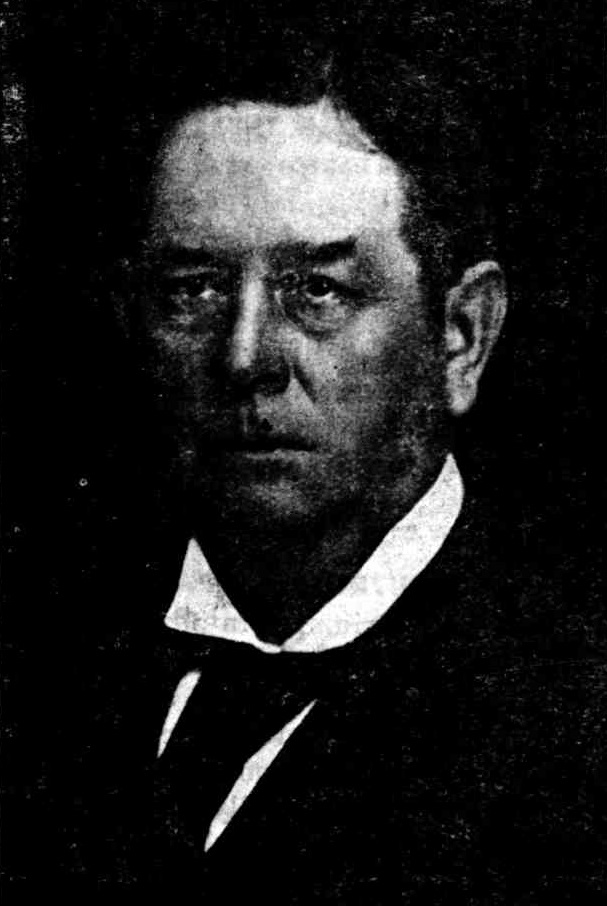
Mr. H. M. Makinson.
His practice as a solicitor was a large one, and he was universally respected not only by members of both branches of the legal profession, but also by all with whom he came in contact in business and social matters.
In the earlier years of his life he was well known as an amateur oarsman, and was an ardent devotee to cycling until failing sight forced him to desist from that exercise. For the greater part of his life Mr. Makinson had lived at Gladesville, on the Parramatta River, where he was well known to the Marist Fathers at Villa Maria. For many years he had been in sole charge of their affairs, and they speak in high terms of his reliability and consideration.
A few weeks ago the late Mr, Makinson became an inmate of the Lewisham Private Hospital, where he was operated upon for cataract. His recovery was good, and it was hoped that he would soon be able to leave the hospital perfectly cured, when he collapsed suddenly, and died at 12.30 a.m. on, Thursday last of heart failure.
A Solemn Requiem Mass was celebrated at Villa Maria on Friday morning by Rev. F. Laurent, S.M. Rev. Fathers Carcenac, S.M., and Helier, S.M., were deacon and sub-deacon; and Revs. J. L. Rigard, S.M., and Courtais, S.M., were chanters of the Office. Among the clergy present were Rev. Fathers Chevreuil, S.M. (Procurator of Mis sions), J. O'Gorman (Adm., of Mary's Cathedral), E. Pigot, S.J., Keogh, S.J., Walsh, and P. Murphy (St. Mary's Cathedral). The members of the Second Novitiate at Villa Maria joined with the priests in the singing of the Mass.
At the conclusion of the obsequies the funeral proceed- ed to St, Charles' Cemetery, Ryde, where Rev. Father Laurent, S.M., assisted by Rev. J. L. Rigard, S.M., officiated at the graveside. The chief mourners were:—
Mr. Gilbert Makinson (son), Mr. L. Makinson (brother), Mr. T. Makinson (nephew). Others present included: Mr. W. P. Plunkett (deceased's partner), Mr. Justice Heydon, Hon. L. F. Heydon, Mr. A. W. D'Apice (representing Mr. Justice A. H. Simpson), Mr. W. Collingridge, Mr. J. J. Watkins, Dr. H. Saunderson Lloyd, Dr. S. Hughes, Messrs. E. A. Smith (president), Fred Cur-tiss (late president), and E. Newton Daly (secretary), representing the Incorporated Law Institute; Mr. Hanbury Davies, Mr. A. J. Mackenzie and Mr. R. Copeland Lethbridge (representing the Perpetual Trustee Company), Messrs. E. W. Betts, W. A. Windeyer, V. Le G. Brereton, W. S. Dunn, Charles Smith, P. Lenehan, D. Shelley, C. Shelley, W. Sewell, Harvey Browne, J. T. M'Carthy, O. Fox, Spillane, G. B. Phillips, E. A. Pearson, G. R. Gee, L. Addison, Dr. Langton.
OBITUARY (1913, May 29). Freeman's Journal (Sydney, NSW : 1850 - 1932), p. 15. Retrieved from http://nla.gov.au/nla.news-article108164742
DEATH OF MR. W. P. PLUNKETT.
The death occurred at his residence, Wollerang, Darling Point, yesterday, of Mr. William Patrick Plunkett, late of Messrs. Makinson and Plunkett, solicitors. Mr. Plunkett, who has been ill for some time, was the eldest son of the late Mr. William Edmond Plunkett, at one time Under-Secretary for Justice. The funeral will leave the deceased's late residence at 2.30 p.m. to-day for Waverley Cemetery. DEATH OF MR. W. P. PLUNKETT. (1918, September 10). The Sydney Morning Herald (NSW : 1842 - 1954), p. 8. Retrieved from http://nla.gov.au/nla.news-article15801926
Robert Richardson (1850–1901) was an Australian journalist, poet and writer for children, possibly the first Australian-born children's writer. He was born in New South Wales, eldest son of John Richardson, a New South Wales politician and store-keeper, and Janet, sister of Peter Nicol Russell. Richardson completed a B.A. at the University of Sydney and later became well known for his contributions to a number of Sydney and Australian periodicals and newspapers. He was also a member of the firm of Richardson and Company, an Armidale-based millers and general store-keepers, started by his father. He left Australia for a life in Edinburgh in 1886 before returning to Sydney around 1894. He died in Armidale on 4 October 1901.
Children's fiction
Our Junior Mathematical Master; and, A Perilous Errand (1876)
Black Harry, or, Lost in the Bush (1877)
The Young Cragsman and Other Stories (1878)
A Little Australian Girl, or, The Babes in the Bush; and, Jim : A Little Nigger (1881)
Little Flotsam : A Story for Boys and Girls, and Other Tales (1881)
The Best of Chums and Other Stories (1881)
A Lighthouse Keeper for a Night and Other Stories (1881)
The Hut in the Bush : A Tale of Australian Adventure, and Other Stories (1883)
Adventurous Boat Voyages (1884)
Poetry
Willow and Wattle : Poems (1893)
Annette : Poems (used 1896)
There was also a 'Cabbagetree' Beach at Manly:
TO BE LET for a term, seventy-four Acres of Land at Manly Cove, Cabbage-tree Beach, well adapted for a vineyard, orchard, or market gardener, five acres of which are cleared and fenced, with a two-roomed house erected thereon. Immediate possession can be given. For further particulars enquire of J. Sims, Currency Lass, corner of Pitt and Hunter streets.
Caution.-Any person found trespassing or cutting timber after this notice will be prosecuted as the law directs.
JOHN SIMS.'
August 14. Advertising (1847, August 17). The Sydney Morning Herald (NSW : 1842 - 1954), p. 1. Retrieved from http://nla.gov.au/nla.news-article12890083
Death of Colonel Watt — Empire Sunday in Sydney
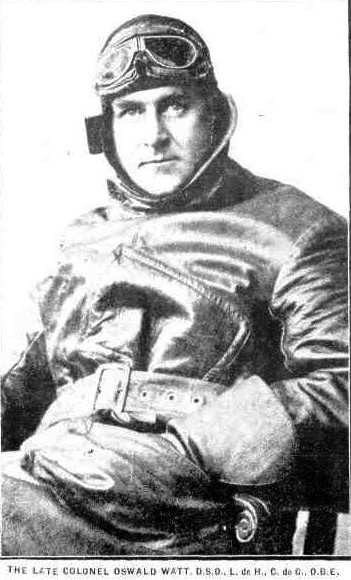 Right: The LATE COLONEL OSWALD WATT, D.S.O., L. de H., C. de G., O.B.E.
Right: The LATE COLONEL OSWALD WATT, D.S.O., L. de H., C. de G., O.B.E.
COLONEL . OSWALD WALTER WATT, who served throughout the war, and had a most distinguished aerial record, was drowned at Bilgola Beach, near Newport, on Saturday morning. The news ''created general regret, for he was exceedingly popular, especially among the men who had served with him in France and Egypt. Colonel Watt was staying at his week-end residence at Bilgola, the only other occupant of the house being the caretaker. He was accustomed to have a swim every morning, and on this occasion he went off to the beach as usual with his towel on his arm and his dressing-gown covering his bathing
suit. It is believed that he was engaged in collecting wood brought in by the tide, and that, slipping on the rocks, he was stunned, and fell into the water. The caretaker, noticing the body floating, hurried to Newport for assistance, and some fishermen, who went out in a boat, recovered the body. Colonel Watt was a director of the firm of Messrs. Gilchrist, Watt, and Sanderson, Ltd., which was founded in 1851 by his father, the late Mr. John Brown Watt, M.L.C. He was born at Bournemouth, England, in 1878, and after a successful scholastic career at Cambridge University came to Sydney in 1900. Two years later he married Miss Muriel Williams, daughter of Mr. Justice Williams, of Victoria. He left a son, aged 15 years, who is now at Wellington College, England. His magnificent work in the war is well known. First, he served as an aviator with the French army, and was awarded both the Legion of Honour and the Croix de Guerre. Subsequently he joined the Australian Flying Service in Egypt as major, and soon afterwards took the No. 2 Squadron to England, flying his squadron of24 machines across the Channel to France. The record of that squadron was a magnificent one. In 1917 Colonel Watt was appointed to command the new training wing at Tetbury, Gloucestershire. He returned to Australia in June, 1919, in charge of the troopship Kaiser-i-Hind. The funeral took place on Monday with military honours.
COLONEL WATT'S WEEK-END RESIDENCE AT BILGOLA BEACH. (below)
The Colonel is believed to have slipped, on the rocks a the right, and to have been stunned by the fall. His body was found some little distance out. Death of Colonel Watt —Empire Sunday in Sydney. (1921, May 25). Sydney Mail (NSW : 1912 - 1938), p. 15. Retrieved from http://nla.gov.au/nla.news-article159038798
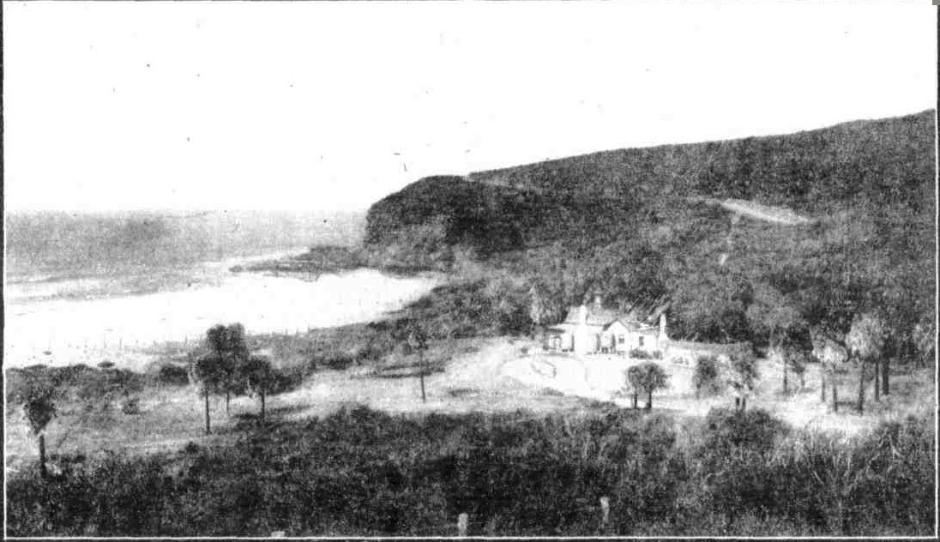
COLONEL WATT'S WEEK-END RESIDENCE AT BILGOLA BEACH. The Colonel is believed to have slipped, on the rocks a the right, and to have been stunned by the fall. His body was found some little distance out. Death of Colonel Watt —Empire Sunday in Sydney. (1921, May 25). Sydney Mail (NSW : 1912 - 1938), p. 15. Retrieved from http://nla.gov.au/nla.news-article159038798
Motor car's end
OVER CLIFFS IN FLAMES
A motor car which was stated to have caught fire and then plunged over the cliffs at Bilgola Head, near Newport, three weeks ago, formed the subject of an inquiry by the city Coroner yesterday. Mrs. E. M. Ormond, owner of the car. was represented in court by Mr. IT. M'Laughlln, while Mr. W. J. Bradley (instructed by Sly and Russell) was present in the interests of the Farmers and Settlers' Insurance Co. Evidence by the owner was to the effect that she valued the 'car at £1500. It was insured for £900. Leslie James Ormond, the husband of the owner, was driving the car at the time of the occurrence. He said that he got out to investigate a faint smell of smoke, but could find nothing. He was just going to get Into the car when it ran forward over the cliffs, at the same time bursting into flames. Witness said that he and a passenger in the car threw sand on the car, but the fire persisted for half an hour. The inquiry was adjourned. MOTOR CAR'S END (1922, July 14). The Daily Telegraph (Sydney, NSW : 1883 - 1930), p. 6. Retrieved from http://nla.gov.au/nla.news-article245732093
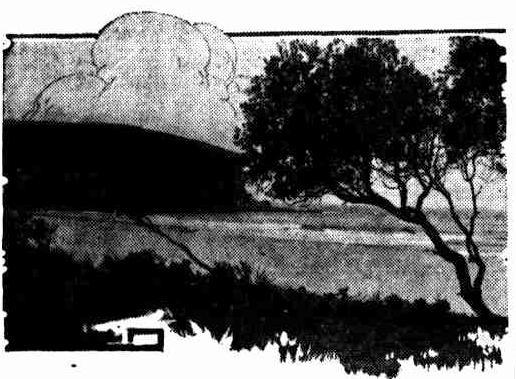
MR. and Mrs. Cecil Rhodes-Smith have closed their lovely home at Bilgola and have left for Melbourne for three weeks. They'll be at Menzies' Hotel. The Jottings OF A LADY ABOUT TOWN (1944, October 22). Truth (Sydney, NSW : 1894 - 1954), p. 19. Retrieved from http://nla.gov.au/nla.news-article168759933
Mrs. H. Maclurcan, mother of Mrs. Postle, formerly of Wagga, and for so many years well known at the Wentworth Hotel, met with a motor car accident at Manly two days ago, when motoring to her home at Bilgola, Newport. Mrs. Maclurcan was taken to a private hospital at Manly suffering from slight concussion. She was allowed no visitors, but was slightly better yesterday. PERSONAL (1932, December 2). Daily Advertiser (Wagga Wagga, NSW : 1911 - 1954), p. 2. Retrieved from http://nla.gov.au/nla.news-article143061657
POSTLE.-September 25, at Prince Henry Hospital. Frederick Charles Postle, of Bilgola Beach, dearly beloved husband of Evelyn Clara. Family Notices (1946, September 26). The Sydney Morning Herald (NSW : 1842 - 1954), p. 18. Retrieved from http://nla.gov.au/nla.news-article17996289

.jpg?timestamp=1565822220231)
Smiles That Are Irresistible Holidays In The Sunshine (1933, December 30). The Sun (Sydney, NSW : 1910 - 1954), p. 8 (CRICKET STUMPS). Retrieved from http://nla.gov.au/nla.news-article230203052
Hewitt Reserve - Bilgola Beach
- this is the green space that grows alongside Barrenjoey road as it weaves around 'The Bends'.
John Thomas Hewitt (1867-1952), was a constable at Mona Vale in 1913, a J.P., and a land holder after Bassett-Darley Estate lands became available. He was a keen advocate for all community events and improving the area (part of the Tram to Pittwater League from at least 1899) and was especially keen on looking after the environment as subdivisions and suburban lots increased.
He passed away in 1952, aged 85 years the death was registered at Parramatta and under his 'father's name' in NSW BDM's is 'Mona Vale'.
HEWITT John Thomas -September 11 1952 at his residence Newport Road, Mona Vale dearly loved husband of Anne and loved father of Harold and John Private cremation. Family Notices (1952, September 12). The Sydney Morning Herald (NSW : 1842 - 1954), p. 14. Retrieved from http://nla.gov.au/nla.news-article18281370
No. 19,316. APPLICANT:—John Thomas Hewitt, Mona Vale. LAND -County Cumberland, parish Narrabeen, shire Warringah, 2 acres 27 1/2 perches, 9 acres 8 perches, on Newport-road and in Mona, Allen, and Darley streets,—lota 36, 37, and 38, section 1; and lot 3, lots 8 to 15 inclusive, lots 37 to 48 inclusive, and part lot 2, section 2, Mona Vale Estate, and parts 700 acres (portion 17, parish), granted to Robert Campbell; adjoining properties of — Ackland, A. Kinghorn. — Bridge, G. Oliver, S. Howlett, Roman Catholic Church, J. L. Briquet, and S. E. Austin. NOTICE UNDER REAL PROPERTY ACT. (1915, April 28). Government Gazette of the State of New South Wales (Sydney, NSW : 1901 - 2001), p. 2385. Retrieved from http://nla.gov.au/nla.news-article226911713
No. 28,171. John Thomas Hewitt, 3 a. 1 r. 15 p., Darby-st. and Newport-rd., Mona Vale. NOTICE UNDER REAL PROPERTY ACT. (1927, March 25). Government Gazette of the State of New South Wales (Sydney, NSW : 1901 - 2001), p. 1562. Retrieved from http://nla.gov.au/nla.news-article220252828
AQUATICS.
At the sixth annual meeting of the Pittwater Picnic Regatta, held at Bayview, there was a large attendance, and Mr. J. Williams presided. The receipts at the last regatta' amounted to £187 92 1d. ... the forthcoming regatta, which has been fixed for January 6, 1912.
The following office-bearers were elected:— Patrons. His Excellency the State Governor, Messers. N. H. Murray, and W. M. Marks; president, Mr. John Williams hon. treasurer Mr G. R. Jackson; hon. secretary. Mr. John Roche; assistant hon. secretary. Mrs. E. G. Greig: committee; Mrs. A. Lewis. Miss G. Lloyd. Messrs, F.J. Young. C. J. Saunders. J. T. Hewitt, W. de Wilde, and J. W. Oliver. The annual plain and fancy dress ball In aid of the regatta funds will he held early next month. AQUATICS. (1911, September 7). Evening News (Sydney, NSW : 1869 - 1931), p. 2. Retrieved from http://nla.gov.au/nla.news-article120029687
Elected to Warringah Shire Council - became A Riding councillor in 1920
SPOILING DRIVE'S BEAUTY
"In this case the Main Roads Board is taking possession of a dedicated recreation reserve," said Cr. Hewitt at Warringah Shire Council last night, on the quarry site at Bilgola.
"One of the most beautiful drives in the world is being disfigured, " he declared. SPOILING DRIVE'S BEAUTY (1935, January 9). The Daily Telegraph (Sydney, NSW : 1931 - 1954), p. 7. Retrieved from http://nla.gov.au/nla.news-article246496768
GETTING A SITE FOR THE SEASIDE HOMES
On the assumption that the better the day the better the deed, Dame Alice Chisholnv accompanied by representatives of the central executive of the Country Women's Association, and by a fine representative from her own branch and the sub-branches of Manly and Mosman, went down to Bilgoola to inspect the site for the suggested seaside home.
There they were met by Mr. Wearne, Mr. and Mrs. Weaver, Dr. Richard Arthur and other representative people, and the idea was thoroughly gone into. The general impression seems to have been that the site, while in itself most lovely, was too difficult of access to serve the purpose, and so after a picnic lunch and a gipsy tea the company returned to town, having heard Mr. Weaver upon the subject, and having accepted an invitation from that gentleman to meet him at the Lands Office on Wednesday afternoon, at 2 p.m., when he would place before them all partculars of land avalable at Narrabeen, Collaroy, Manly and Maroubra. The ladies and gentlemen present express themselves as most grateful for the helpfulness, courtesy and keen personal interest evinced by the Minister. WOMEN IN THE COUNTRY AND THE CITY (1923, September 28). The Sydney Stock and Station Journal (NSW : 1896 - 1924), p. 1 (STOCK & STATION JOURNAL Magazine Section). Retrieved from http://nla.gov.au/nla.news-article128178558
Lunching at the Australia yesterday, Mrs. Malcolm Mackellar looked exceedingly smart in an all-white outfit. Having had a restful holiday at Bilgoola, the Mackellars are returning shortly to their home, "Kurrenbedi," Gunnedah. THE LIFE OF SYDNEY (1933, February 8). The Daily Telegraph (Sydney, NSW : 1931 - 1954), p. 6. Retrieved from http://nla.gov.au/nla.news-article247100786
MALCOLM MACKELLAR, was the son of Sir Charles Kinnaird Mackellar, K.C.M.G., M.L.C. (President of the Bank of New South Wales) and Lady Marion Mackellar (née Buckland) was born in Sydney on 29th September, 1889.
His sister was Isobel Marion Dorothea, of Lovett Bay. He was educated at the Church of England Grammar School, North Sydney, and enlisted on 3rd May, 1917, at the War Office, London, as lieutenant in the 1st Life Guards. He served in France as a machine-gunner until admitted to hospital nine days before the Armistice.
No. 12,917. Municipal District of Manly, 2 acres 2 roods 25 perches, on Pittwater Road, and in Collingwood-street, near Curl Curl Lagoon,—comprises part of Henry Miles' lots Nos. 1 and 2 of partition deed, and is part of 100 acres granted to Charles Andrews and Christopher Skally, adjoining the properties of Mrs. Miles, His Eminence Cardinal Moran and others, Mrs. Barnes, and Dr. W. W. J. O'Reilly. Applicant Frederick Kingston Olliver. NOTICE UNDER REAL PROPERTY ACT. (1904, August 5). Government Gazette of the State of New South Wales (Sydney, NSW : 1901 - 2001), p. 6041. Retrieved from http://nla.gov.au/nla.news-article226482921
FISHING CRUISE WITH THE NIMRODS.
'Very cold, but gloriously clear and bracing, was the weather on last Saturday morning as towards seven o'clock I approached the Circular Quay, basket in hand, and overcoat closely buttoned. Punctual as I was, there were several equally so, and in a few minutes sundry others on the same errand as myself are seen approaching from different quarters in boats, cabs, traps, and per ' shanks express,' Meantime the steward is busy stowing away creature comforts while the Nimrods assemble on the Quay exchanging , mutual congratulations, or anticipations on the day's luck.
The president, though he has had to come from Cook's River, is anxious to give some of the lazier Sydney members ' a few minutes' grace, but when fifteen of them have expired it is ' all aboard,' and the Cobra backs out from her berth. By this time I have seen all my fellow voyagers, know most of them, make the acquaintance of others, and mentally express my satisfaction with the quality of the company. { Not a cad or fast one amongst them, but a lot of thorough ' sportsmen (in the home country sense), who enjoy their line { and their gun from pure love of the field and the flood, caring not whether their tastes are or may become fashionable. Off Kirribili a skiff is seen approaching, the steamer stops, and we welcome a North Shore peer and two friends, one of them having even a higher standing in the world. : 'Turna-head' and on one of the finest of mornings we speed cheerily down the loveliest of harbours, leaving behind numerous whitewings bound seaward like ourselves.
As we round Bradleys, victims of mal de mer cast eager glances at the reef and regain their spirits, when they fail to discover any break on. One more stoppage, and then with a fishing boat and two professionals in tow, we pass through 1 the Beads into a glass-like ocean showing the slightest undulations, and all ideas of sea sickness vanish. The savoury smell of chop and steak had for some time wafted its way . from the galley, and when the breakfast bell rang there was I not a single absentee from the morning repast. I am almost afraid to say how much tea, coffee,. chops, steaks, &c., disappeared that morning, but of this I am certain, that for years i 2 have not done more justice to an excellent breakfast than on the 5th instant. I need hardly say that tobacco pouches were next in requisition, and we did blow a cloud as settled in our places for the day, each busied himself arranging his tackle ready for toe words 'Stop her.'
Passing Long Reef there is a consultation which ends in a decision to keep on towards Broken Bay. Narrabine and Terrimetta are passed, but as we approach Bulgola we slacken speed, then stop, and out go a dozen lines, while as many more are being got ready. ' Now for the first fish,' exclaim half a dozen voices, and then a dead silence as each nervously feels his line for the slightest nibble. ' Jim has got him,' catches my ear, and then a flop, flop, causes me to turn round and see . a nice medium-sized schnapper' sunning himself on deck. Captain Tug takes up second place, and Over the bow comes a fine gurnet, and then another is added by the captain's mate. So far the bow party have 'had it all their own way, but the after division now take up the running, and Captain Clarence lifts over the sponson what Jim calls a boomer. Another wait, and Lands scores another for aft. I anathematise my luck, change my twelve cord line for one of eight, and hurrah as the silvery glint of my prize is seen for tho last time under the briny. No more bites for some time. President, secretary, and doctor consult, and then we hear orders of 'in-lines, gentlemen.' The two boat parties are called alongside, dropped astern, and we are away again. 'When next we stop S. is to 'lay us on' ' his favourite ground.
We are past the Hole-in-the-Wall ere we slacken speed, and wide off the land send our lines over. The doctor is now the lucky man, and hand over hand a 12-lb. traglin comes to the gunwale, and then splash. ' He is off' ejaculates S., 'and so he is, but not down, 'he air bladder has come up through Mr. Traglin's mouth, and vainly trying to get his head under water comes back towards the steamer to be caught with a boat hook. While this is going on, Ben has landed a pair of beauties, and I one. Three and a schnapper tumble in aft., 'and then another lull decides the president to try a different ground.
The party in the larger fishing boat are hailed and informed of our intention, and away we go in search of J. and the boy in blue who disappeared in the shadow, of the cliff half an hour previously. At last we make them out close inshore, aud ?when within talking distance are asked what luck. 'Oh, plenty of schnappers' is the reply, accepted cum gram -salts, as it looks strange to Bee them up kellick and pull alongside. A score pair of eyes for a moment feasting on about two dozen splendid fish lying in the bottom of J.'s from whence, while they are being transferred, all *ke statement that they could have loaded her, had the heavy fish not carried away all their lines.
A stout twelve-cord', baited with mackerel, is speedily spinning through my fingers, and anxiously await a touch from a big fellow who will show some sport. This I have seen enough for a pair of rather soft hands, from which the schnppper speedily strips the enn; still I hold on, giving him a little play now and again, believing I had hold of a shark. I said as much to the boy in blue, who watched the line for a moment, and then exclaimed, 'My word, the right kind of a shark ; let me have him and I will land him for you.' This he did. Dana over hand, and deposited on deck the largest fish yet triumph was of brief duration, for the Ninixoas aft, who were enabled to throw closer ' into the rocks, have got amongst 'the school' and are now tumbling: them in with will. Ben lifts a monster, pounds heavier than mine, and' he in turn ' is thrown into the shade by Lands, who carried off the palm. I afterwards increase my basket with a full-fleshed twelve pounder, and on my next cast have a hard pull, which I fondly hope is from another schnapper. The brute tugs Viciously at first, then resists with a dead, heavy strain, that warms my fingers without the aid of a fire ; but the gear is good, and at last I see a brown-looking brute coming to..... announce that I have caught a Port Jackson shark and offer no remonstrance to a proposal to cut his tail off and throw him overboard.
A- moment later and this shark -ship is wriggling towards the bottom, minus 'his caudal appendage. Our aggregate take amounted to about four dozen schnapper, seven large traglin, a jewfish, five red and black rock cod, four gurnet, and about a dozen sundries, ere the fish ceased to bite.
The Cobra is again underway, heading for Sydney and we make no objection to the steward's announcement that dinner is ready. Aye, and a capital dinner too, with a nicely-browned sucking pig for centre dish, hot potatoes, and Bass's best. 1 have known a hungry man consider a worse feed very acceptable. At any rate, there were a number of appetites missing when dinner was finished, and then Mr. President made a capital speech in proposing success to the Nimrod Club. As a native of the land of heath and flood, he had missed its moors and its salmon, the invigorating exercise and the immunity from the worry of business they afforded. He had thought of what might be accomplished by an association such as they had that day inaugurated, and hoped that ere long Nimrodian tastes would take a more extended form. He is loudly cheered as he concludes with a complimentary allusion to the efforts of the hon. secretary and Mr. D. for their exertions in forming the club. The healths of the president and secretary are drunk and responded to, and as we pass Fort Denison we see the first indications of night in the warning light being hoisted on its tower. At 6 o'clock sharp we are at the wharf, exchanging parting courtesies, and by unanimous consent pronounce it as having been a splendid day.
My fish are too heavy to carry ; I invest in a cab, and as I roll homewards take a retrospective glance at how I liked the opening cruise. The conclusion I arrived at was this: The mere trip was worth half a dozen doctor's prescriptions, the sport fair, commissariat arrangements admirable, society good', and the president just the man for his position. You ask what about cost? Well, you shall be let into the secret. The subscription is 21s. entrance and 20s. per quarter subscription, for which a trip once a month will be given, the club providing steamer, boat, net, professional fishermen, and food. Don't join if you don't like it. If you do, don't bring in a member who is likely to prove rowdy or disagreeable. There is a bye-law providing for such cases in a very summary manner. ' When next the Nimrods make a trip, May I be there to see.' SCHNAPPER. FISHING CRUISE WITH THE NIMRODS. (1873, July 12). The Sydney Mail and New South Wales Advertiser (NSW : 1871 - 1912), p. 47. Retrieved from http://nla.gov.au/nla.news-article162655454
Avalon - Vacant Possession
"WARAWARA," OLD BARRENJOEY ROAD
Near Avalon Golf Course, hdy. to Beach, Shops and Schl.
ATTRACT. MODERN BUNGALOW, built of brick, tile roof, cont. LOUNGE-RM., DINING-RM., 3 BEDRMS., Kit. Recess, mod. tiled Bathrm., toilet, laundry, etc. Electric H.W.S. W.B. Garage to lane. Sale includes Venetian blinds, fly screens, etc. LAND: 66ft X 180ft. TORRENS
Solicitor: C. R. BIDDULPH
In Conj.: STAPLETON & CO.. Avalon. Advertising (1953, March 21). The Sydney Morning Herald (NSW : 1842 - 1954), p. 28. Retrieved from http://nla.gov.au/nla.news-article18362868
Avalon Beach "Scouts are to have a Scout Hall built in Barrenjoey Rd., Avalon Beach, at a cost of £5,000.
Mr. S. Fischer, of The Boulevarde, Newport Beach, is to erect new bk. bank premises for the Bank of N.S.W. in Pittwater Rd., Mona Vale, at a cost of £8.000. OPPORTUNITIES FOR BUSINESS (1953, November 18). Construction (Sydney, NSW : 1938 - 1954), p. 9. Retrieved from http://nla.gov.au/nla.news-article222899341


1968 - Bilgola Bends - photo by Gary Clist
Craig F-; That’s when we all thought they were trying to straighten the bends Massive protests
Dave T- ; They found the green tree frogs or something when they tried to straighten the bends and that was that. They took a few bends out but not the big ones in the gully.
Nick M- ; Just off centre to the left in this pic there were several rocks which were exposed at the side of the road. One had "JUST FREEFORM ADVERTISING" boldly painted on it. I have always thought this was a reference to Freeform Surfing.
